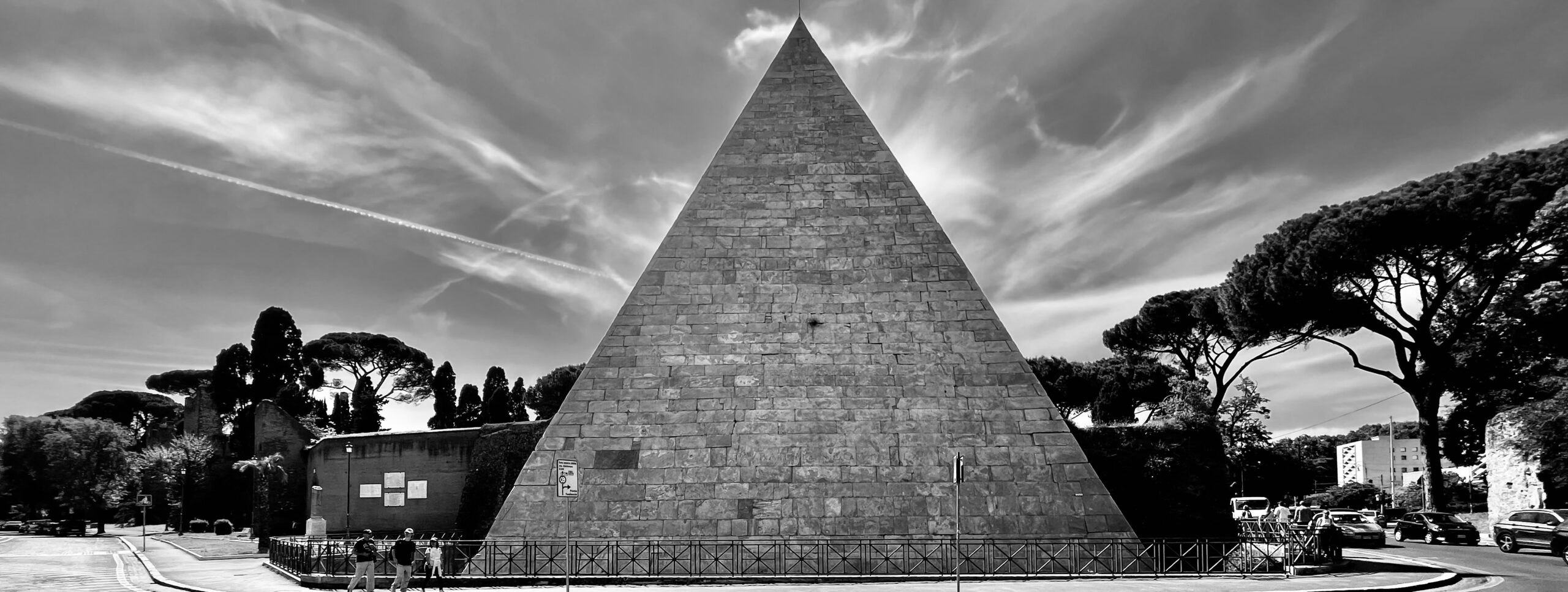24-29 May 2024
We left the lush garden of Gabriella and DInesh late morning for a leisurely drive to Rome. Gabriella suggested a scenic route avoiding the autostrada that Bonnie directed Robert to take. (He follows her lead, sometimes.) Several times during the drive, both Waze and navigation on Google maps suggested some strange, unnecessary loops. We had read that the unusual solar flares this week might affect navigation, and that seems to be what happened.
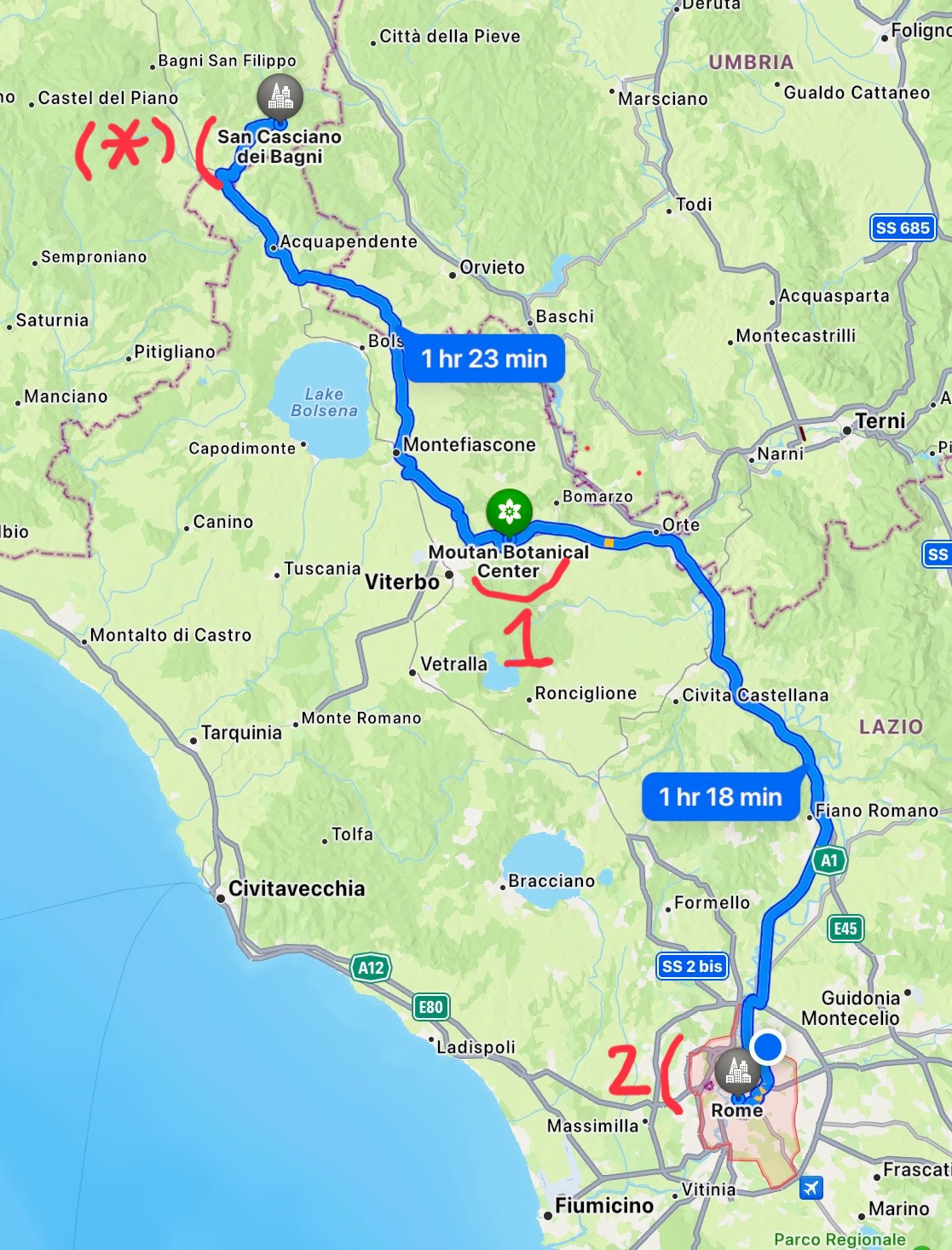
We stopped on the way at the Centro Botanico Moutan, suggested by cousin Luciana. It is the largest collection of tree and herbaceous peonies in the world. Peonies are Bonnie’s favorite. Carlo Confidati, an italian businessman, began collecting in China in the 1990s and opened the garden to the public in 2003. The grounds are immense. Unfortunately, we arrived at the end of the blooming period so we saw only a few blossoms. But we enjoyed the stroll in the parklike setting and lunch in the cafe. Photographs on line of the fields in peak season are stunning.
We arrived at Luciana’s apartment in the Montesacro neighborhood of Rome and unloaded the car for the last time, including one large tote bag of groceries and household supplies left over from our stay in Siena. Turns out the tote bag was perfect for Luciana and her grandson Liam’s upcoming stay at a beach north of Rome. We returned the leased car the next day near the airport. On this trip we drove only 3,616 kilometers (2,247 miles) and used 260 liters (57 gallons) of diesel.
From the airport we took the train to the Termini train station in Rome, ate lunch at the stylish and bustling Mercato Centrale there, and then walked in central Rome, including a stop at Angela Caputi for earrings.
We also inspected the drainage in the piazza at the foot of the Spanish Steps. We were prompted by our friend and landscape architect Mark Eischeid, who reviewed drainage at famous piazzas in Italy a month ago. (He visited many gardens too during his stay.) MARK: The piazza’s water simply flows into the Bernini fountain. The basin has an overflow drain on one side. Very discreet.
Third time is the charm. As we tried to step into a crowded subway car at the Spanish Steps station, Robert noticed two pickpockets behind him who seemed headed for Bonnie. He pulled Bonnie back away from the entrance to the car and bumped into the young women behind him, giving them the opportunity to take his iPhone from his front pocket. He realized his phone was missing only after getting into another subway car and continuing for a few stops. We were stunned. Back at Luciana’s, he wiped the phone remotely and then headed to Porta di Roma, a giant shopping center nearby, to buy a replacement ($$$).
The next day Luciana, Marta, and Robert decided drive to the intersection near the Termini where the phone was shown to be located. Nothing found. As of 06 June, the phone is in Algeria. Another experience that makes us wiser. On the next trip Robert plans to use a lanyard to secure the phone in crowded city centers.
Centro Botanico Moutan
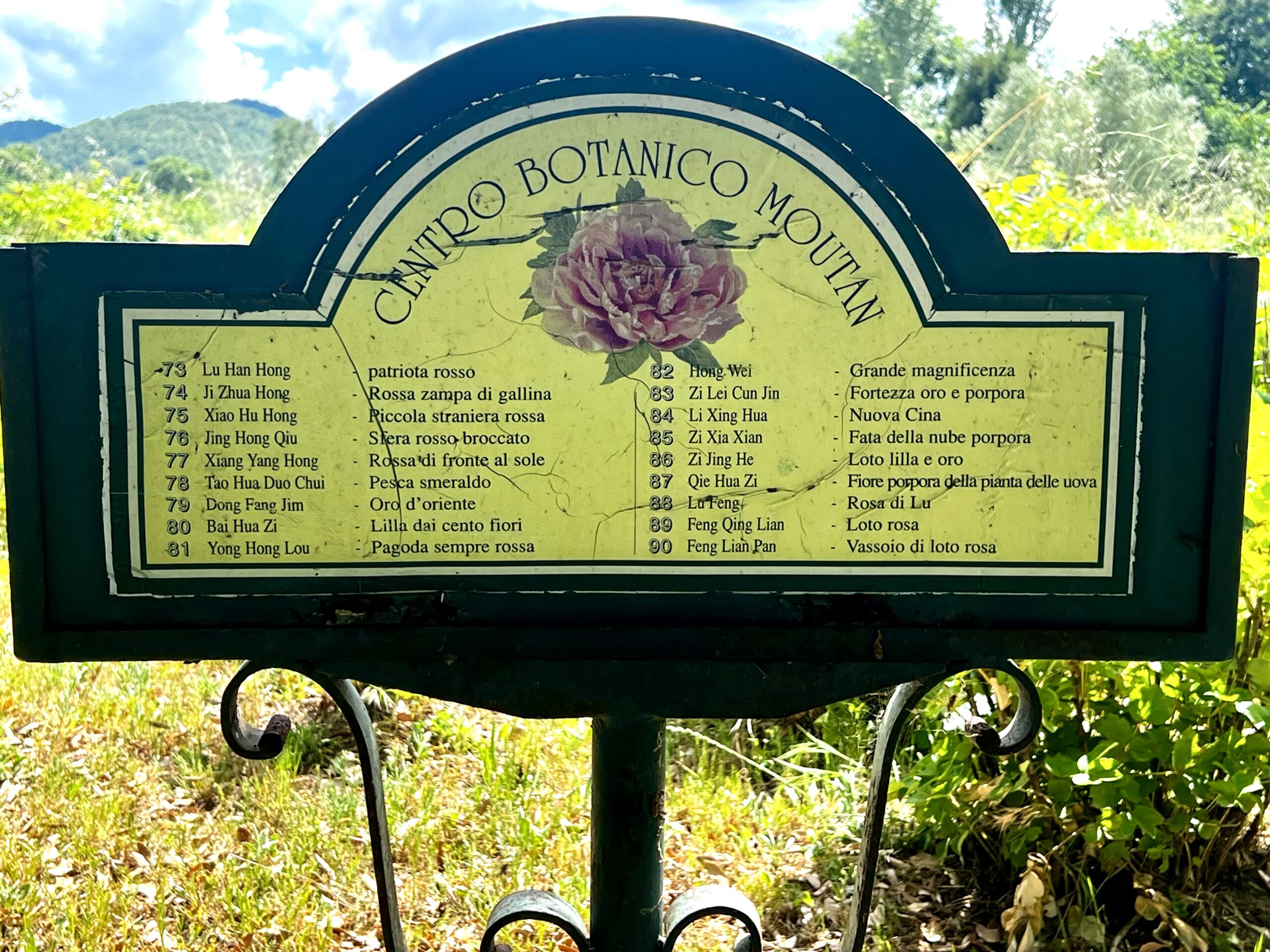
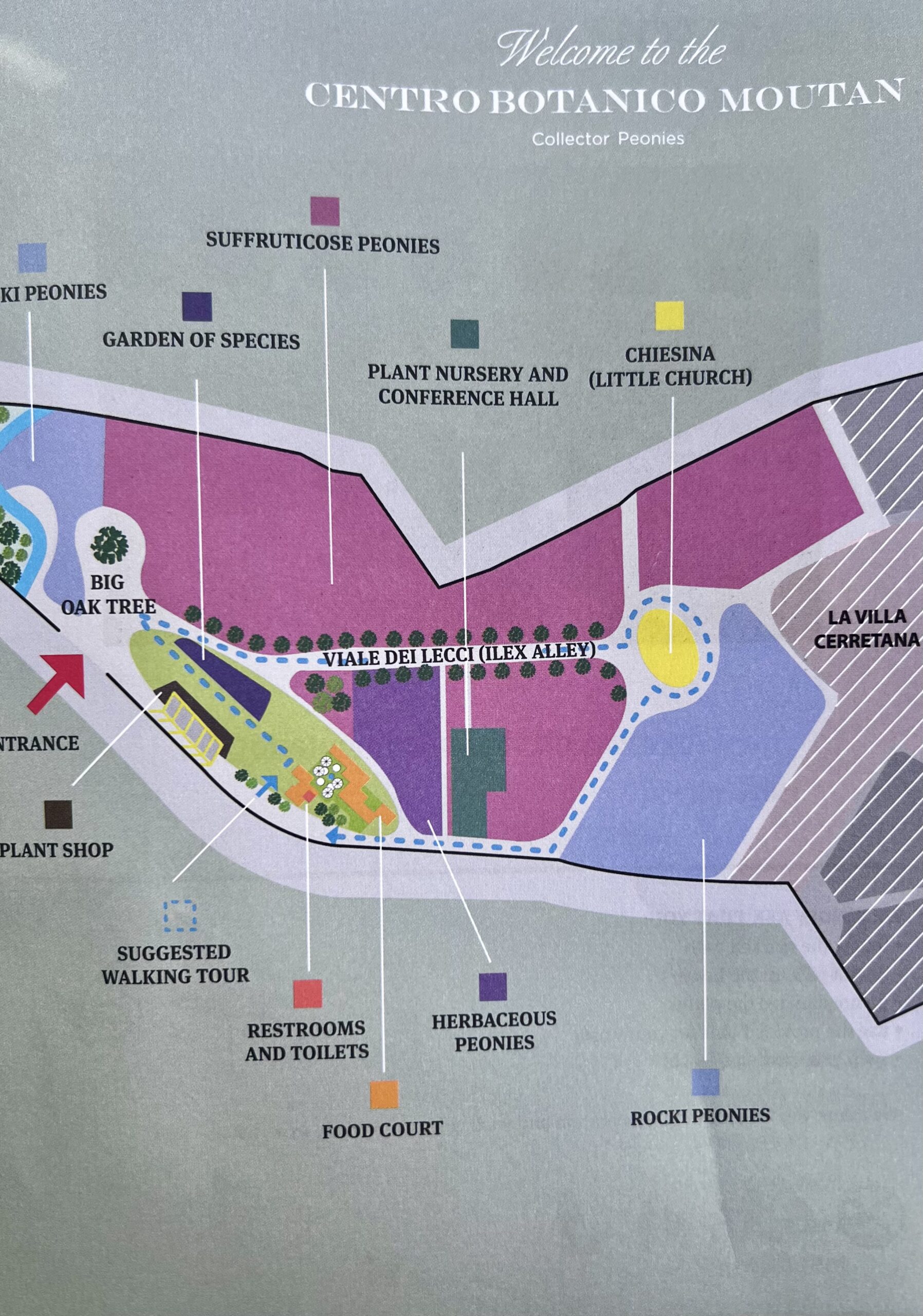
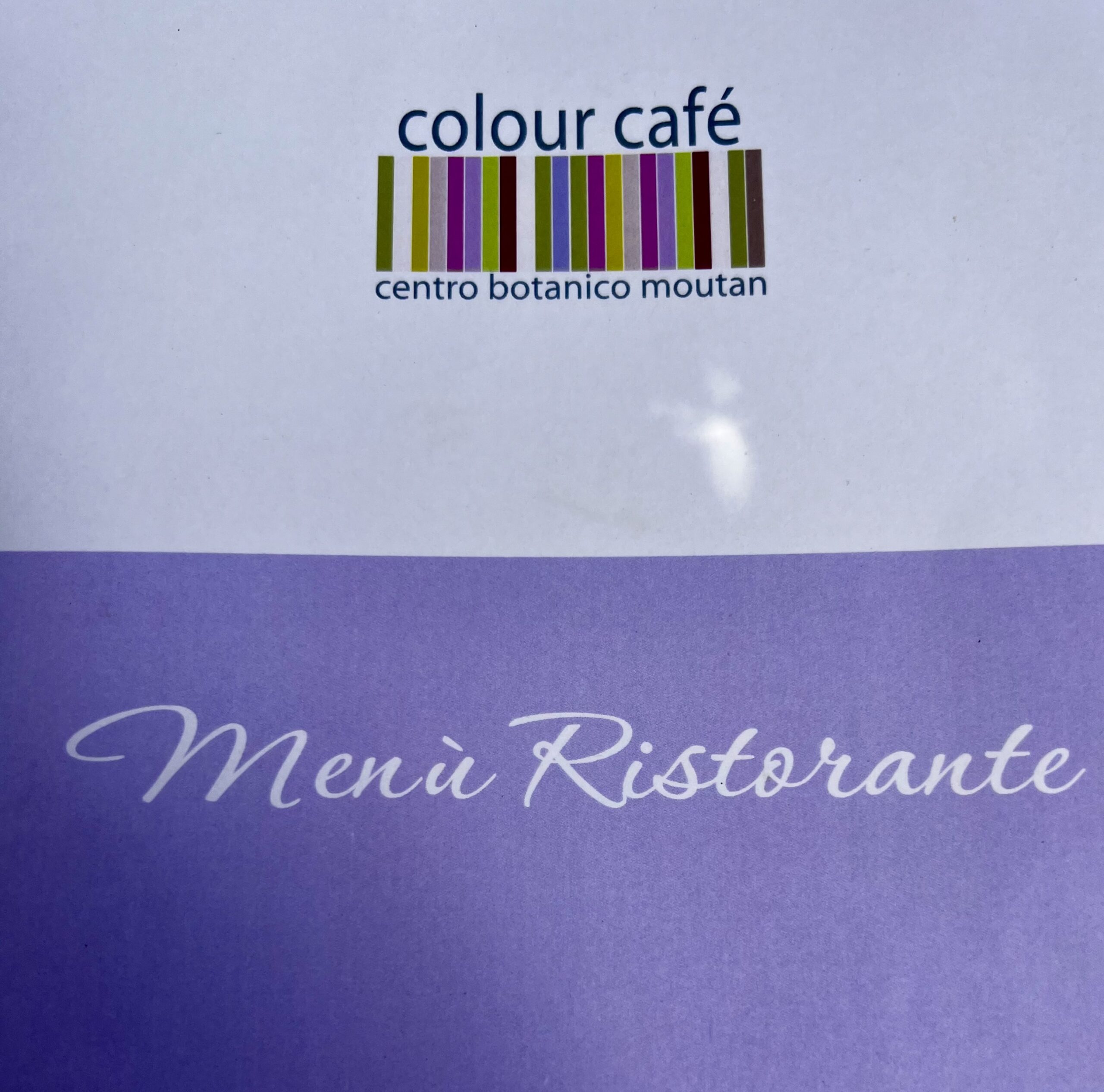
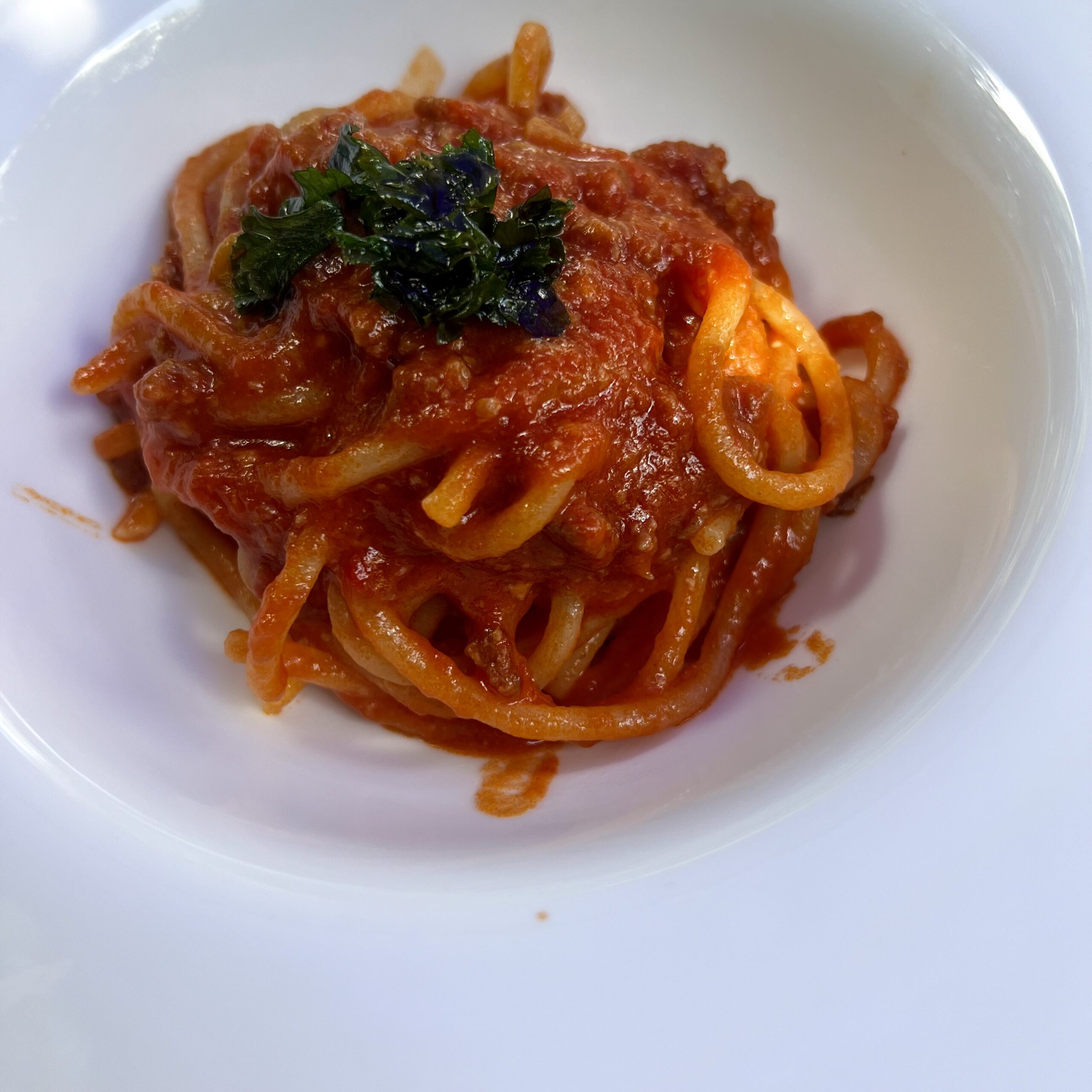
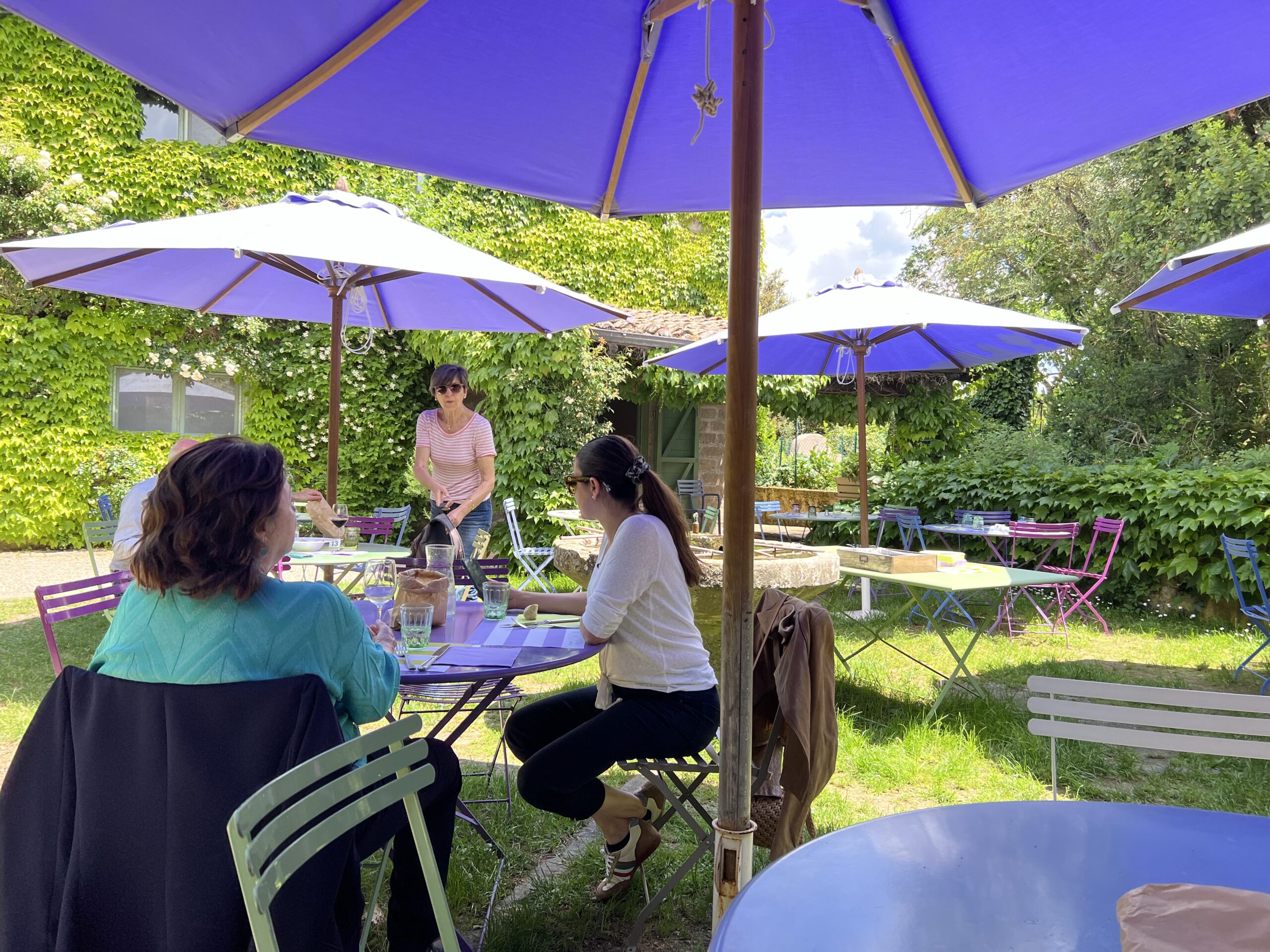
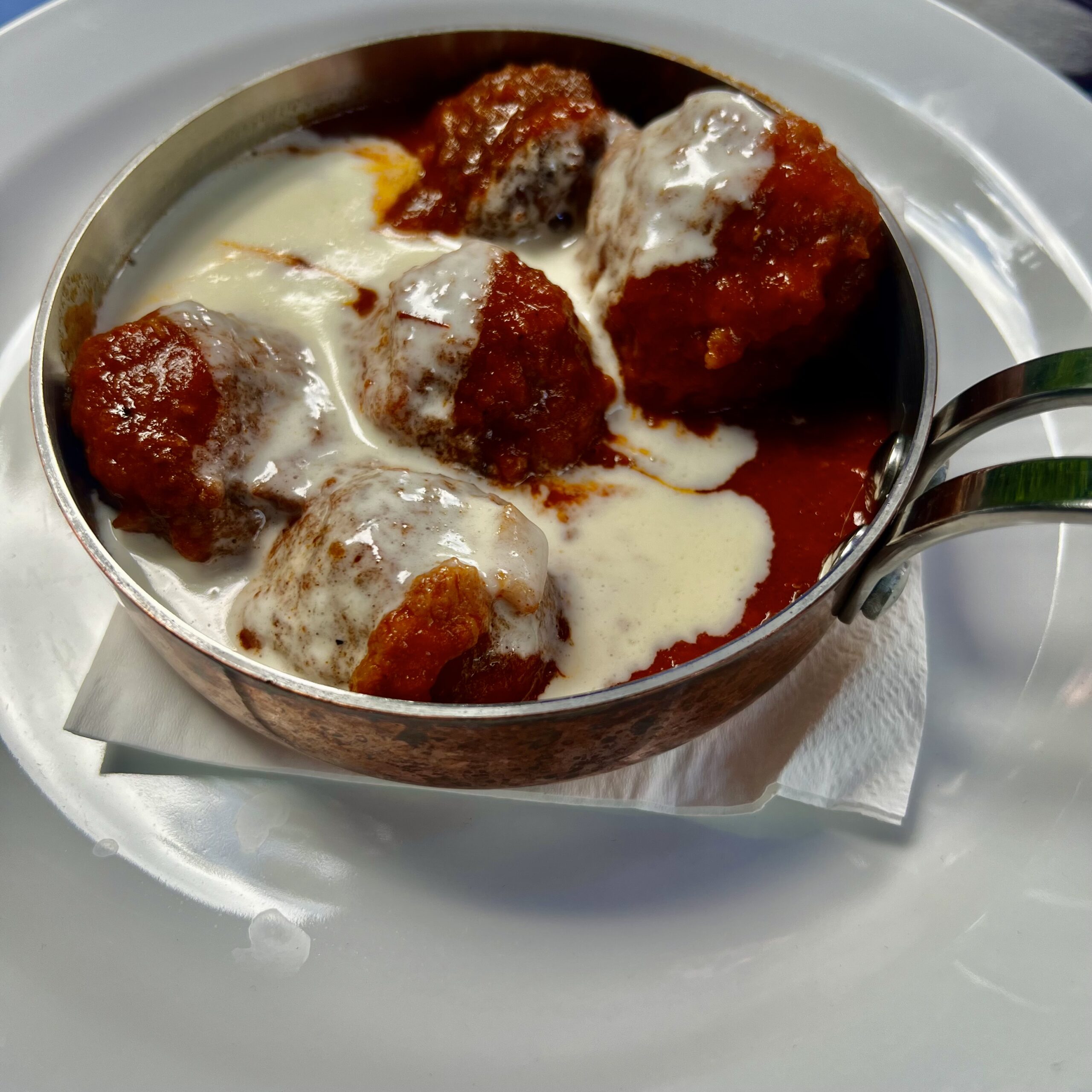
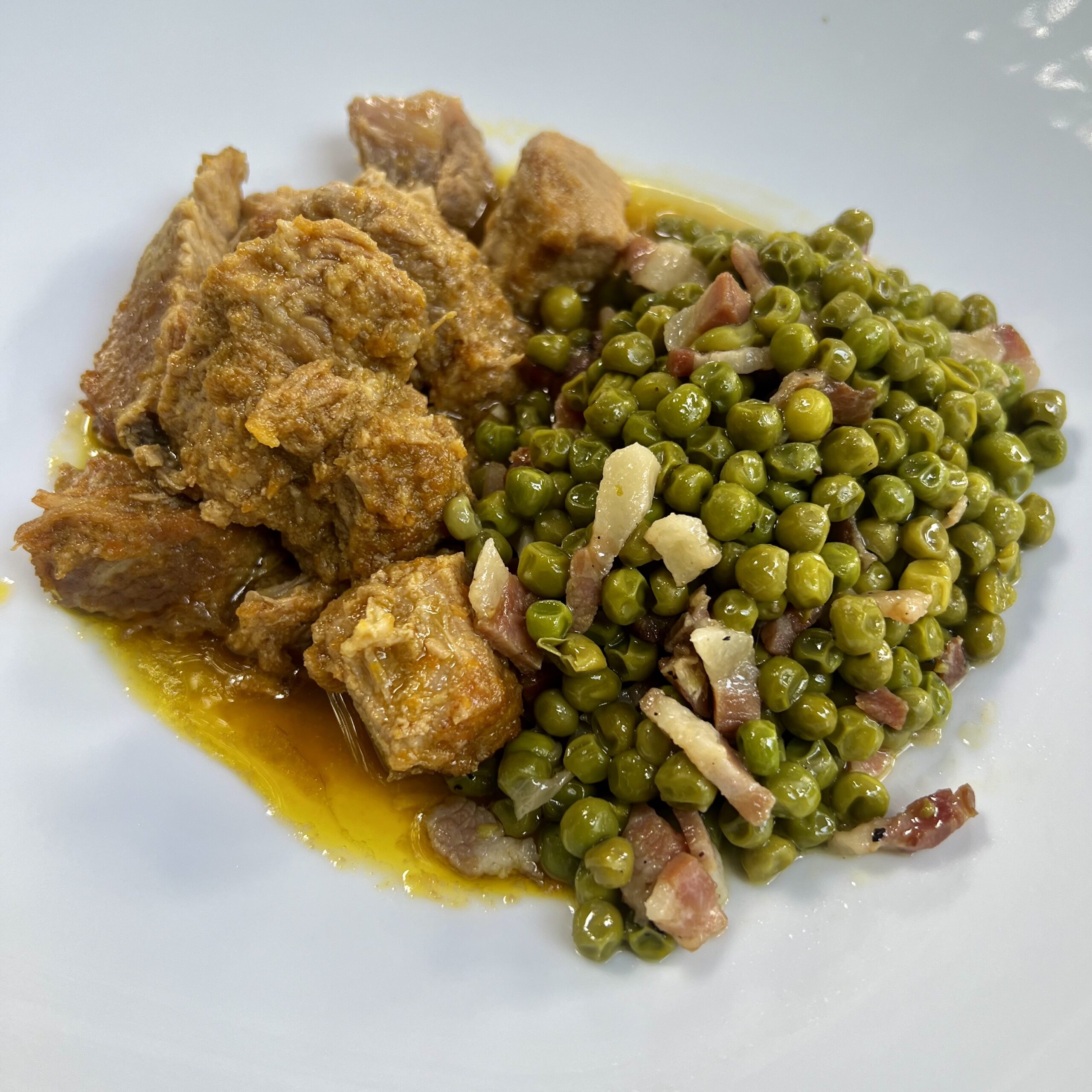
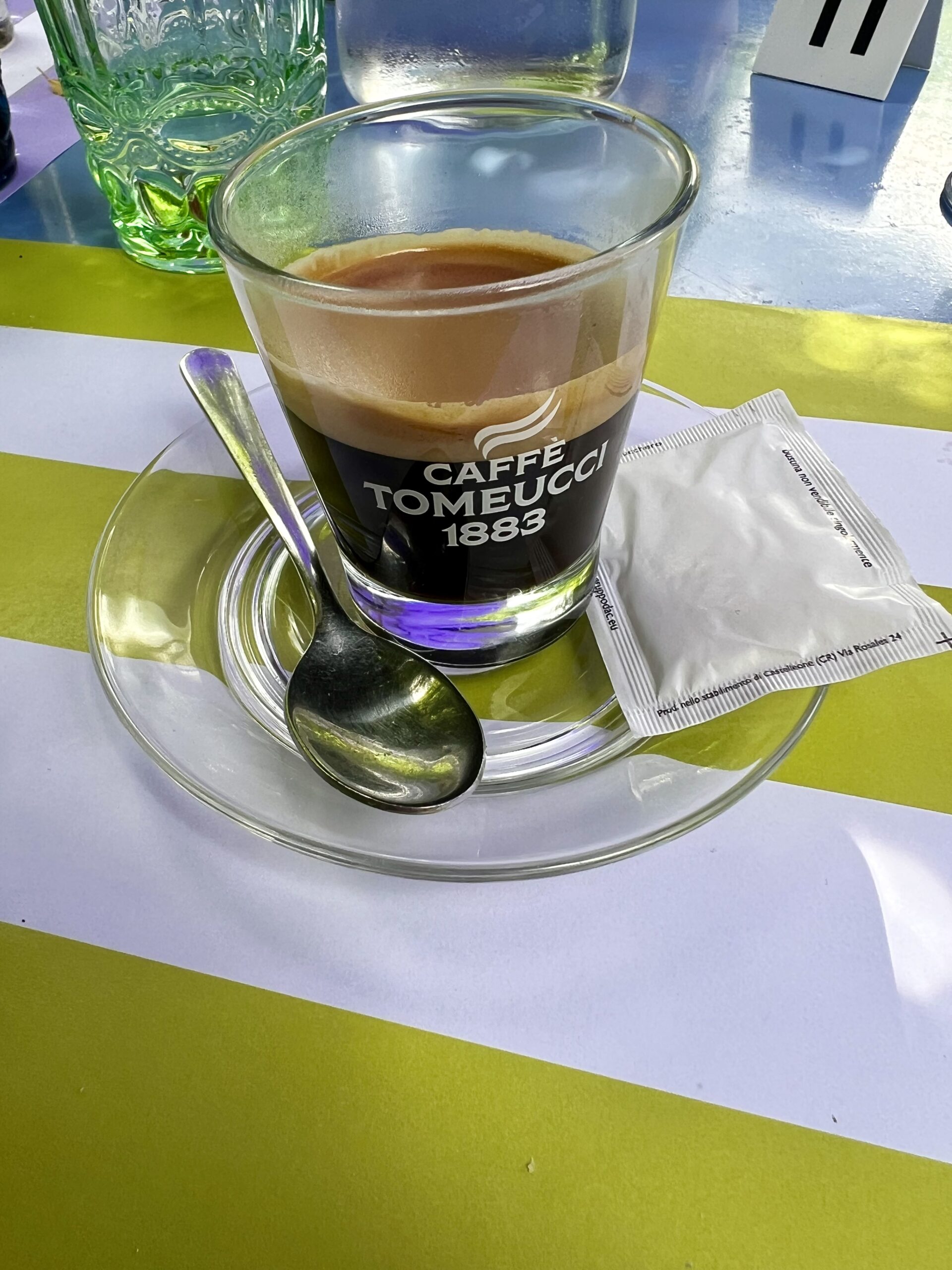
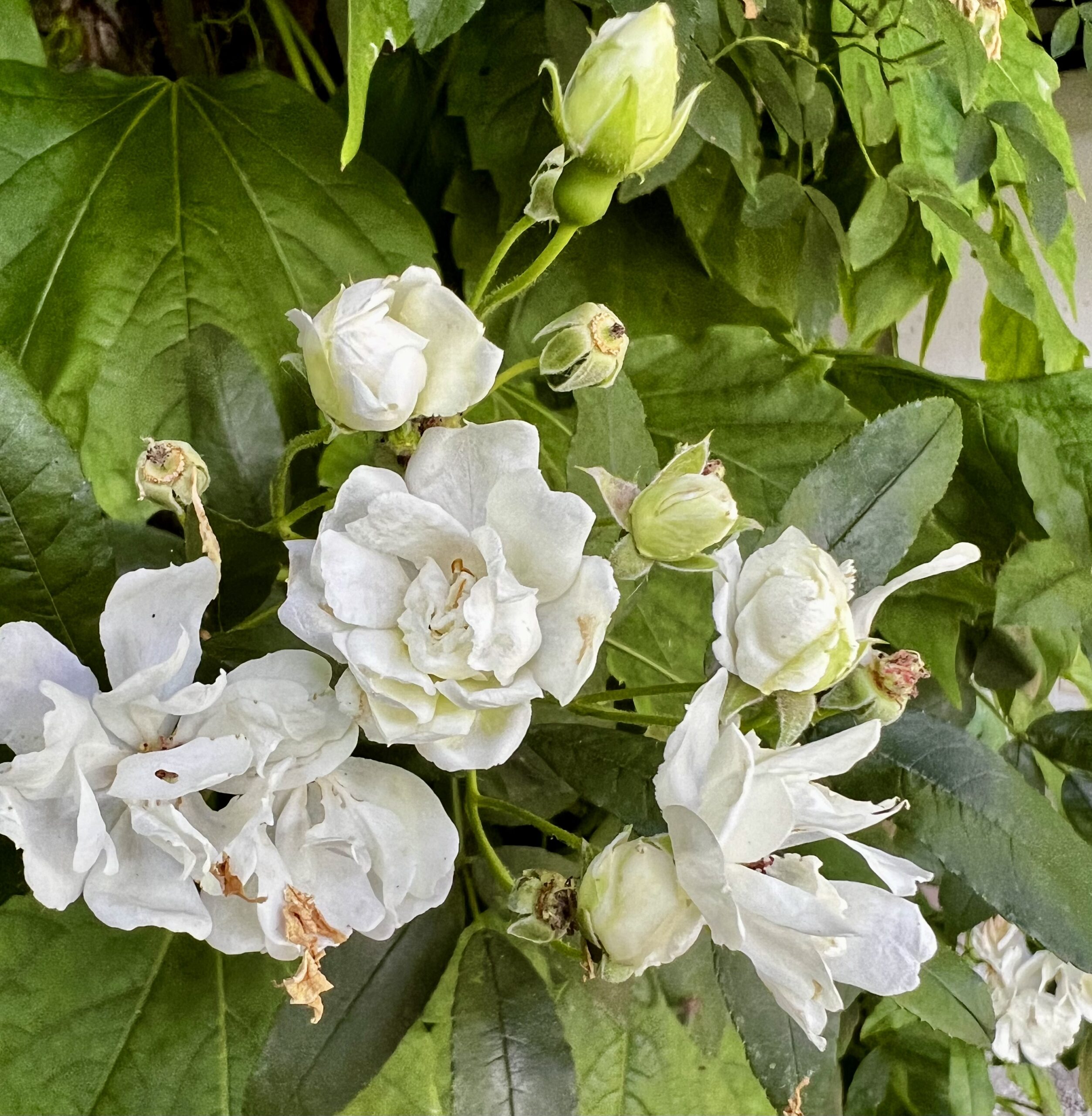
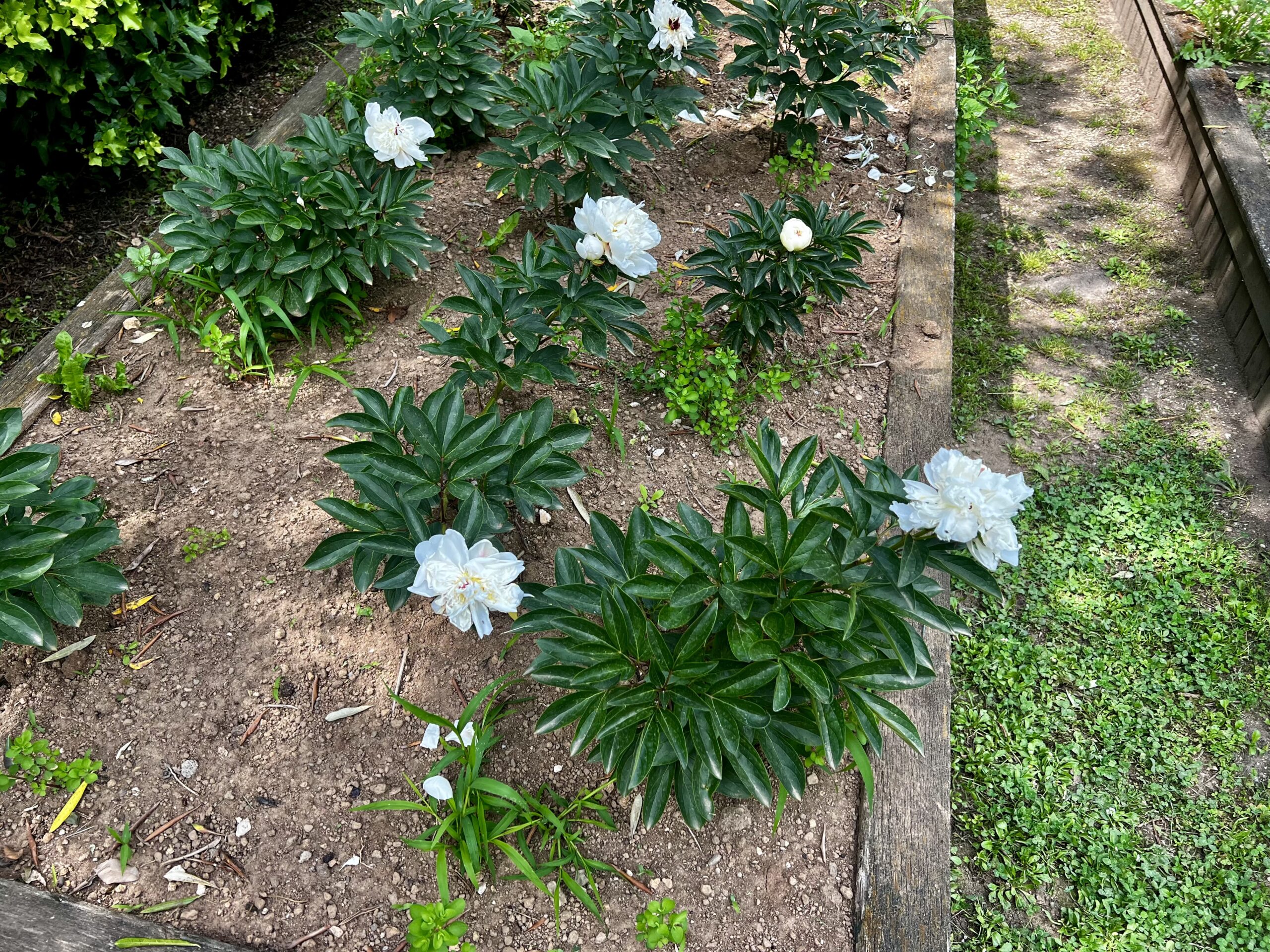
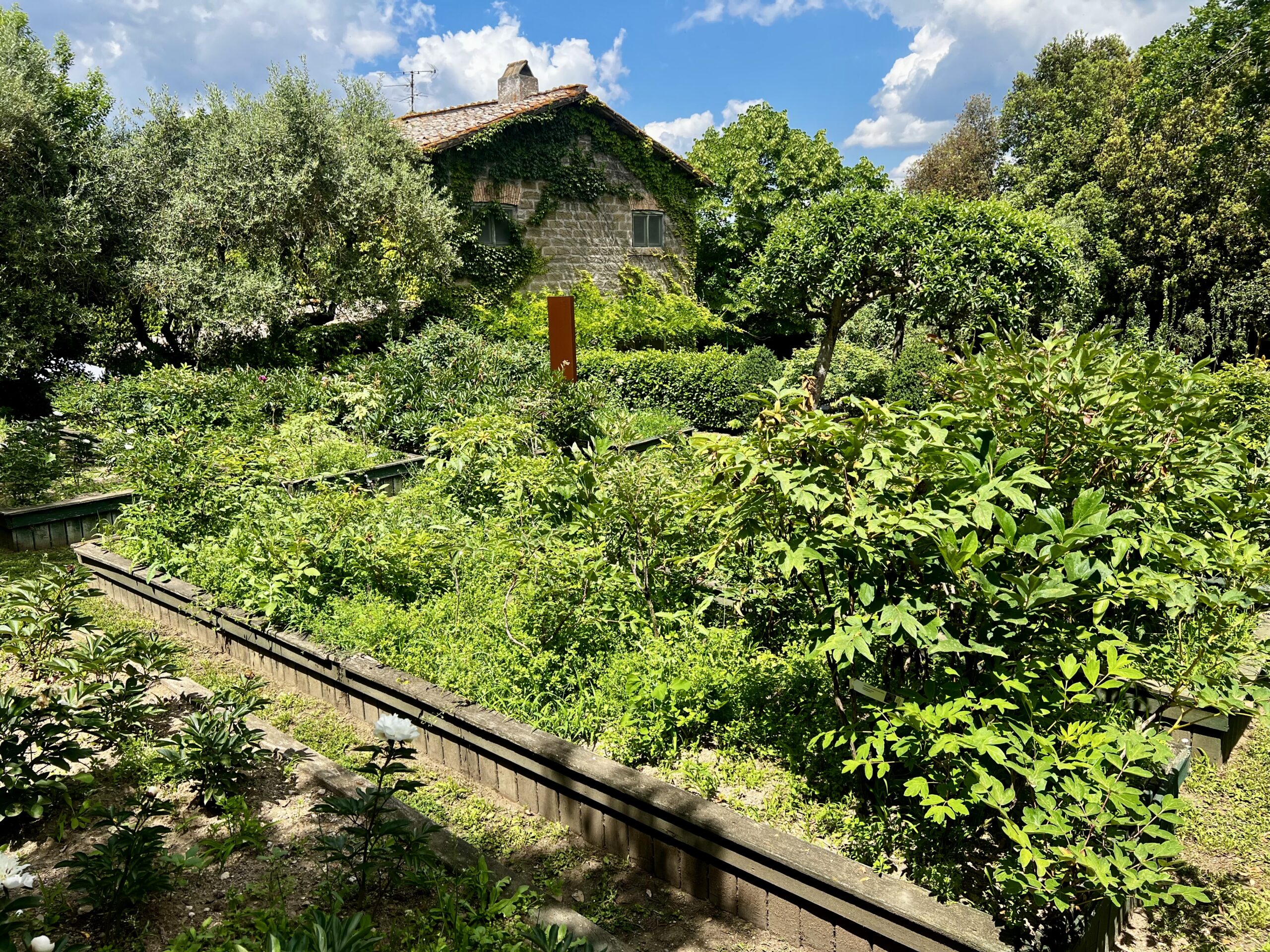
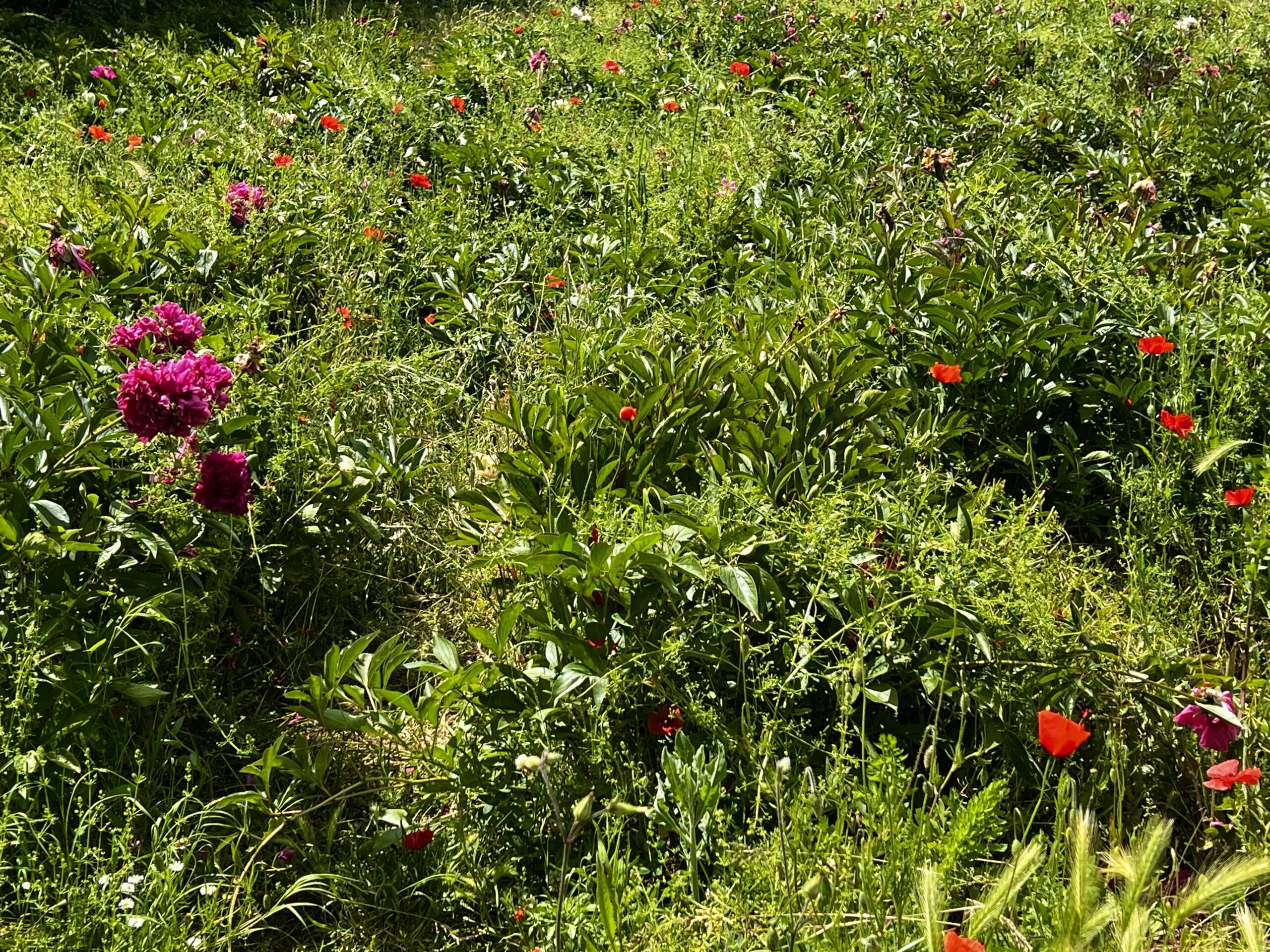
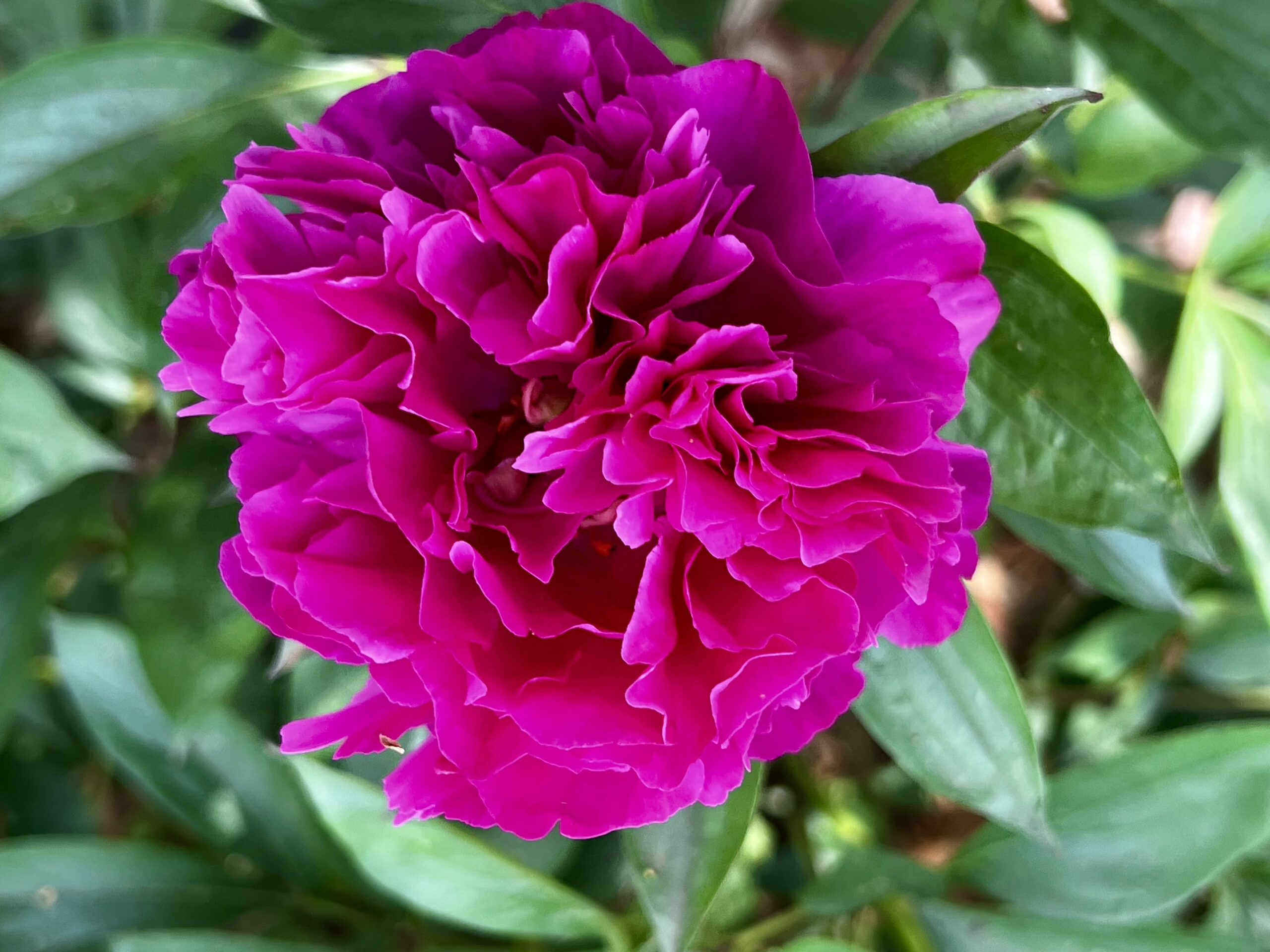
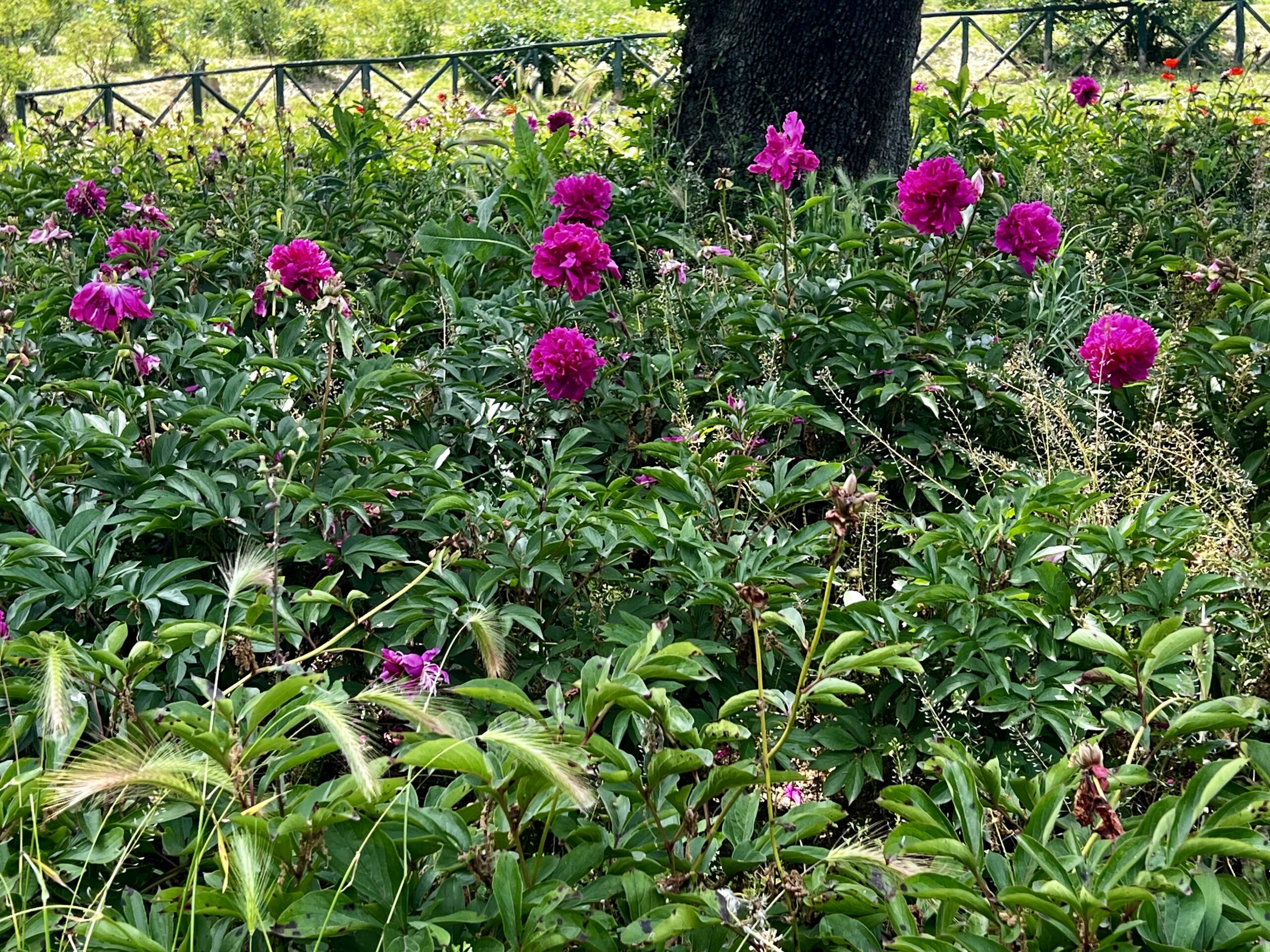
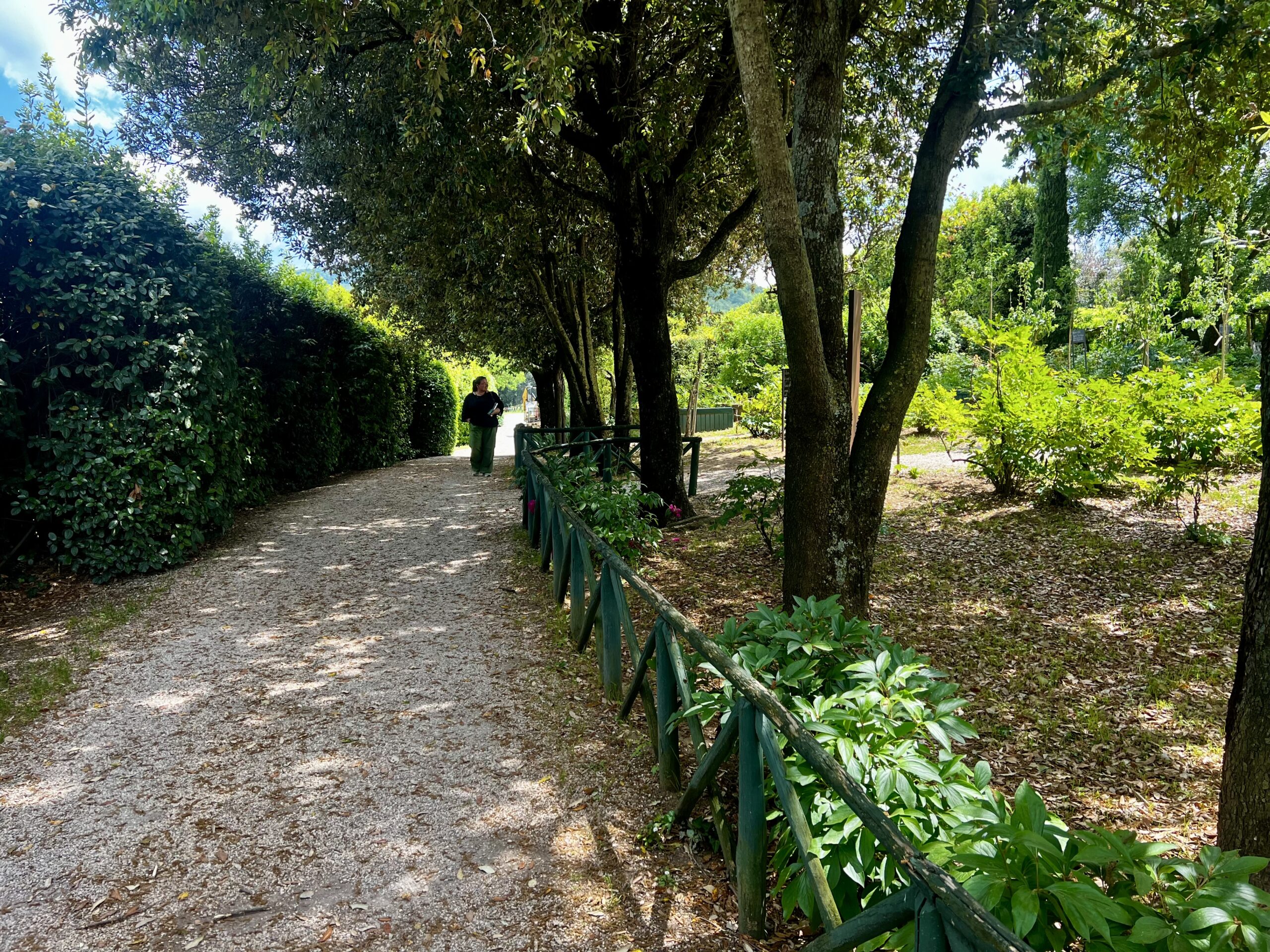
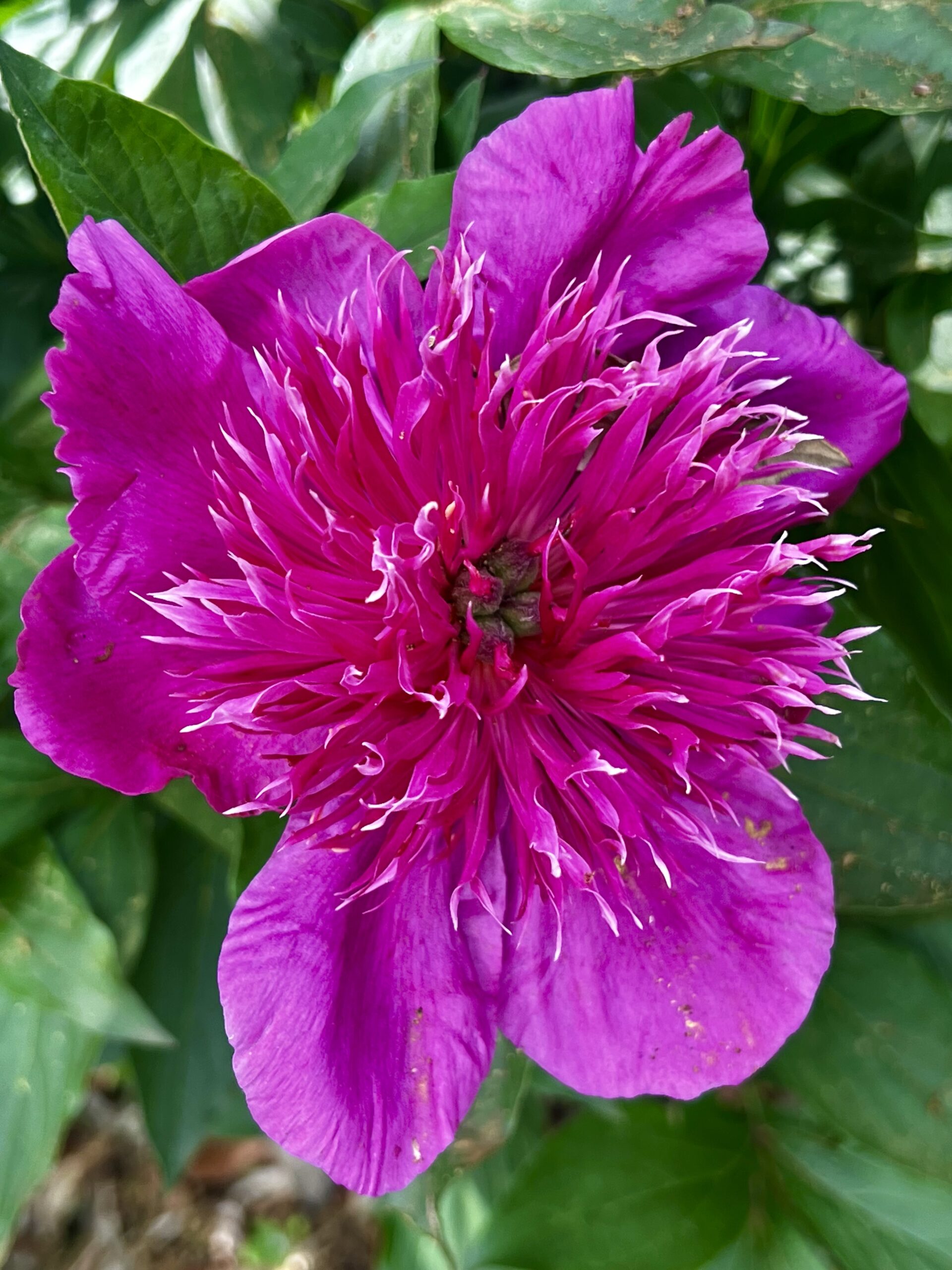
Back to a Familiar Routine
While staying again at Luciana’s apartment in Rome, Robert returned to Rosati’s for morning a caffe latte and a cornetto. Liam, about to turn two, continues to be cute and full of energy.
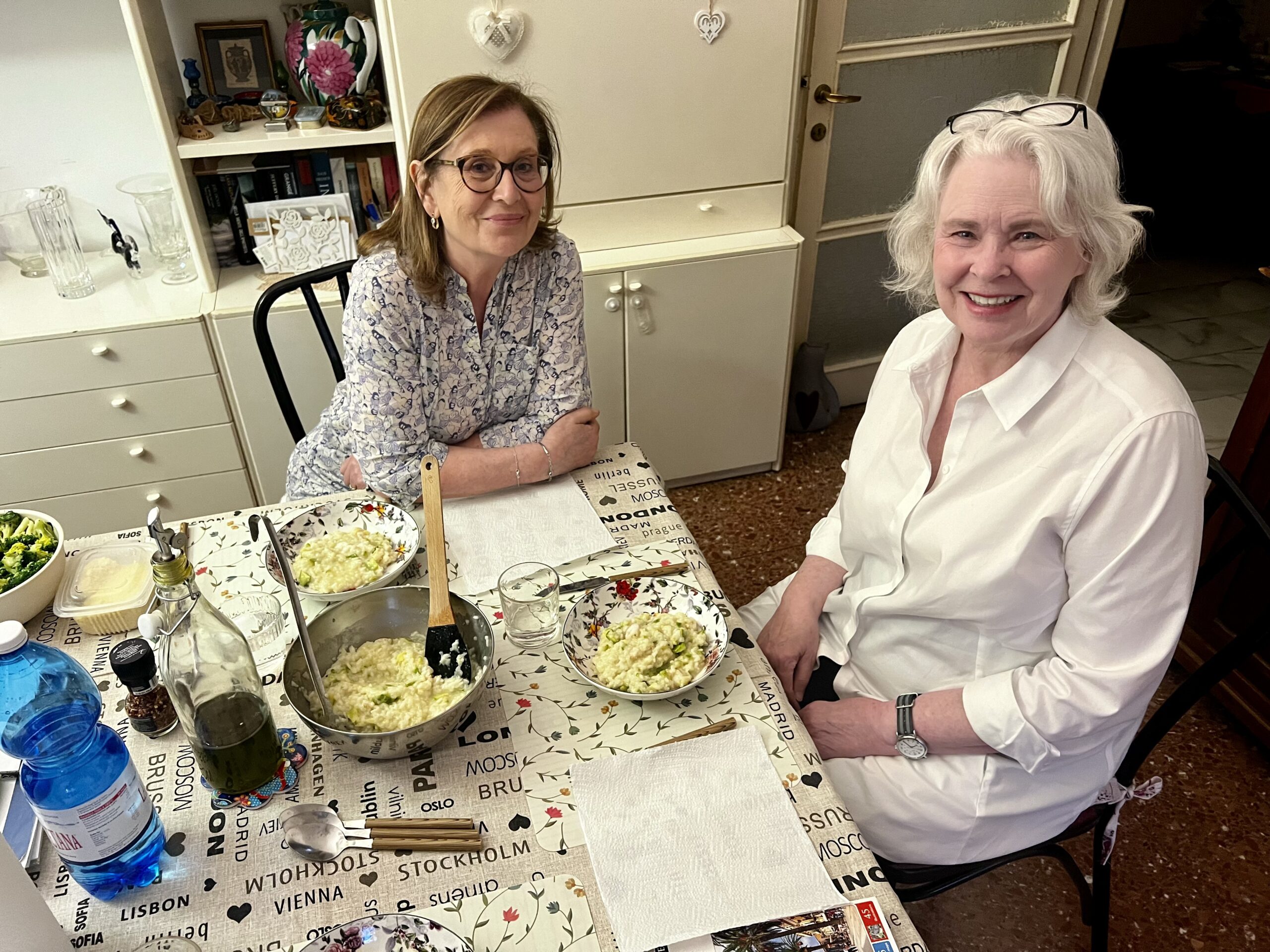
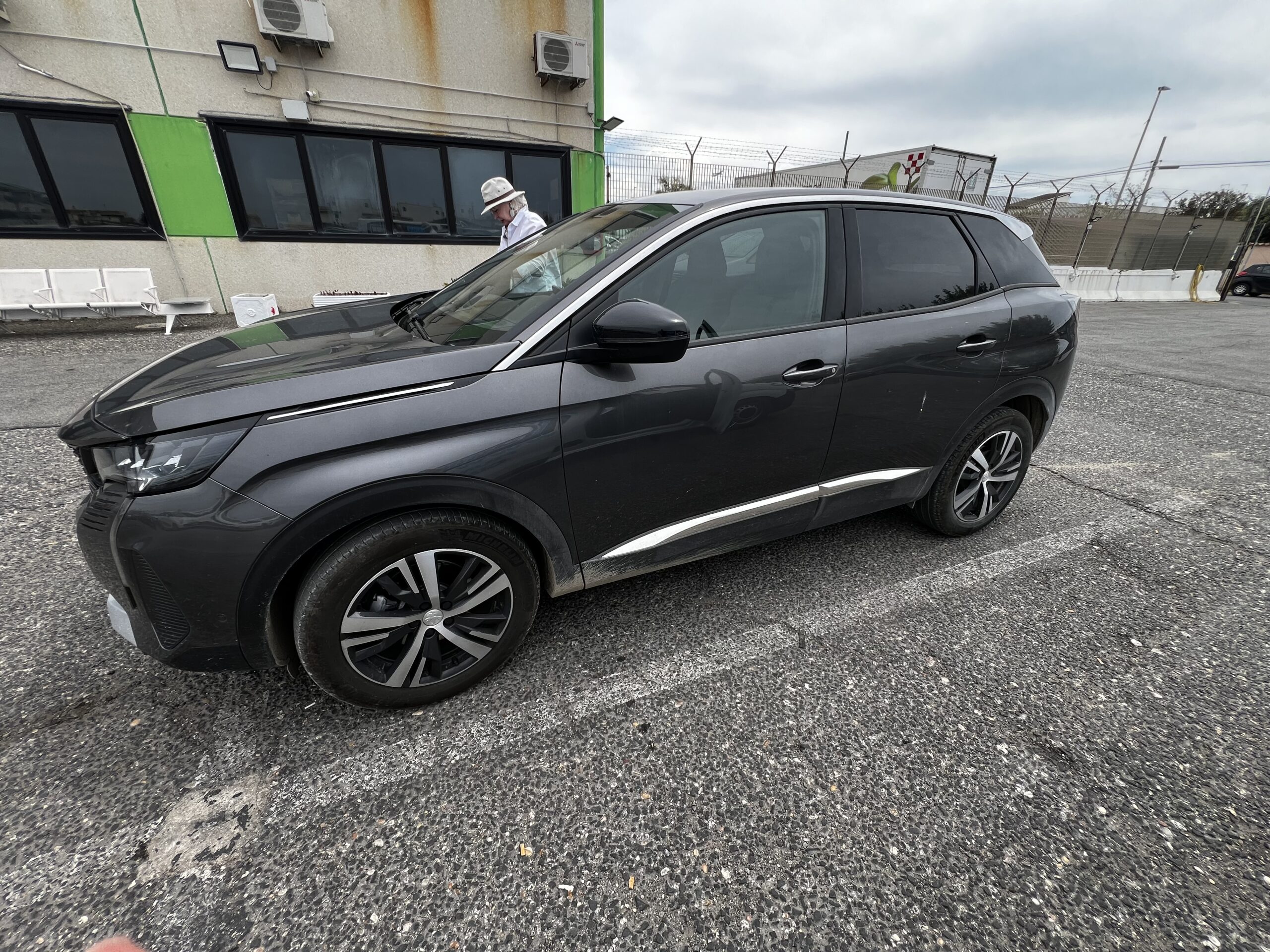
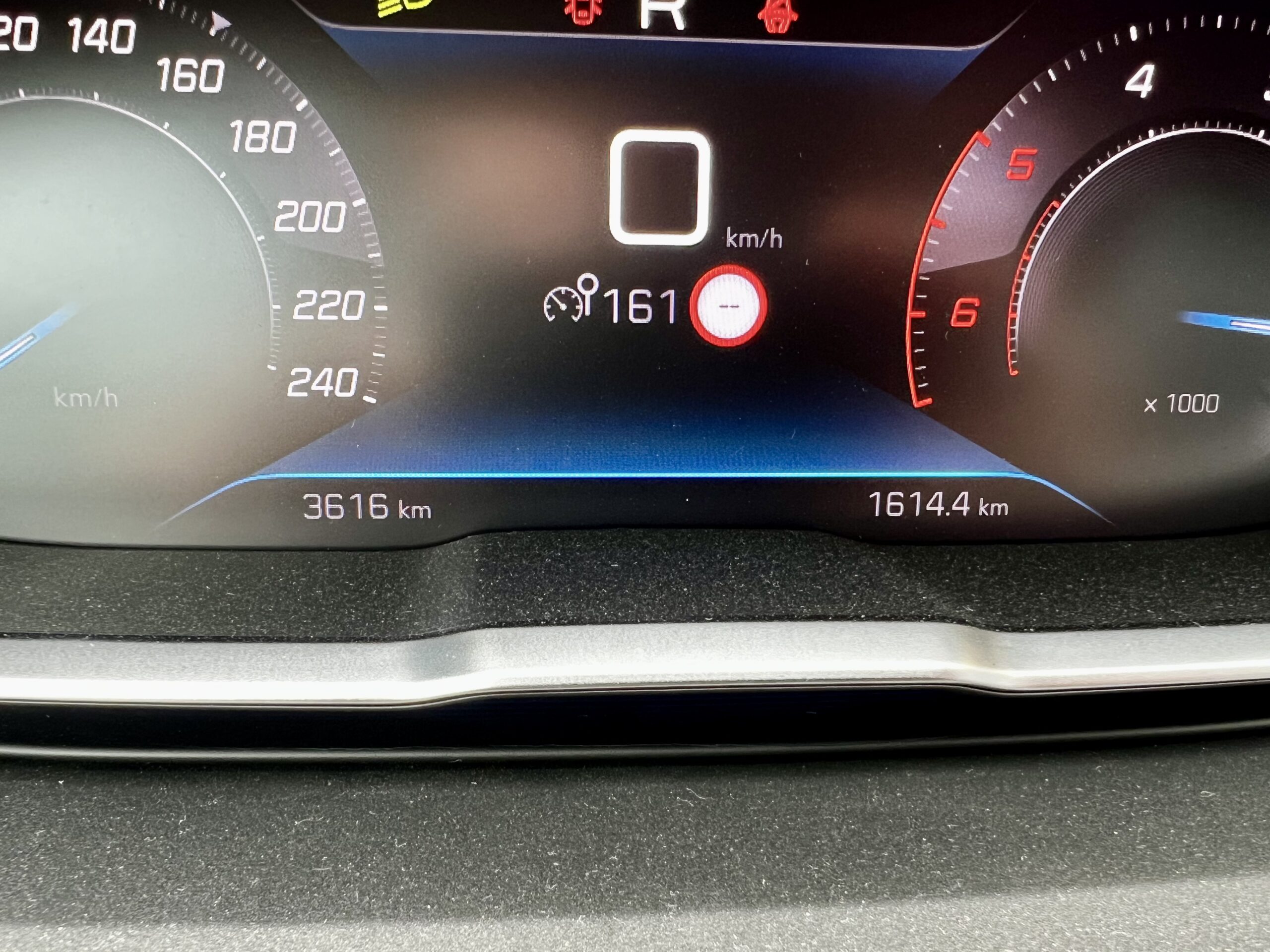
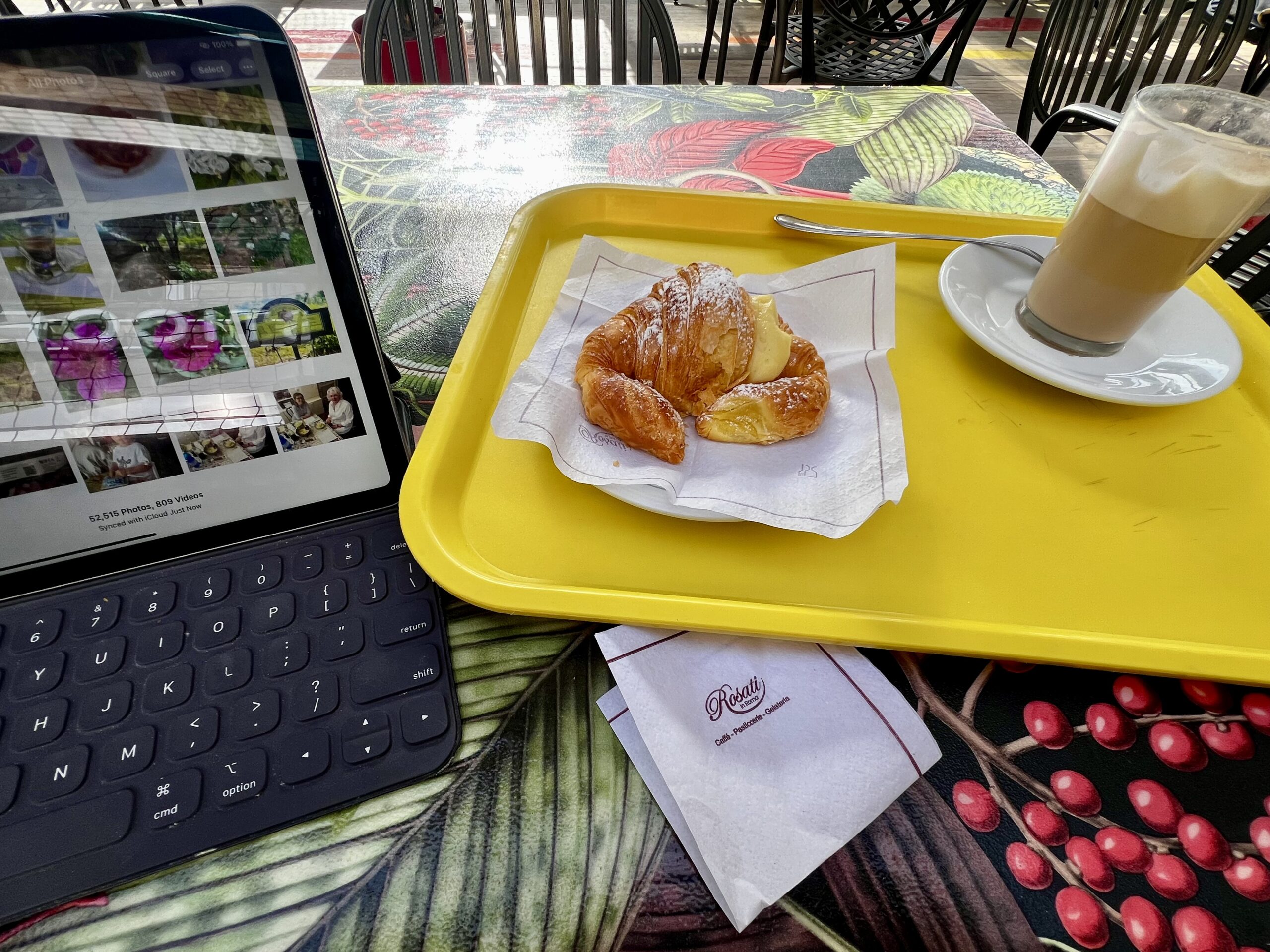
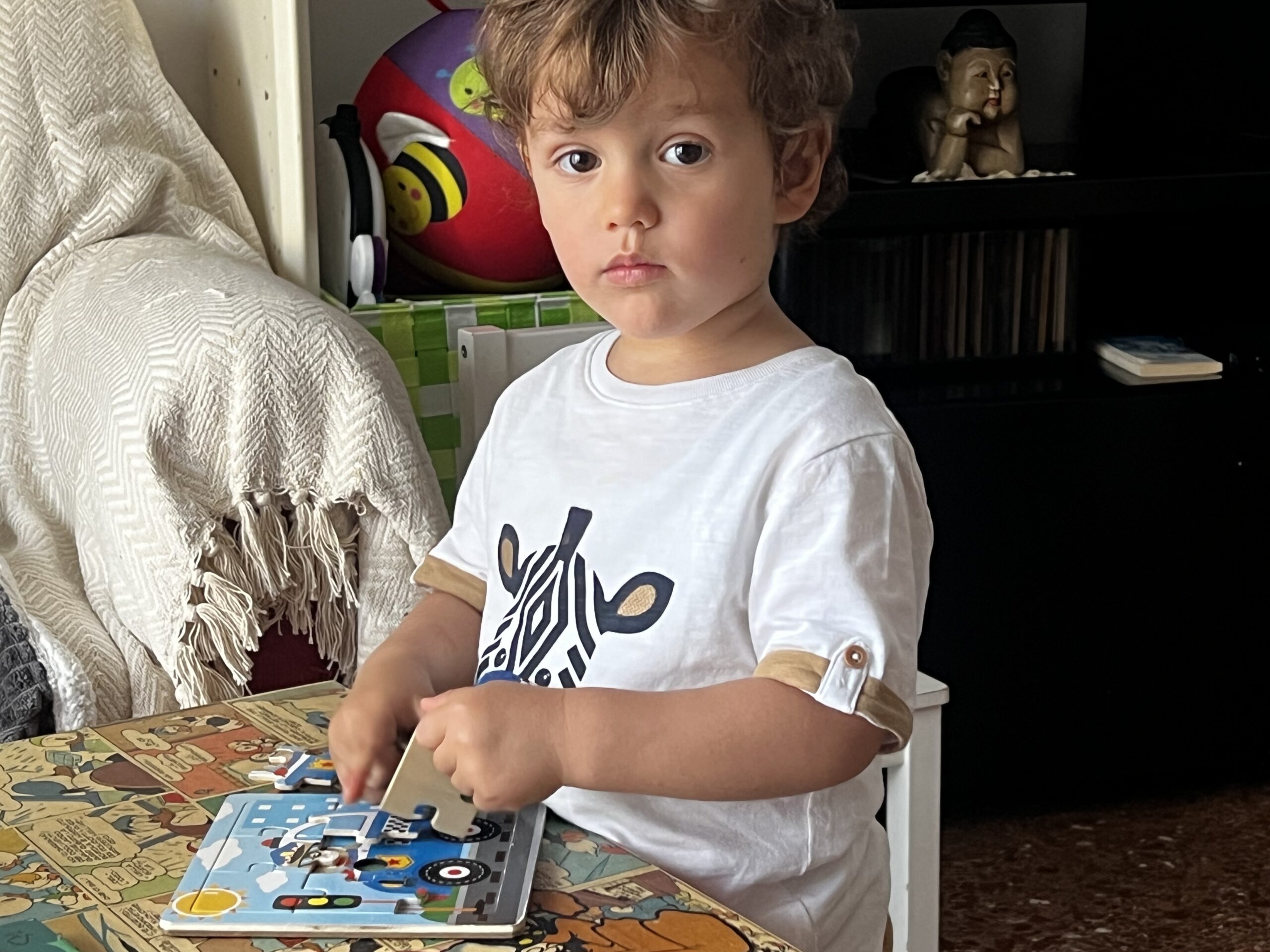
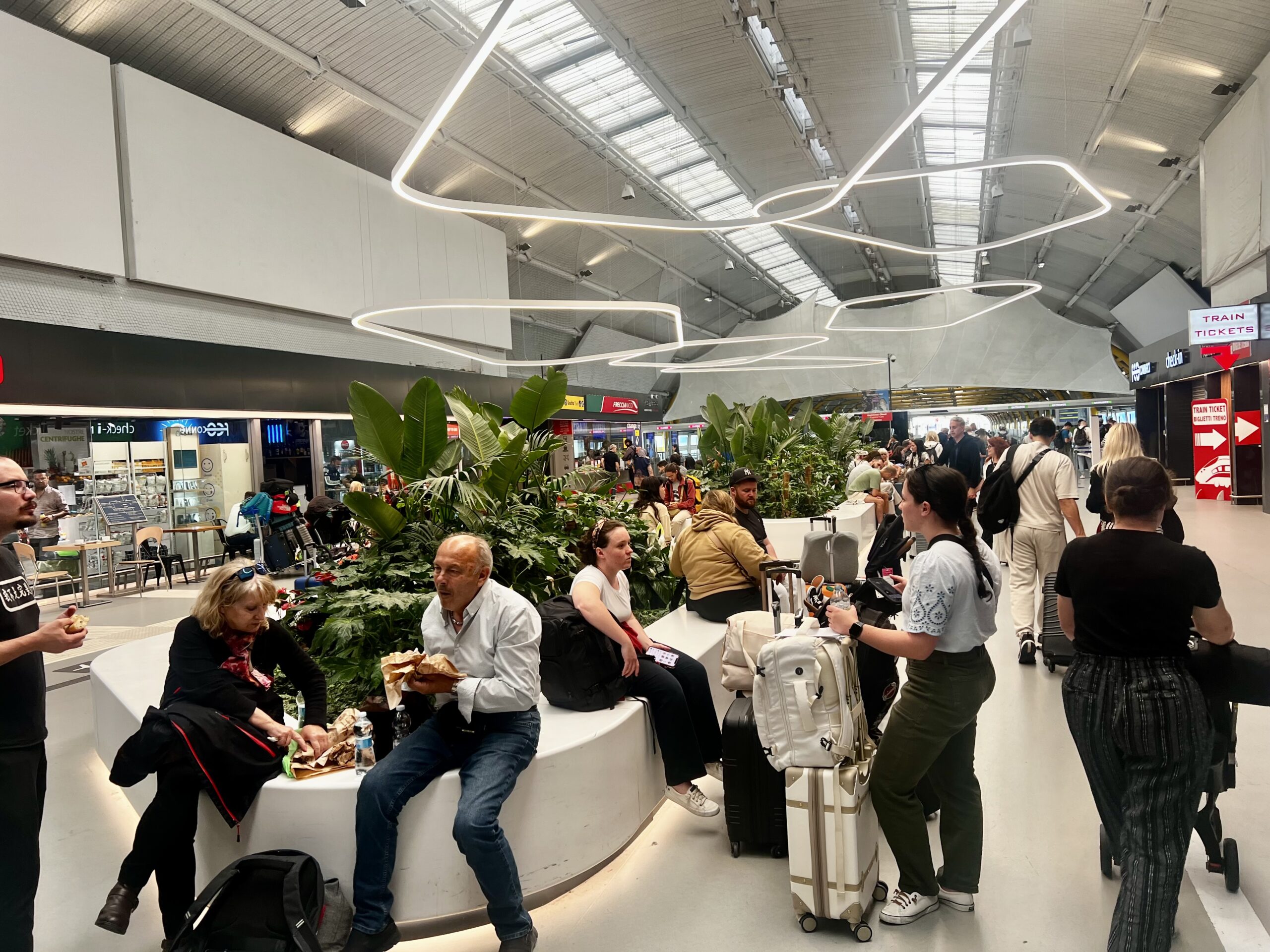

Pranzo with the Cousins
We took the cousins out for lunch on Sunday. This time Gino Primo was able to attend. Robert promised GIno to spend more time together on the next trip. He glows when he is with his grandson Liam
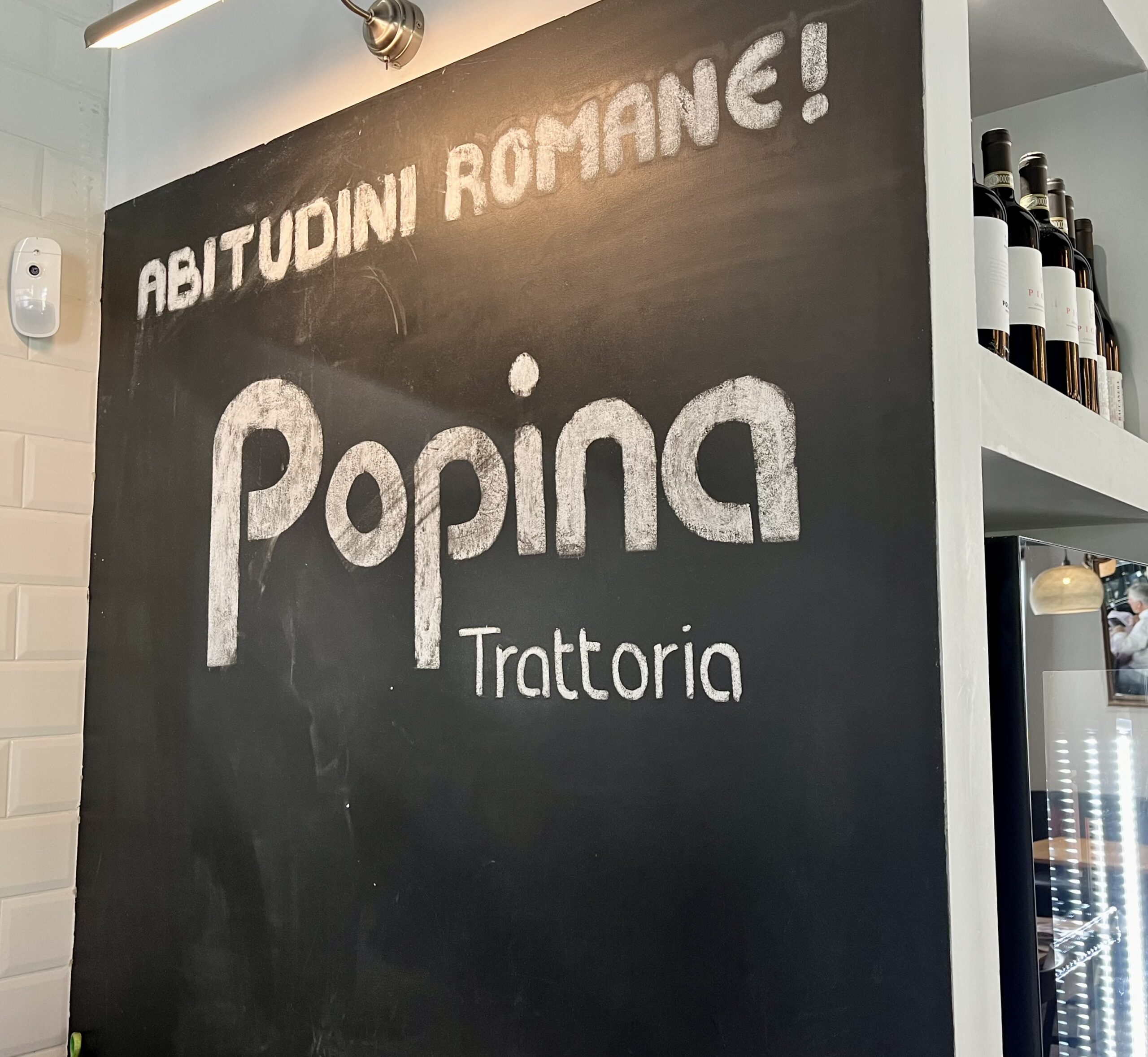
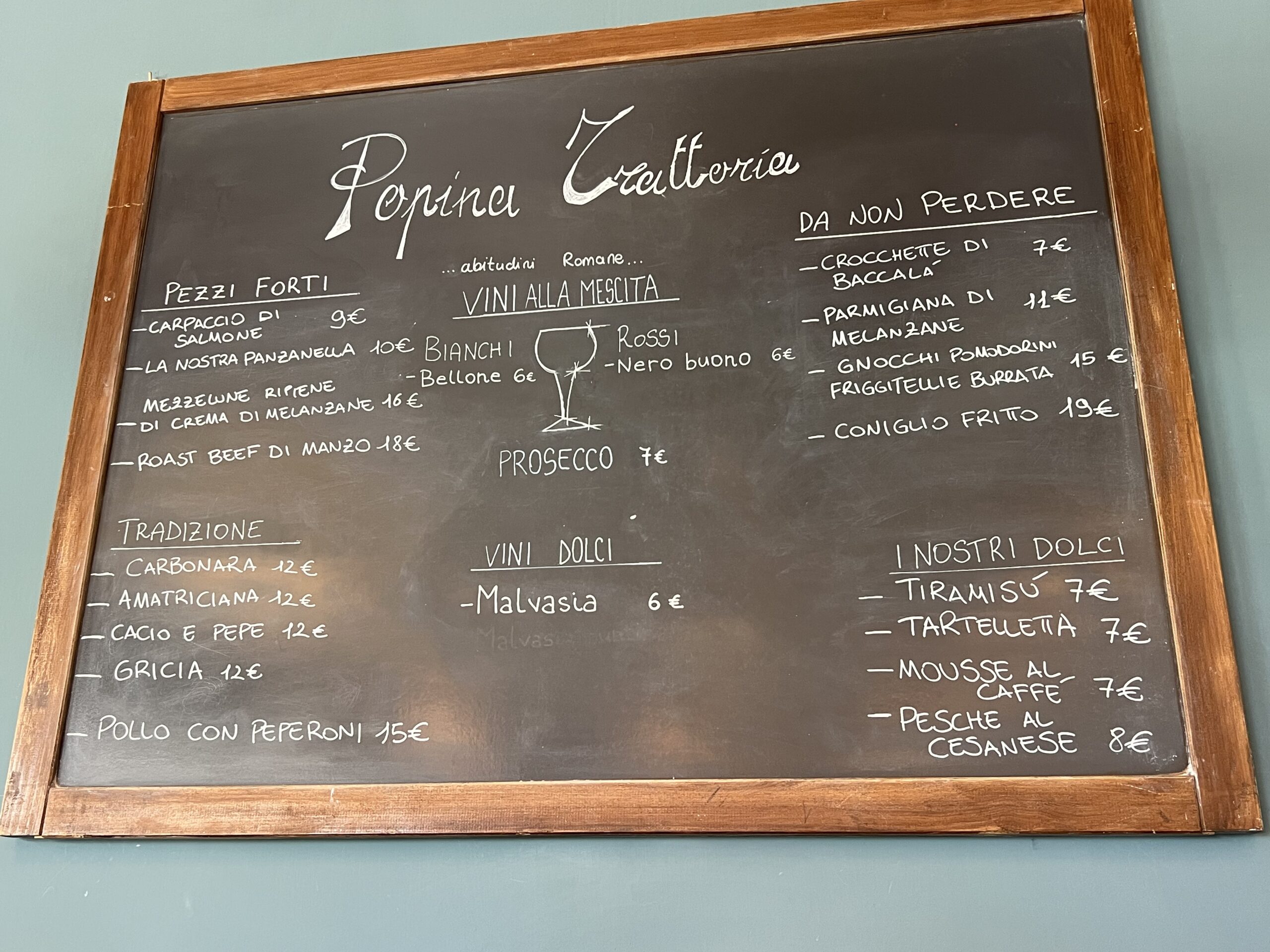

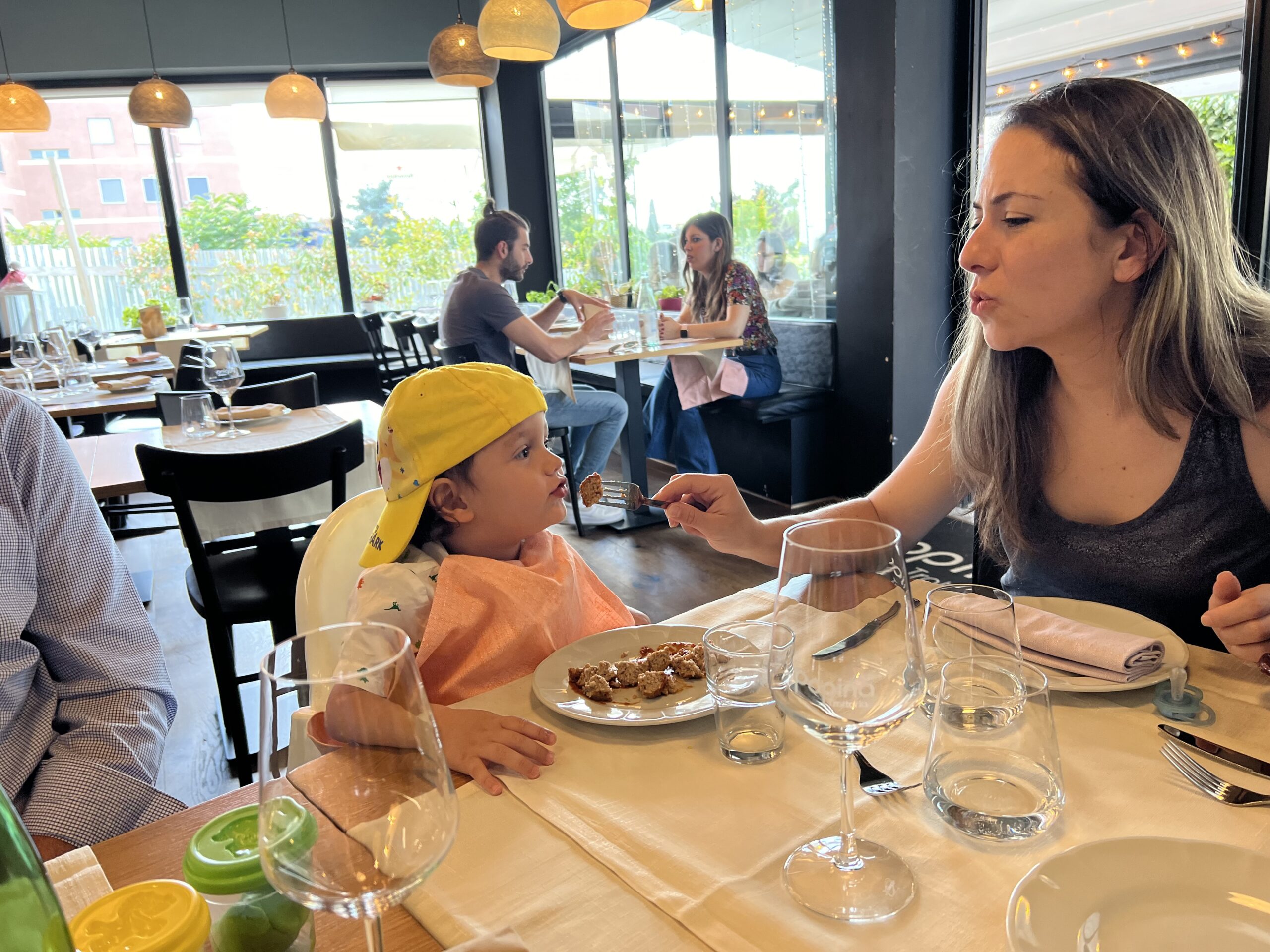

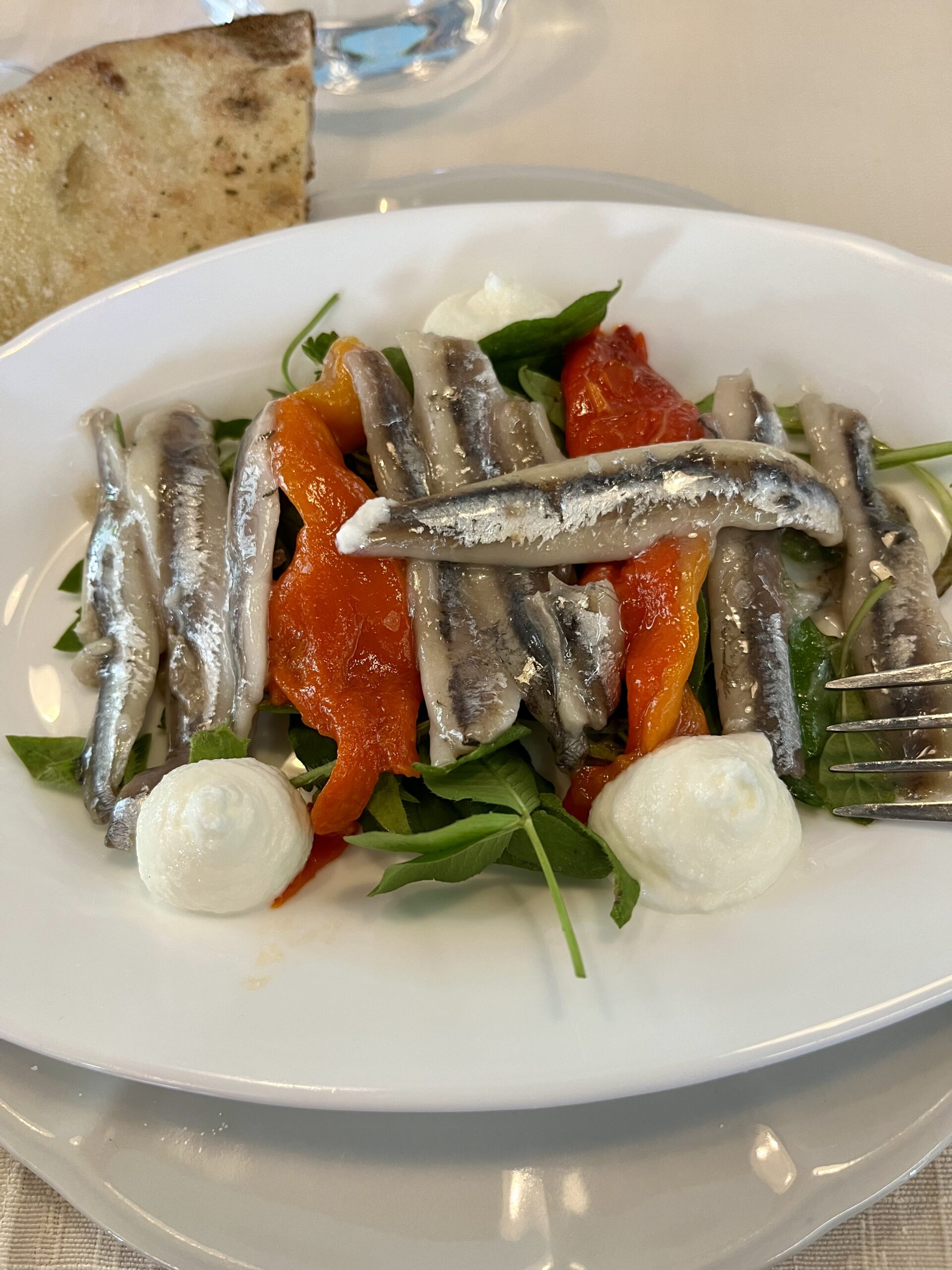

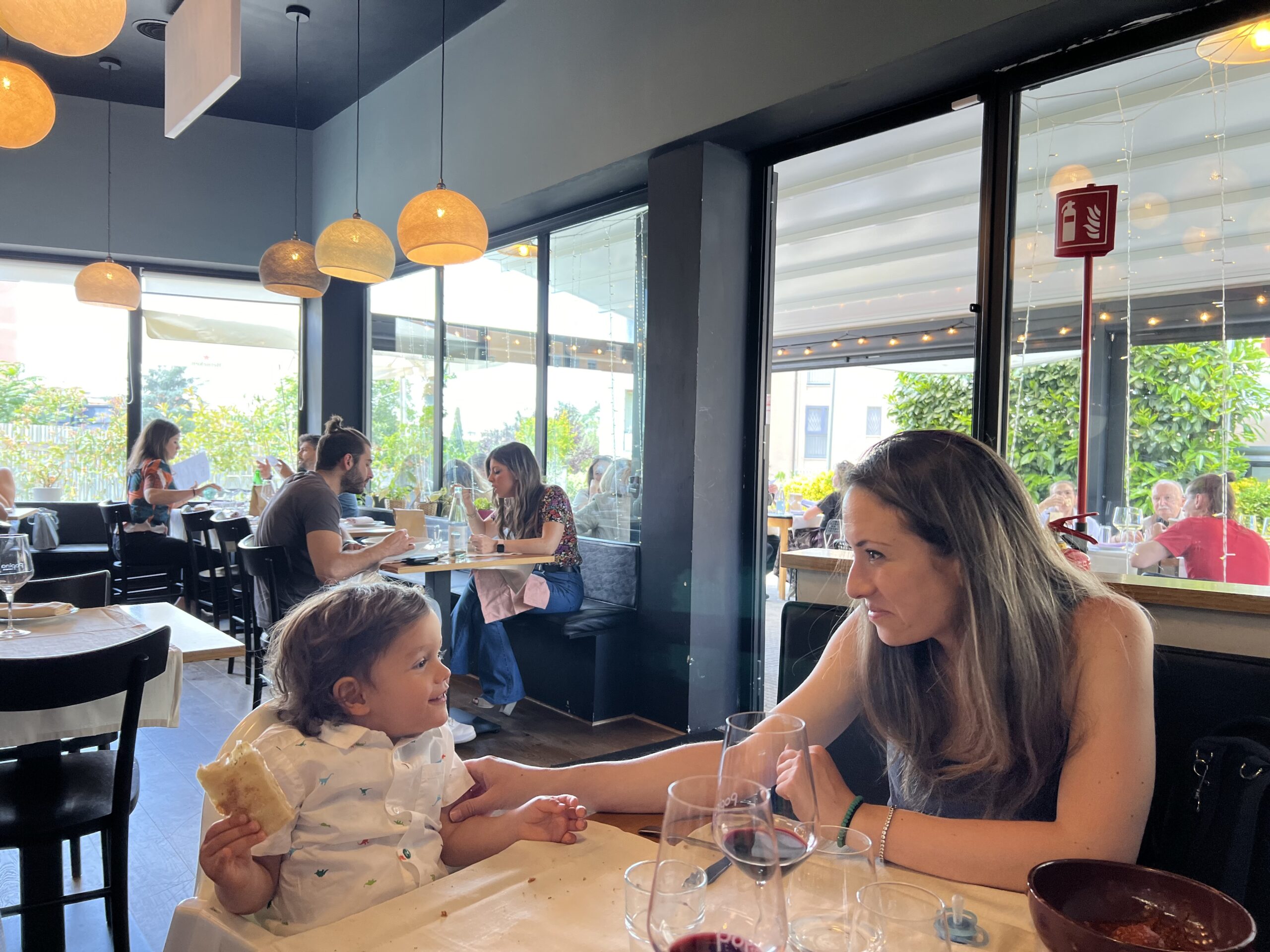
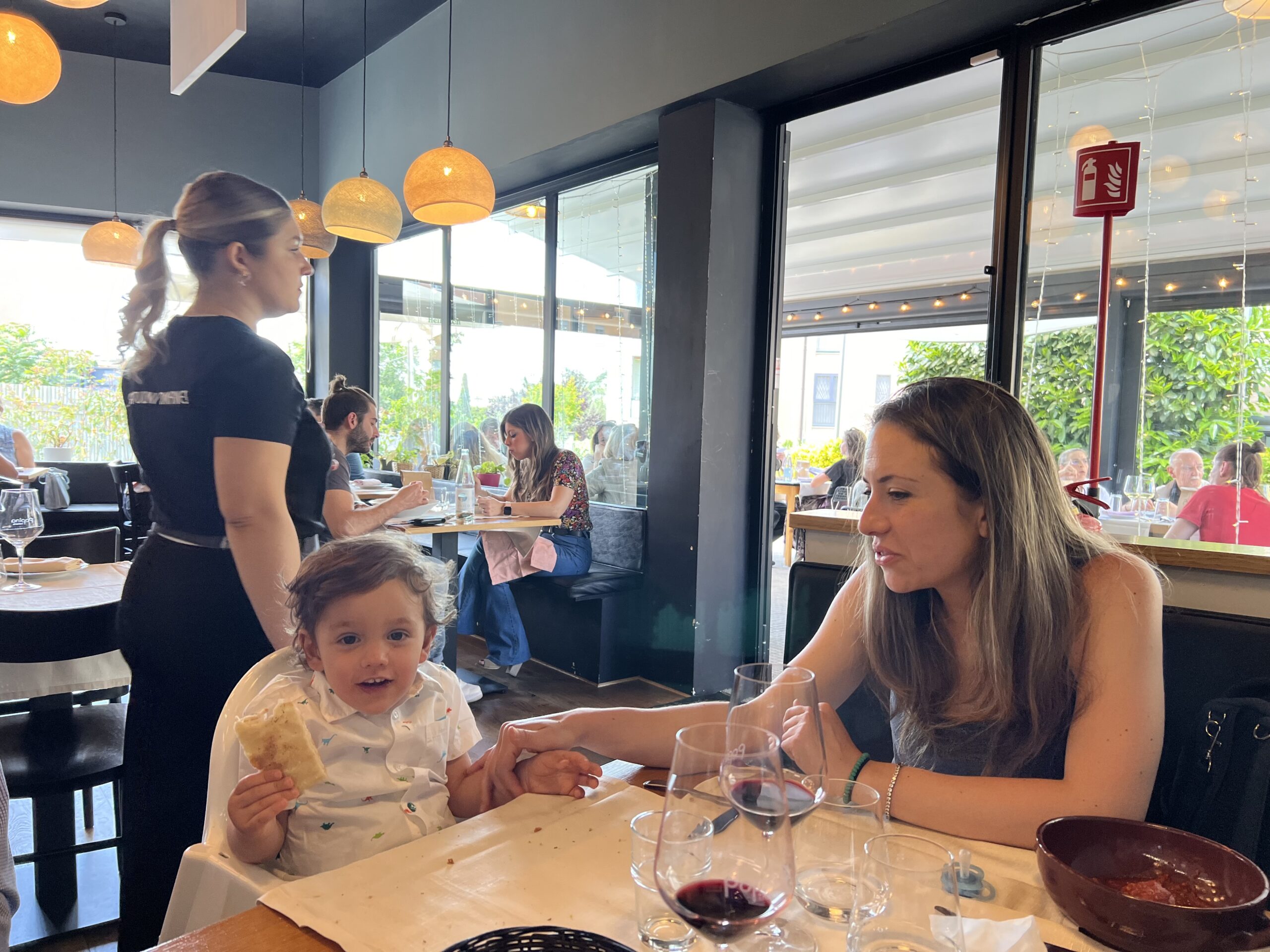
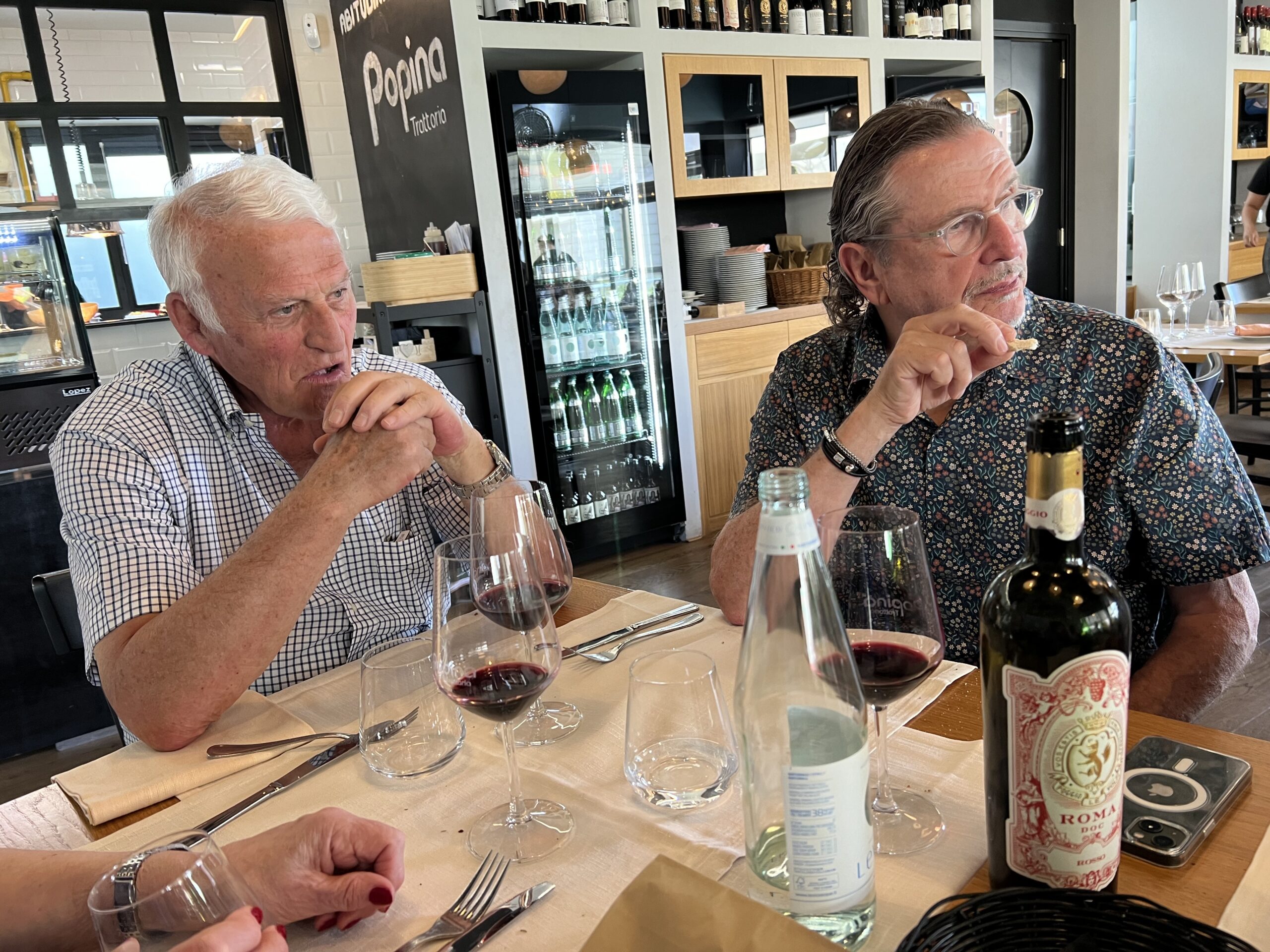
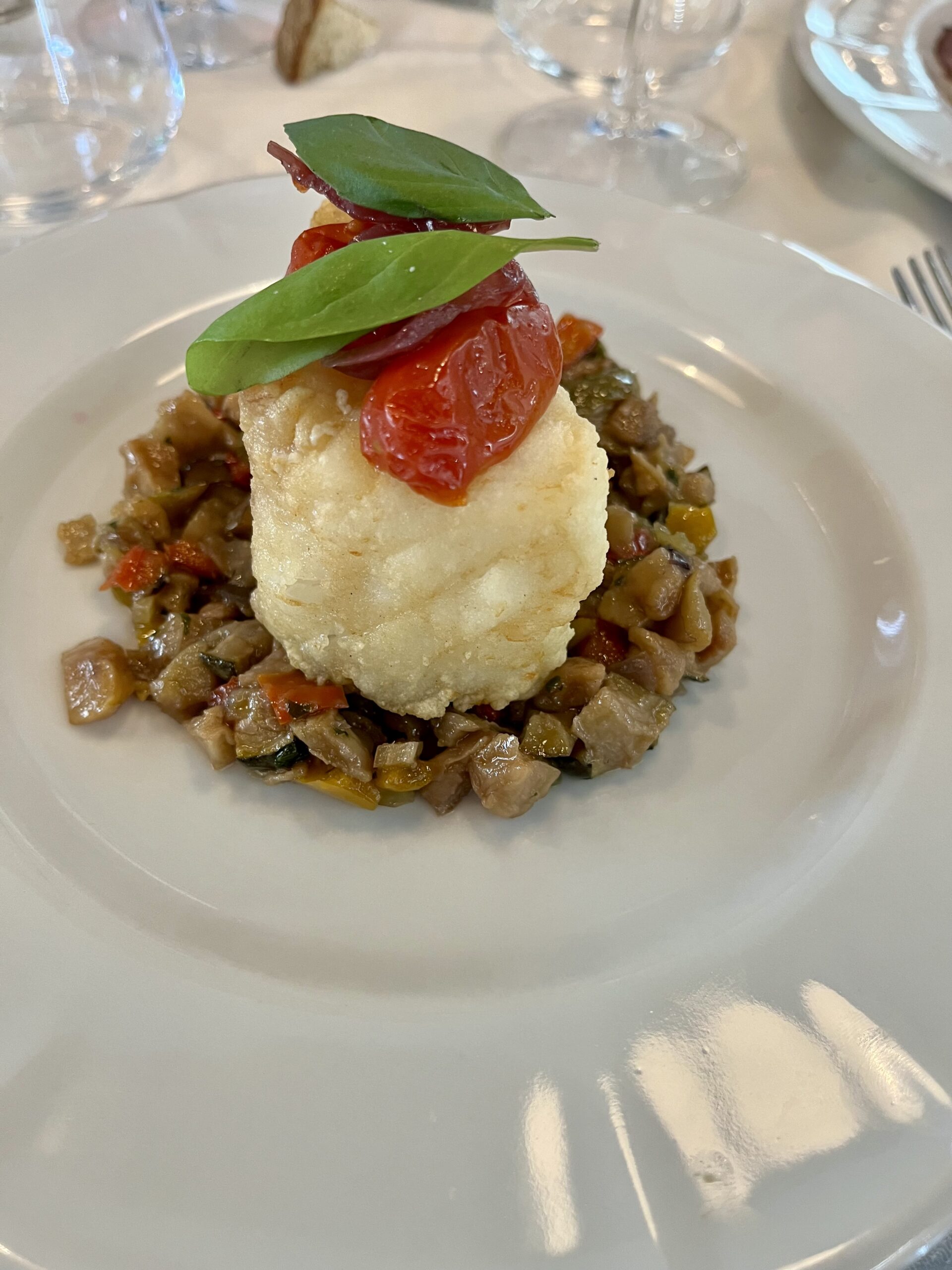
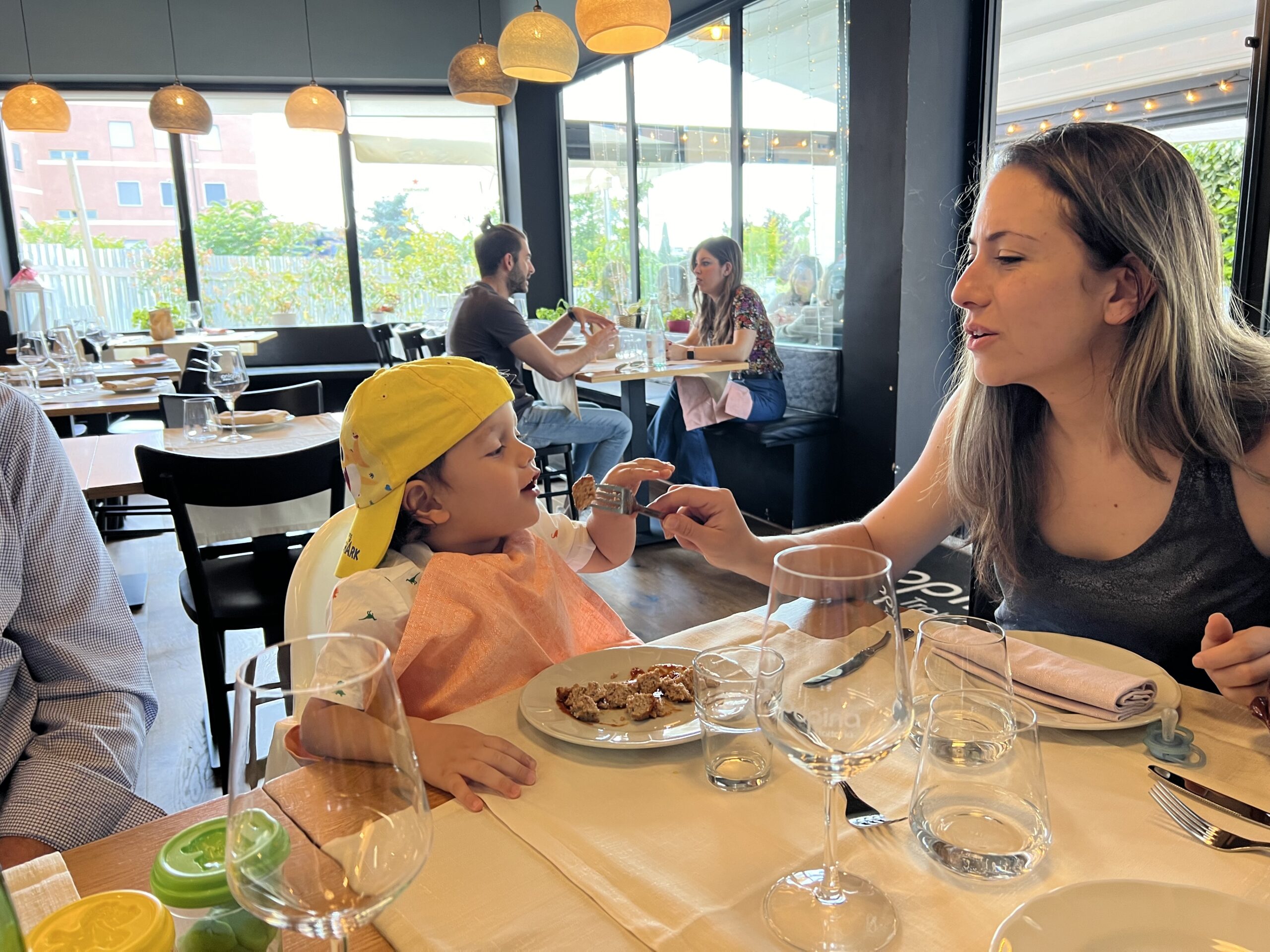
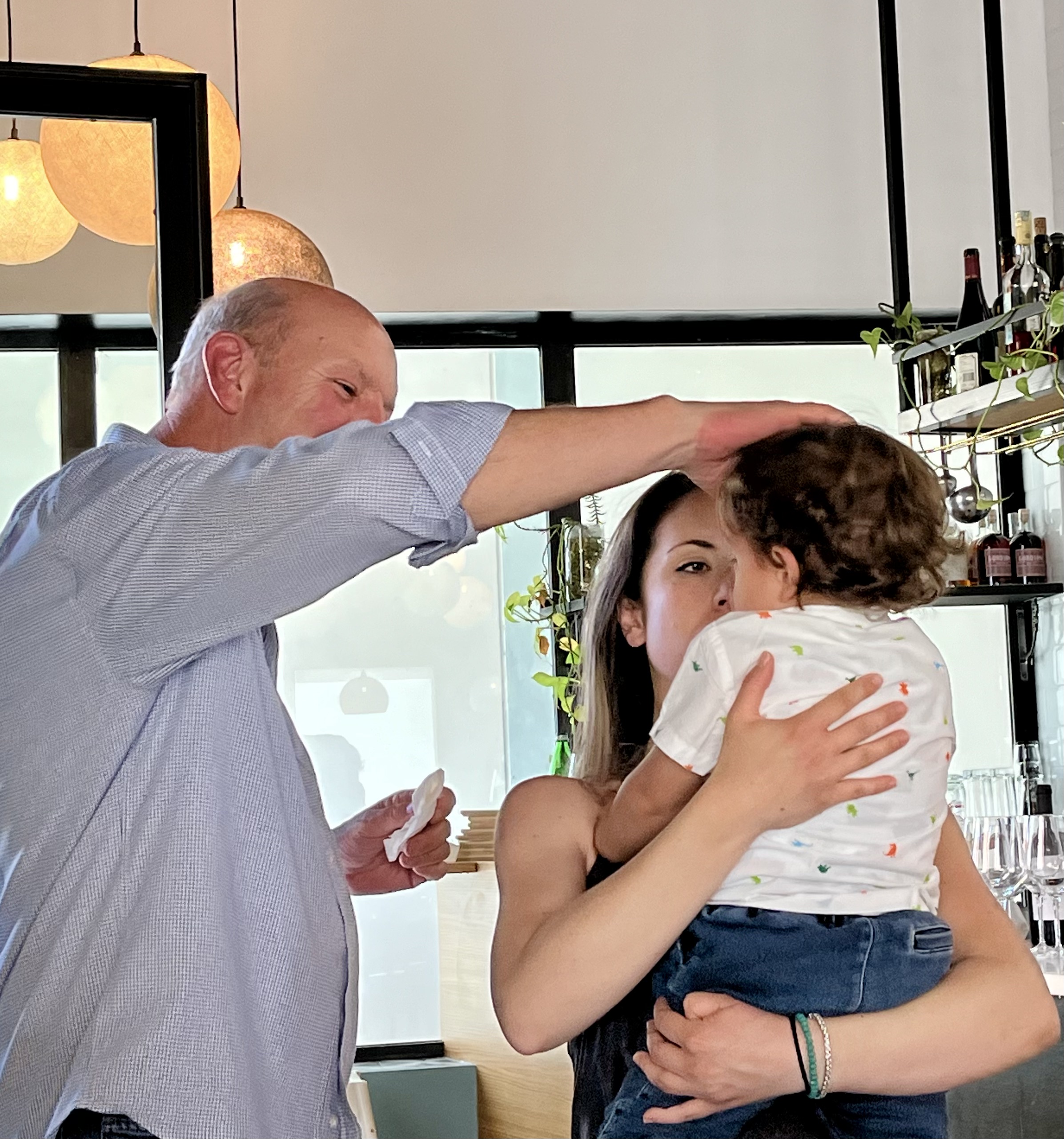
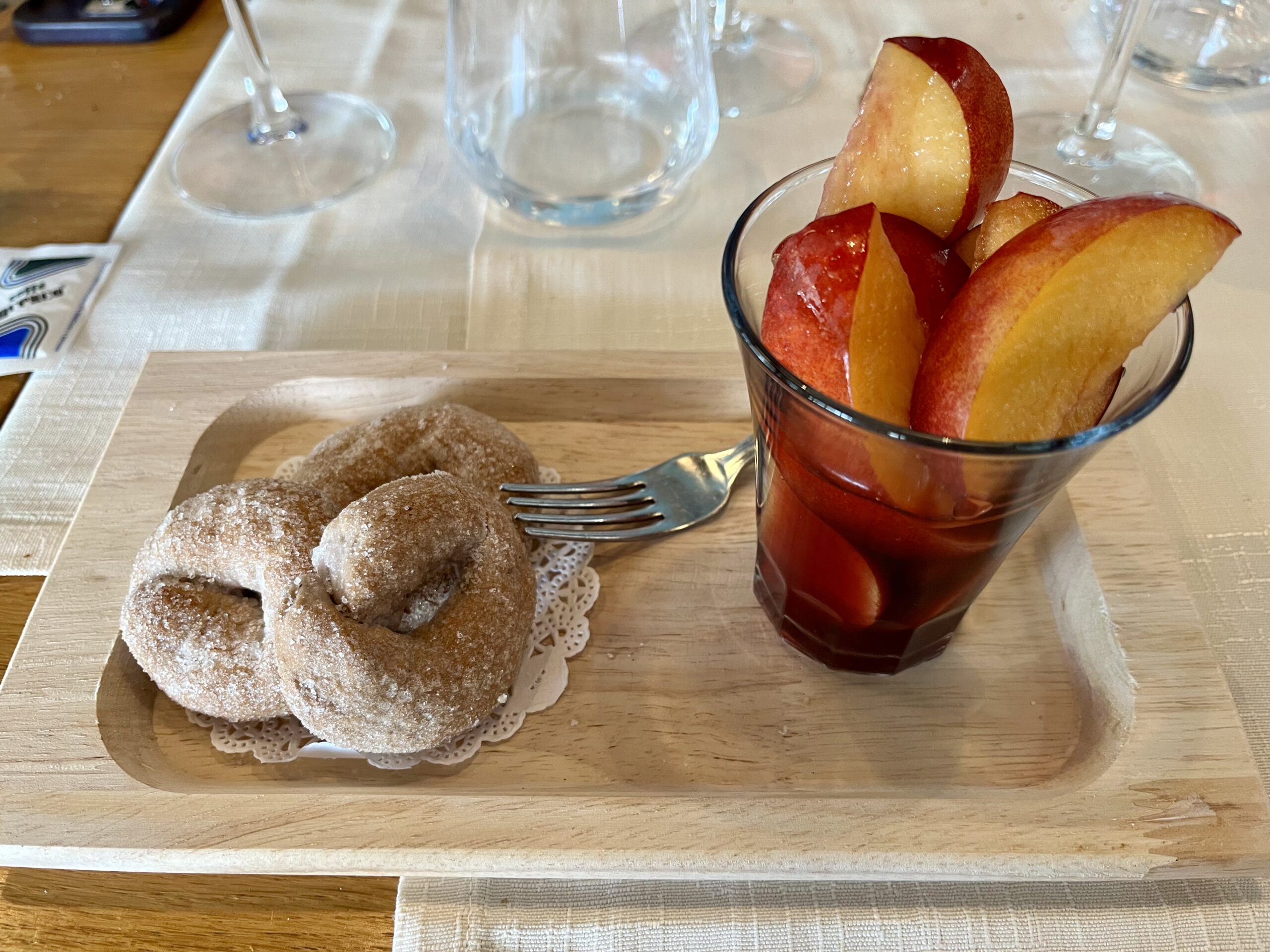
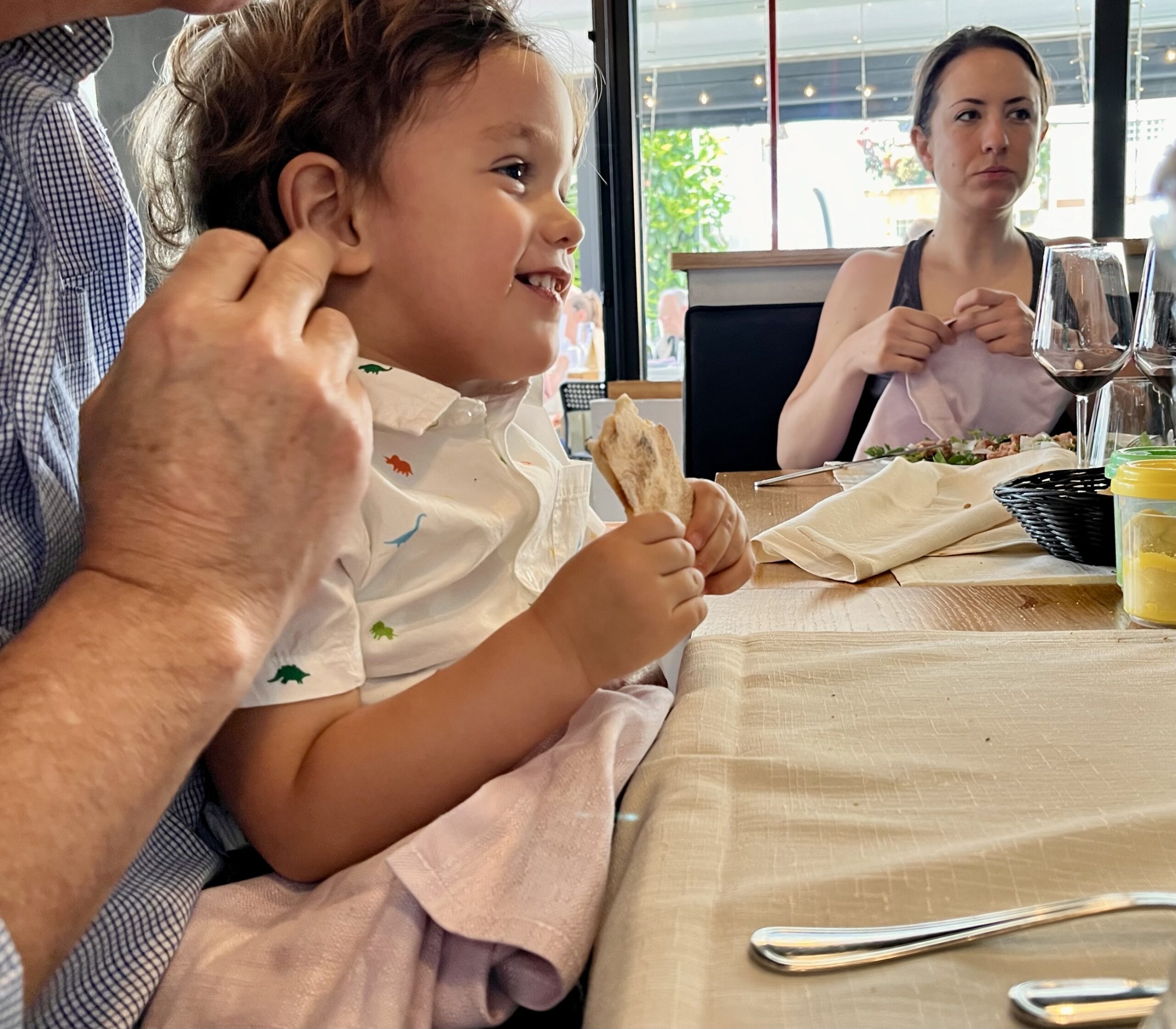
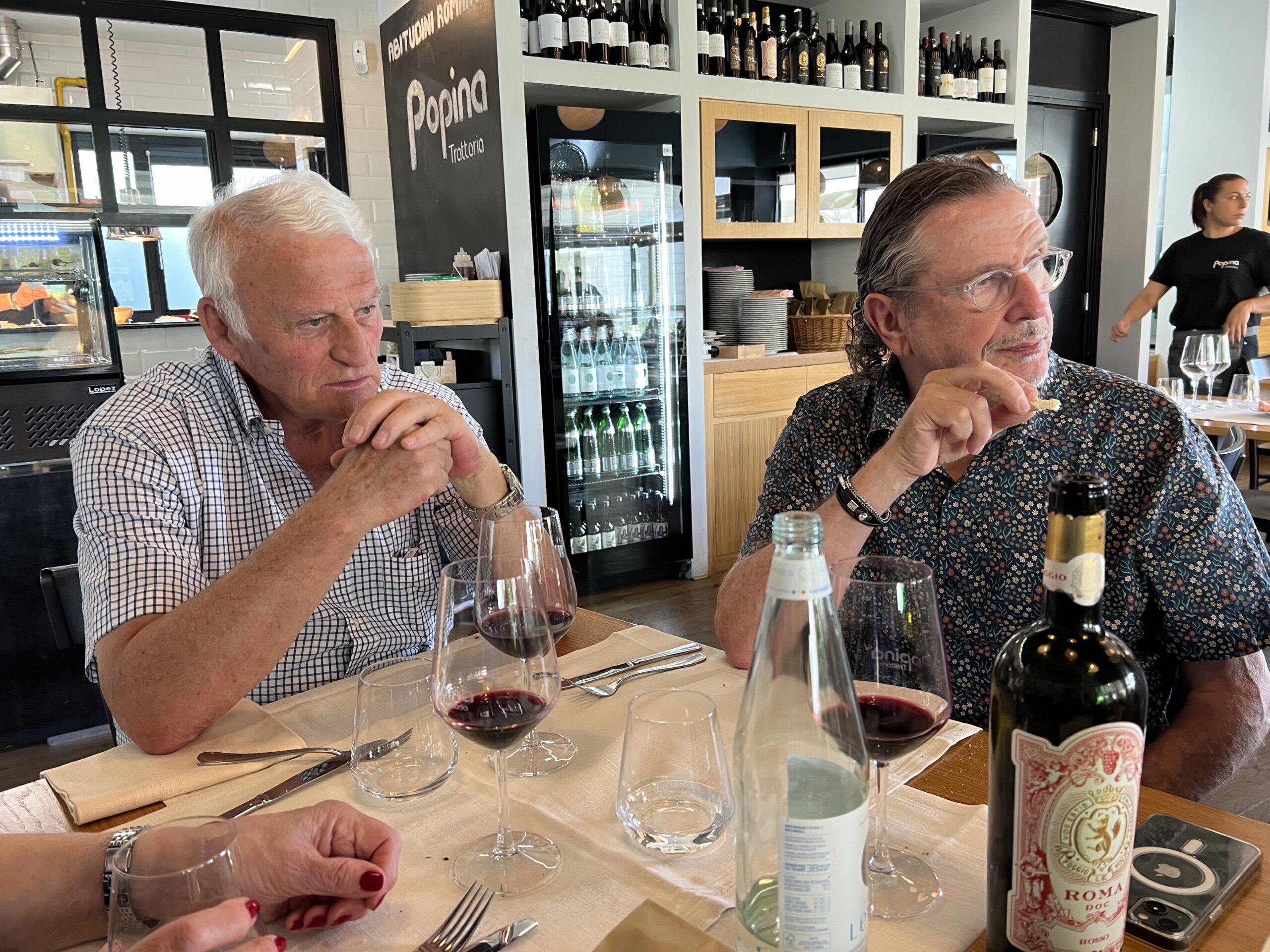
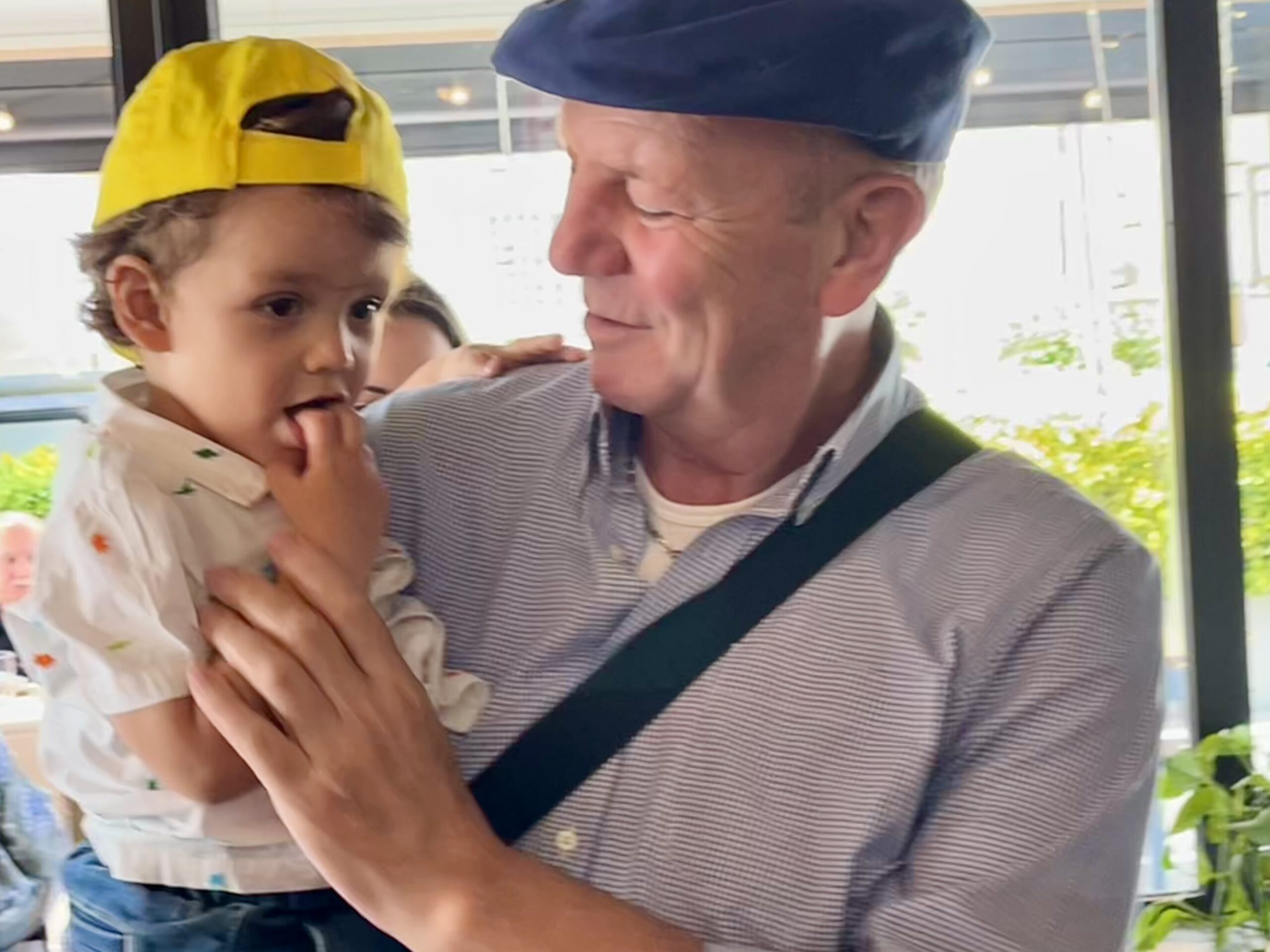
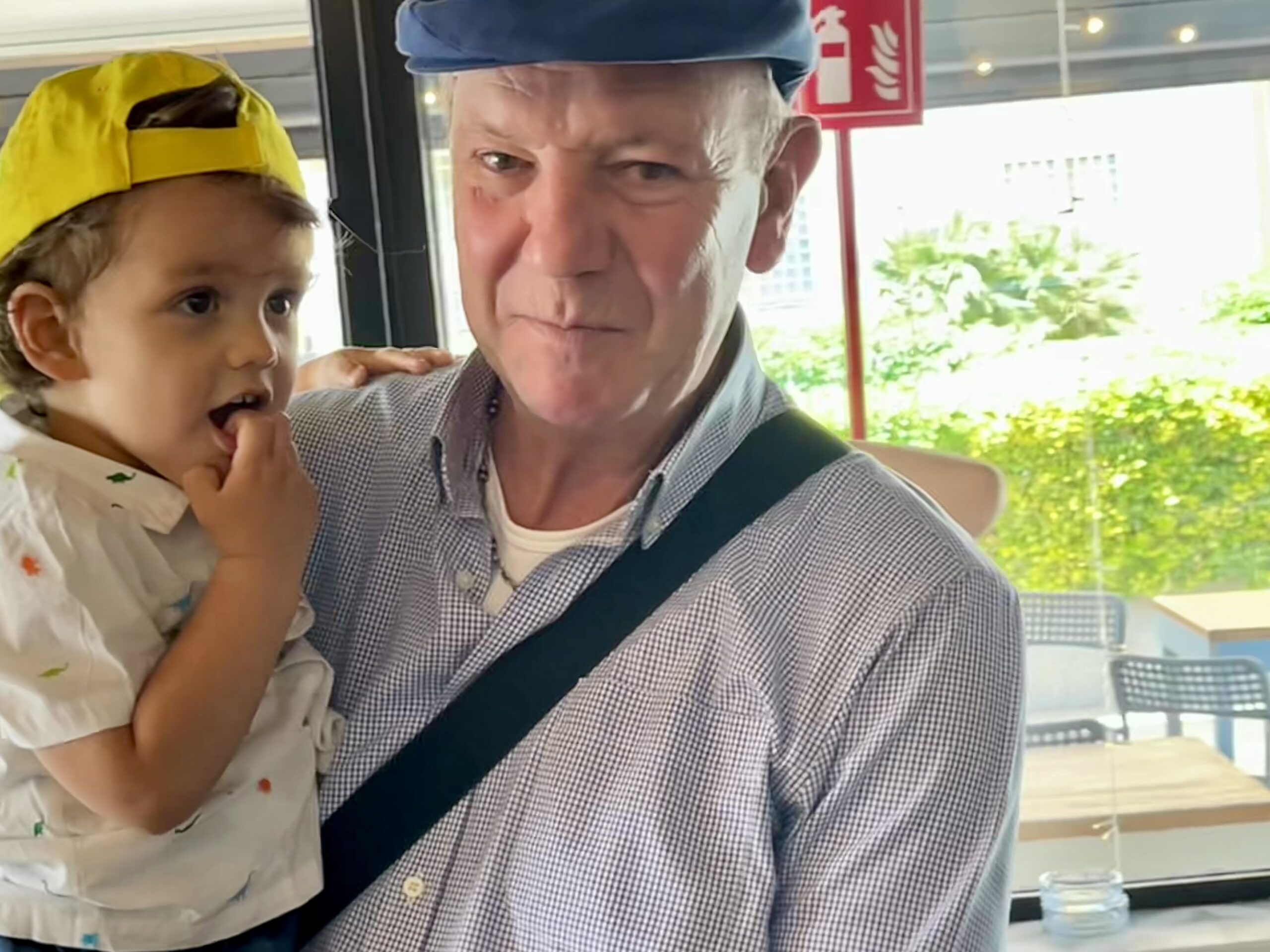
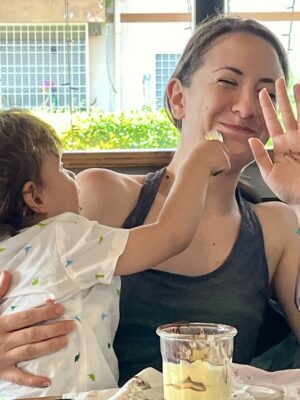
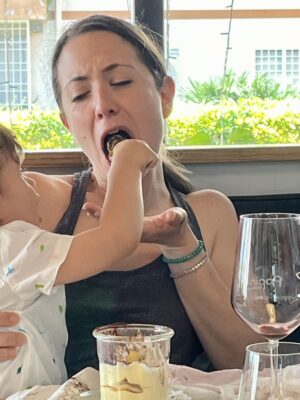
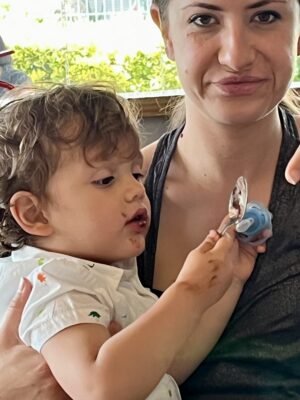
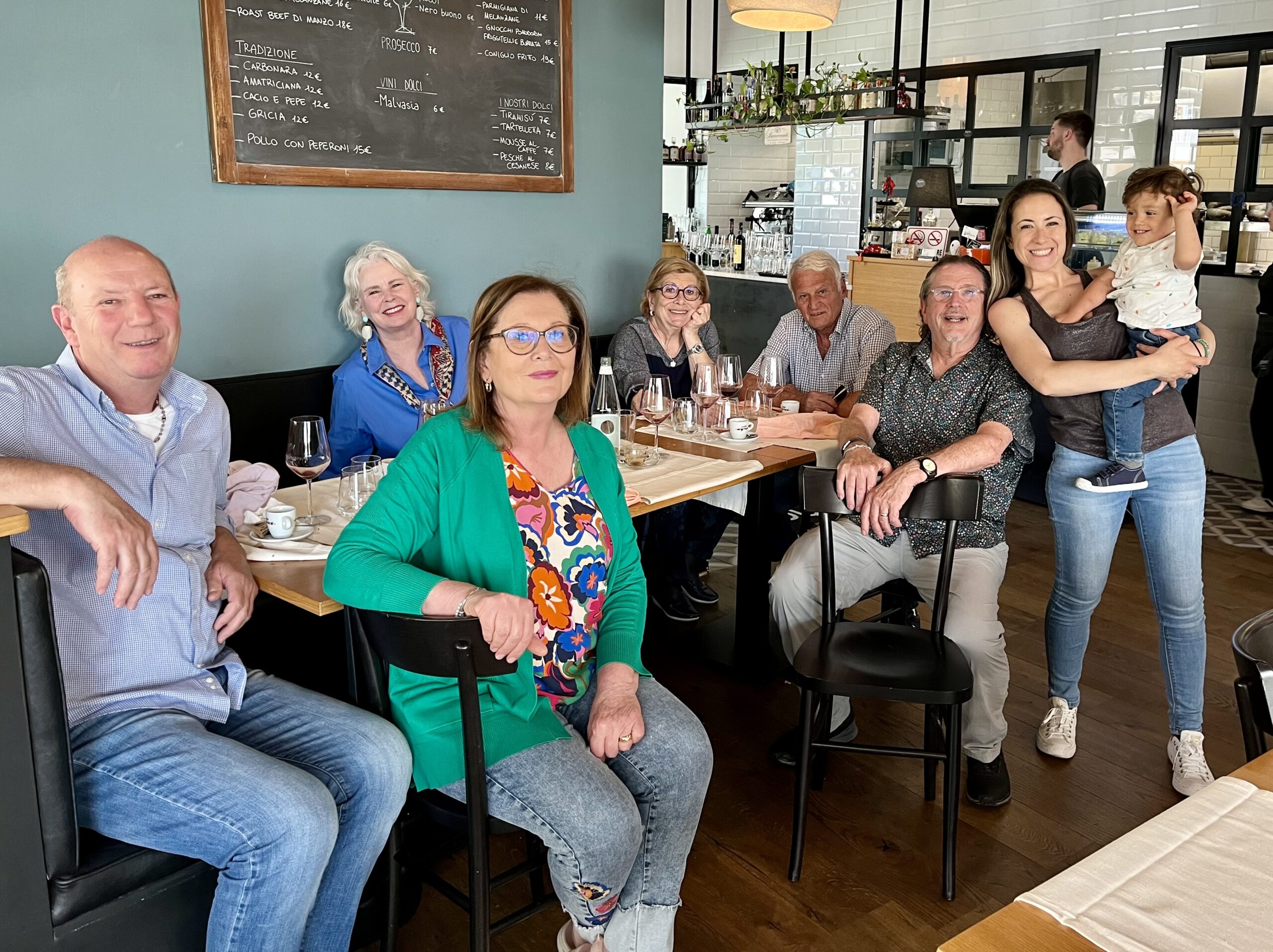
Parish Celebration
Montesacro, where Luciana and Adriana live, was first constructed on the northern edge of Rome in 1924 as a garden city, with small villas in a landscape setting. The small civic center includes the city hall and the parish church. While we were there, the church celebrated its 100th anniversary with a Saturday night dinner in the street and a live band. Layers of colorful street lights made the occasion especially festive.
The local parishioners sold tickets (color coded by the type of food) and served the food. Robert saw one young fellow use an electric knife to cut a sandwich. When Robert told him that the last time he saw an electric knife was in the late 1960s, the guy exclaimed that the knife was his grandmother’s, confirming the date!
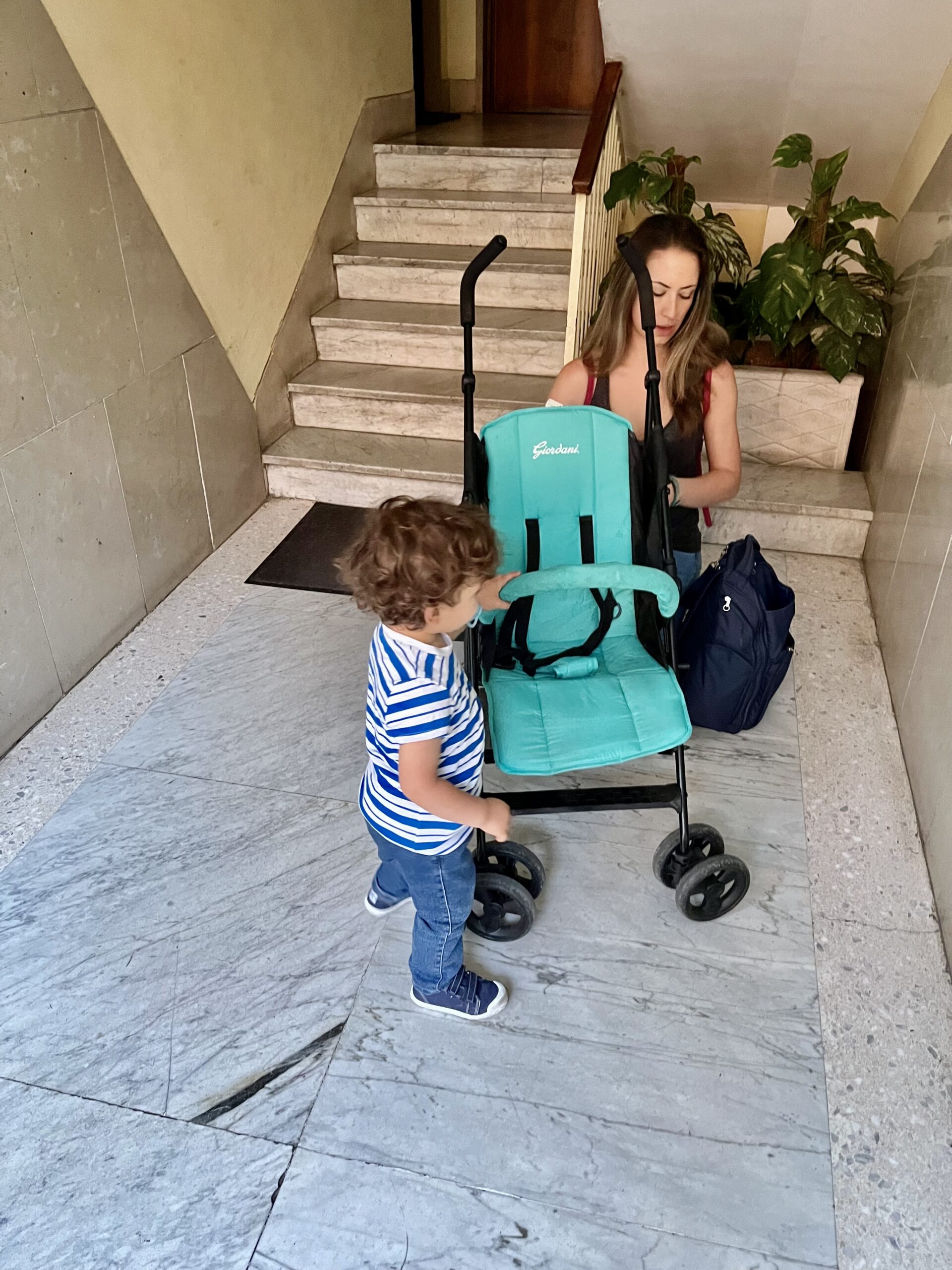
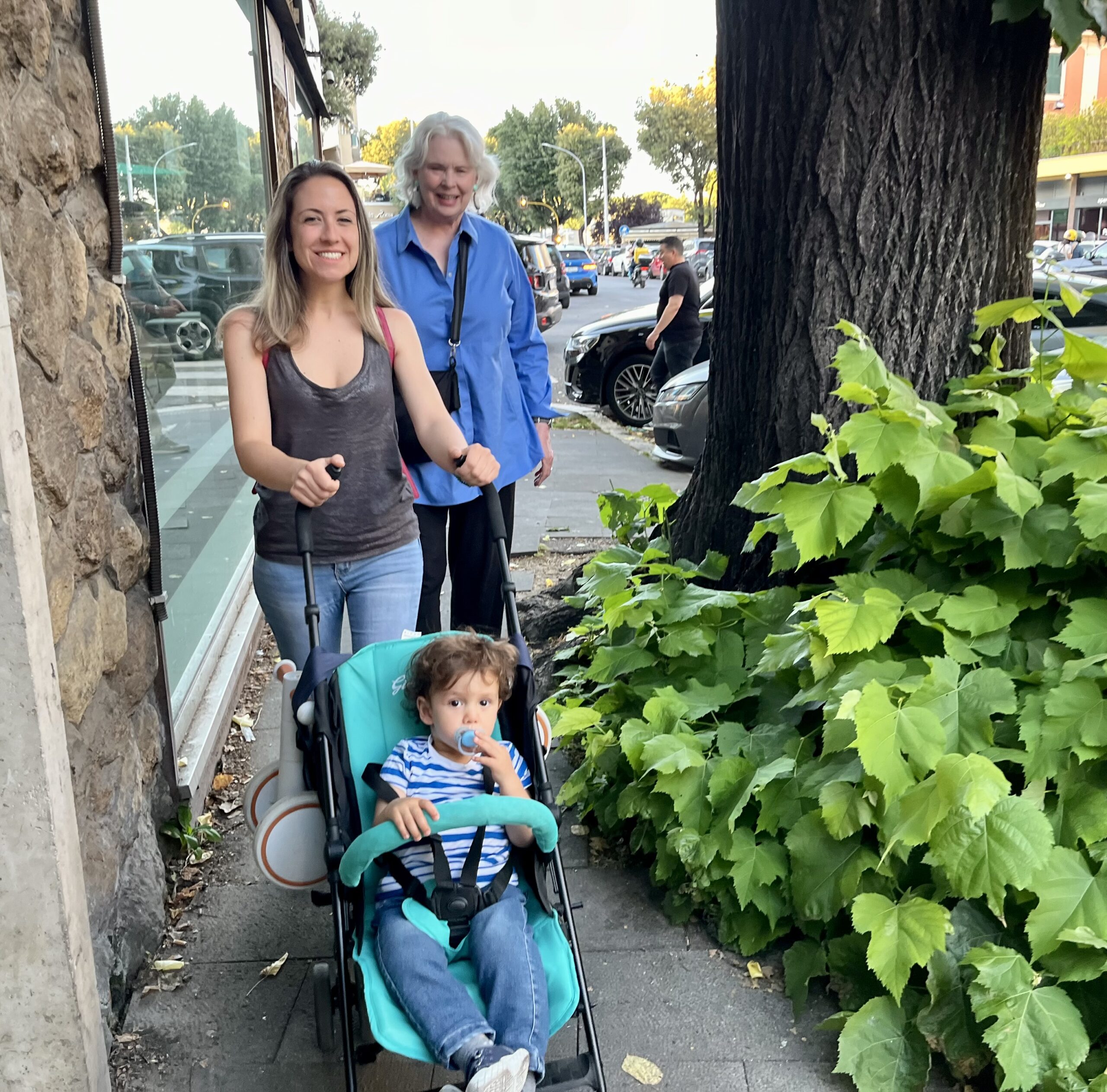

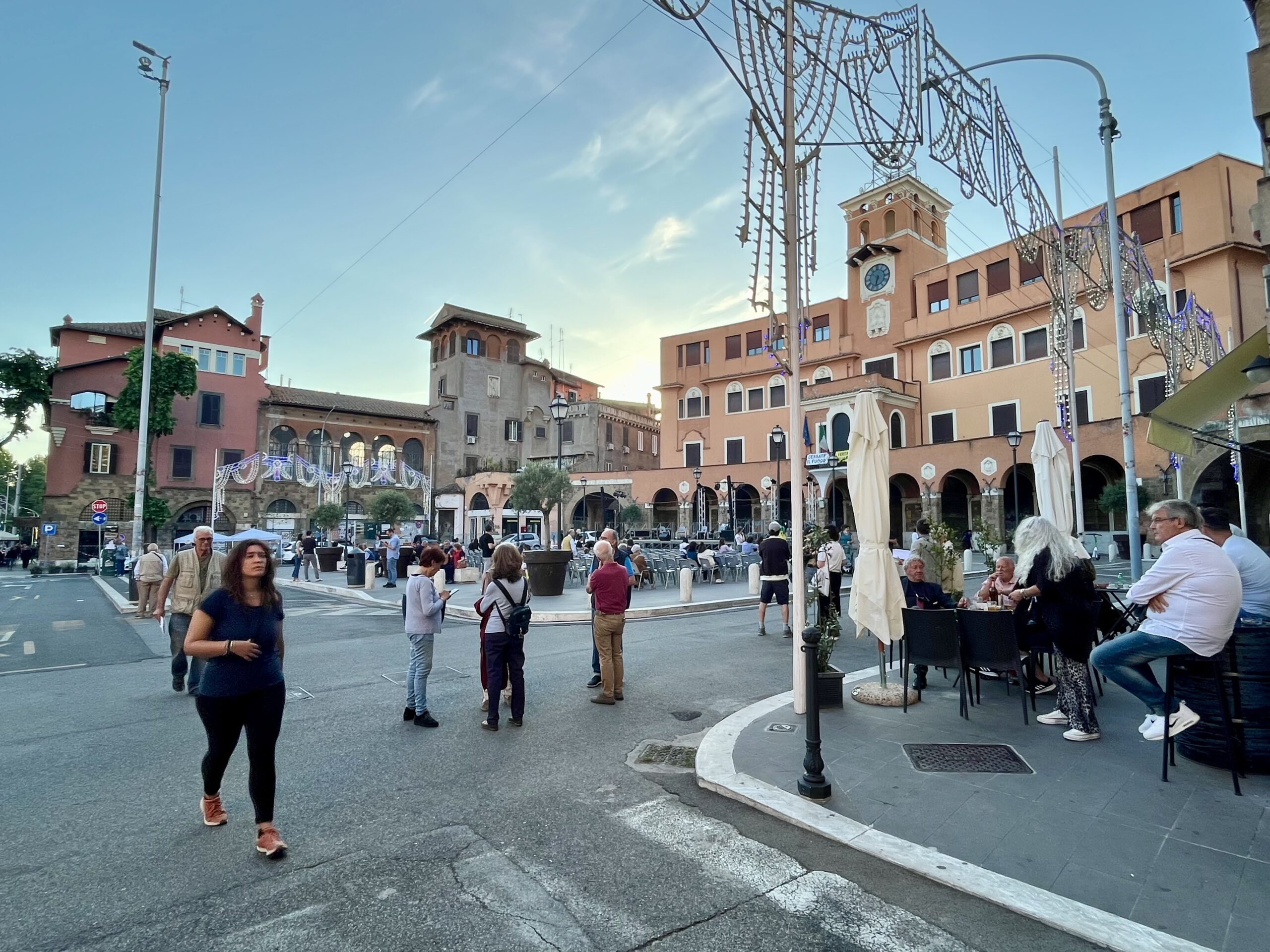
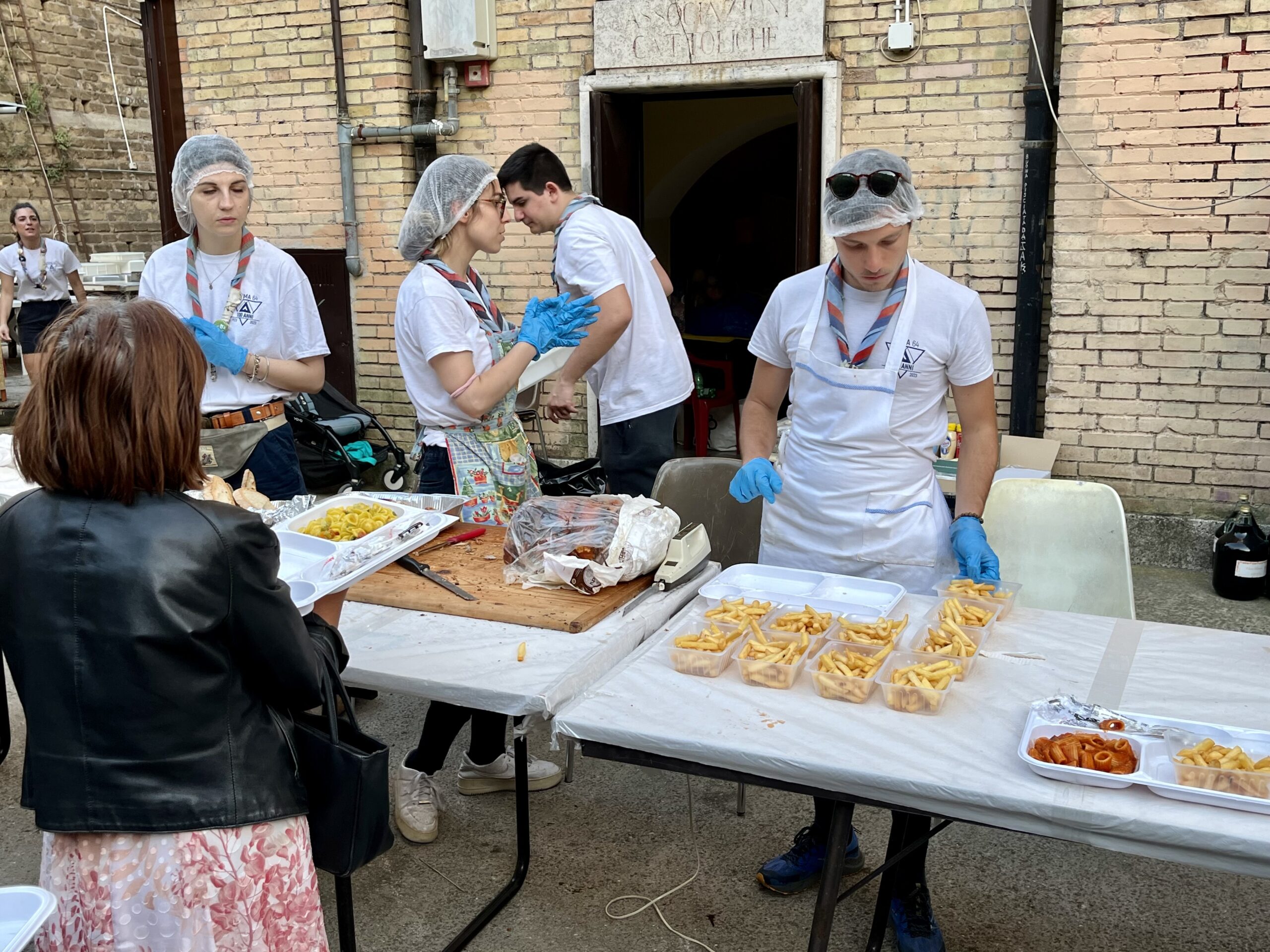
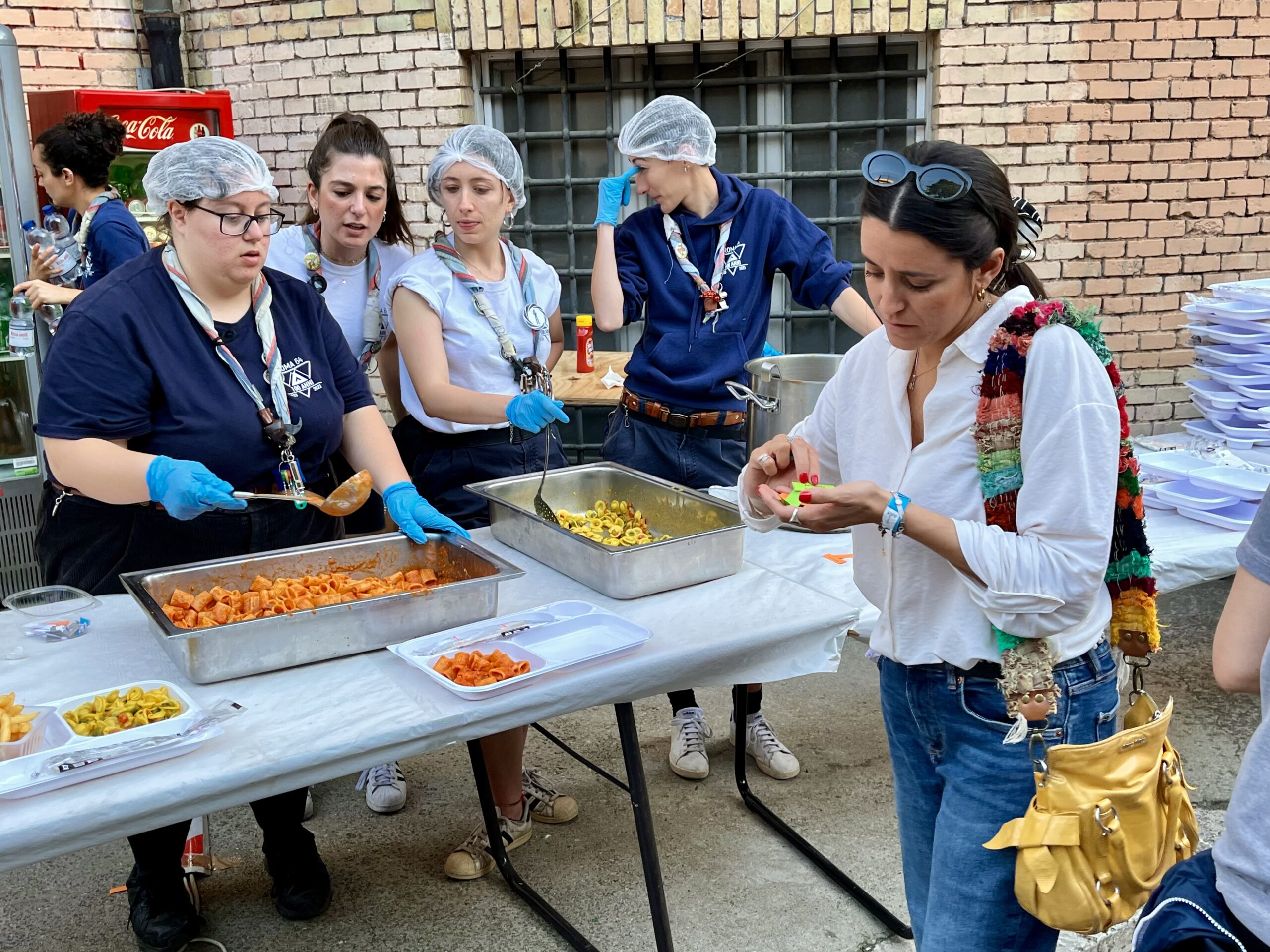
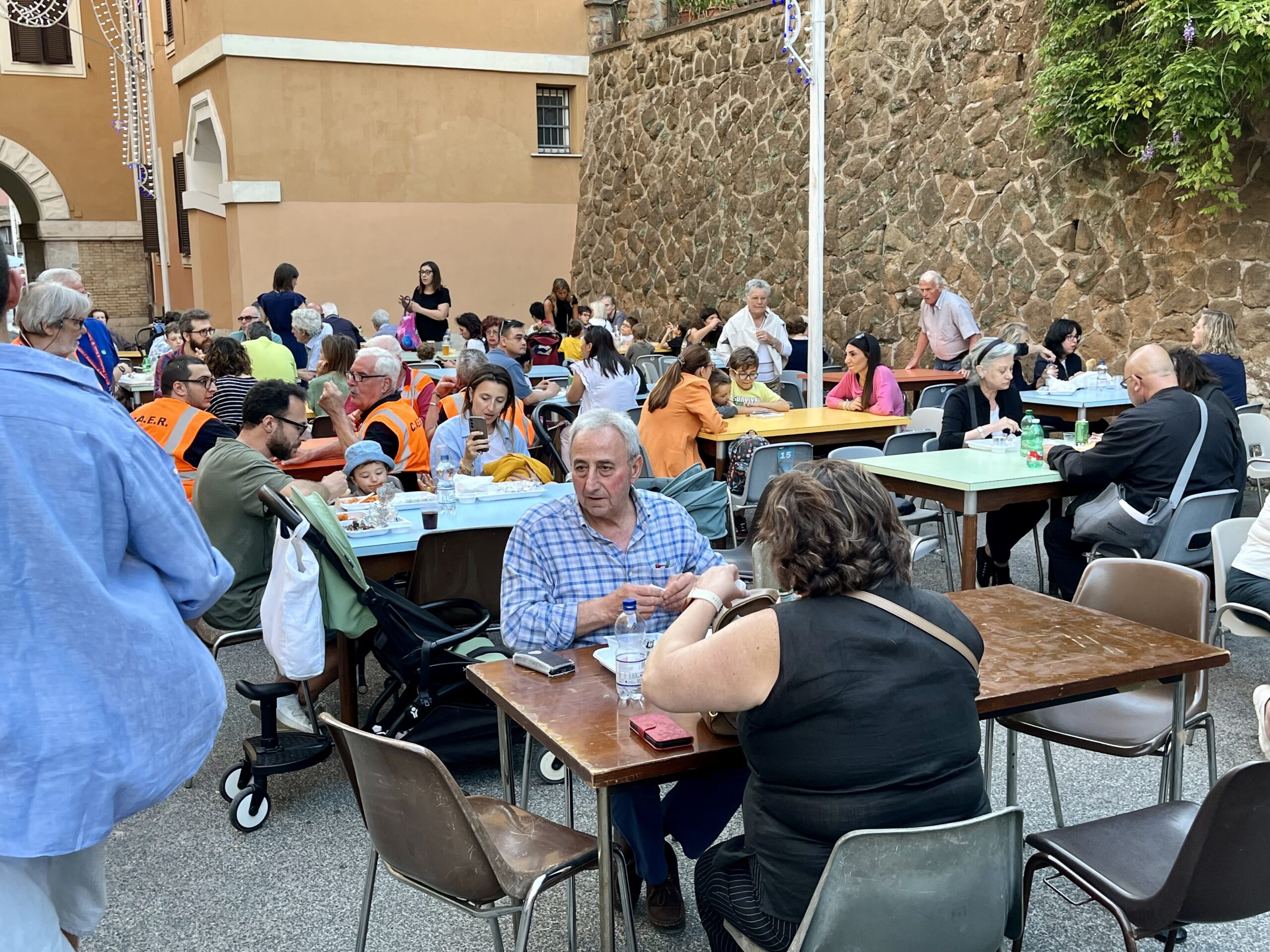
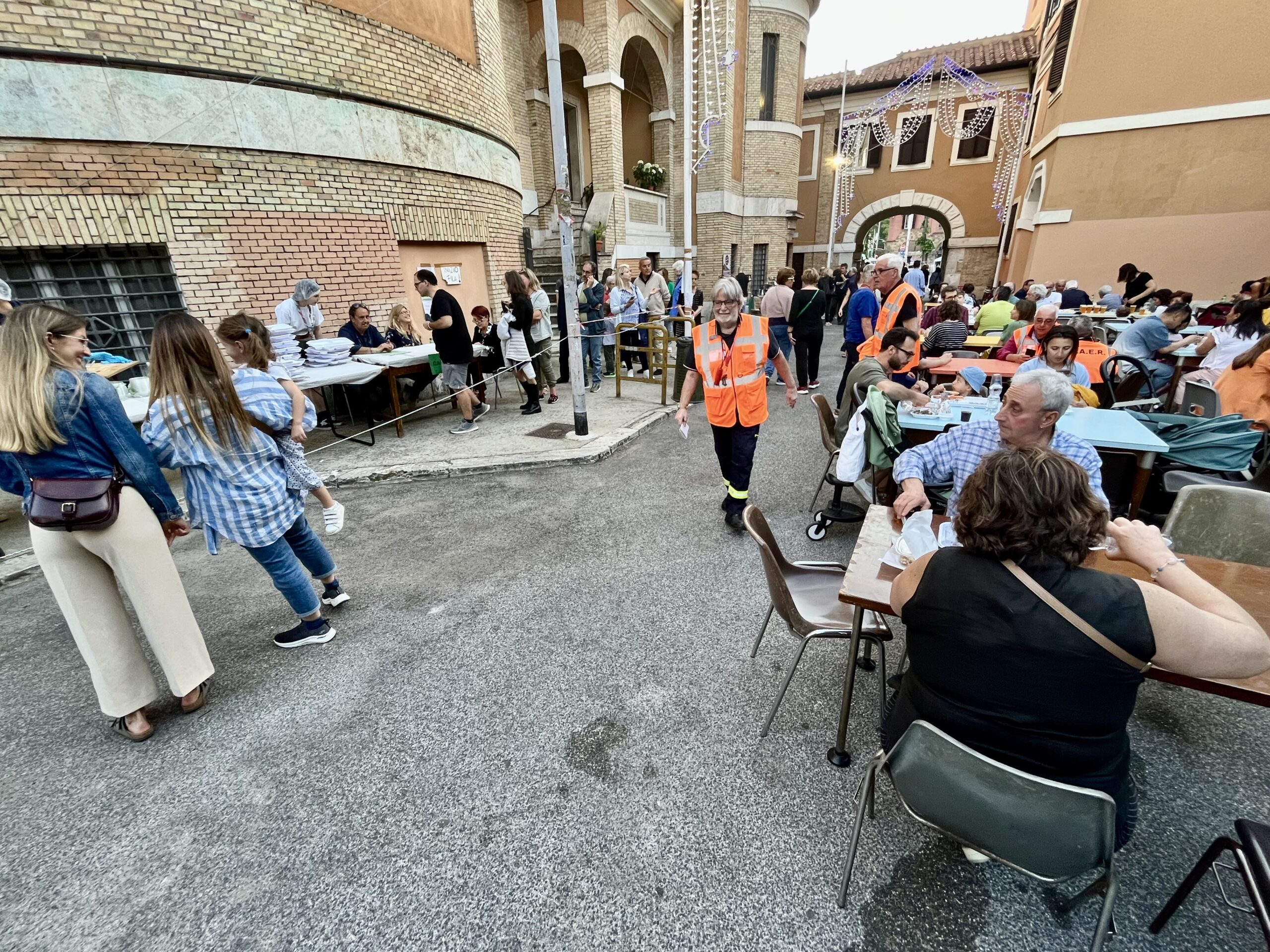

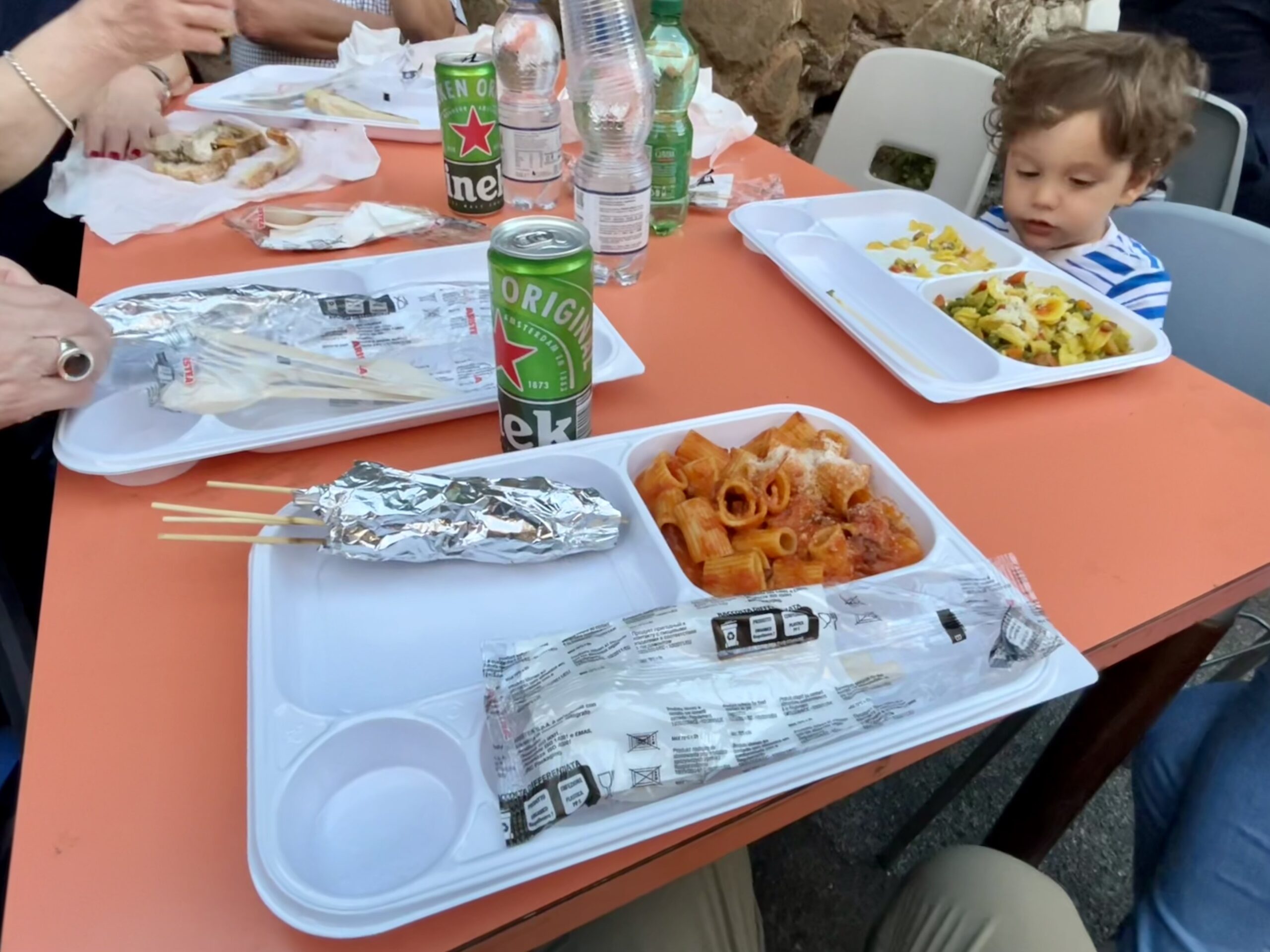
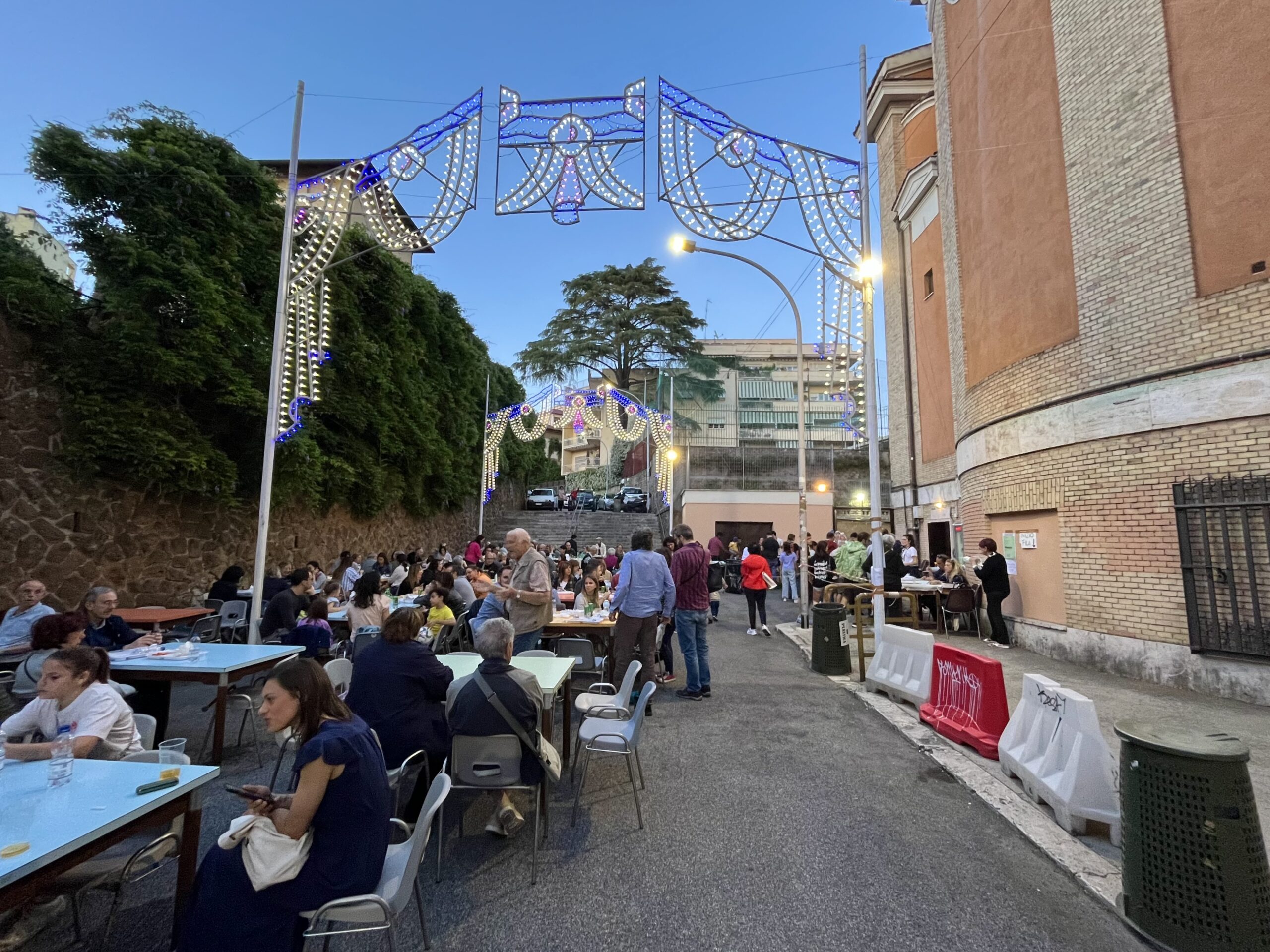
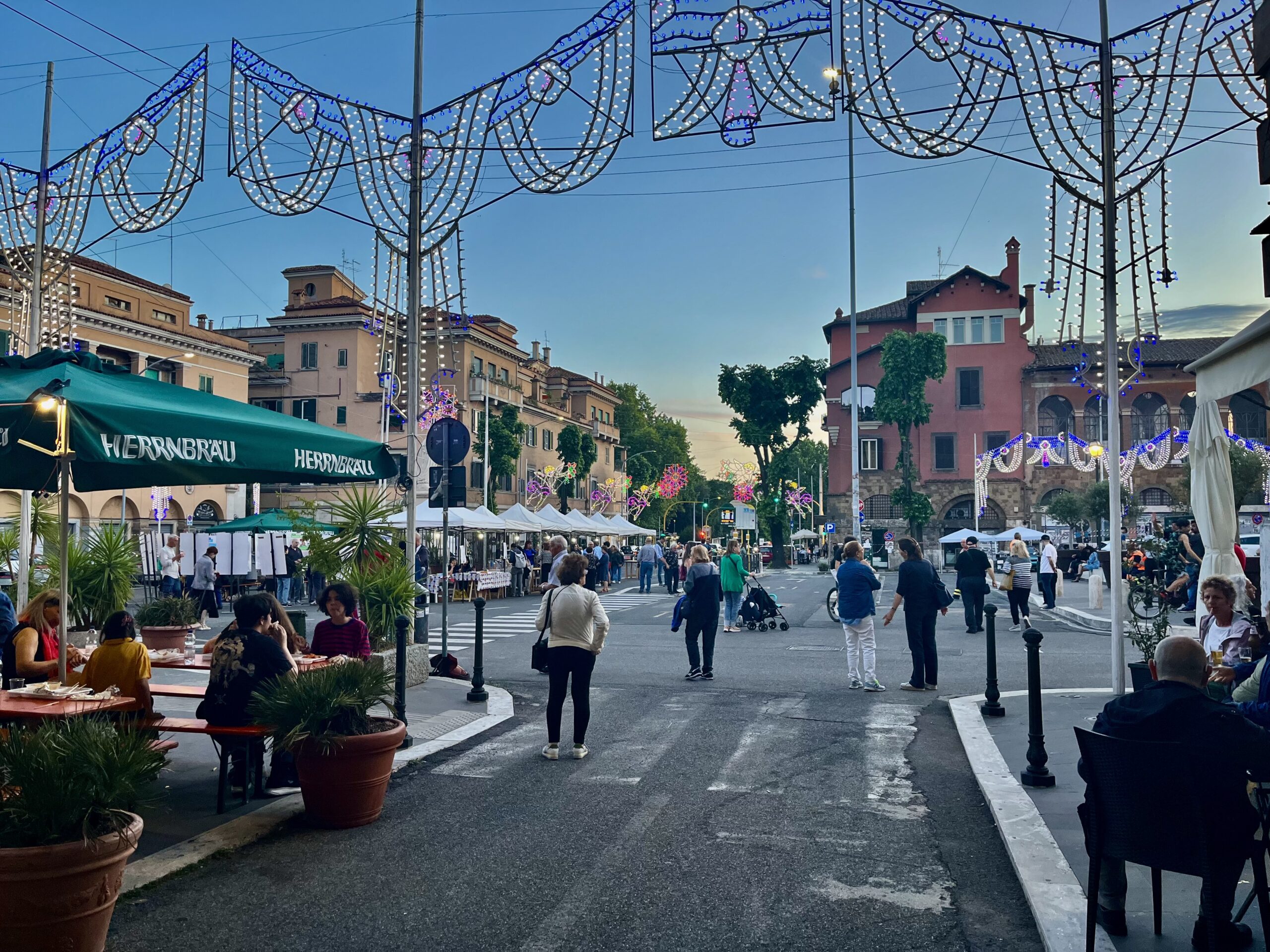
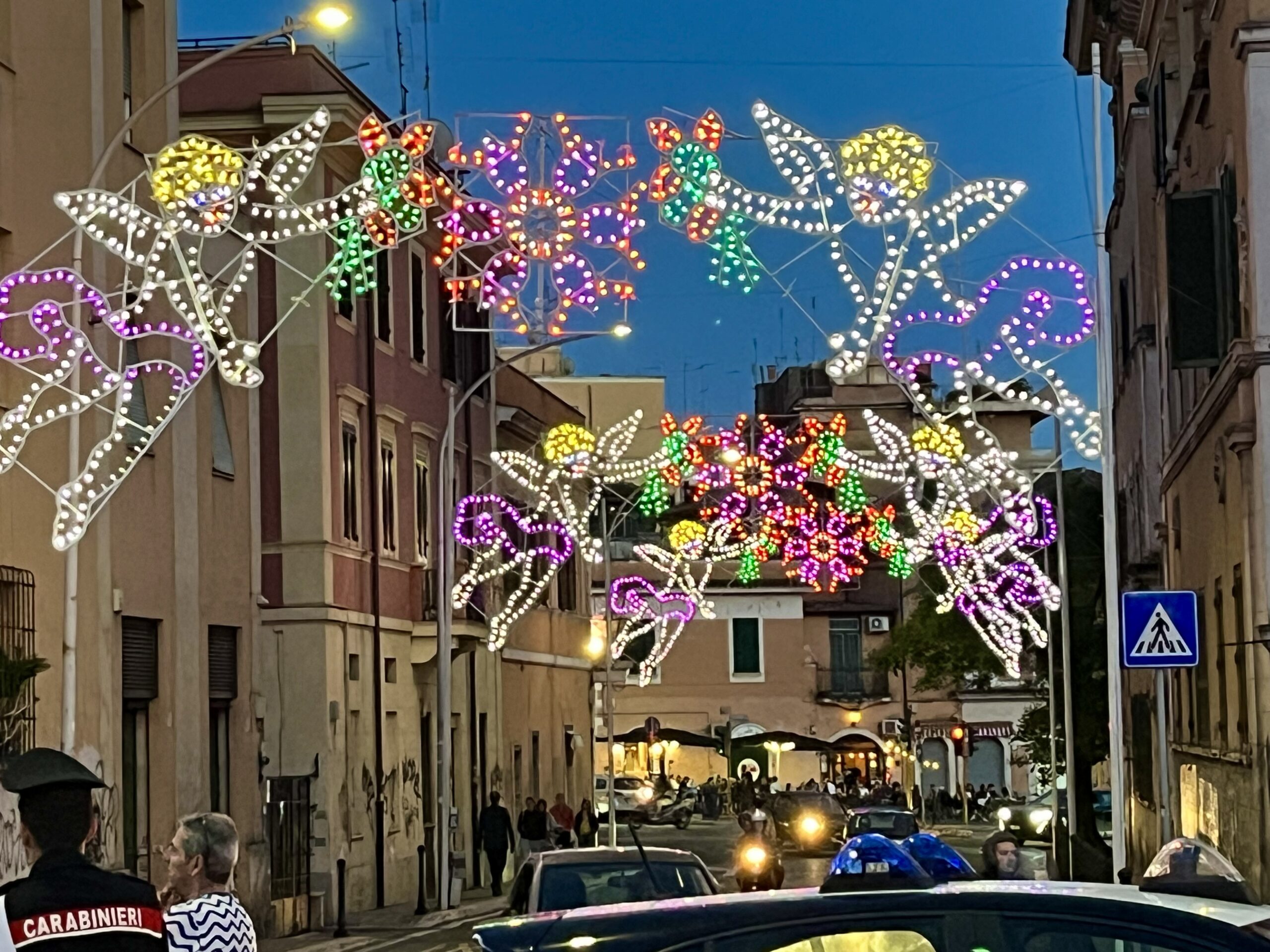
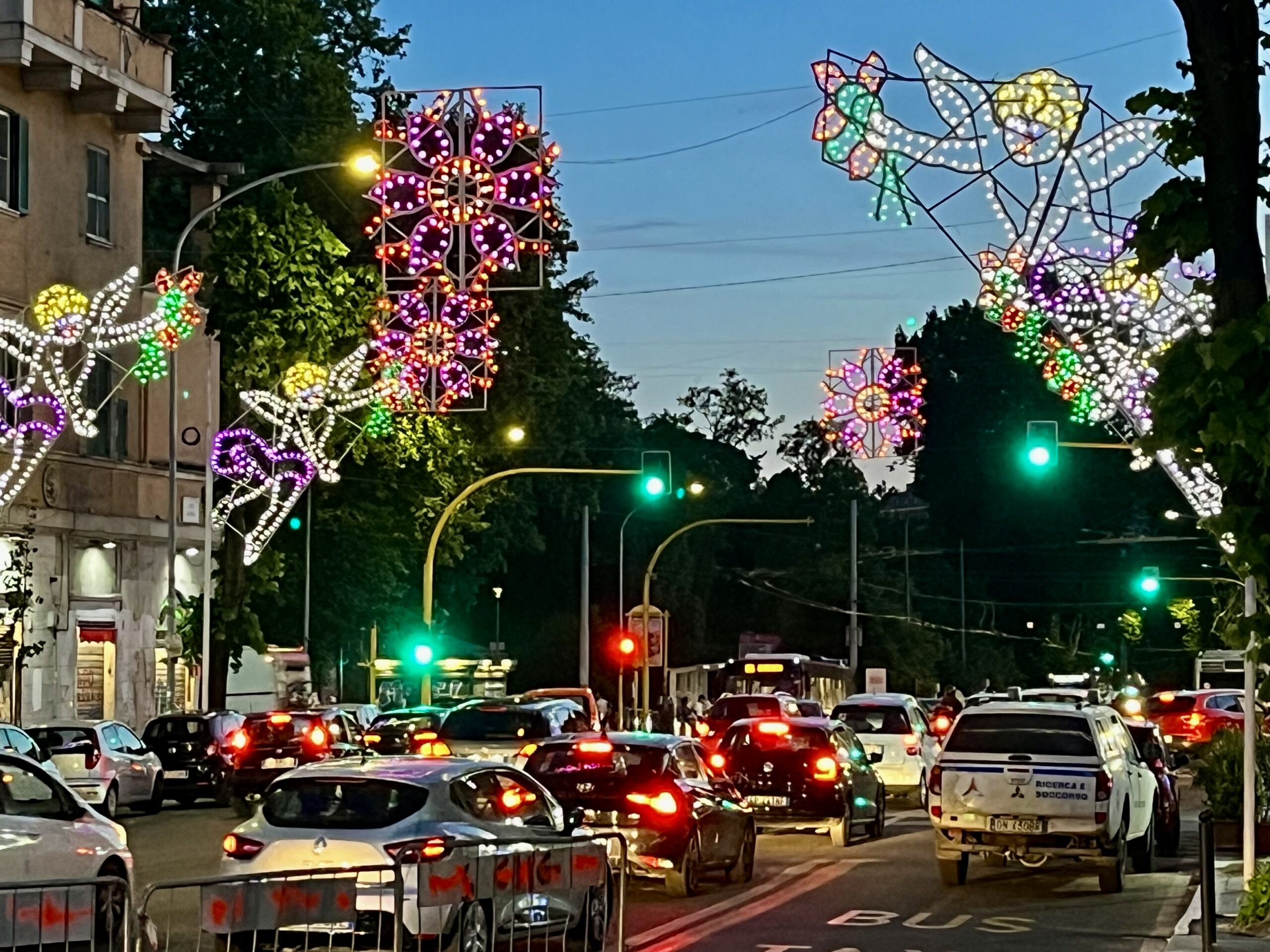
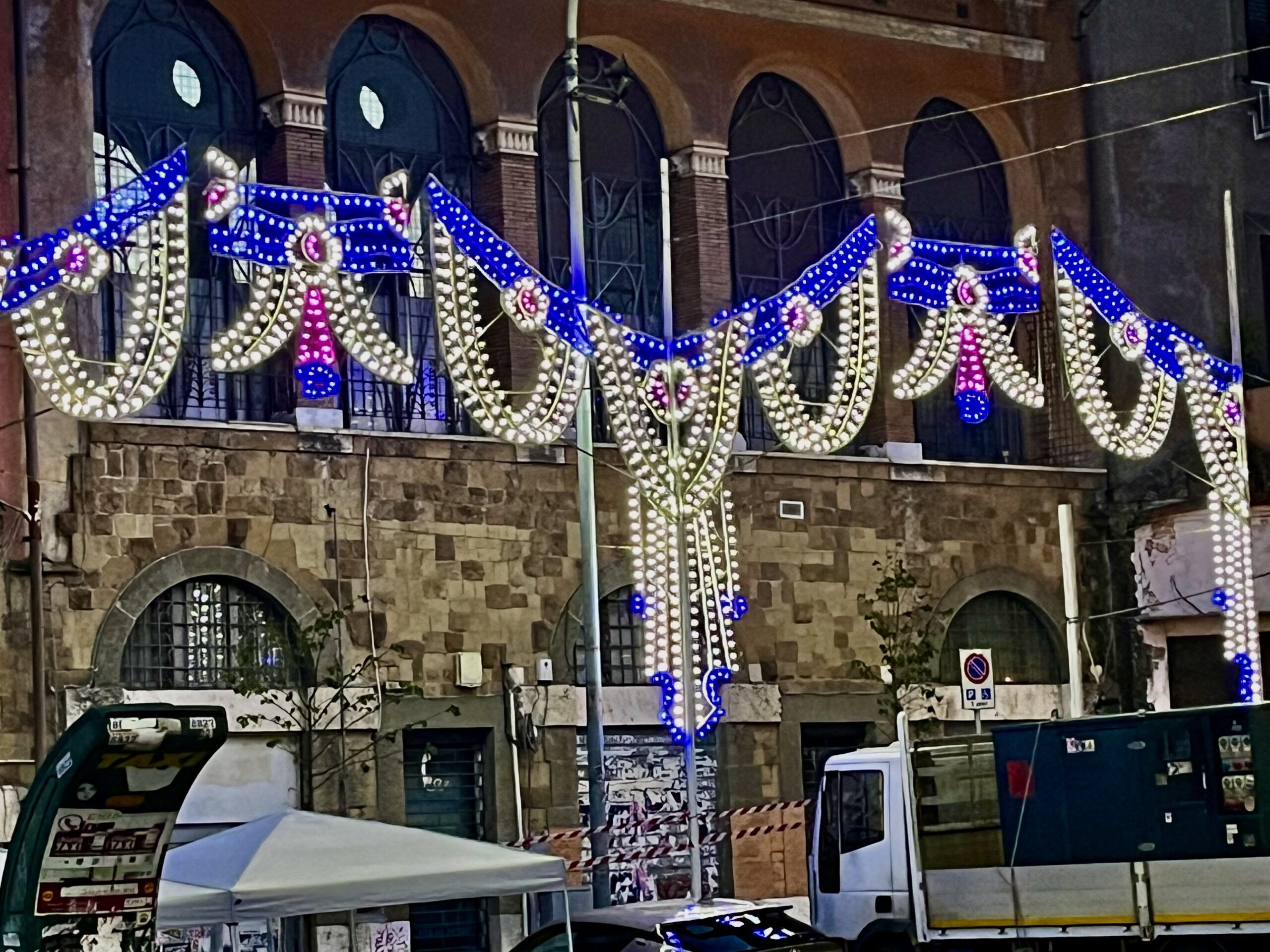
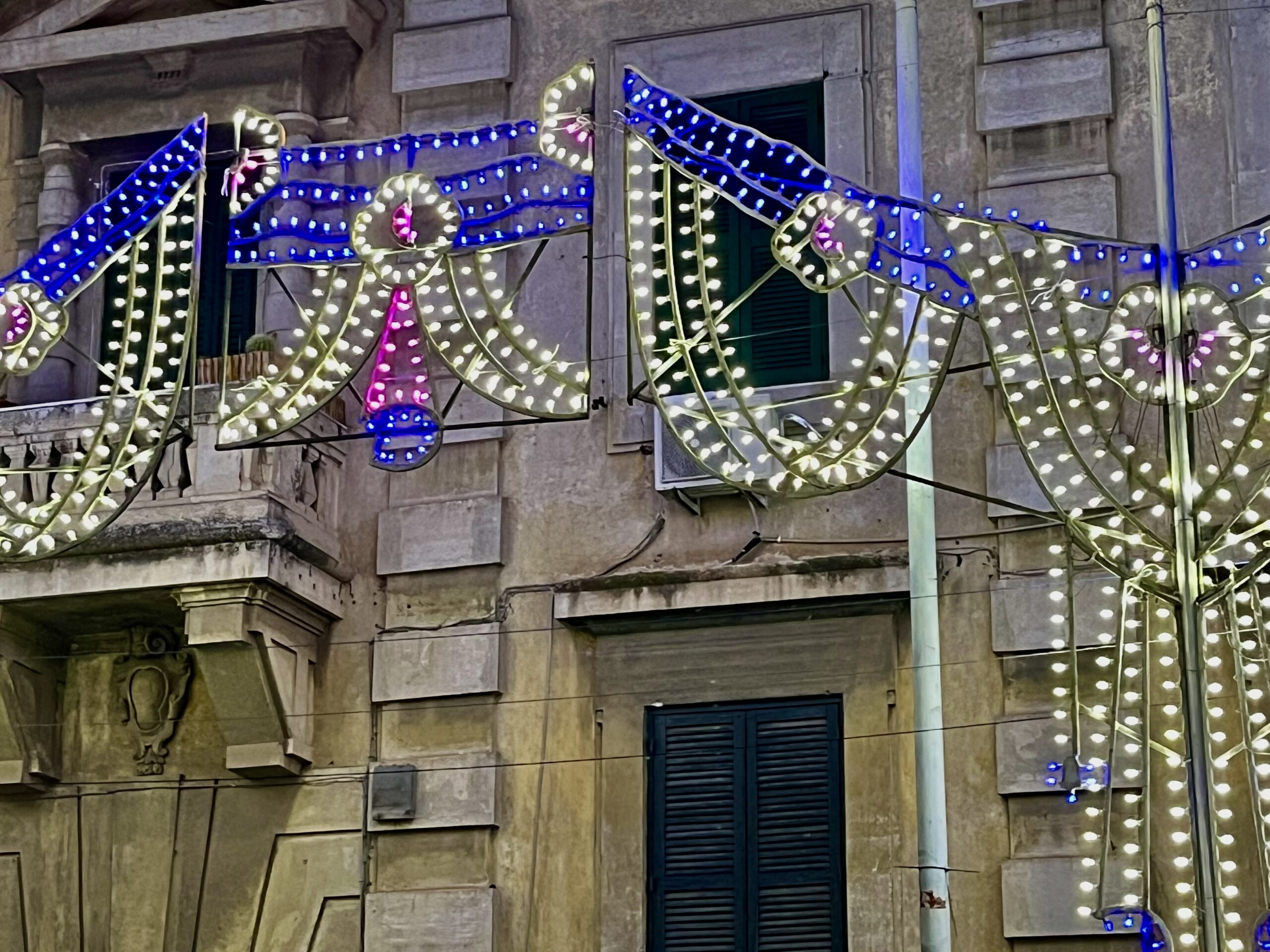
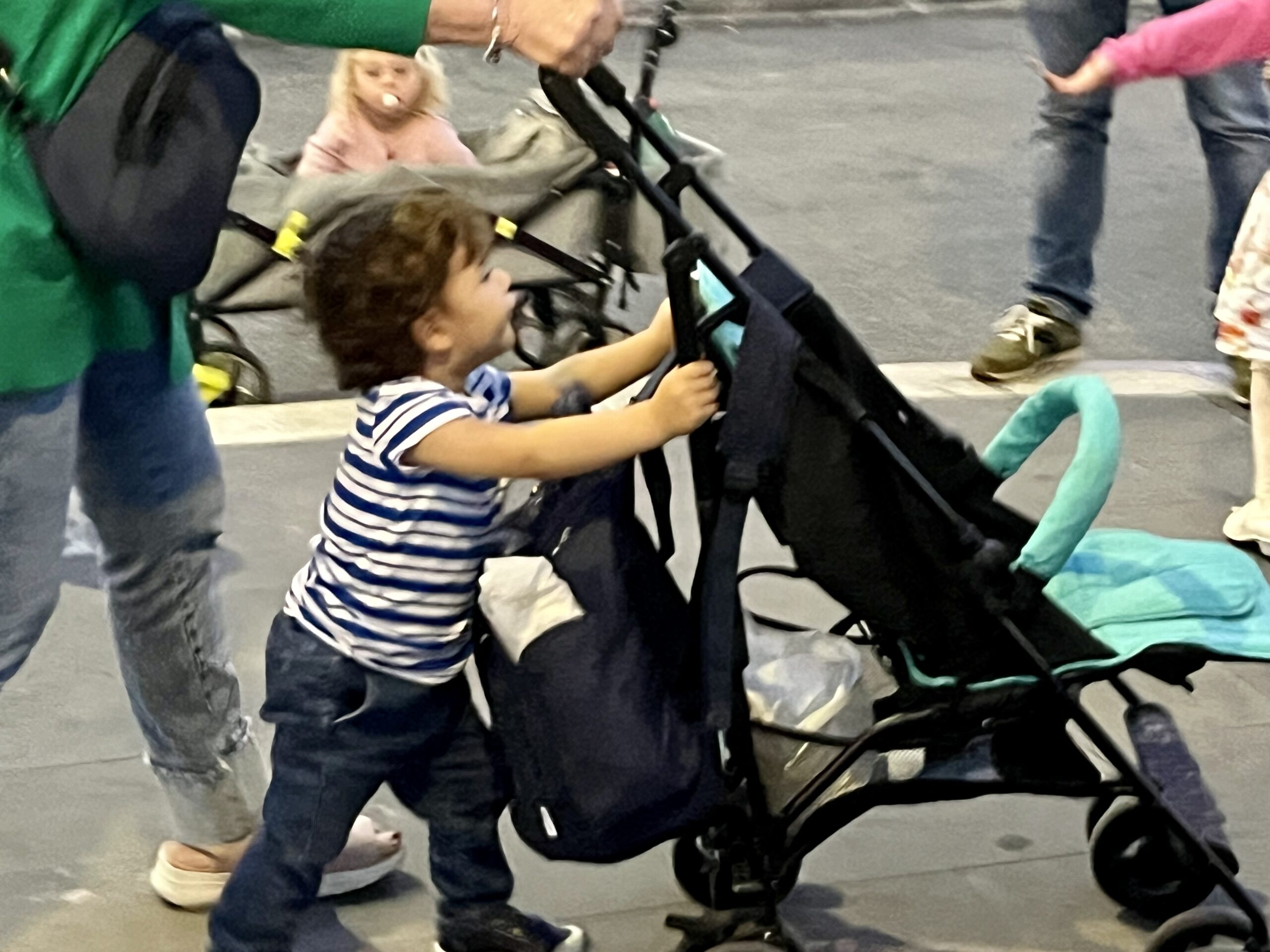
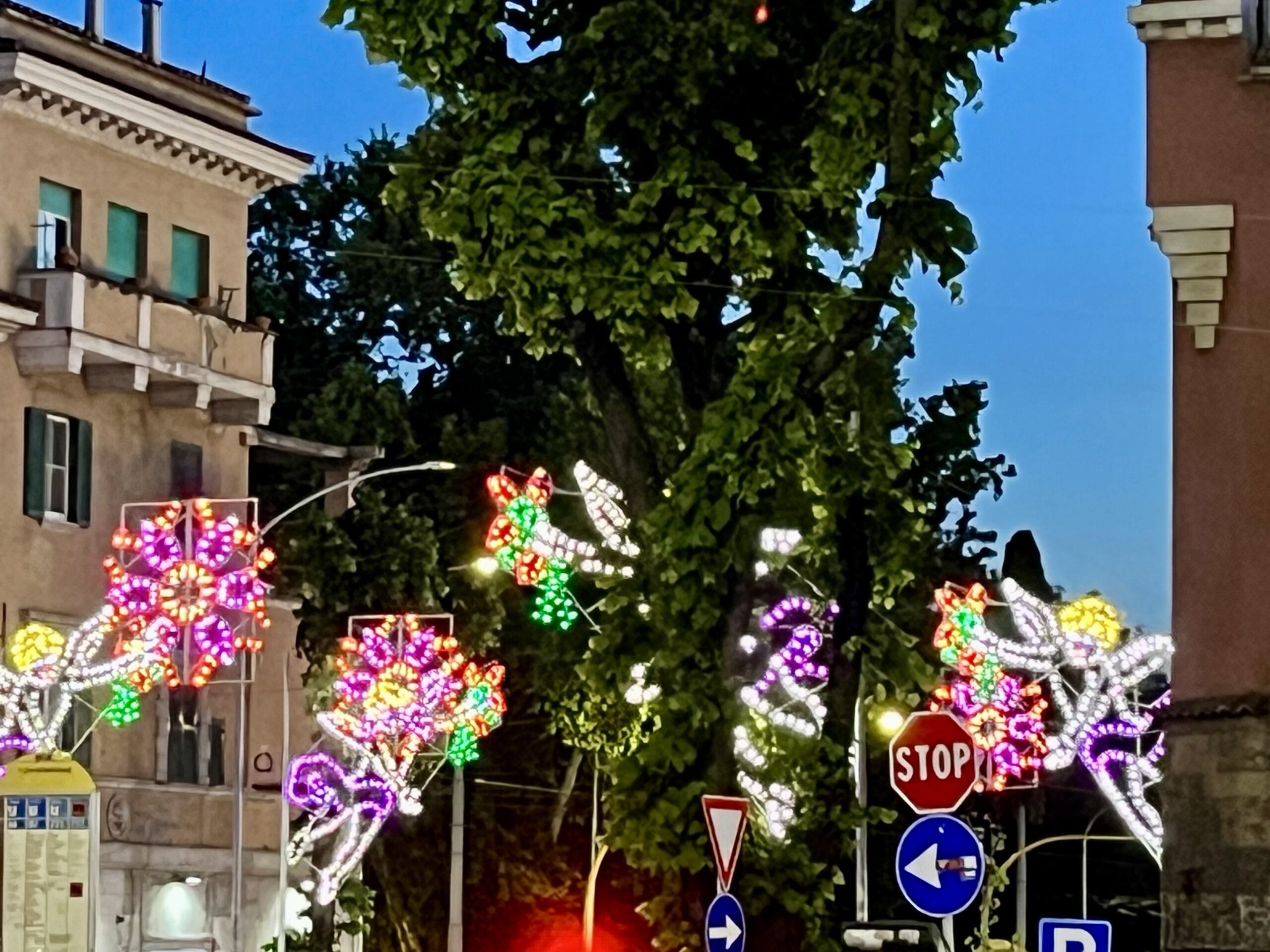
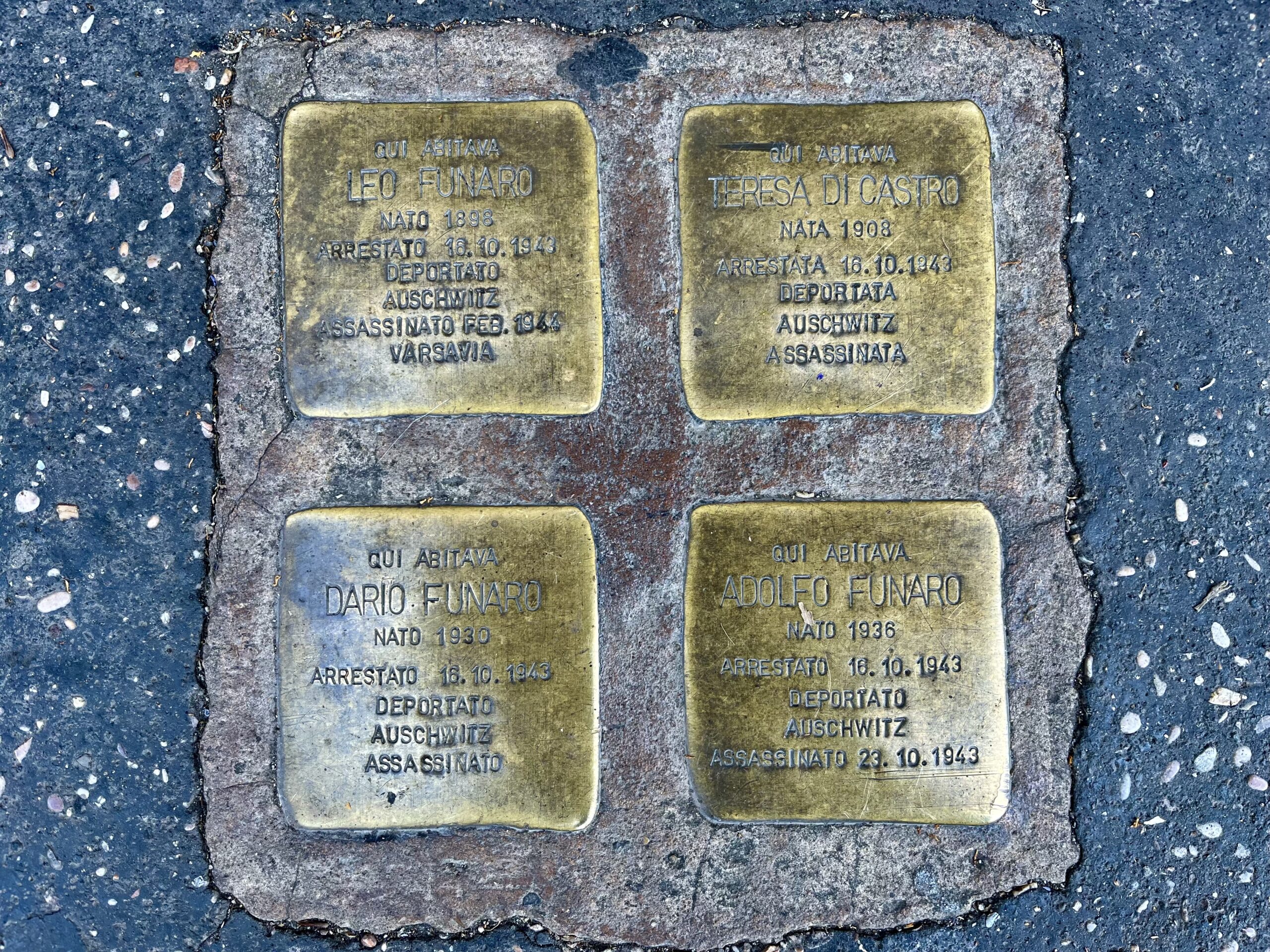
A reminder of Nazi atrocities
Excursions with Luciana
Luciana planned a walking excursion for the three of us that skirted the massive crowds in the center of Rome. Our first stop was the Roseto Comunale, a rose garden, near the Circus Maximus, which is open only one month a year. Rome’s rose garden contains historic varieties as well as winners of a competition held each year. Unlike the rose garden in Golden Gate Park where multiples of one variety crowd the same rose bed, here only a single example of each rose bush is on display. While slightly past peak, the remaining blooms were lovely.
A ten-minute walk up the Aventine hill brought us to the Parco Savello-Giardini degli Aranci, filled with orange trees under a canopy of pines. Walking across the park brings you to a panoramic overlook of Rome.
Next to the park, the early Basilica of Saint Sabina at the Aventine, retains its original colonnaded rectangular plan and interior simplicity, after undergoing a restoration that removed ornate additions applied over the centuries. This church is a clear example of how early Christian churches adapted the architecture of the Roman roofed forum or basilica, a two-story rectangular box. Something Bonnie had only seen in classes in architecture history. Sometimes, less is more.
Next we stepped into the Basilica dei Santi Bonifacio e Alessio founded between the third and fourth centuries with a significant restoration in the early 1200s. Of course, additional improvements went on for centuries.
We found a nice place for lunch in the Testaccio with air conditioning for us and the rest of Rome since they leave their doors wide open. We took a subway and a bus back to Montesacro, about a hour, for dinner with Adriana and Gino Secondo.
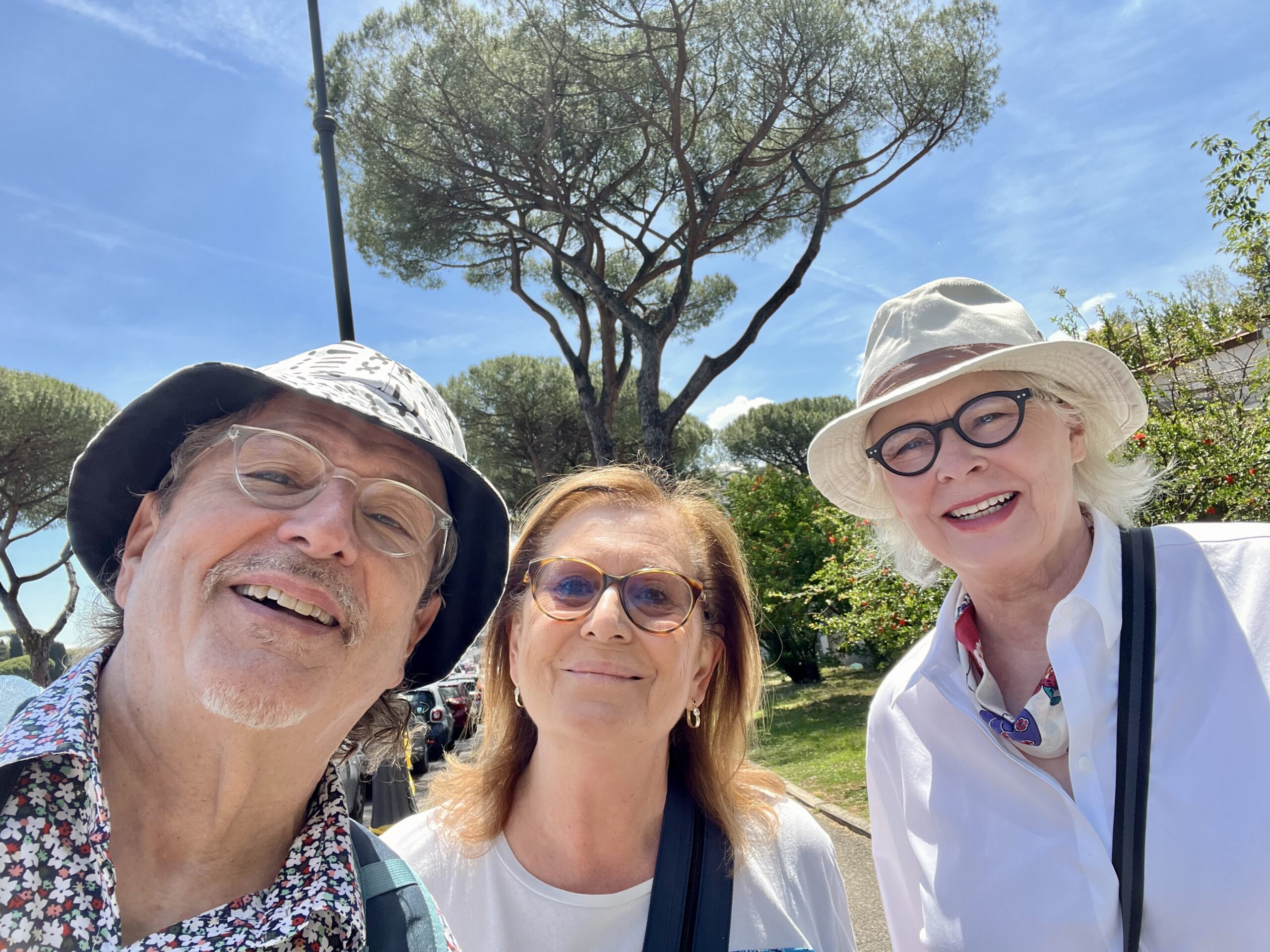
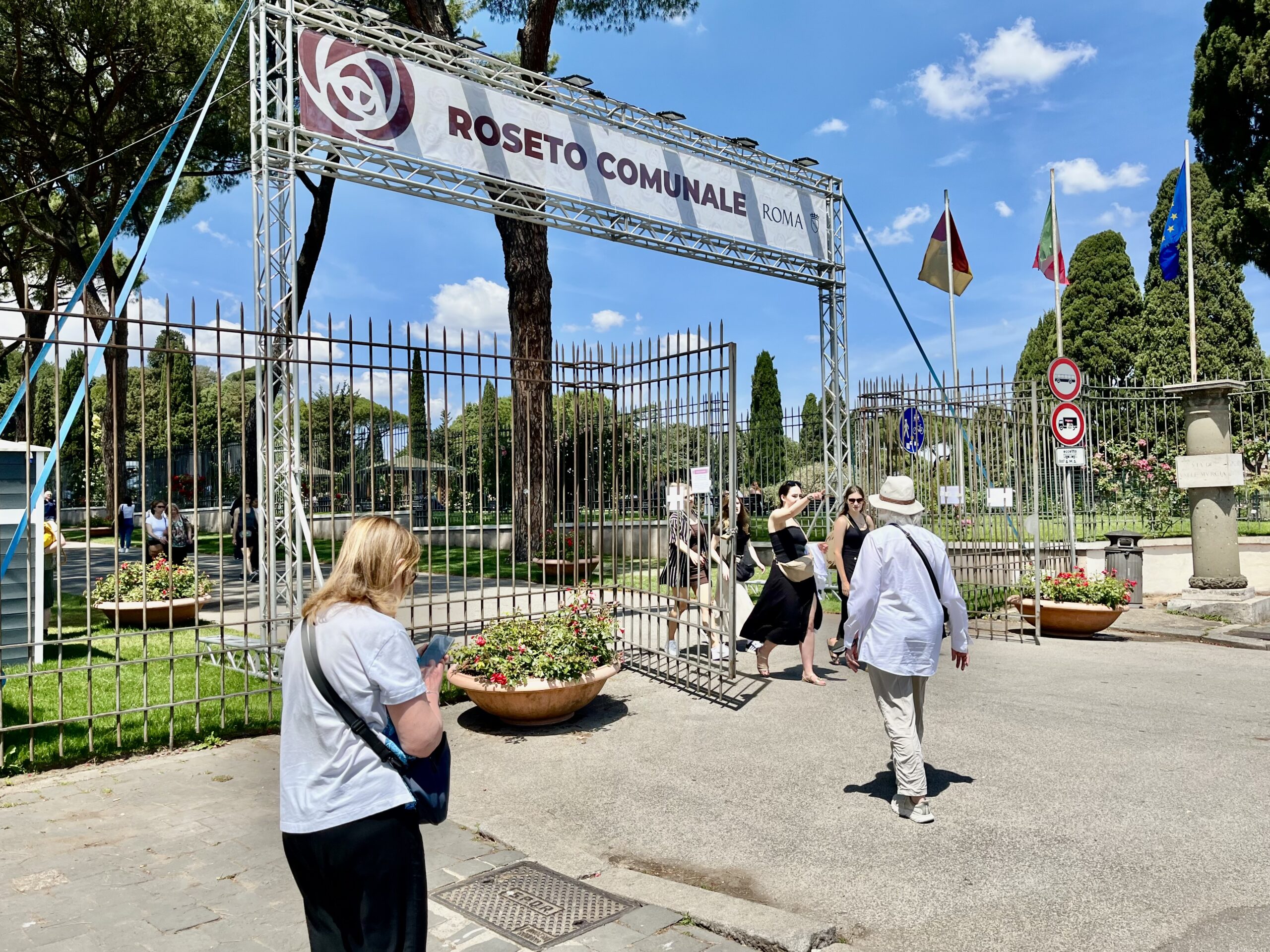
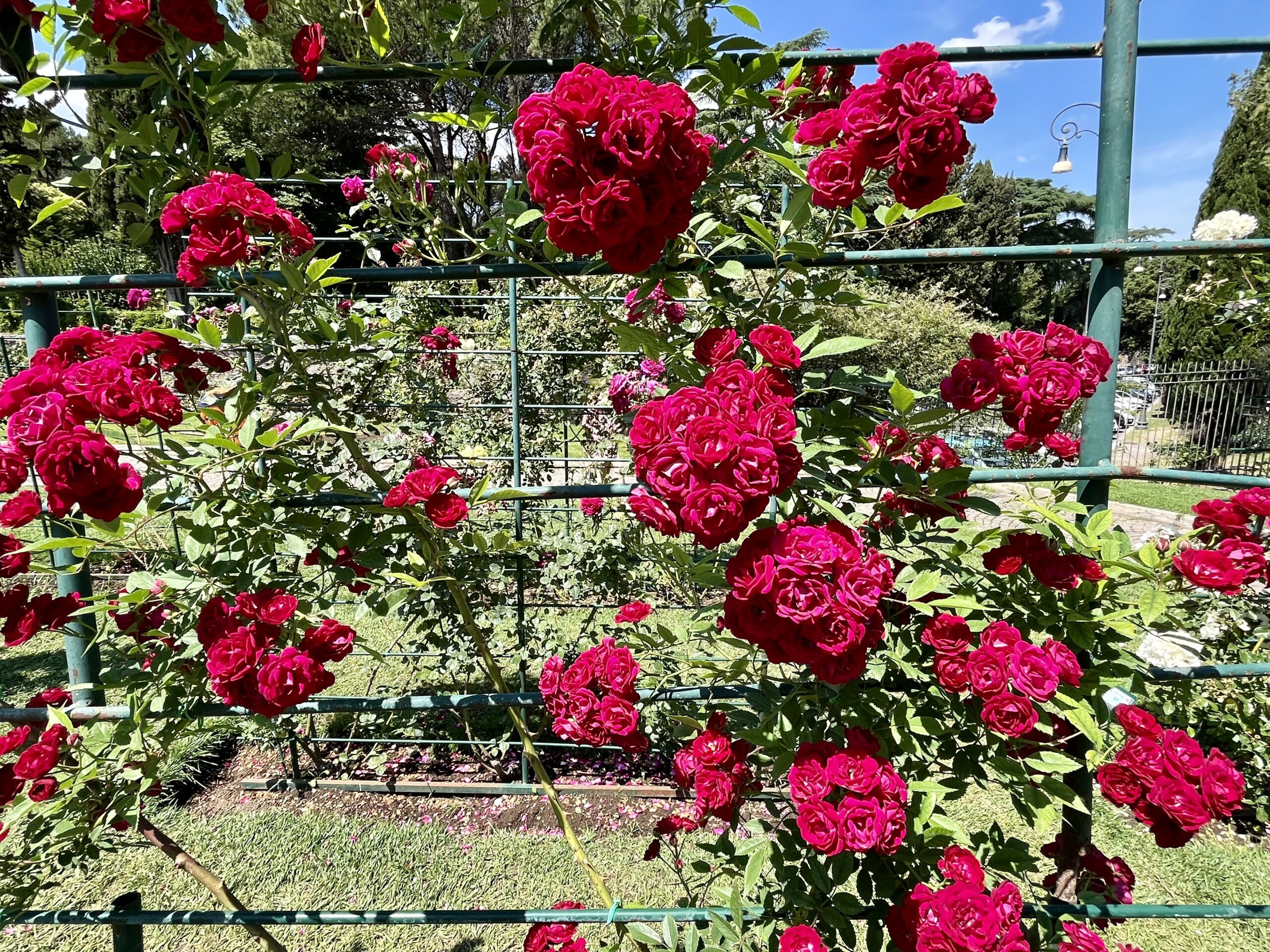

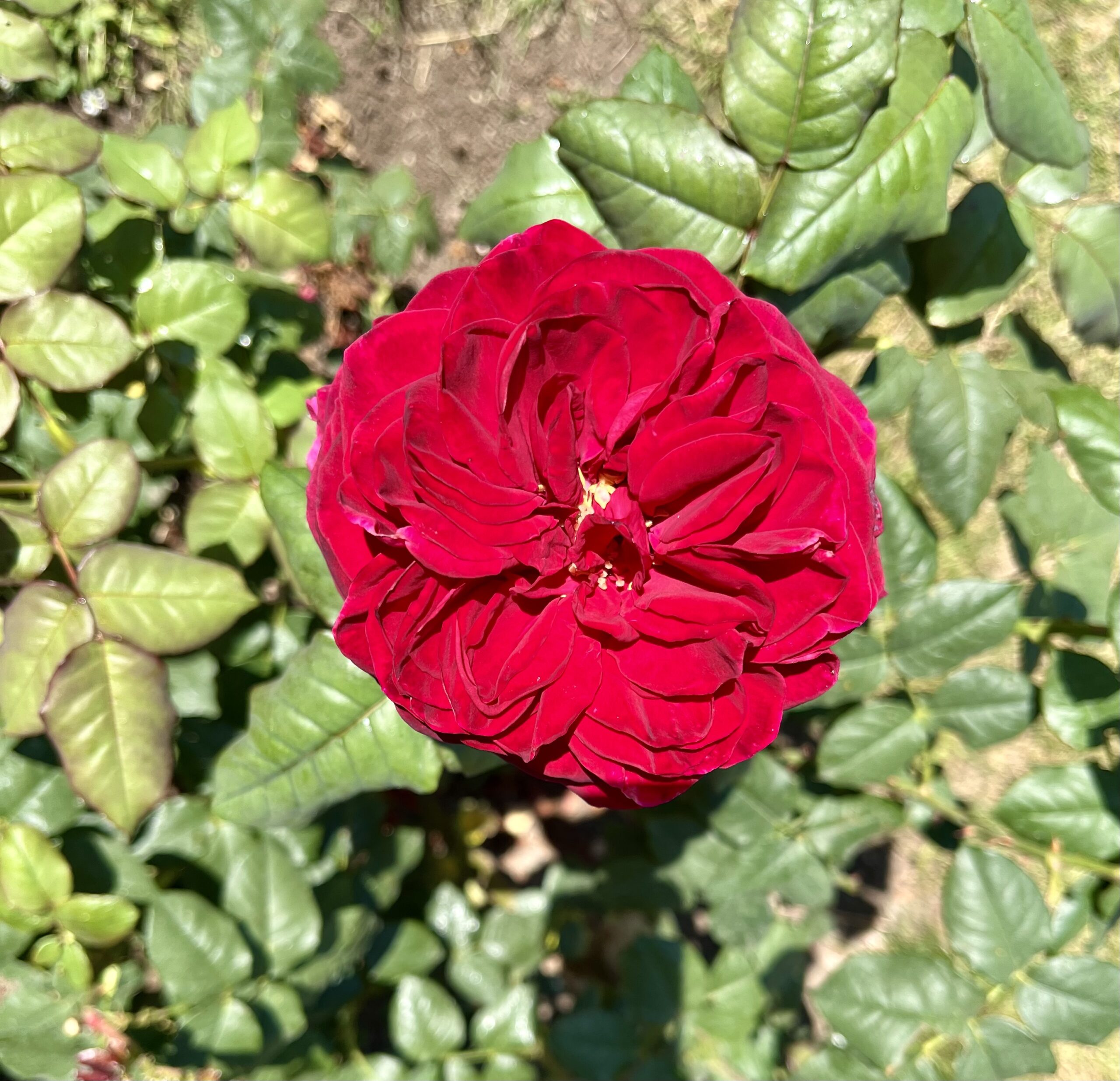
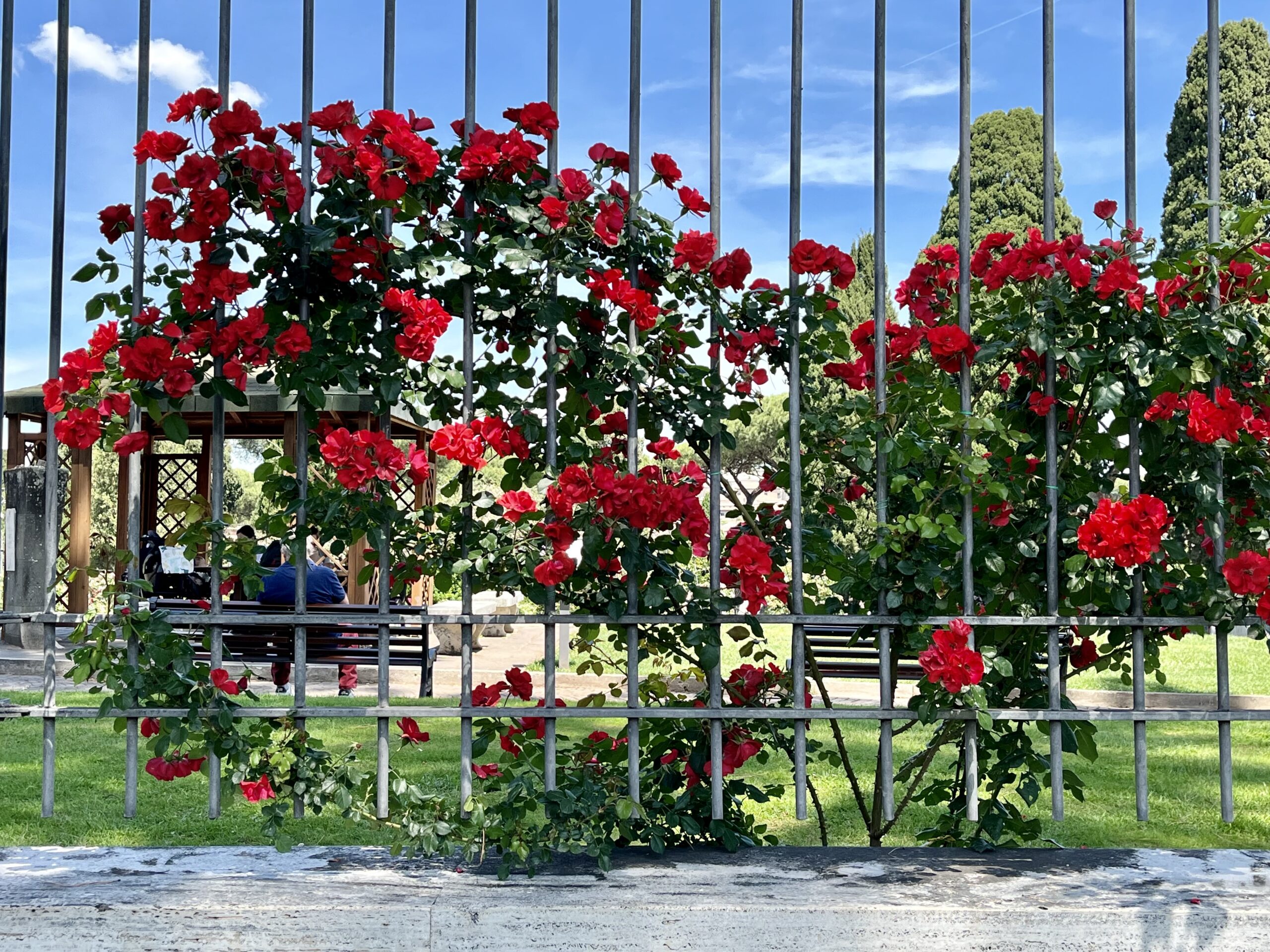
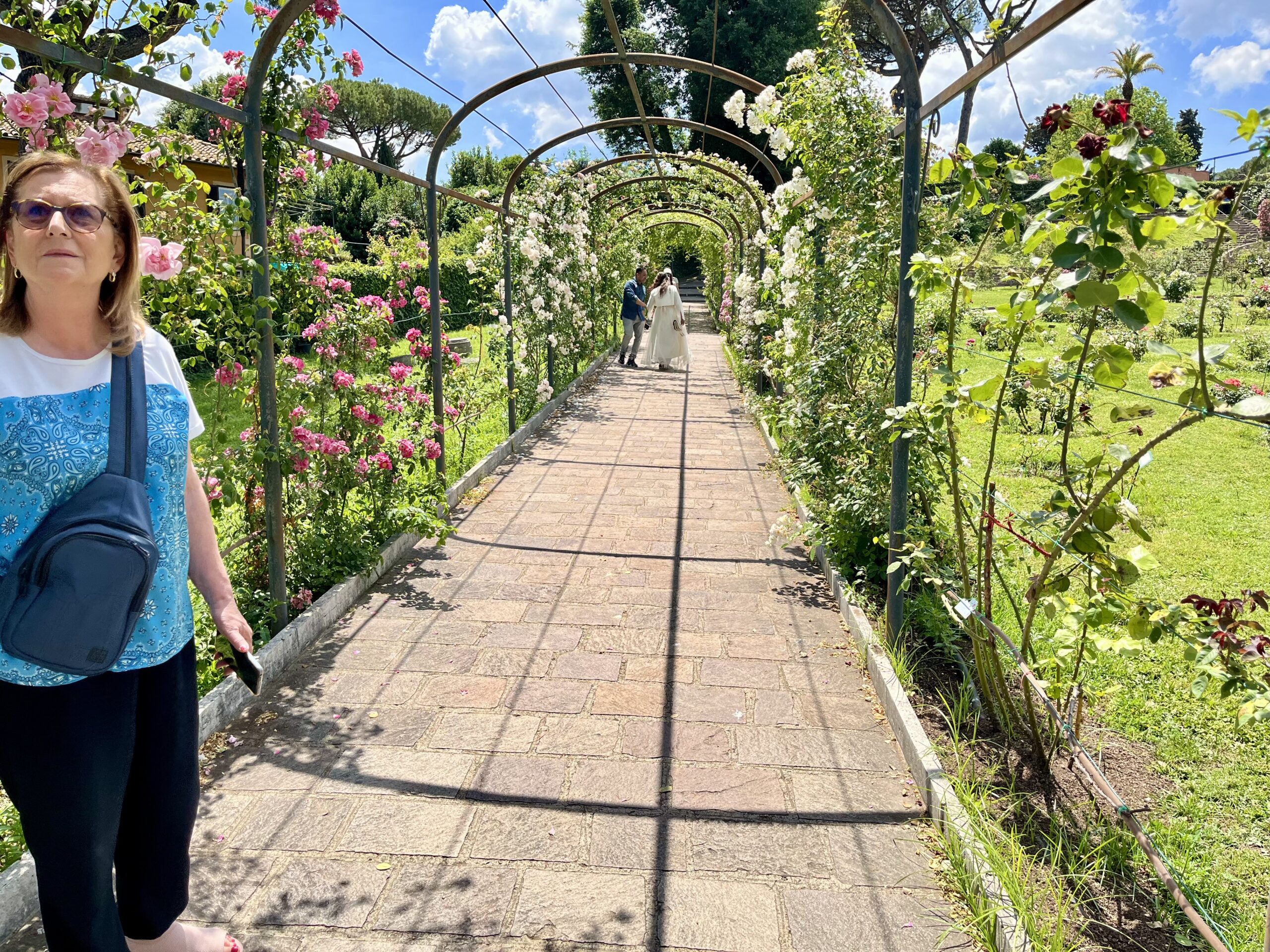
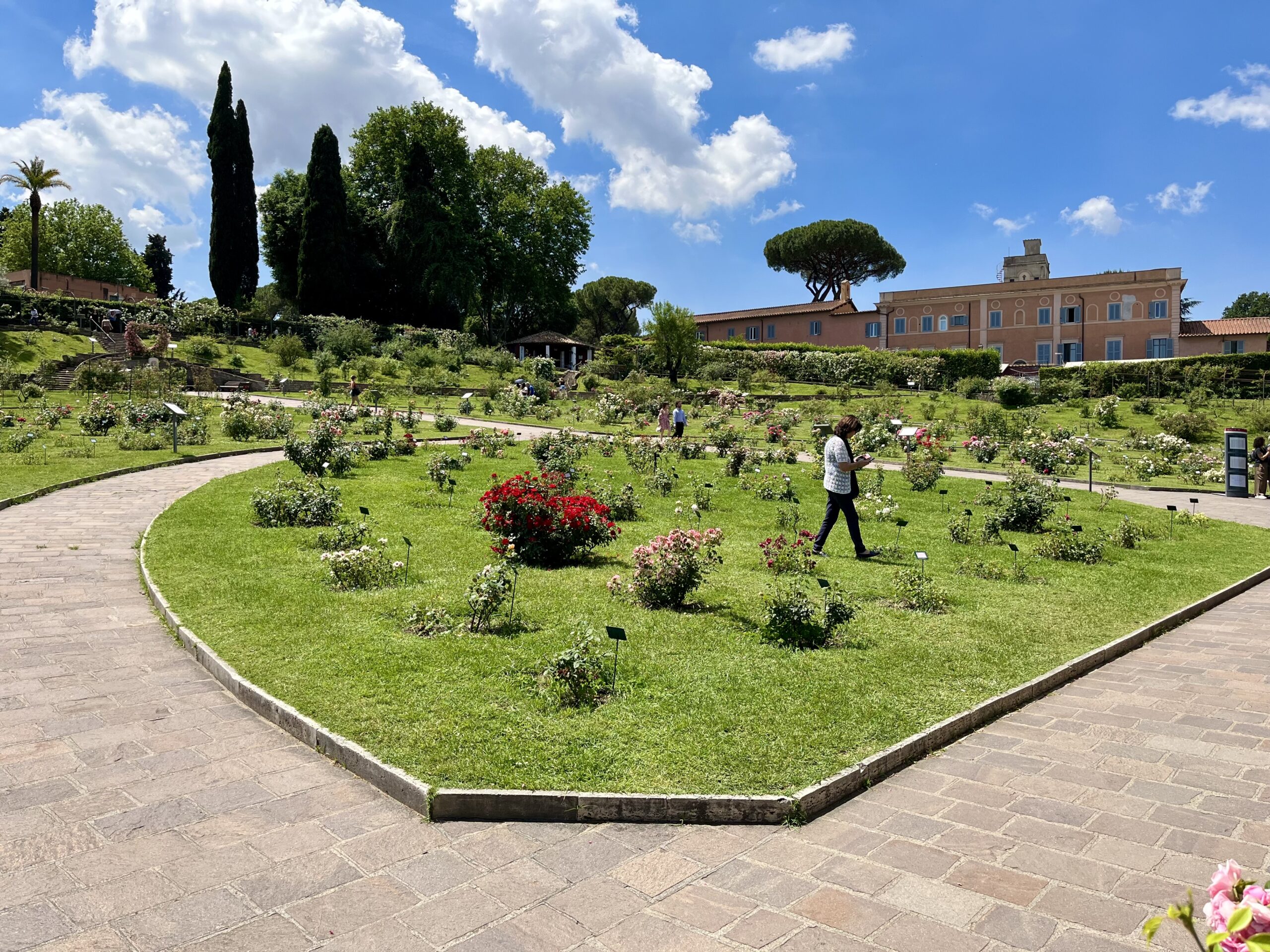
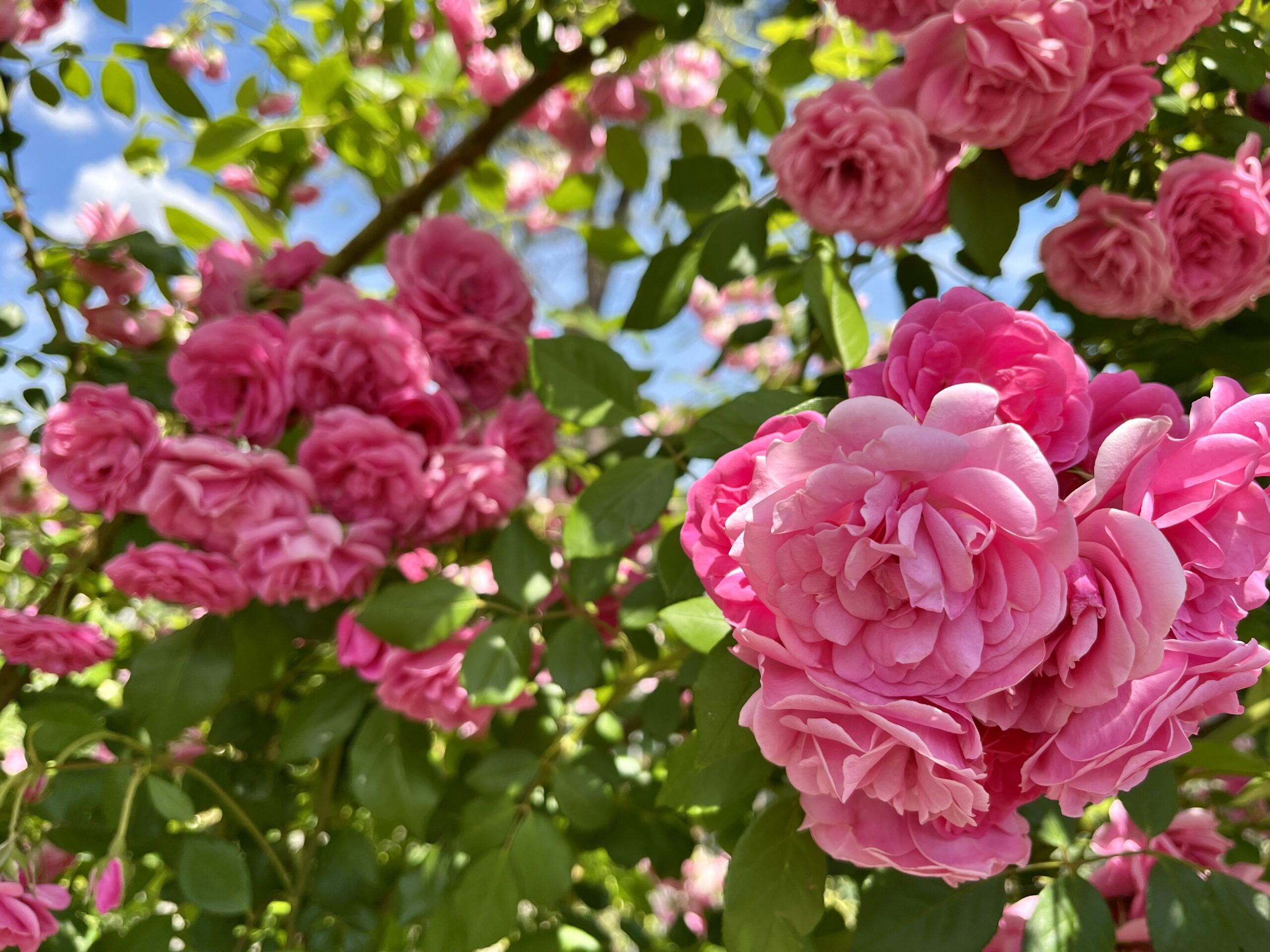
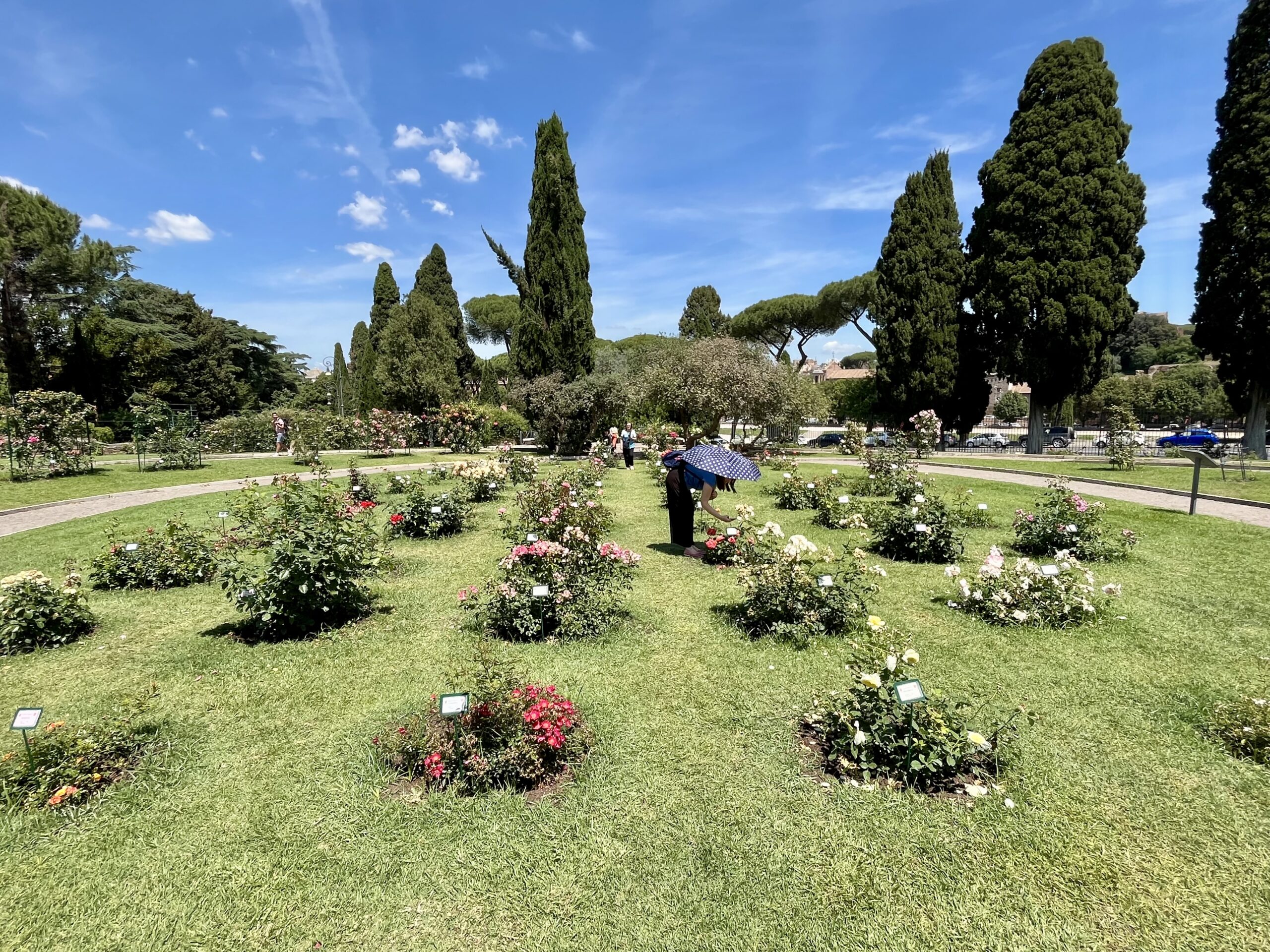
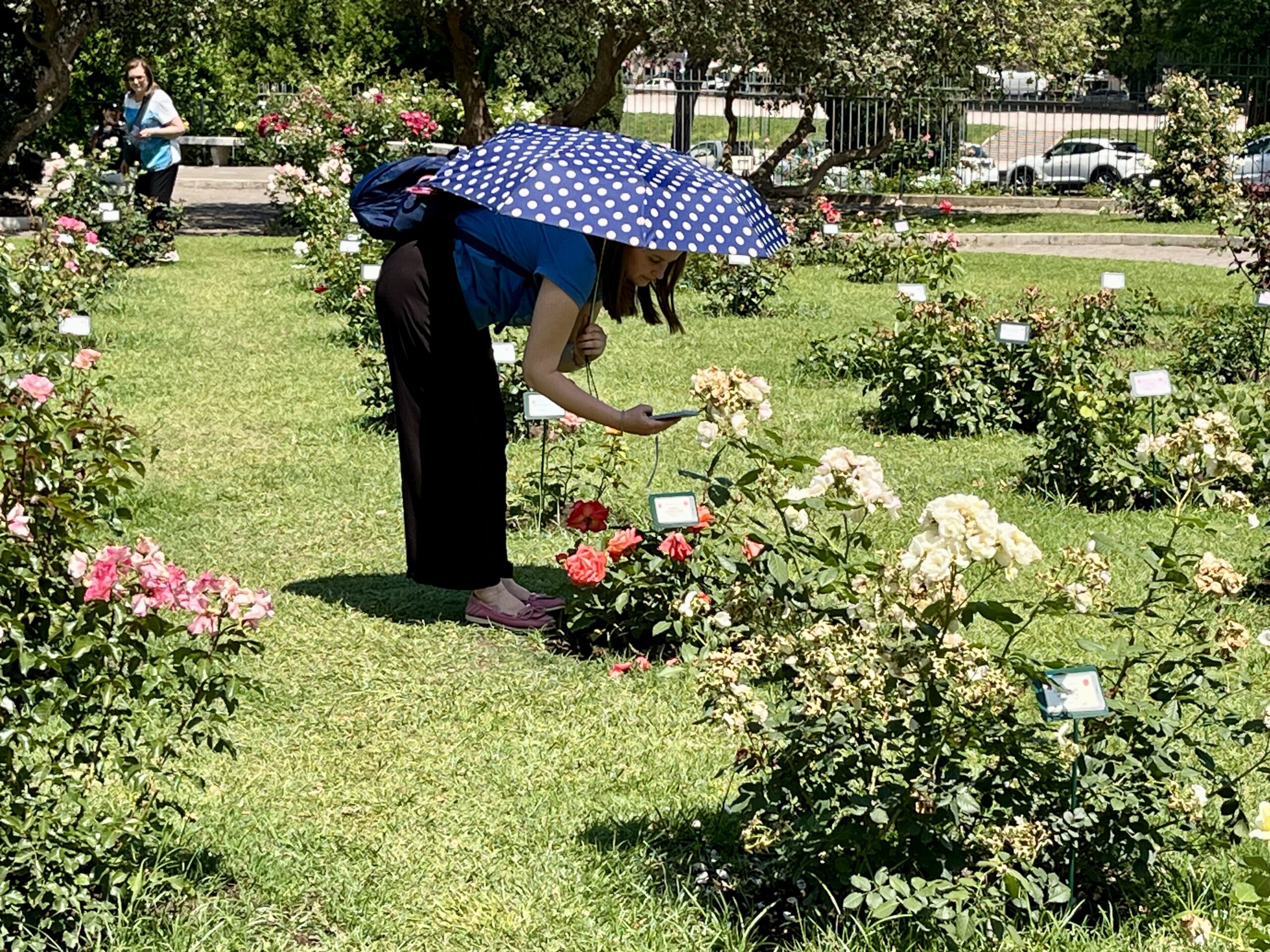
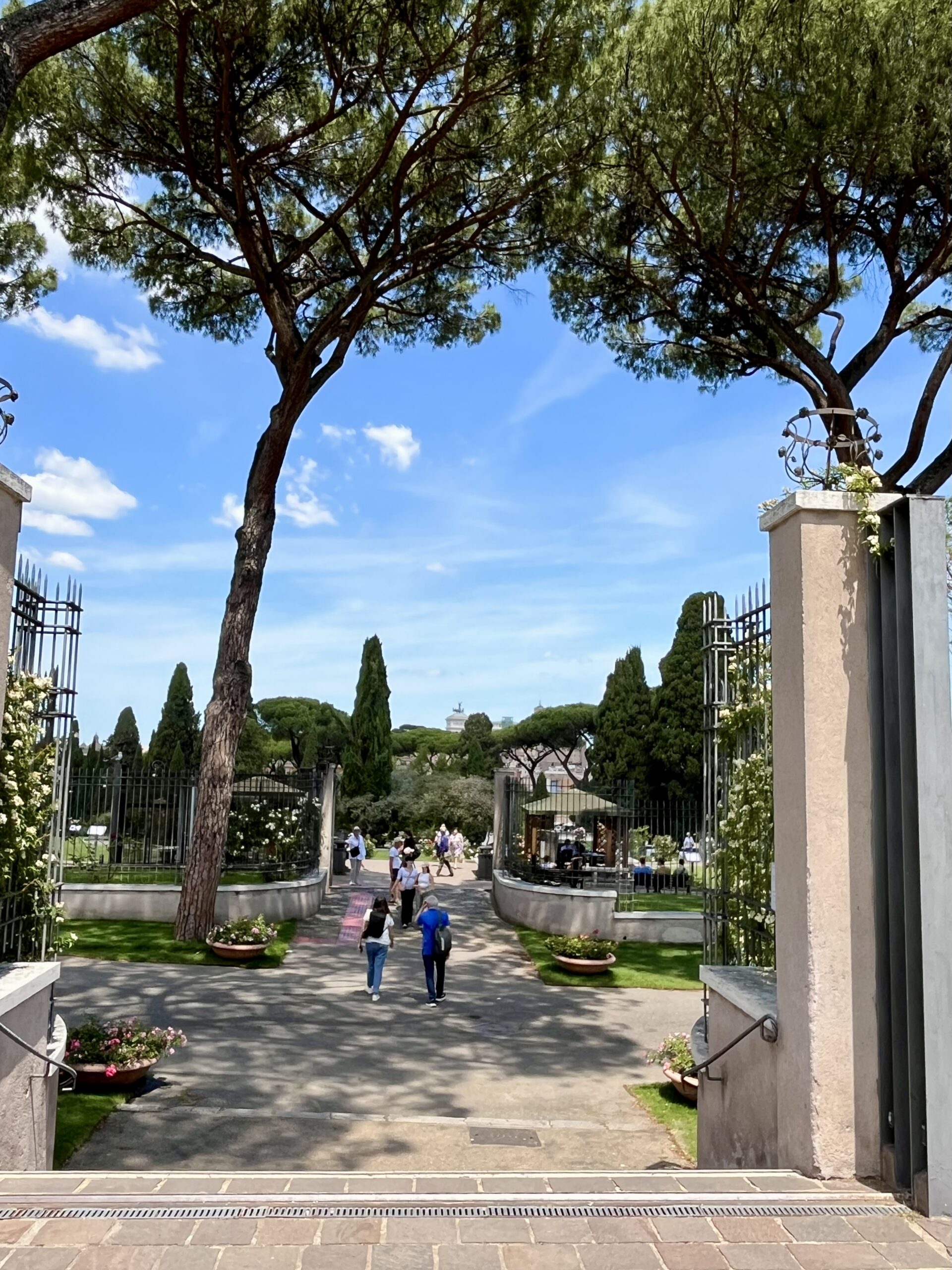
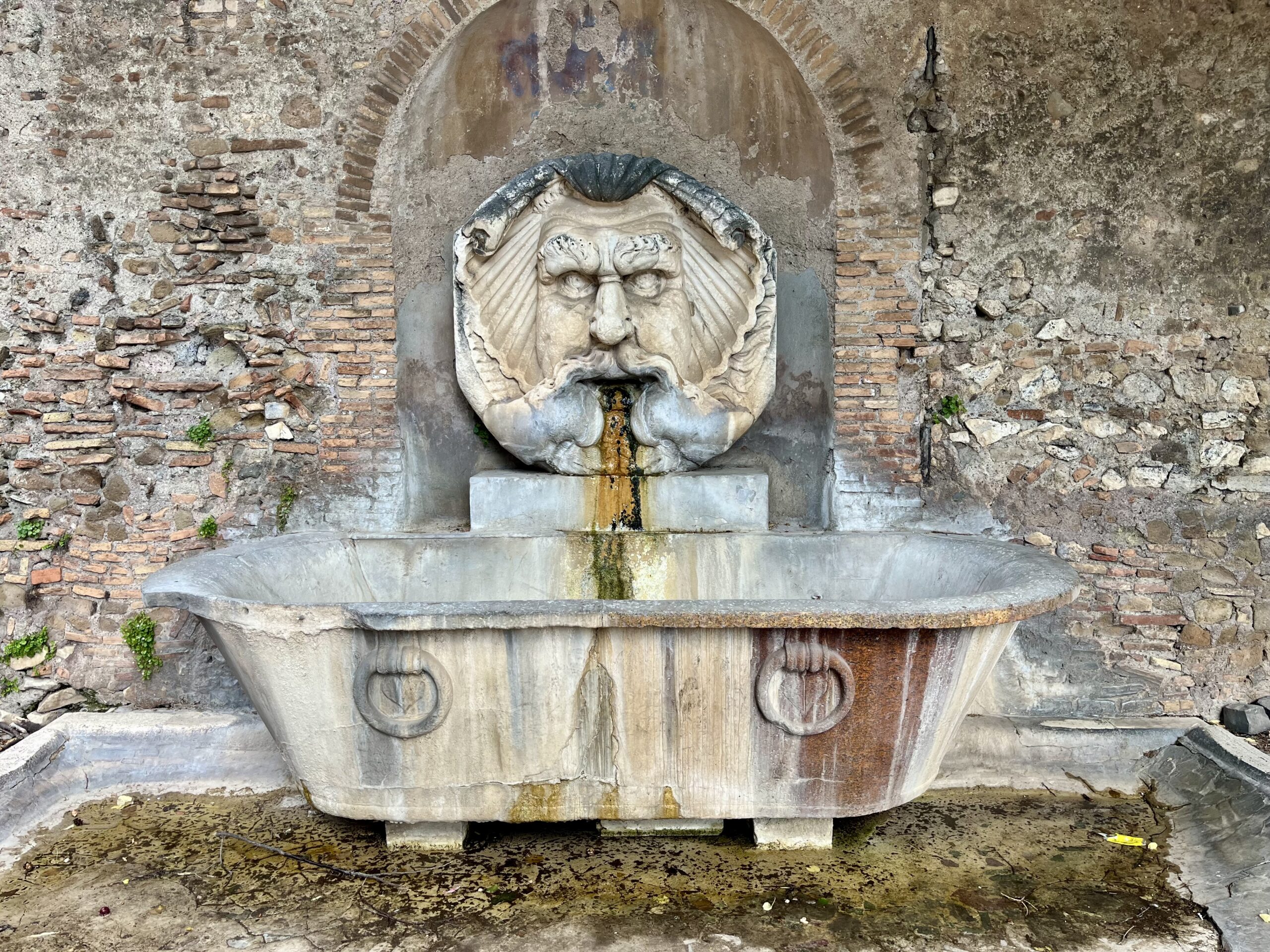
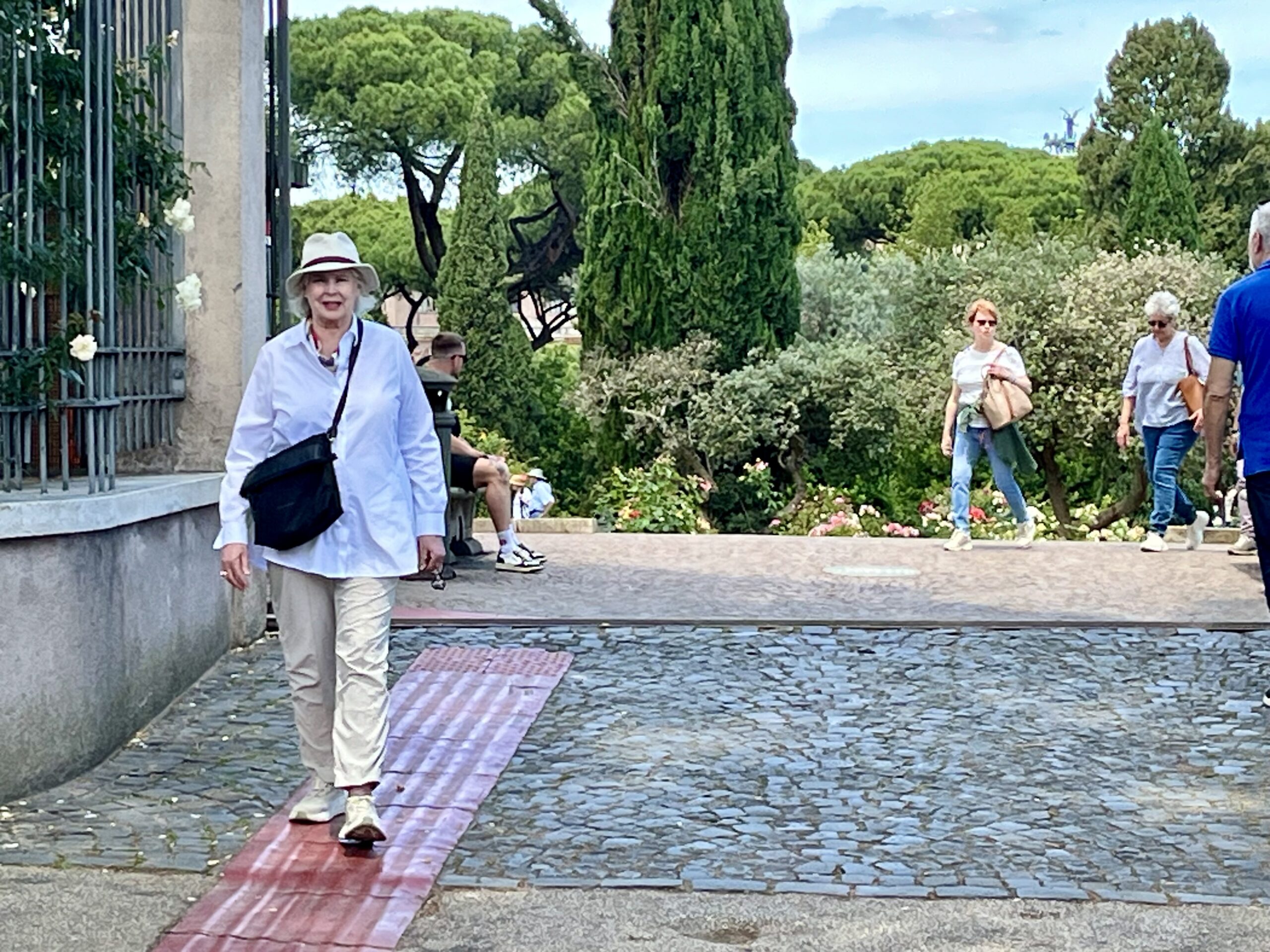
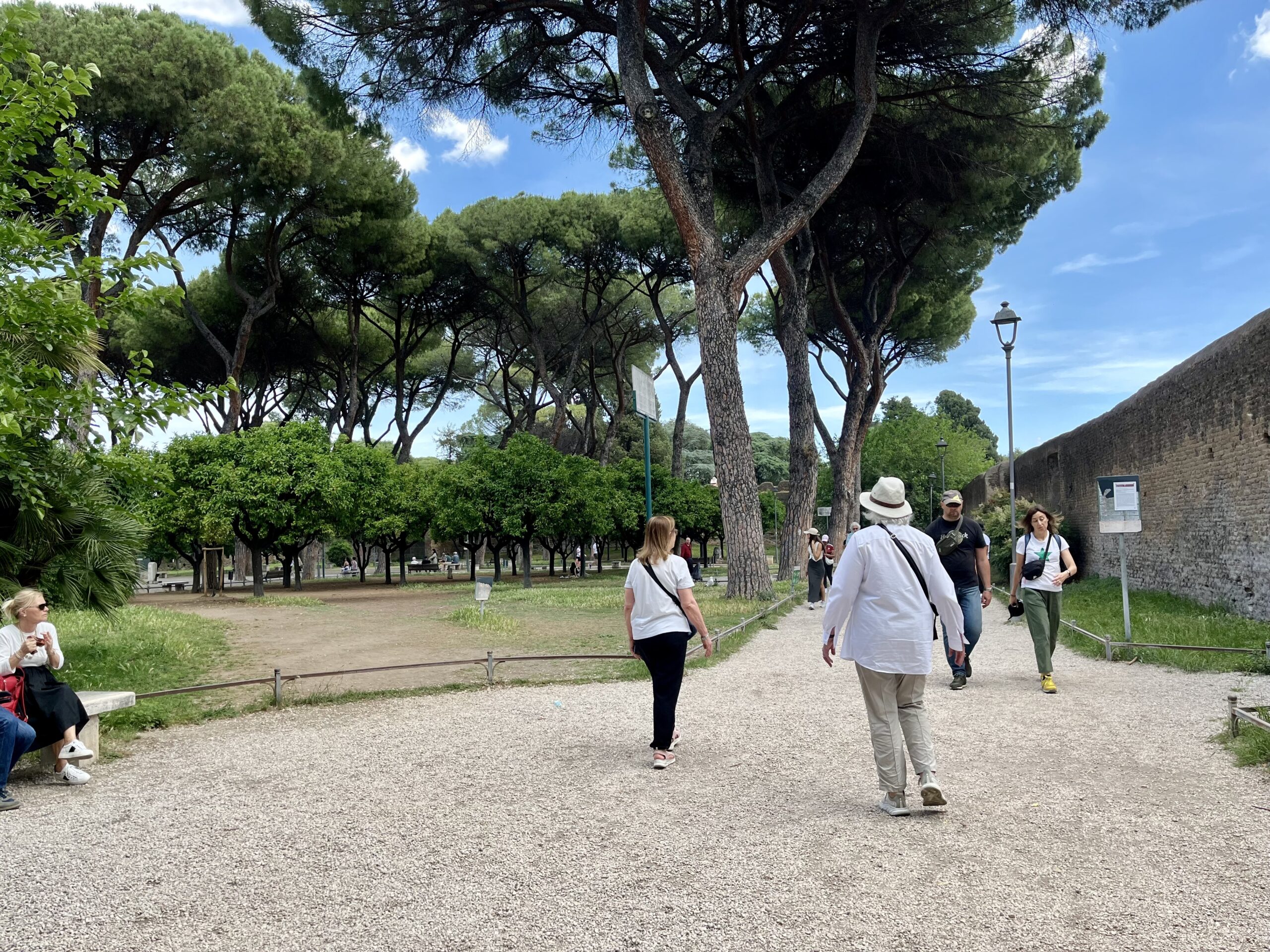
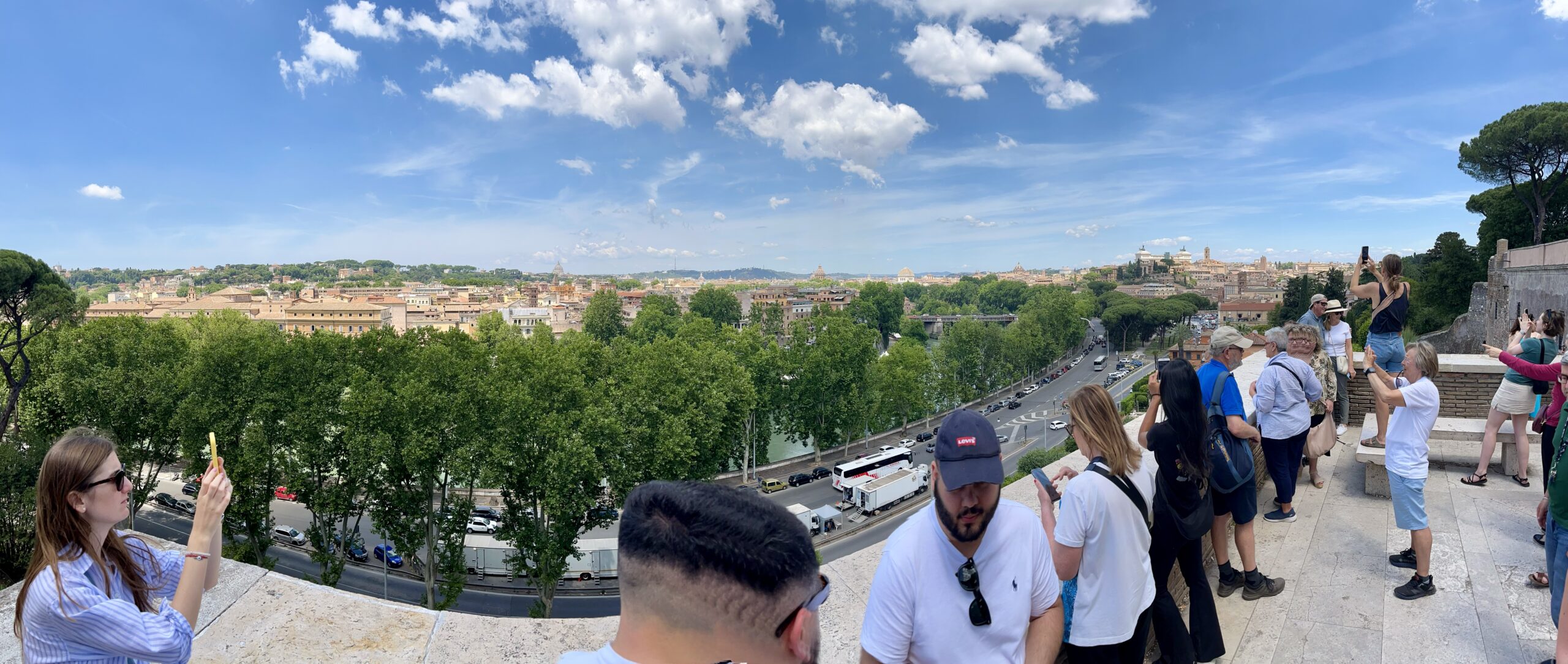
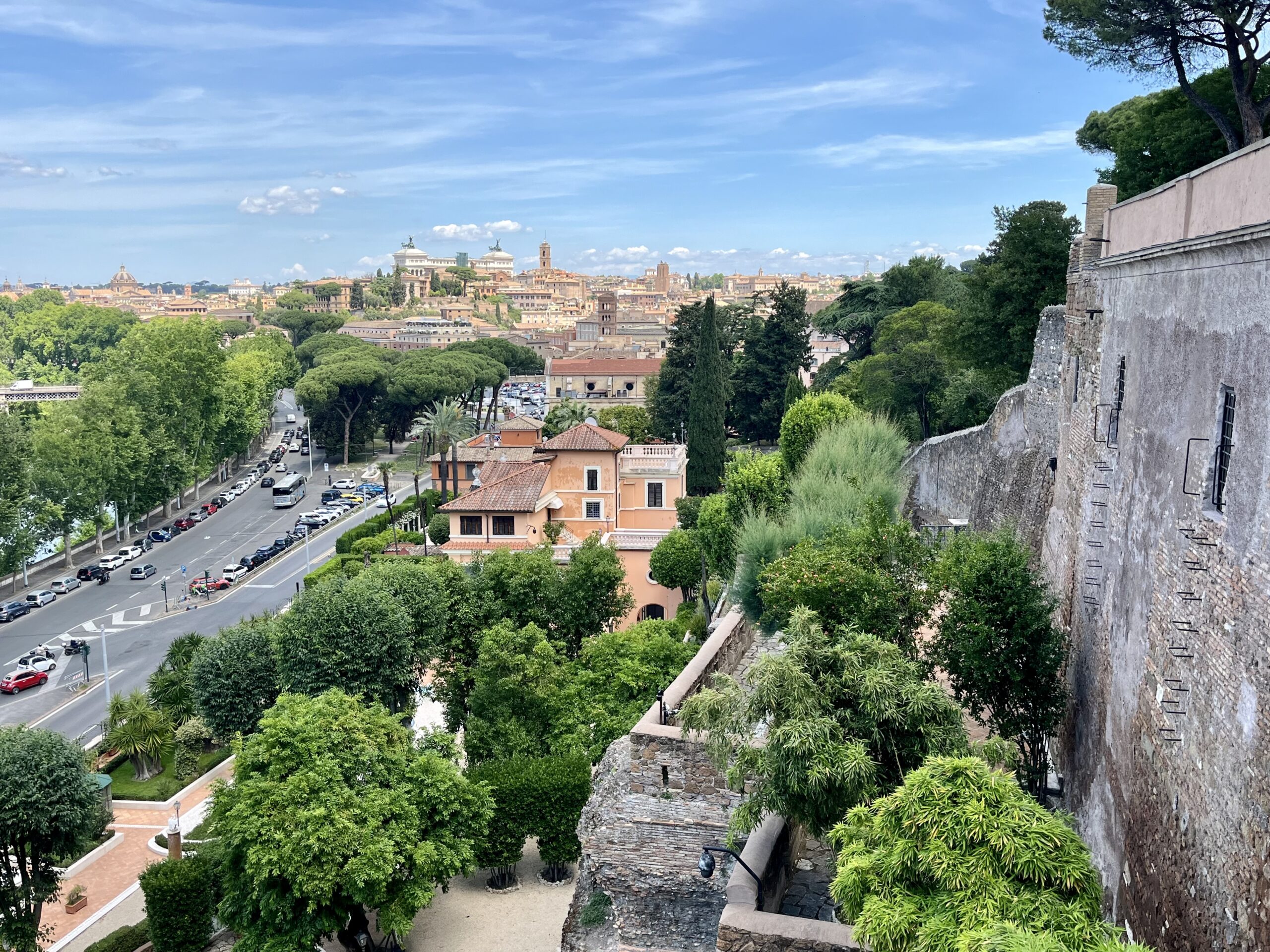
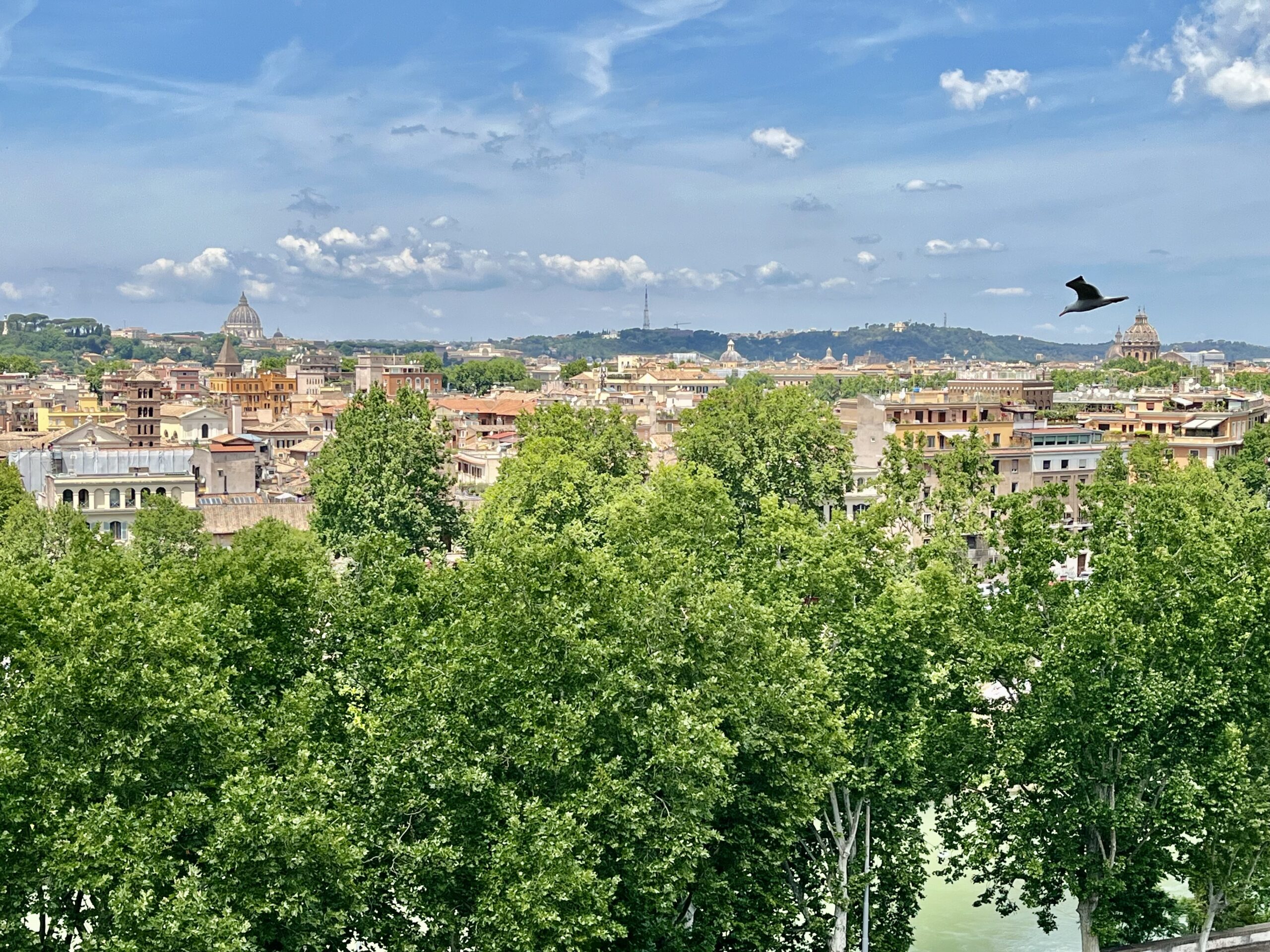
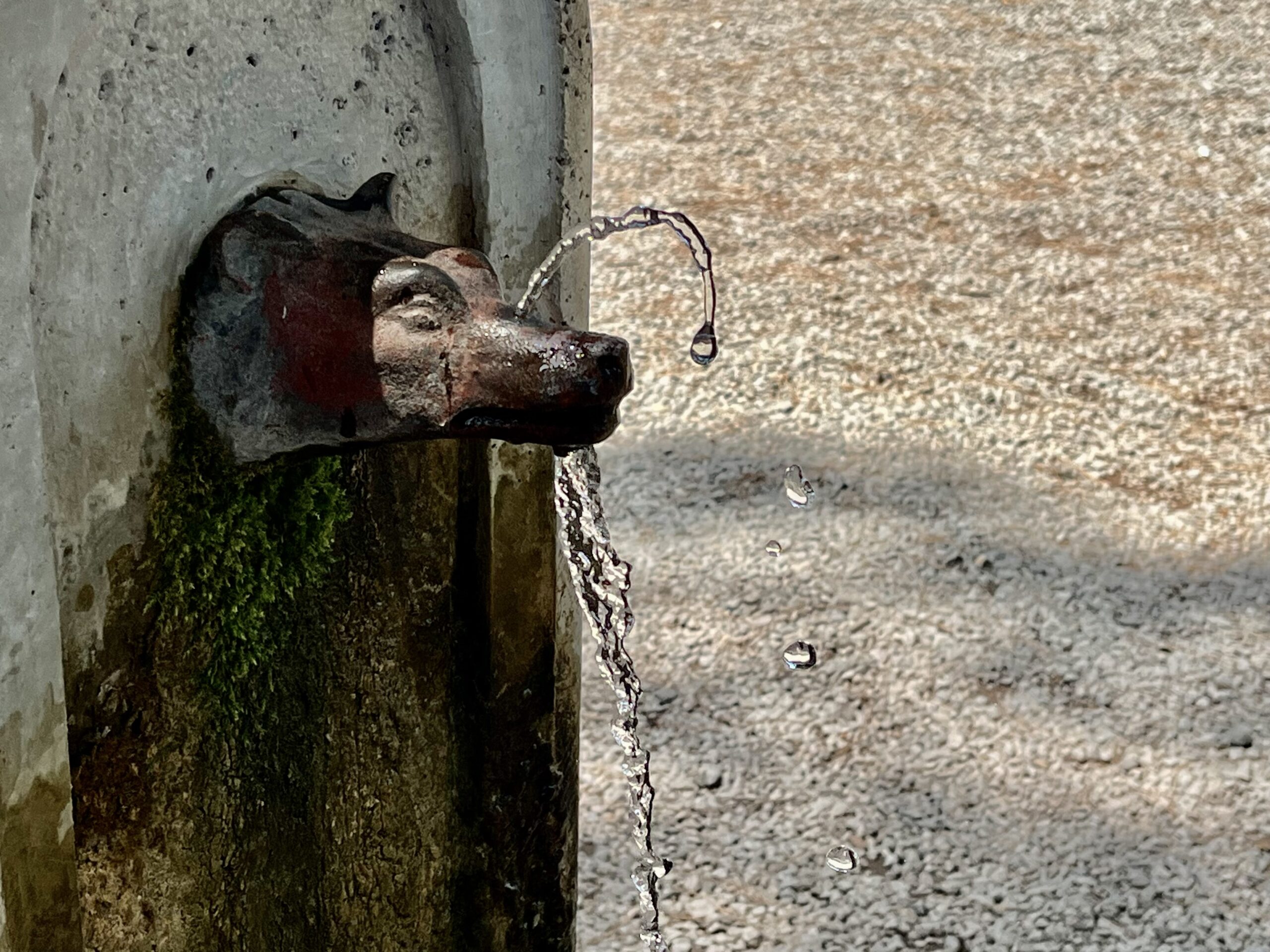
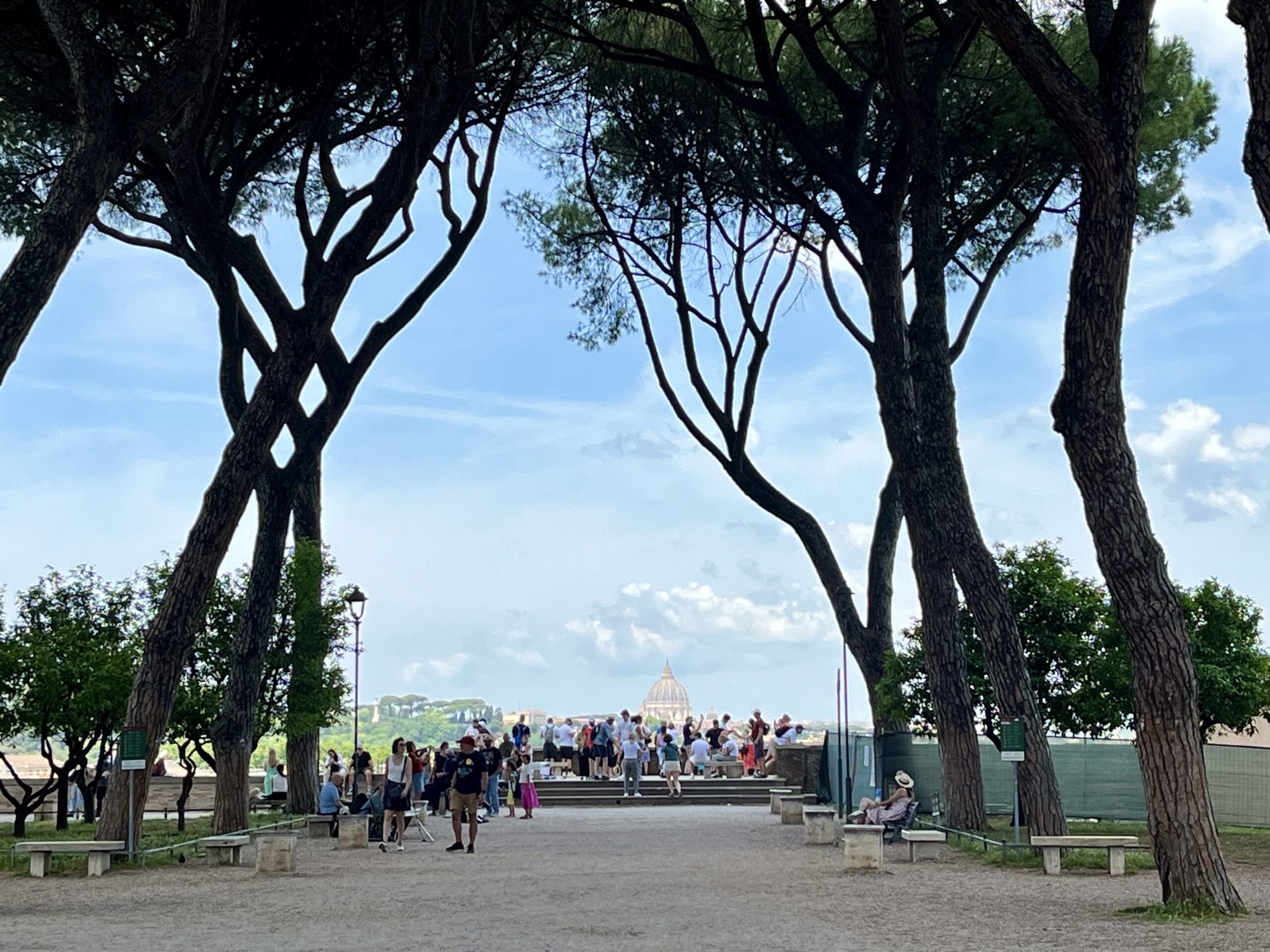
Shortly after we posted the description of our visit to Rome’s rose garden, Bonnie got an email from her friend Ginevra in Oakland explaining that Ginevra’s grandmother supplied the roses to establish the garden! Ginevra and other grandchildren lobbied the city to add a plaque acknowledging her. The plaque was put up in the garden on May 17, just before we arrived.
Basilica of Saint Sabina at the Aventine
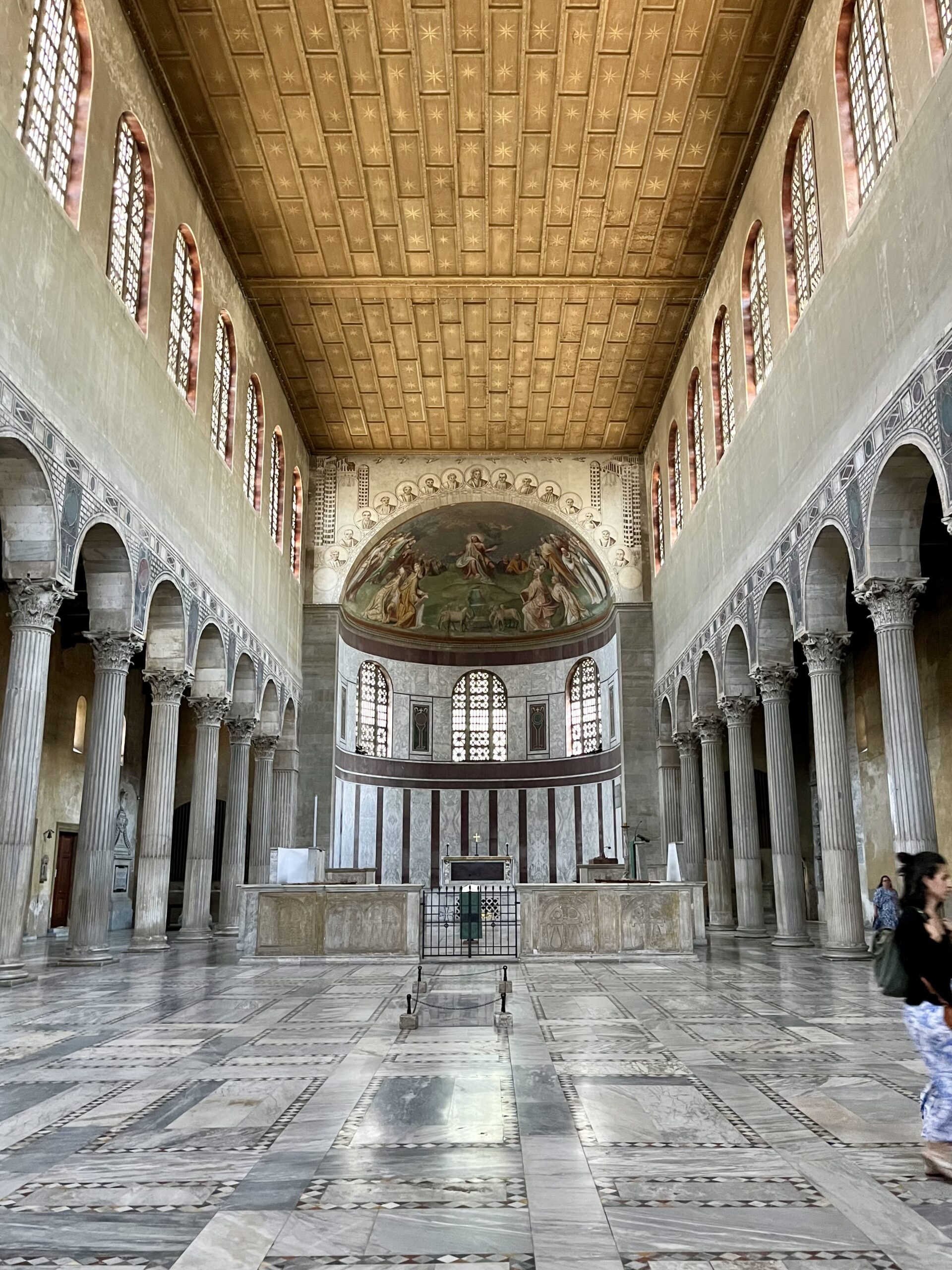
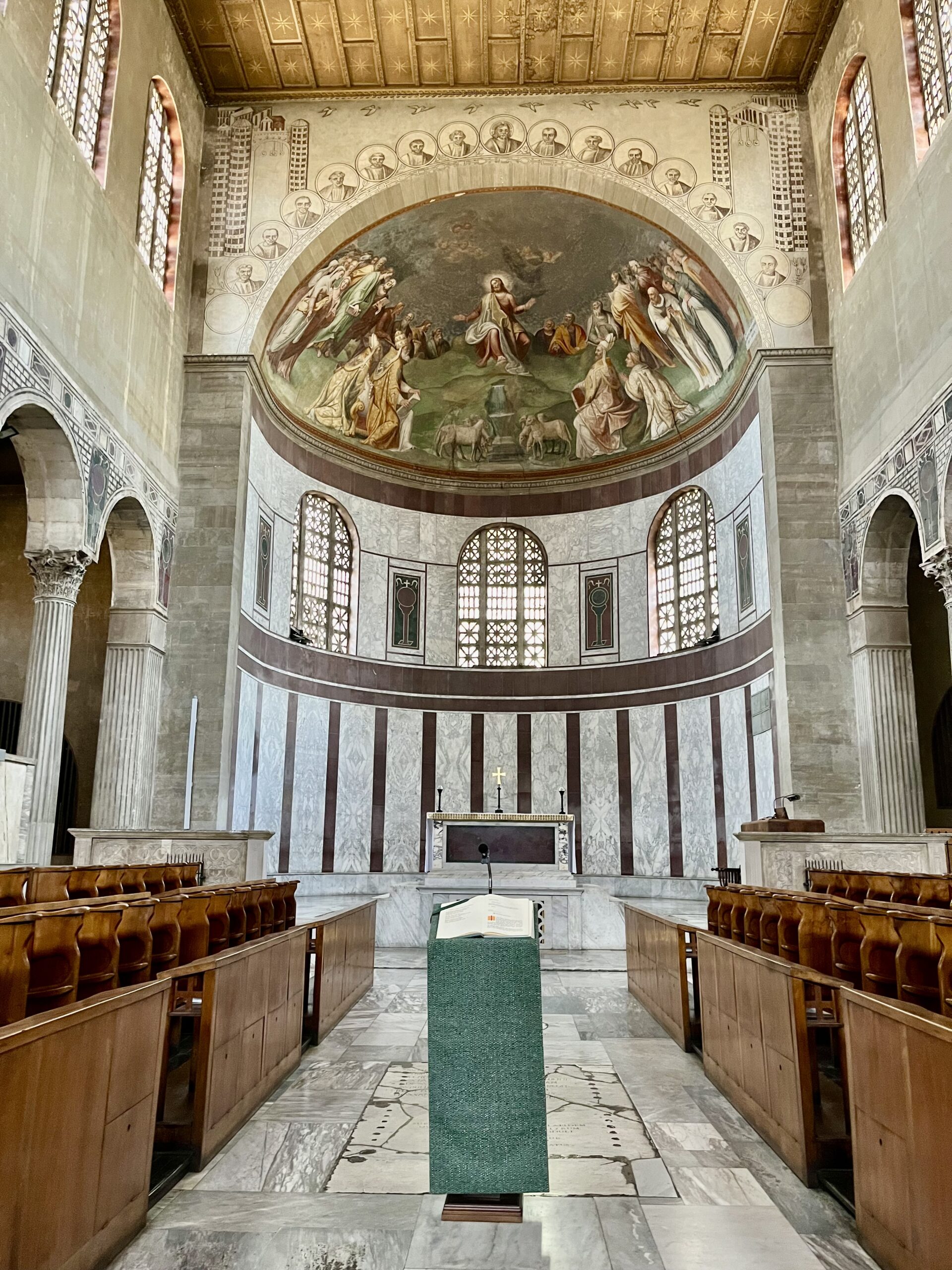
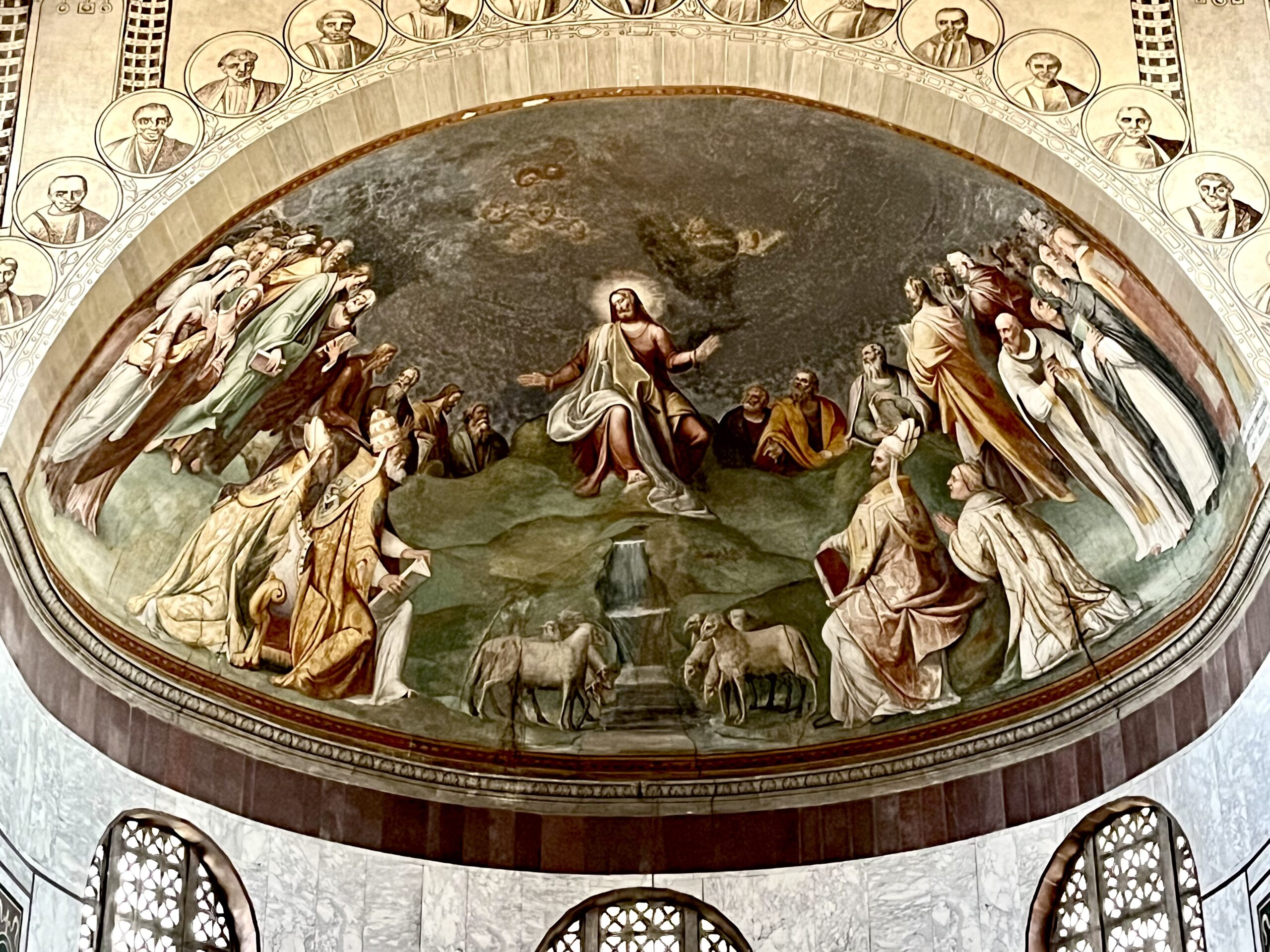
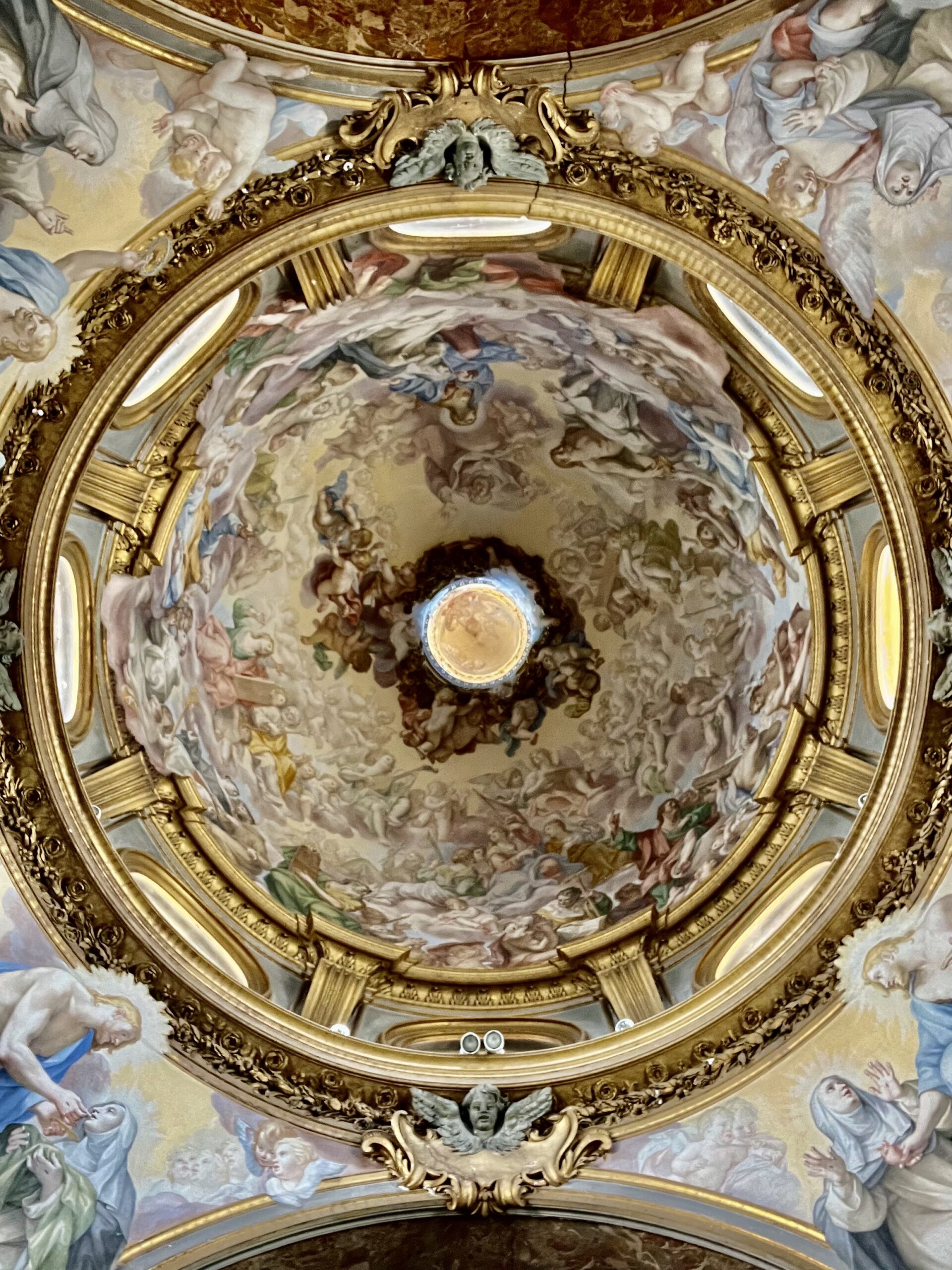
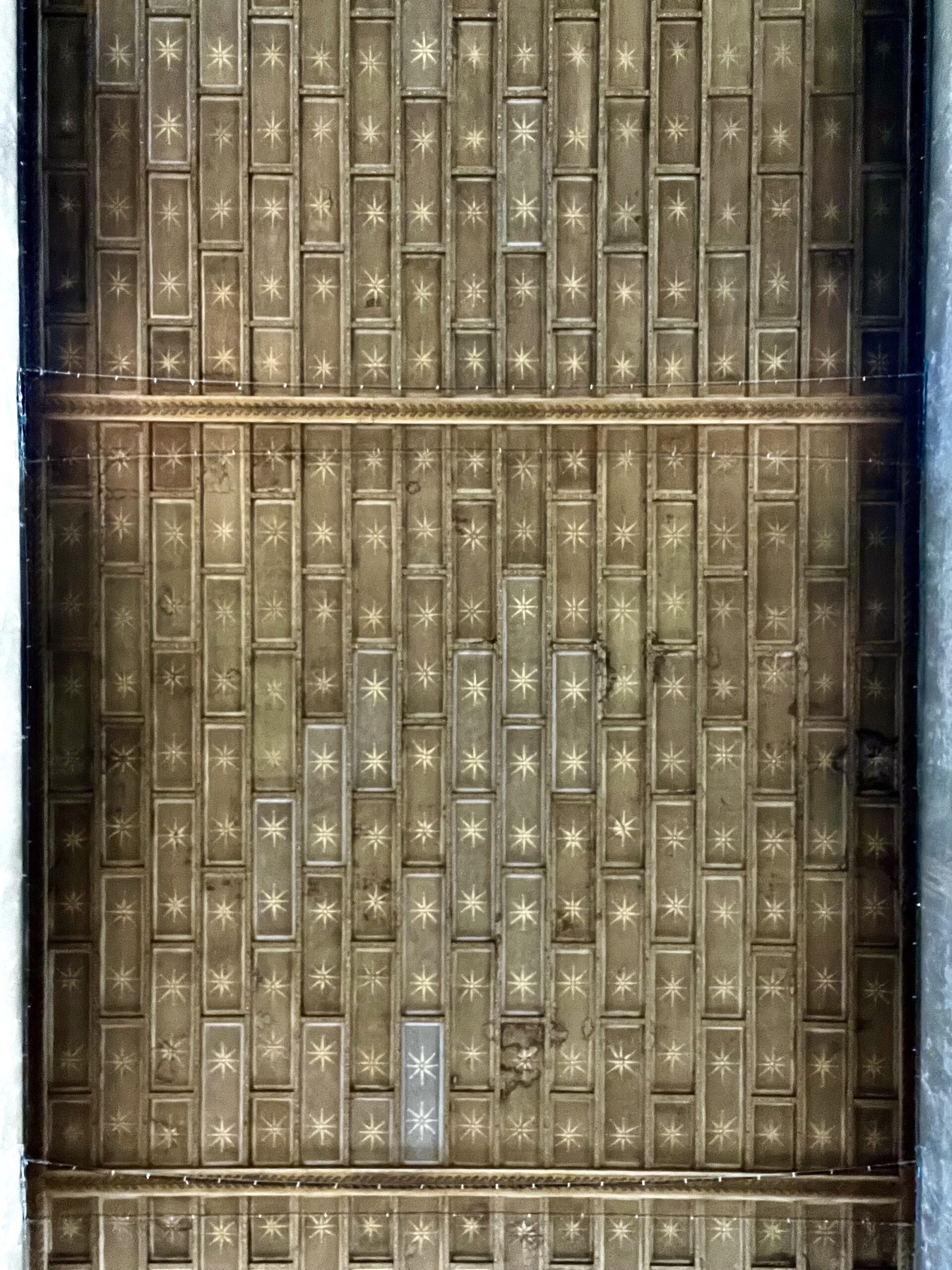
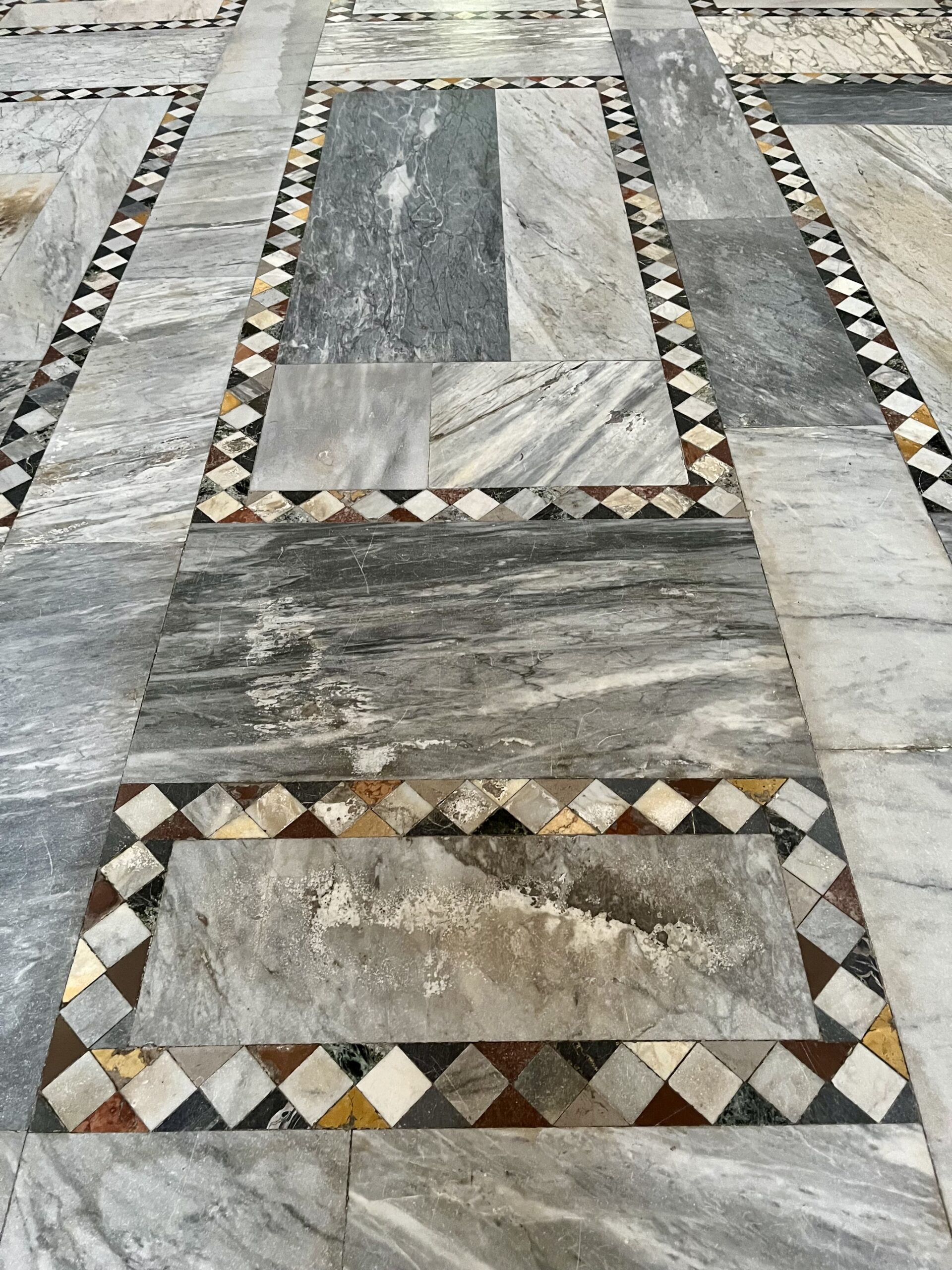
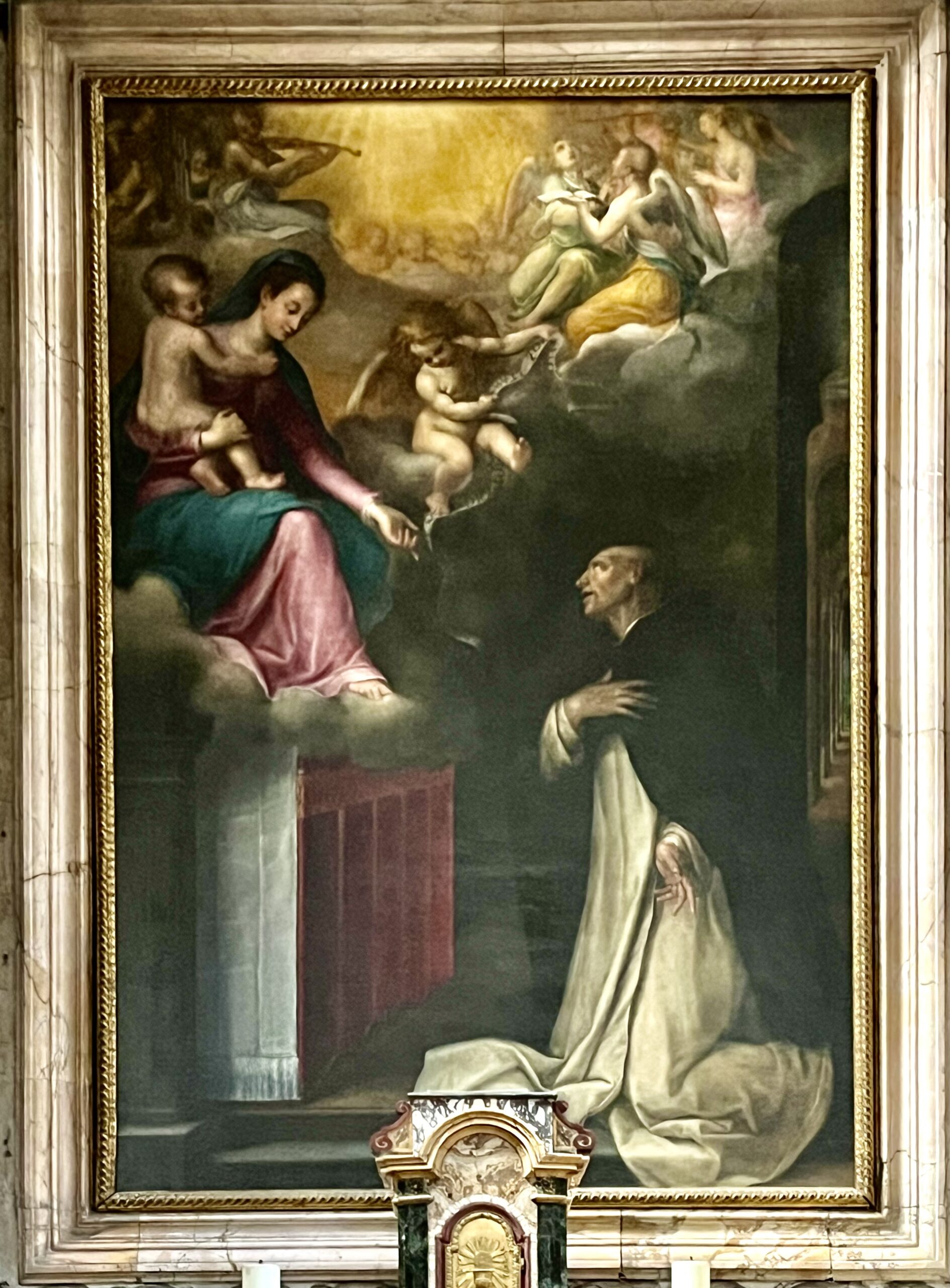
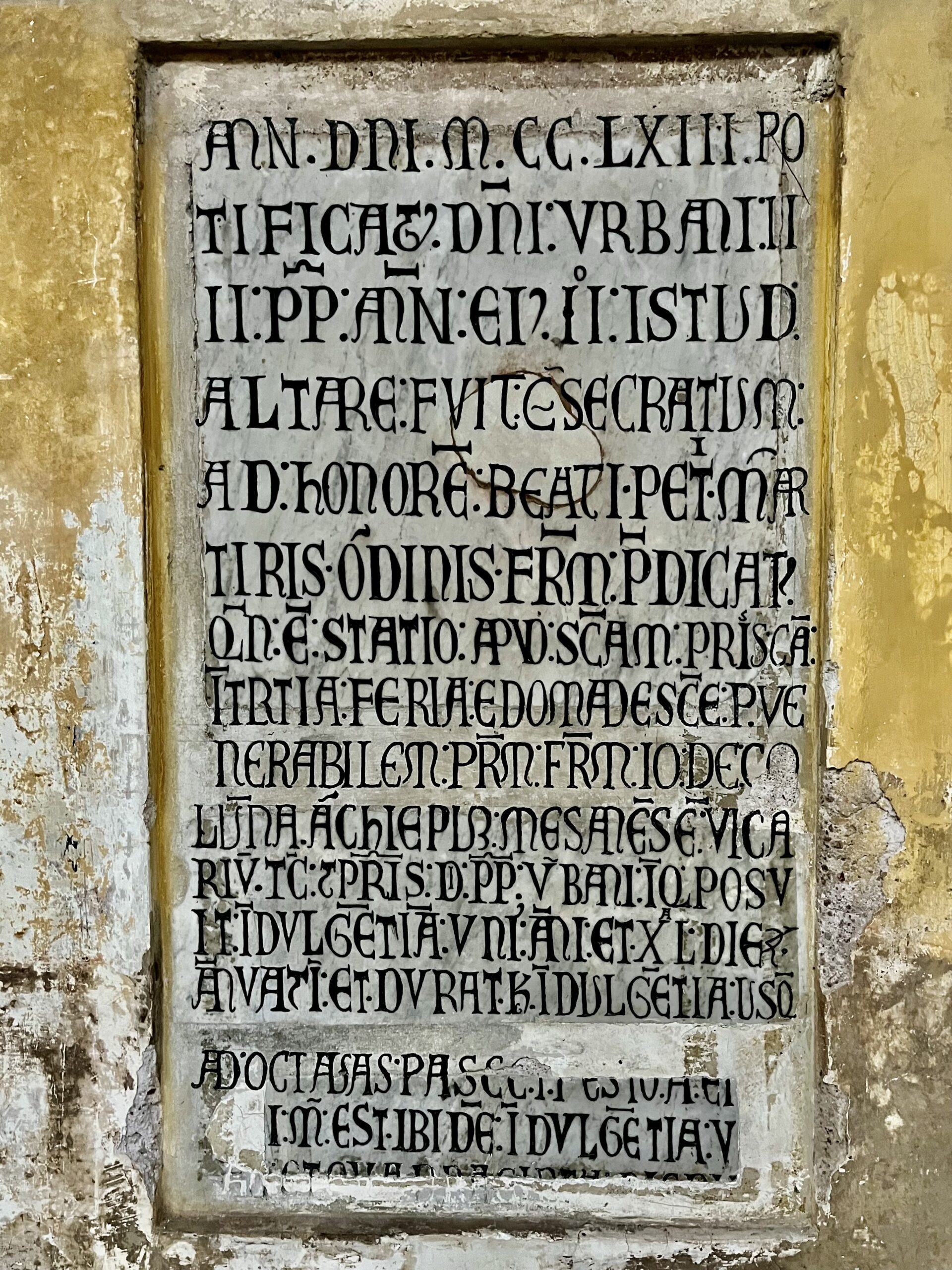
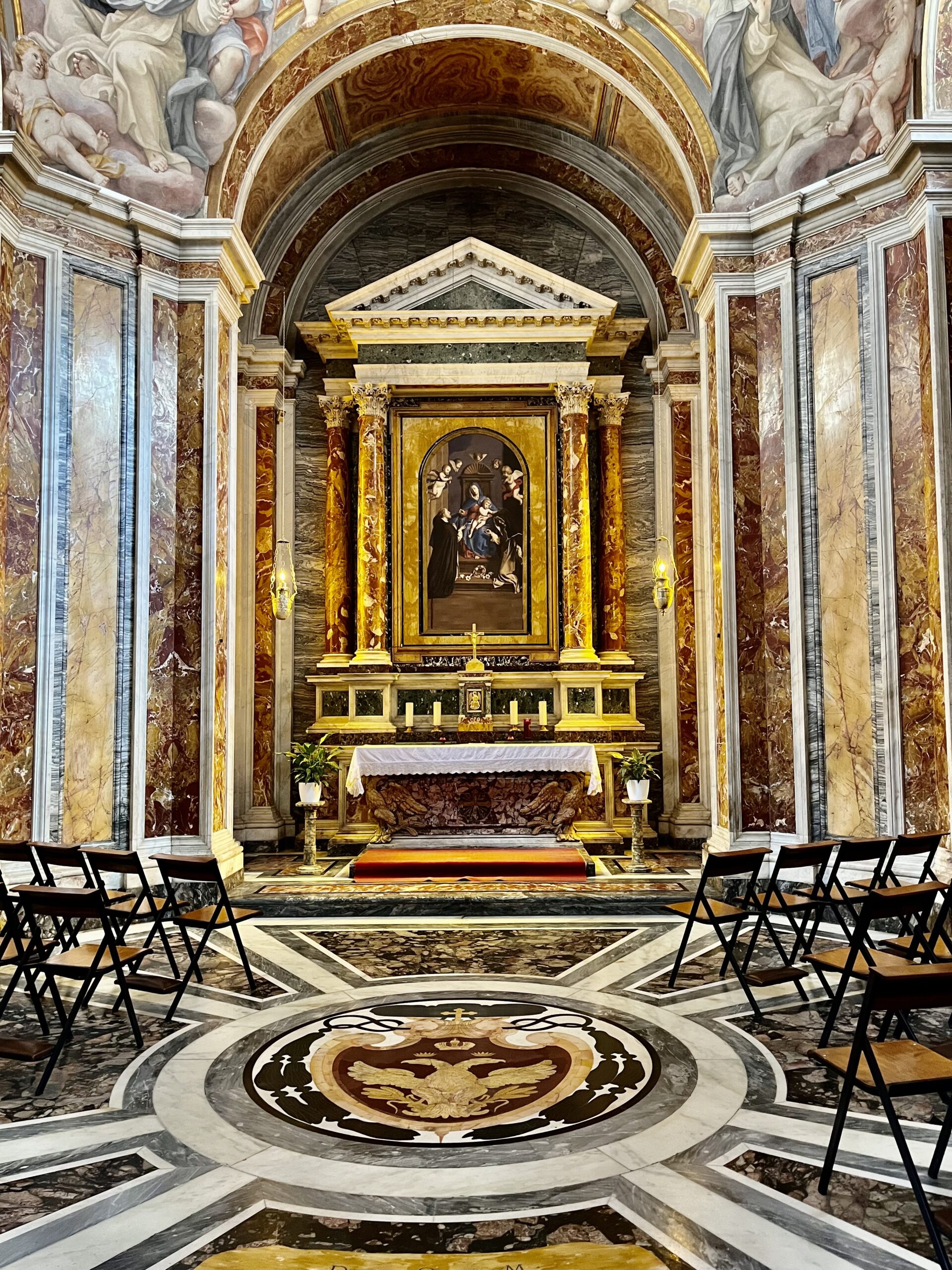
Basilica dei Santi Bonifacio e Alessio
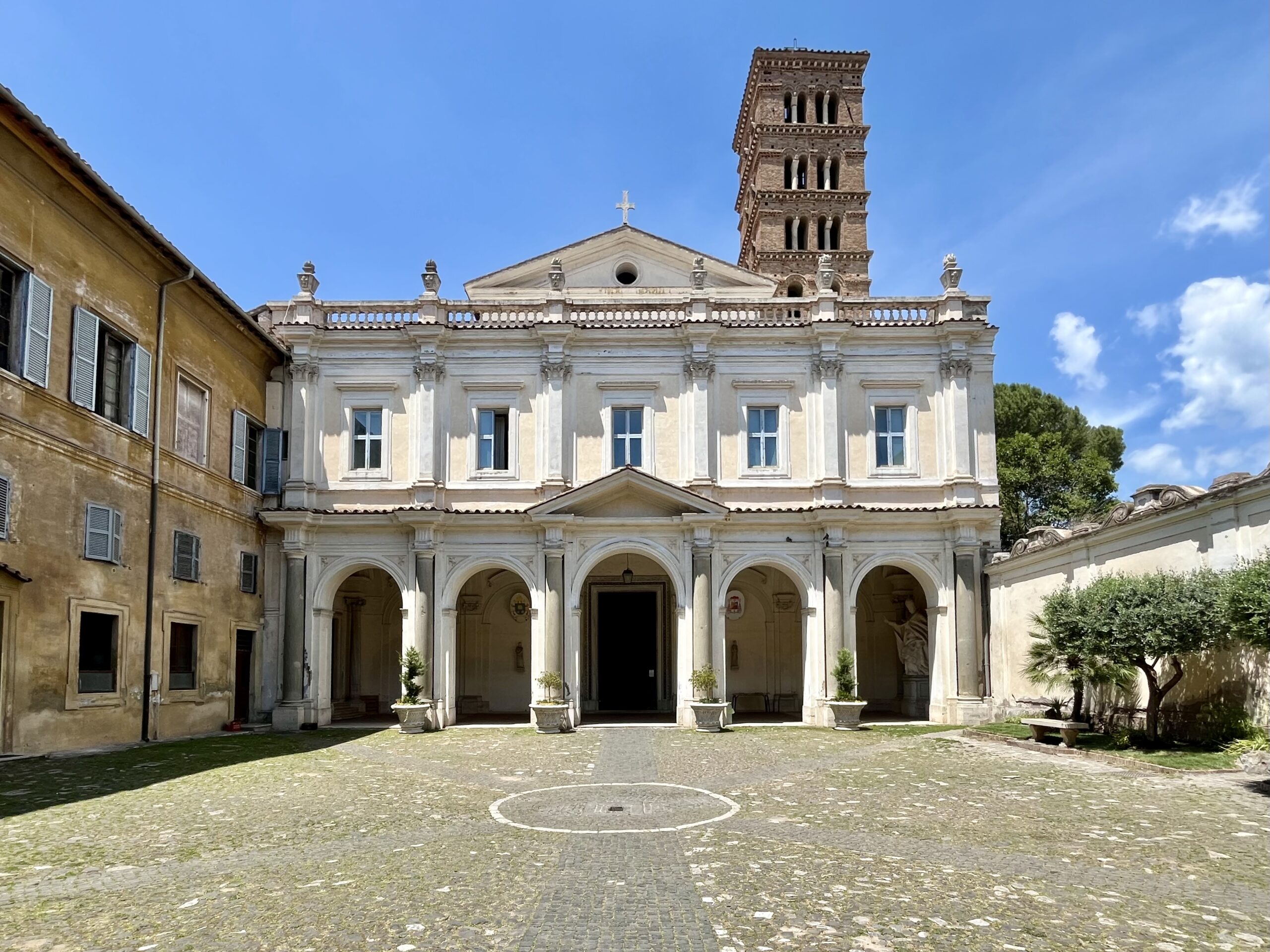
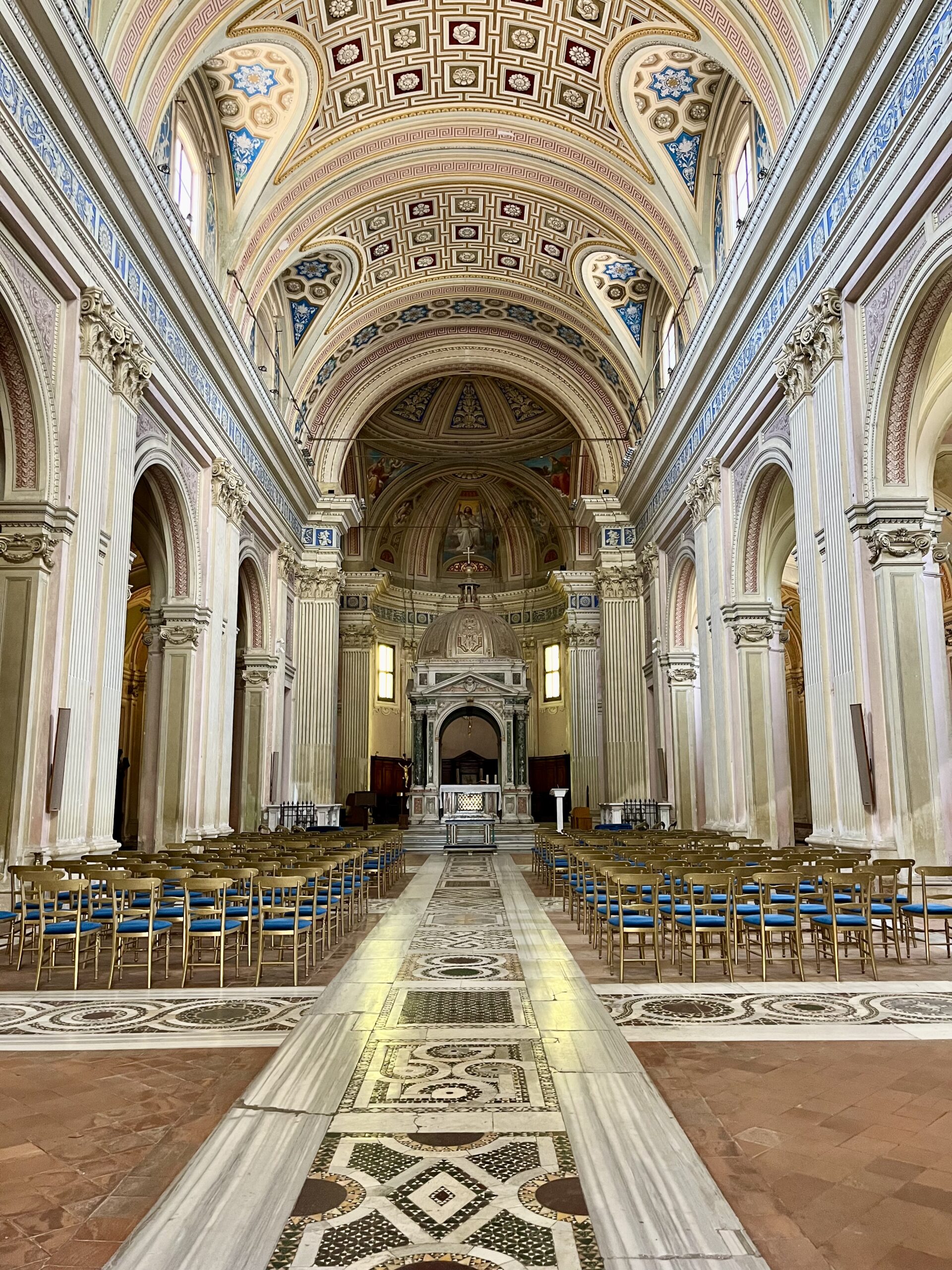

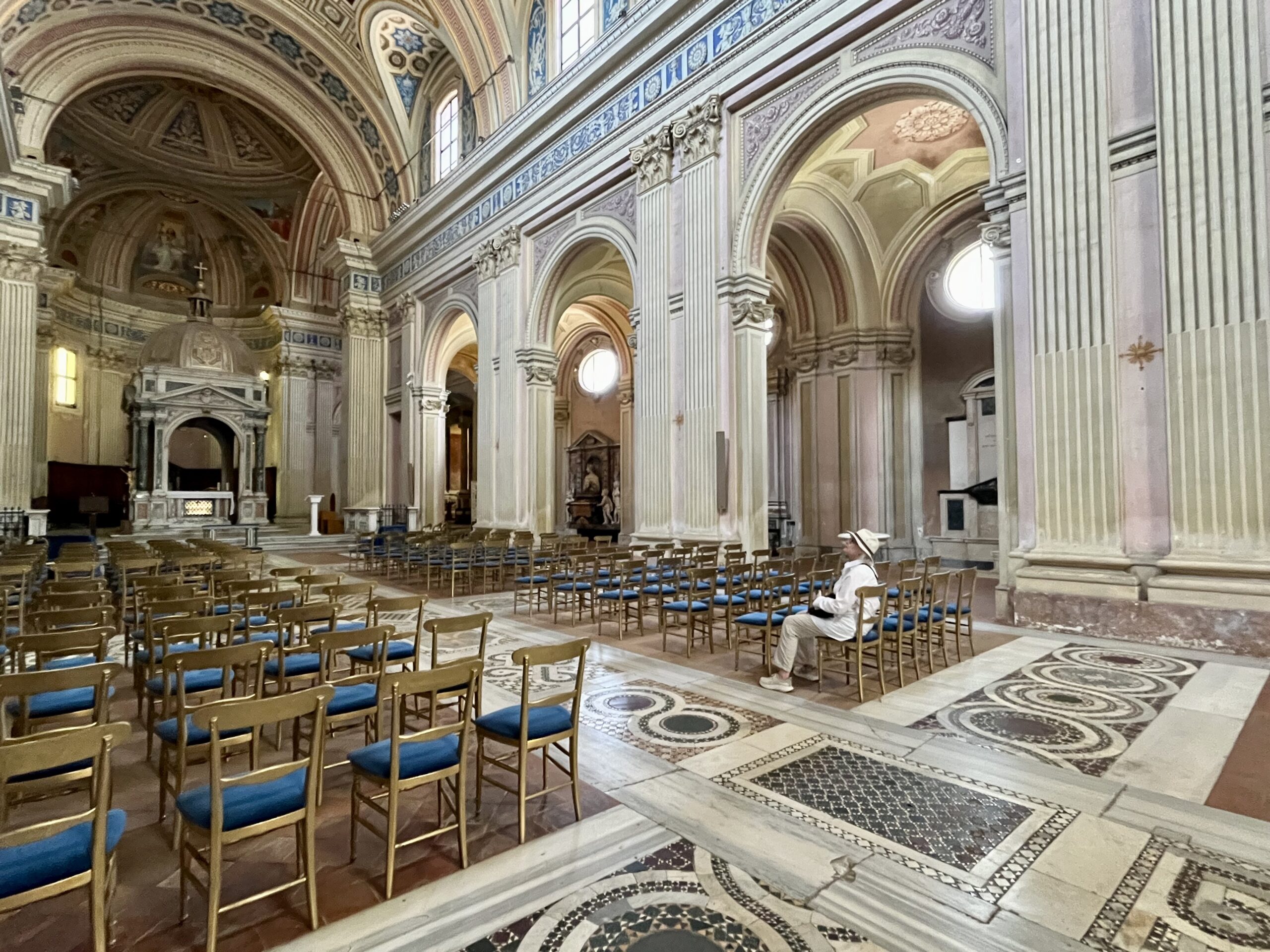
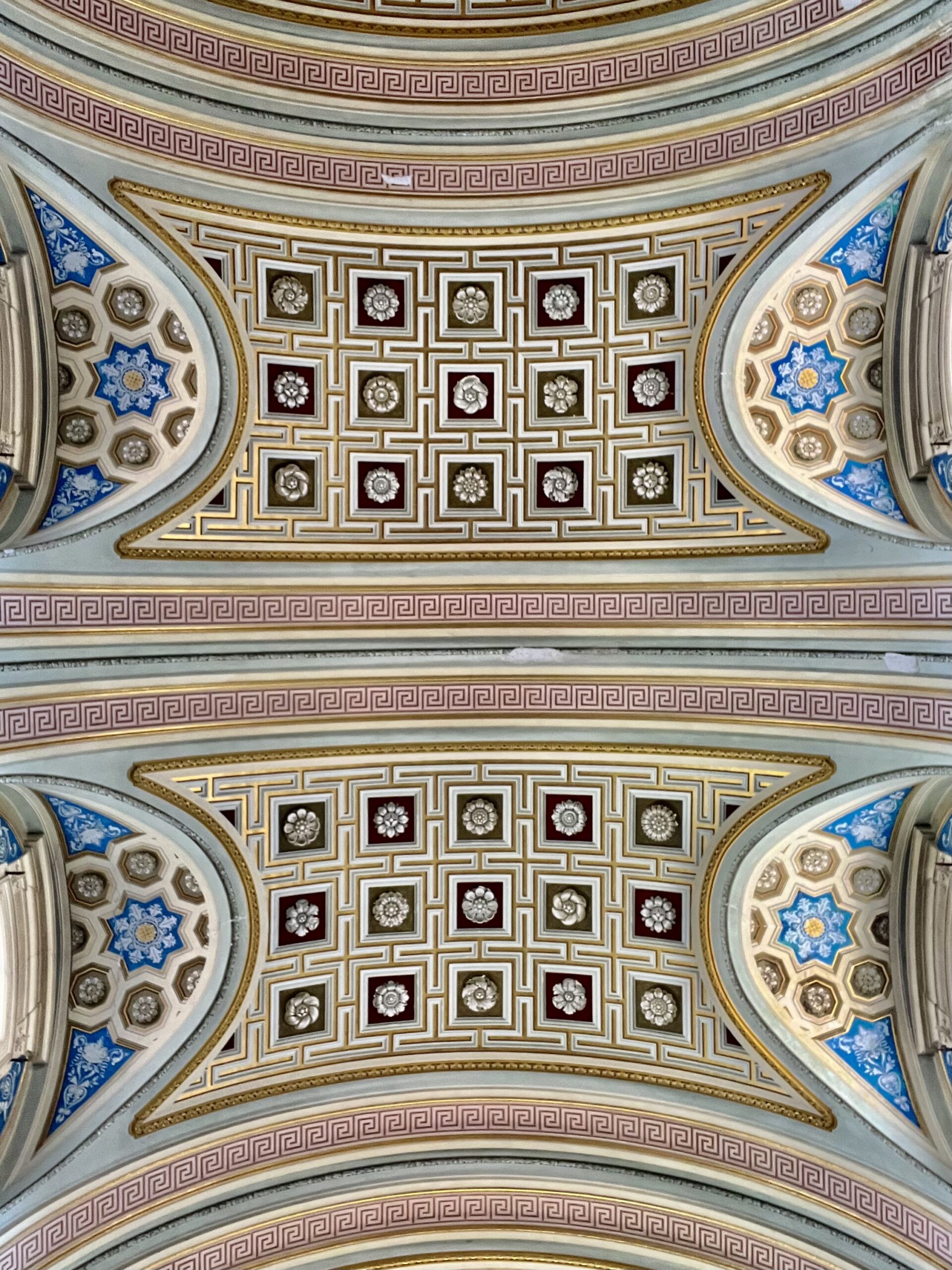
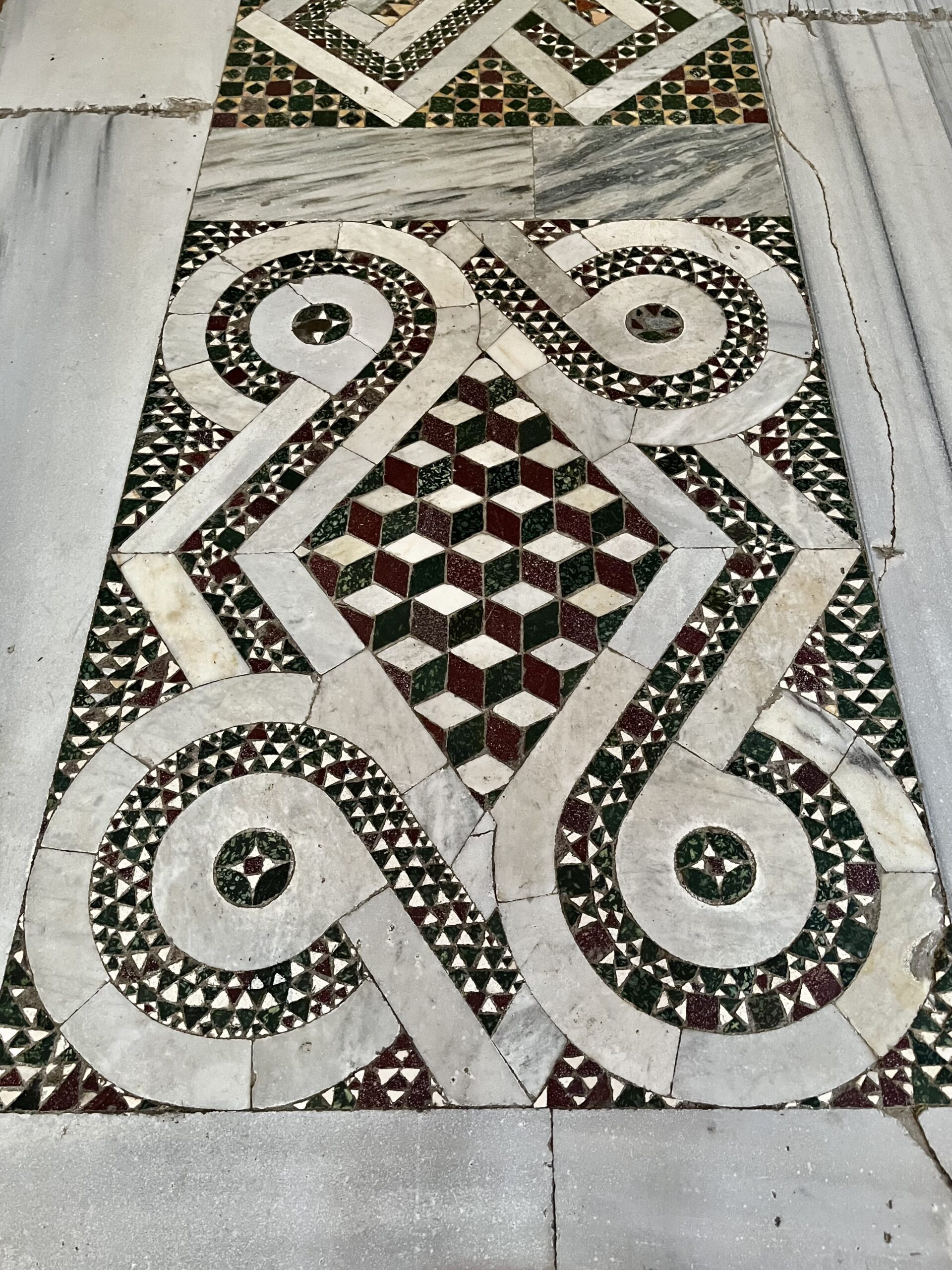
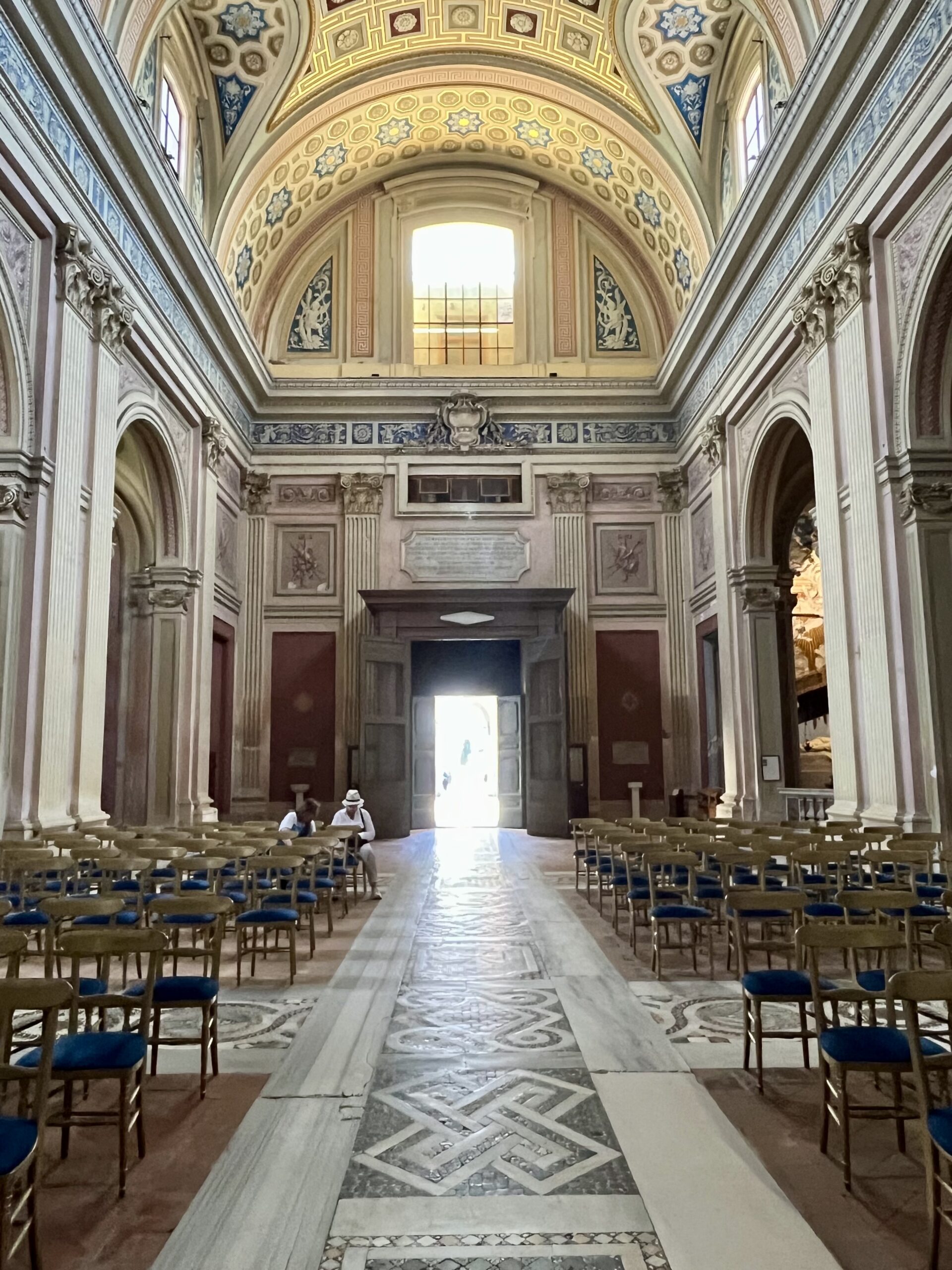
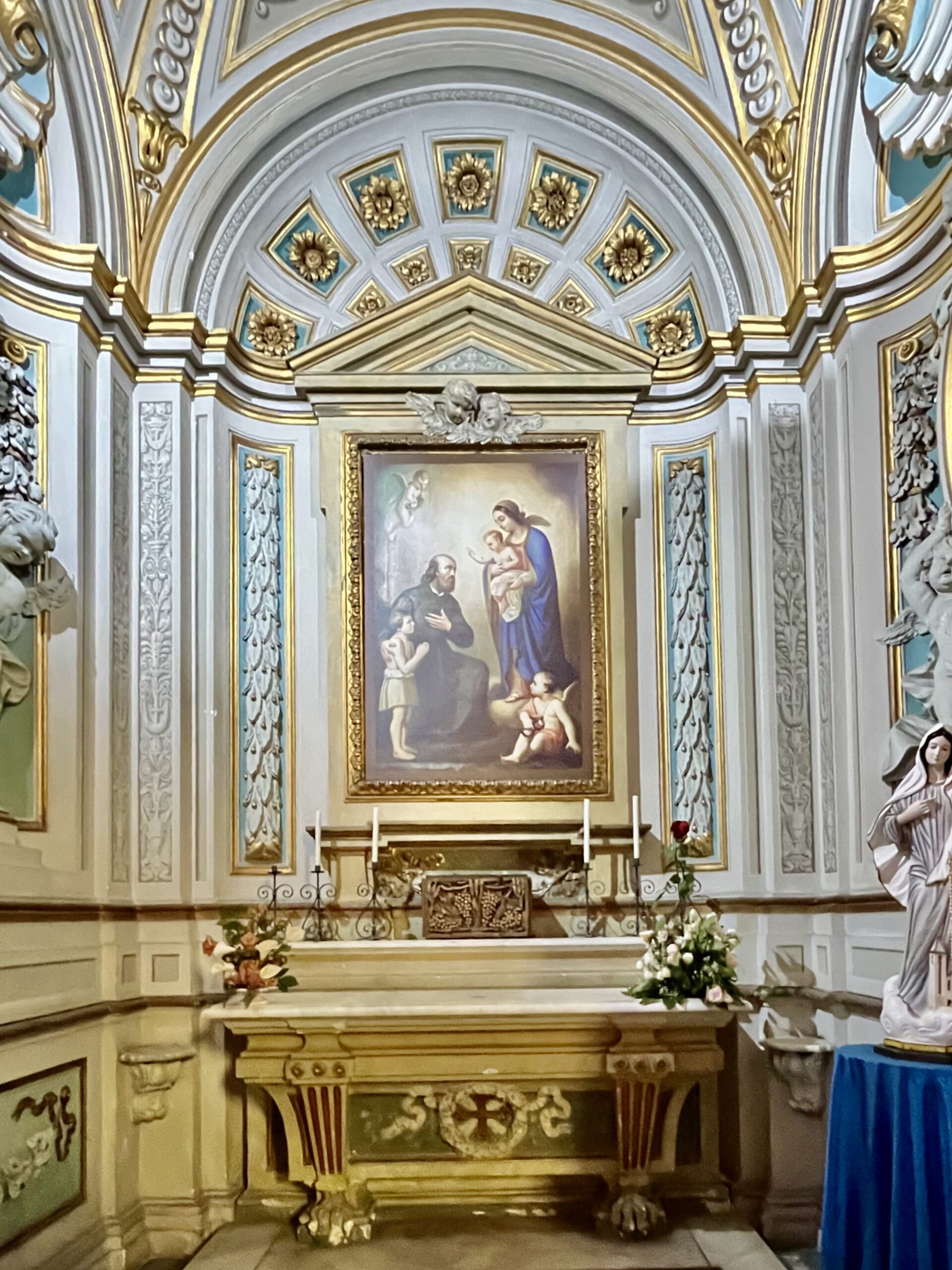
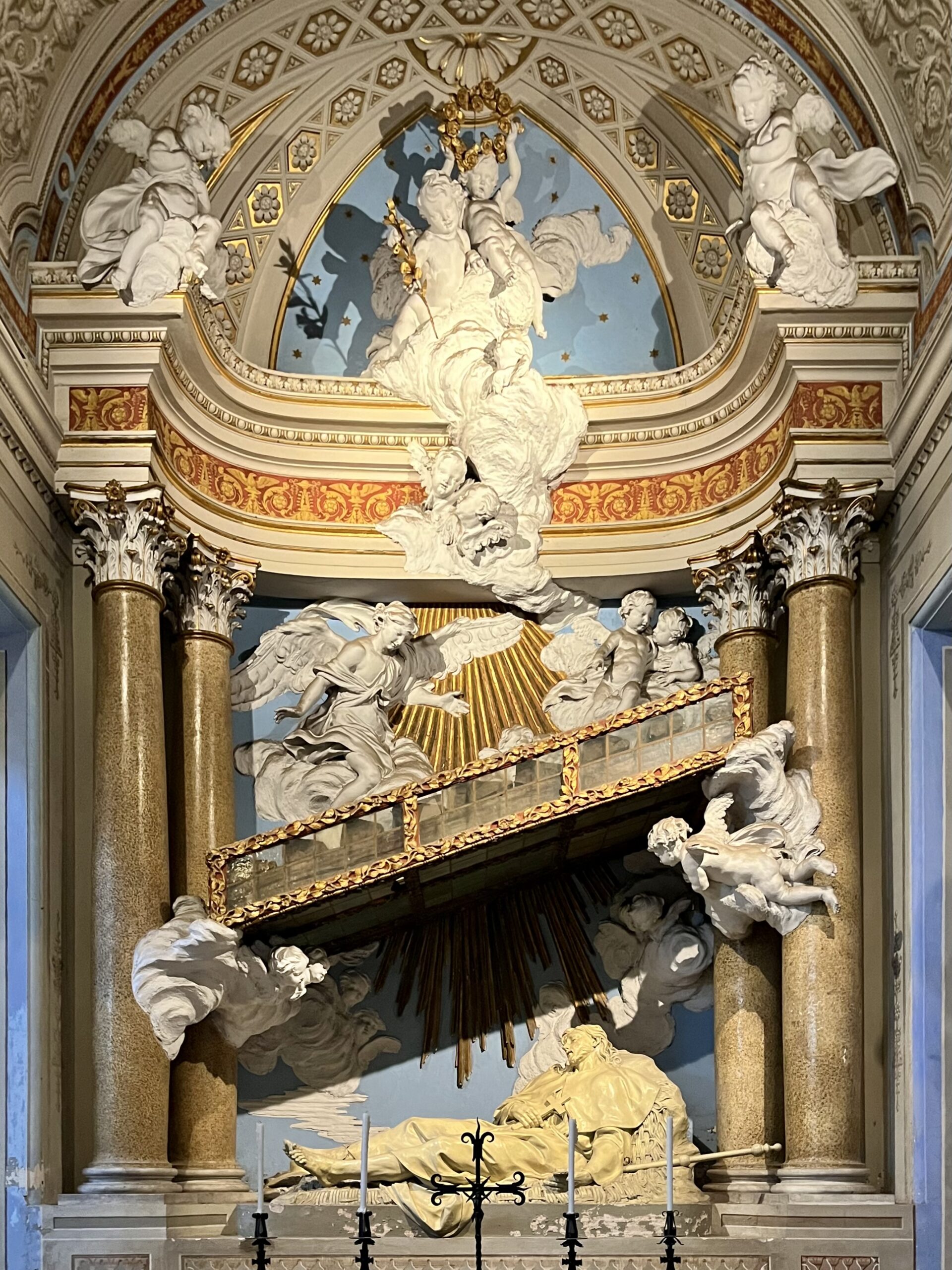
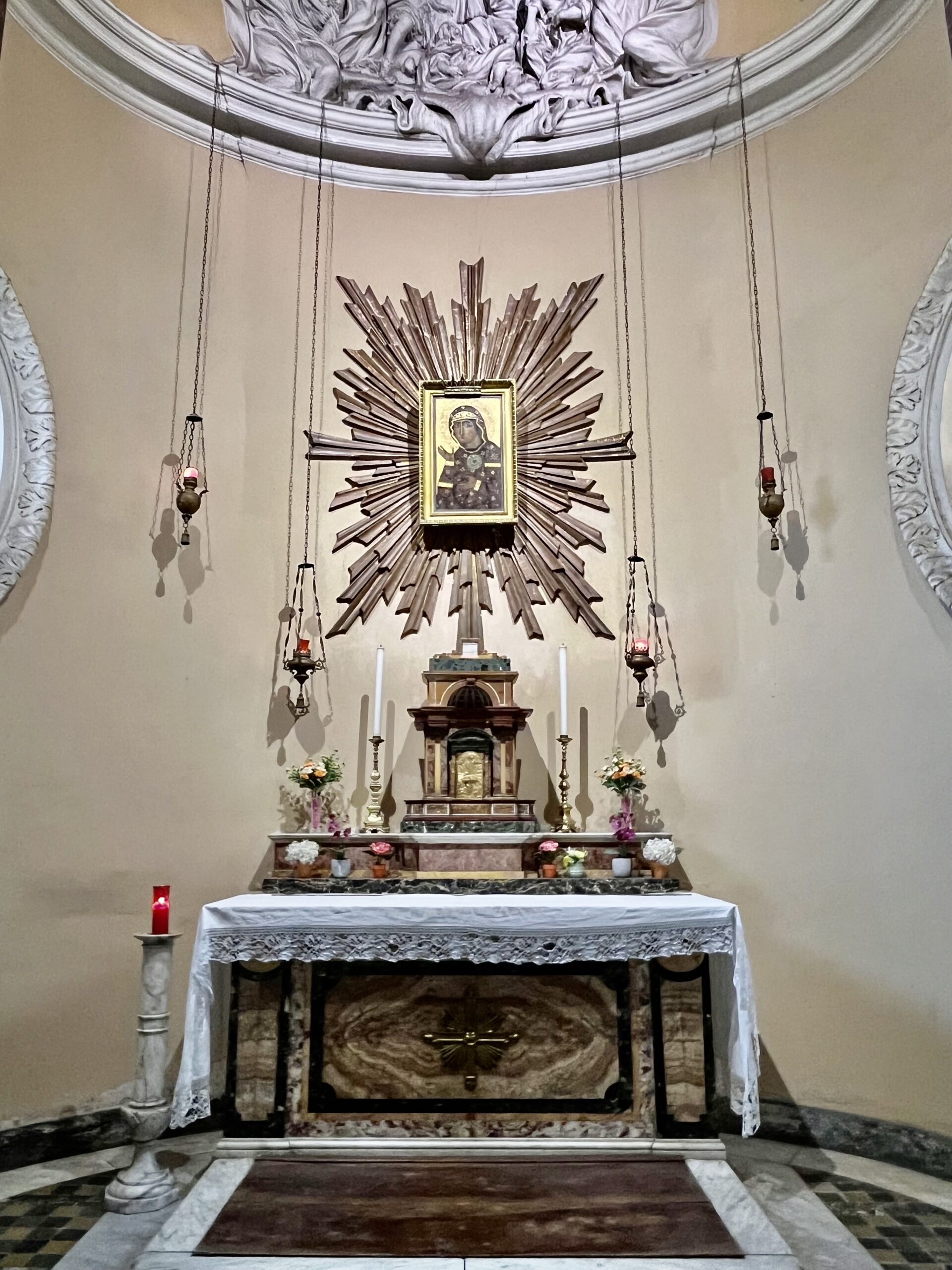
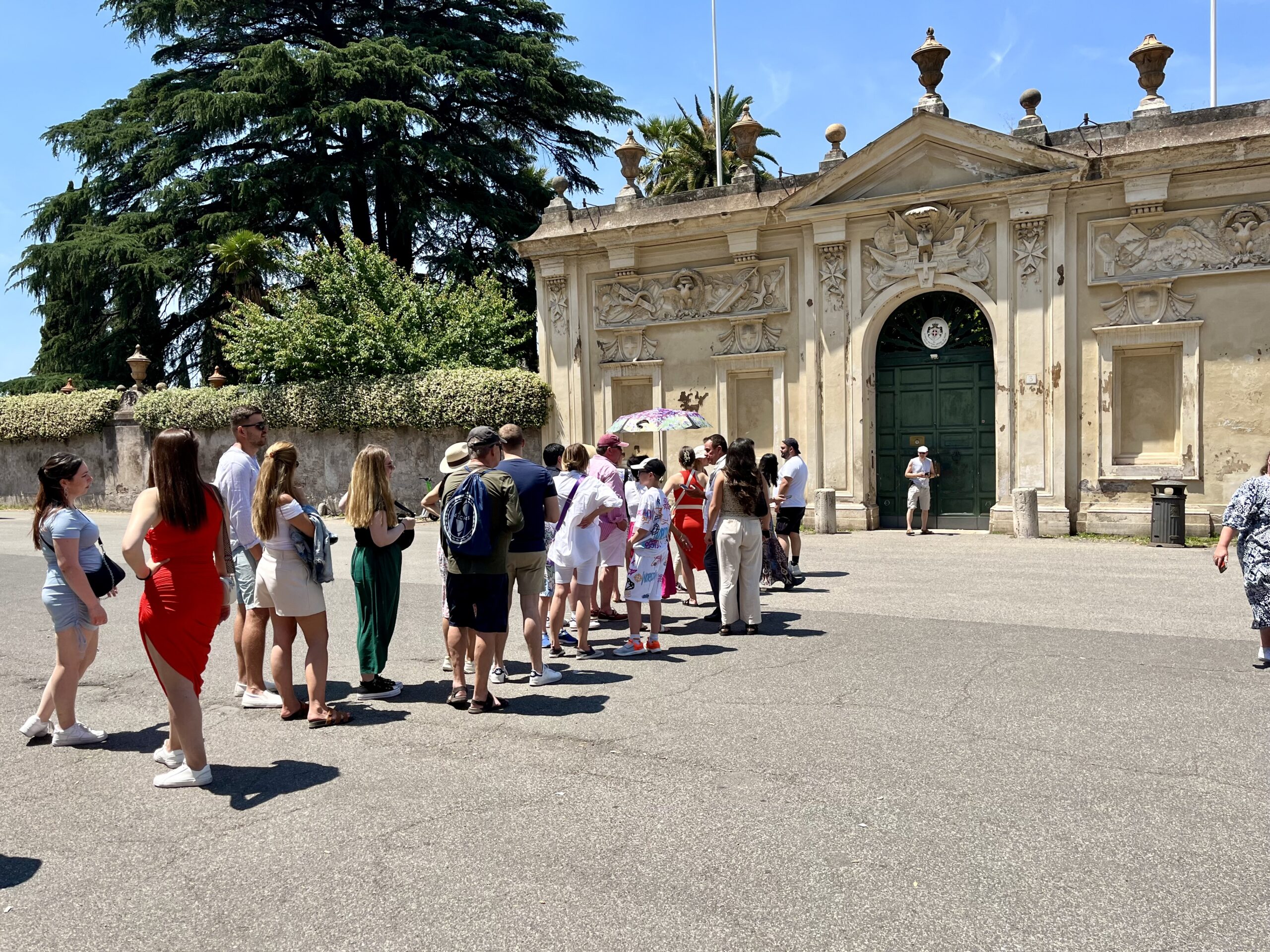
A few years ago we were the only people here.
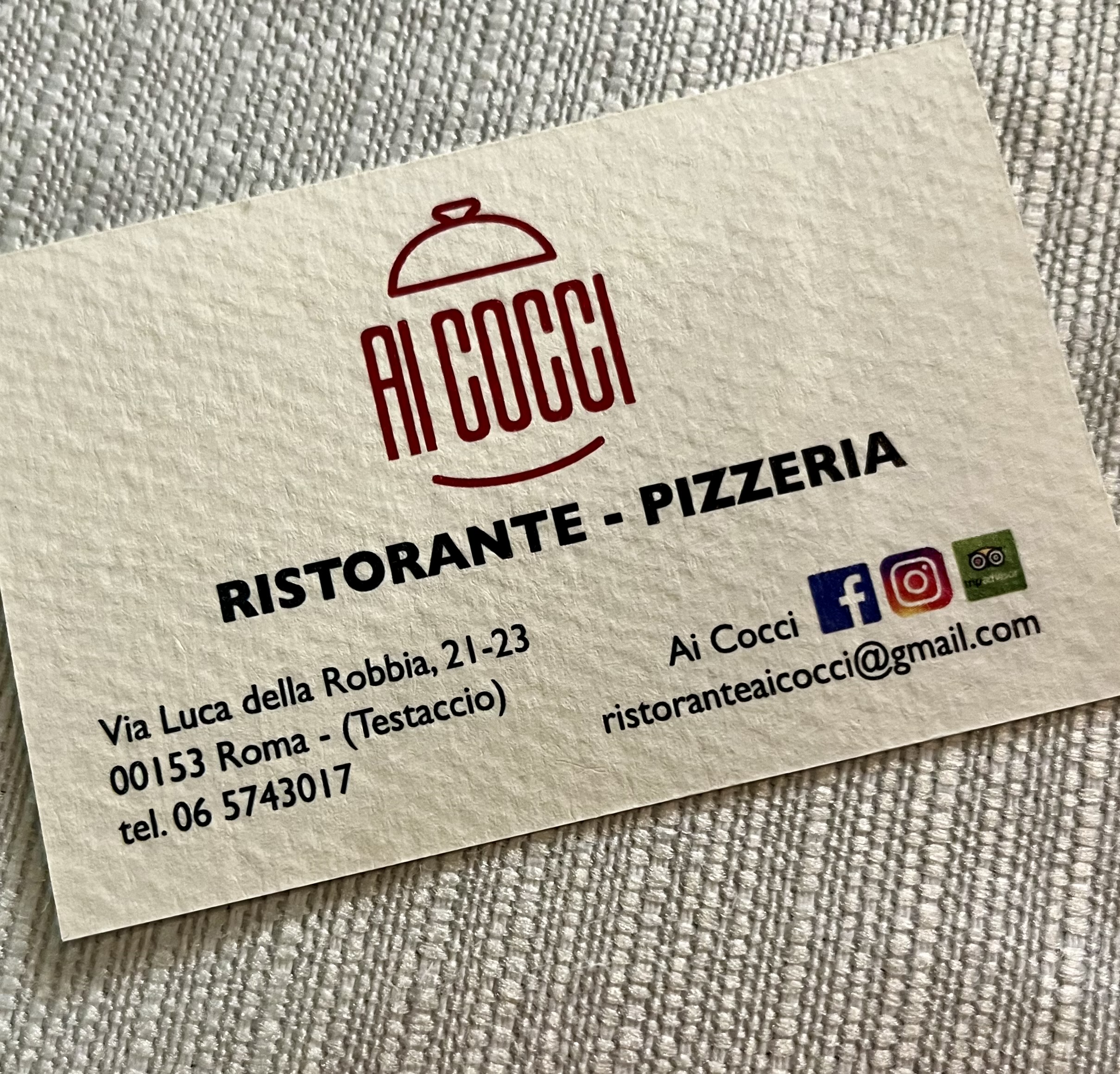
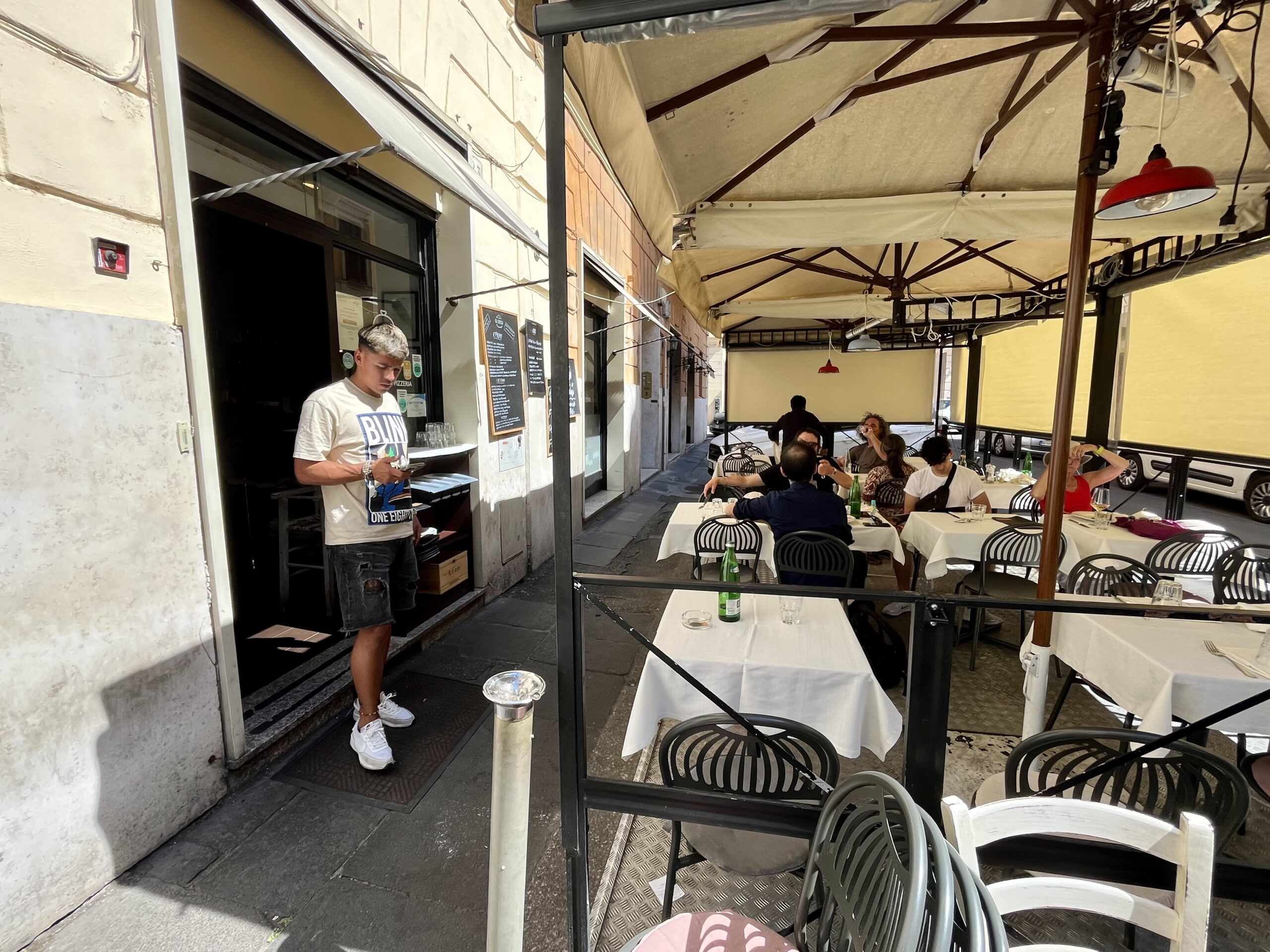
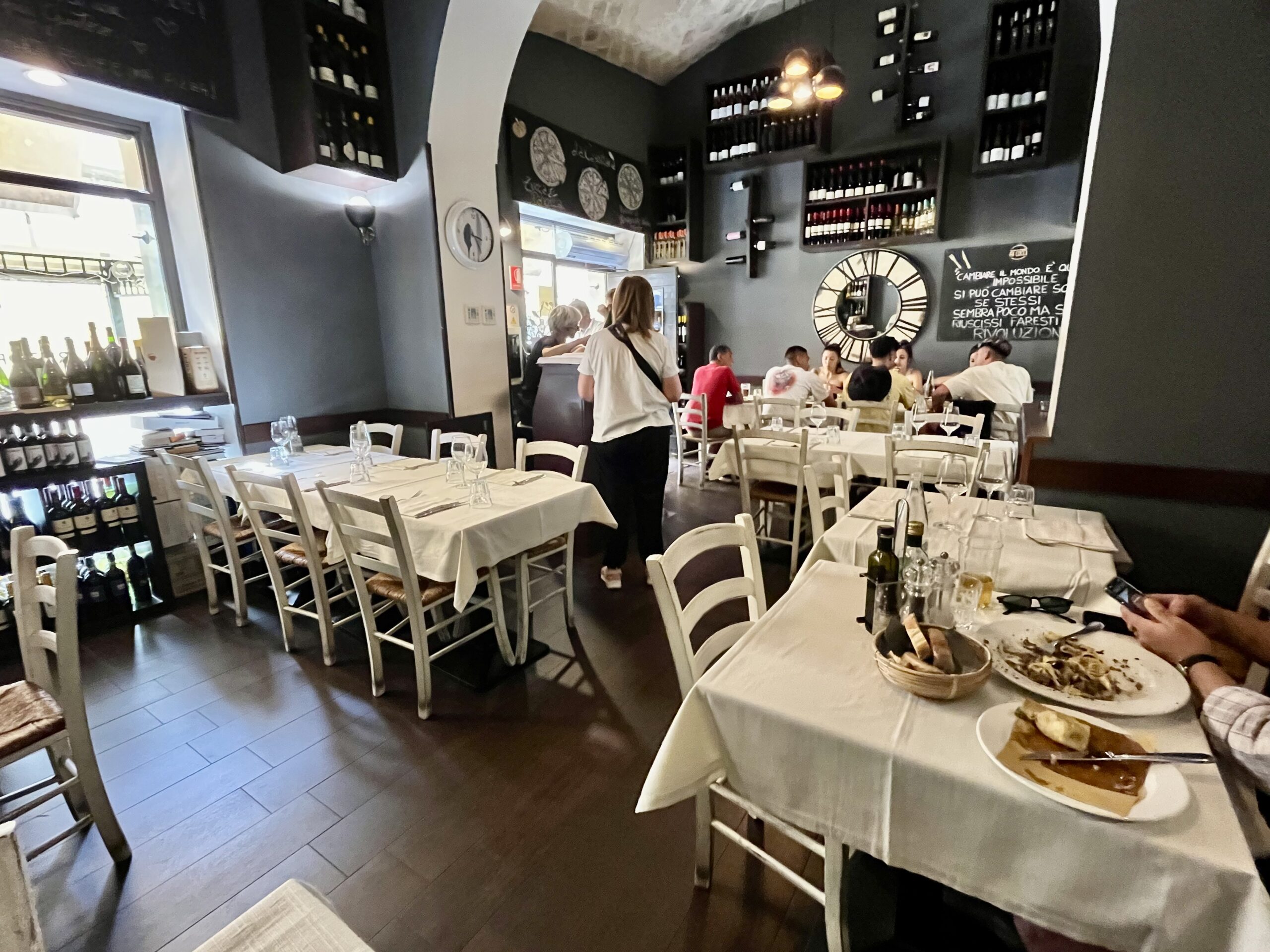
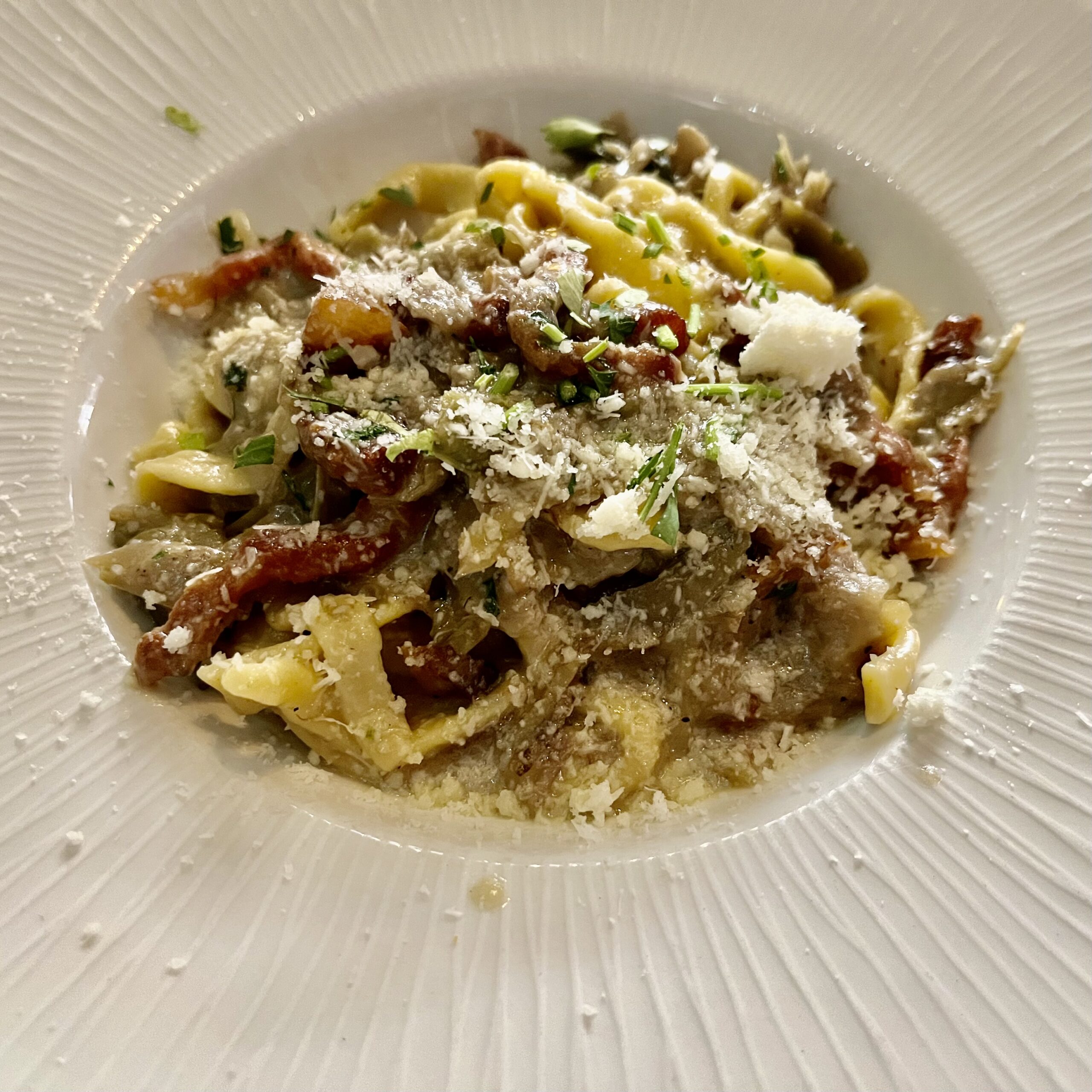
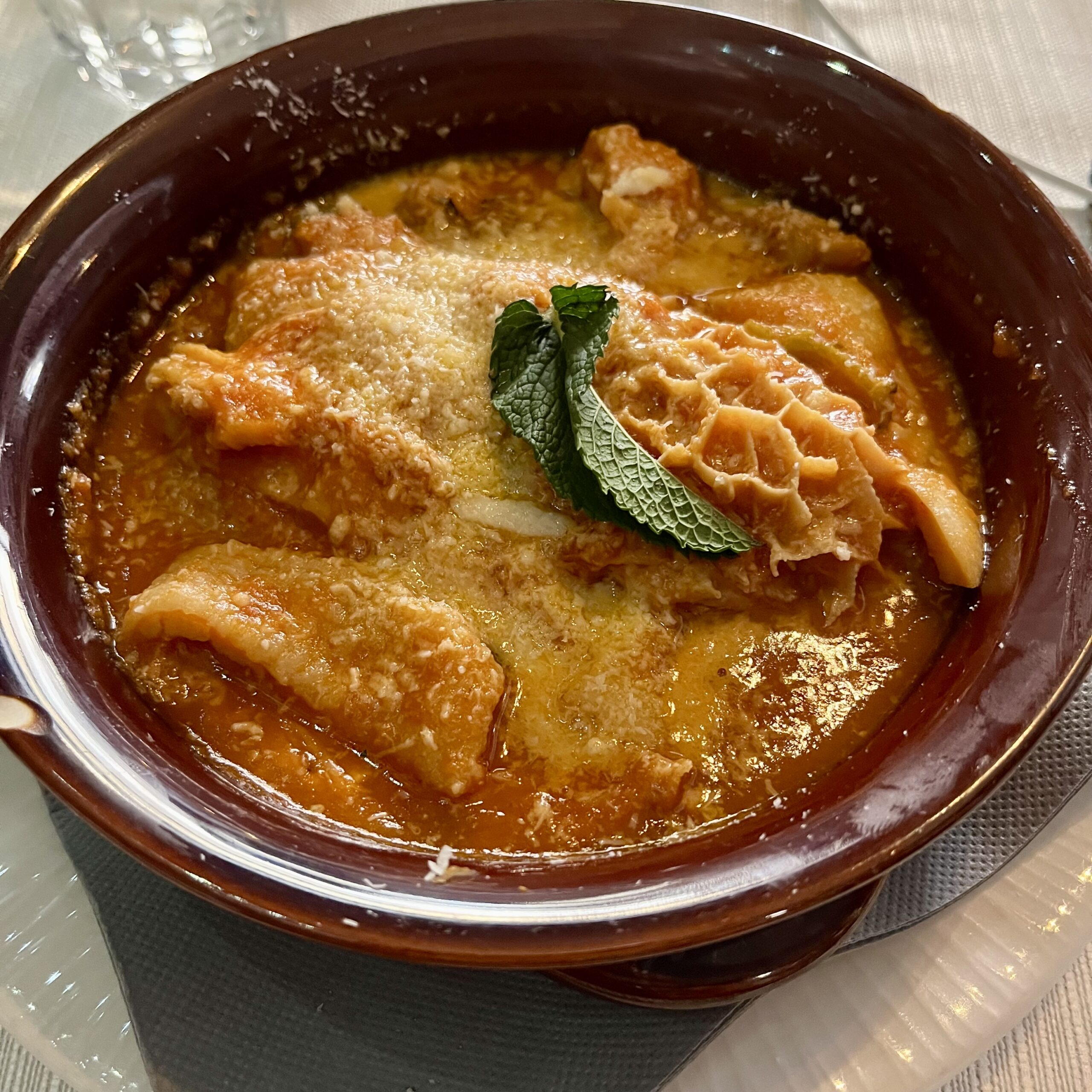
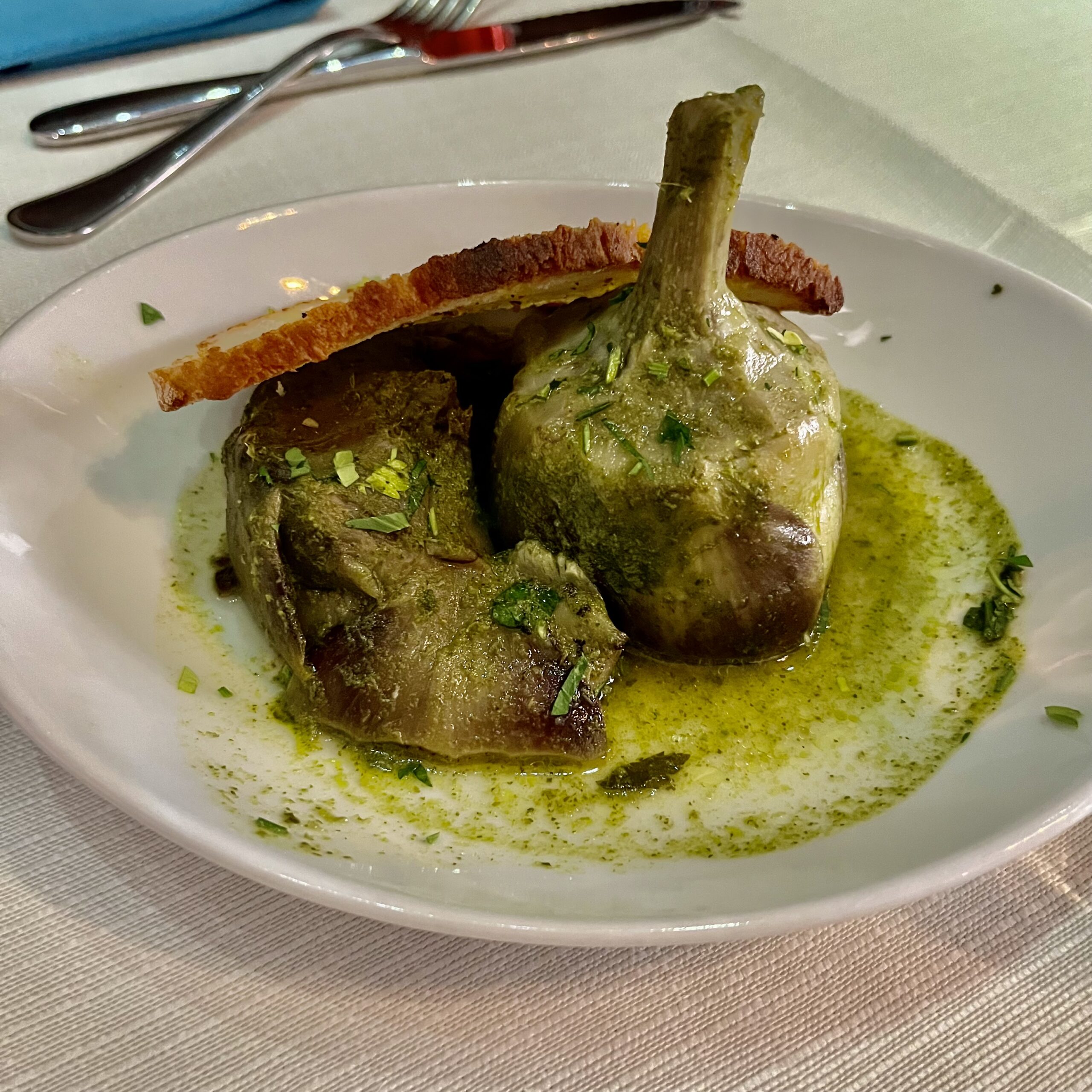
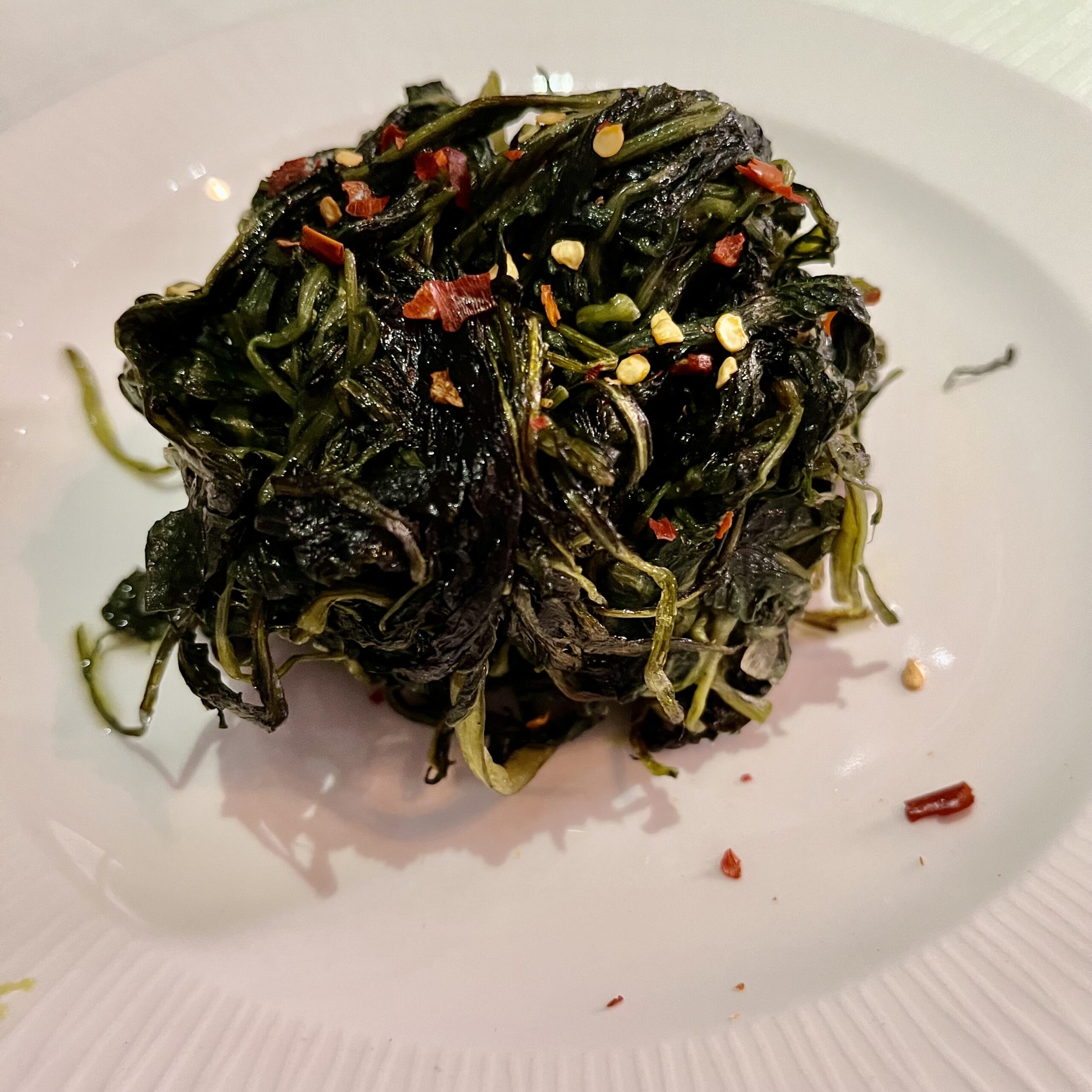
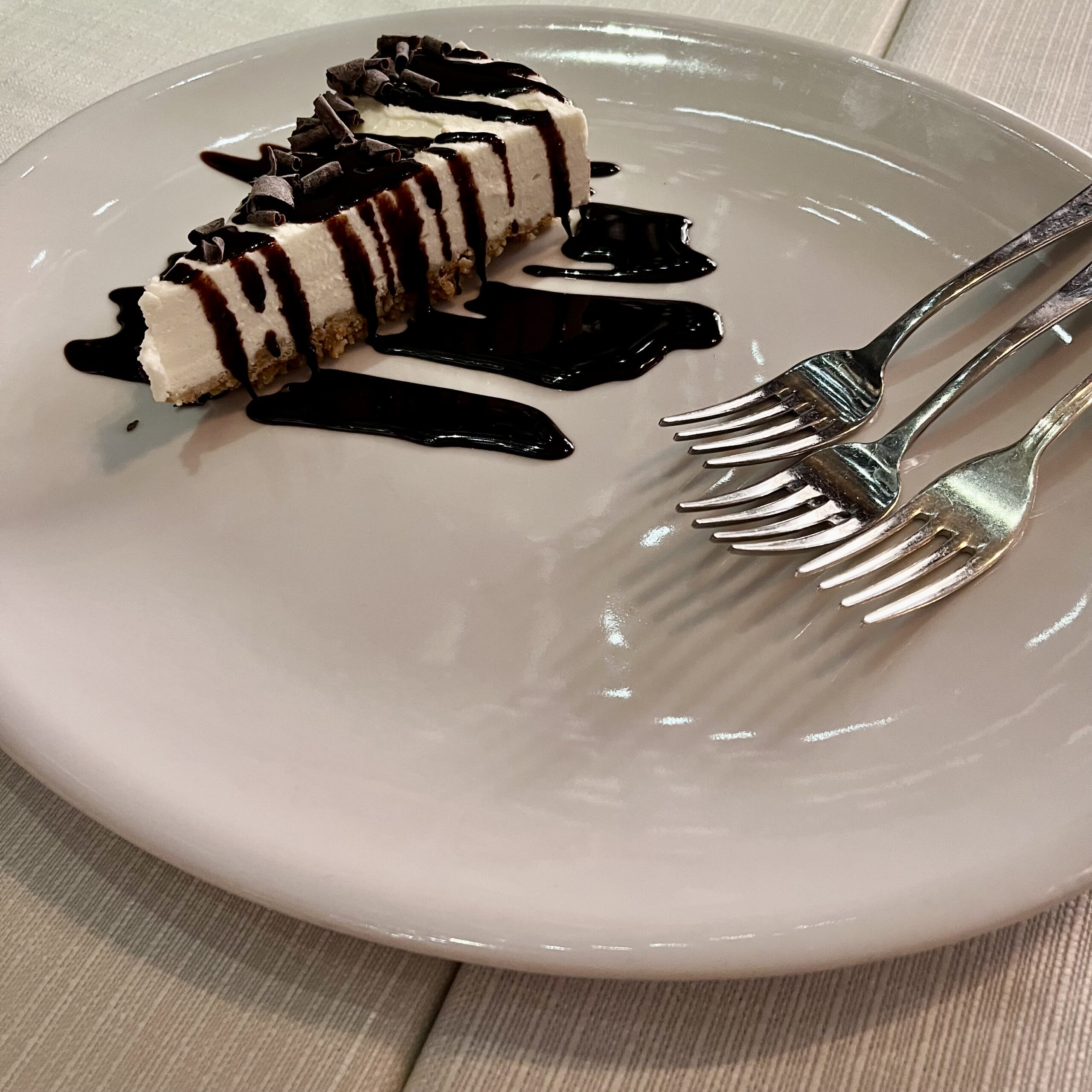
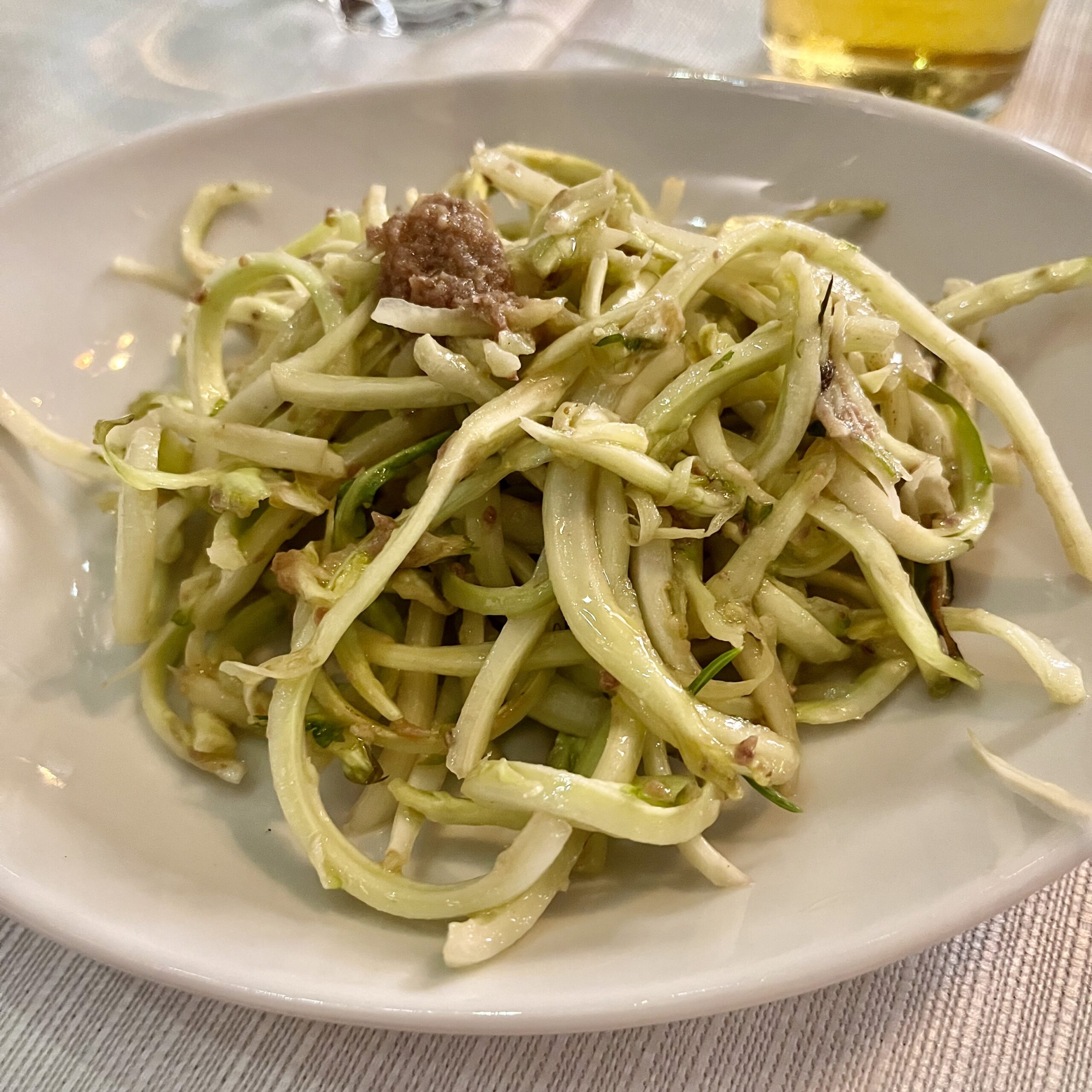
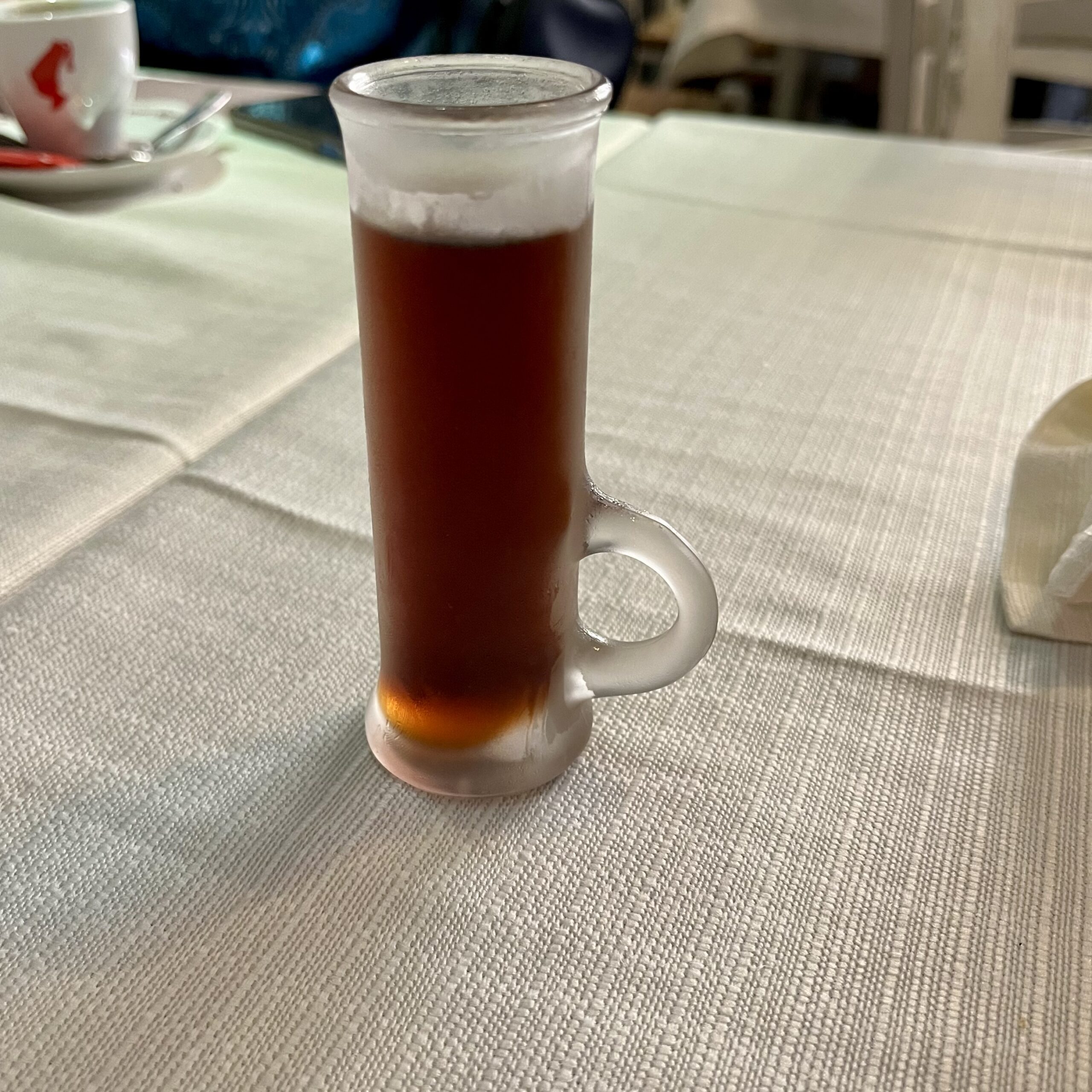
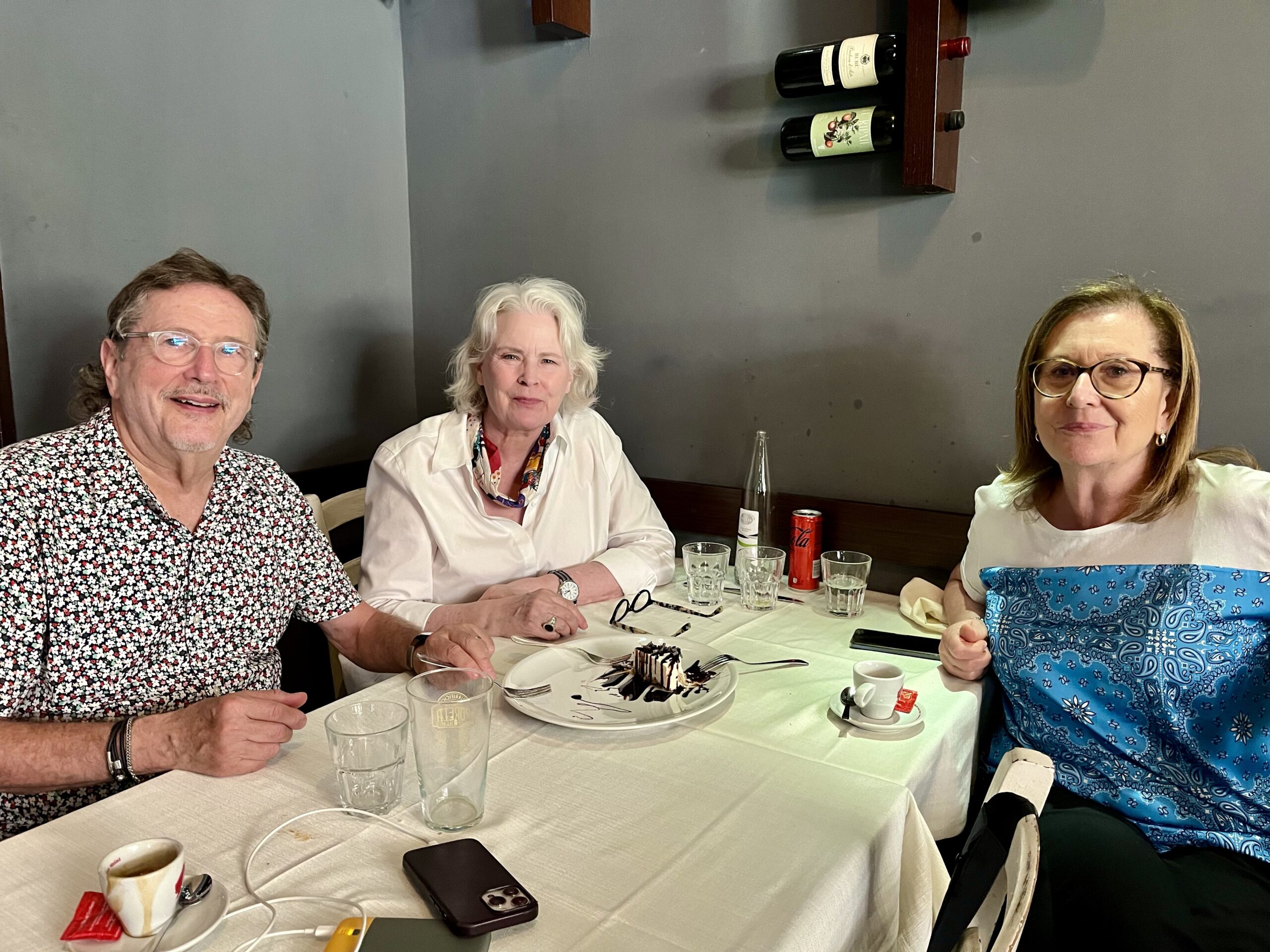
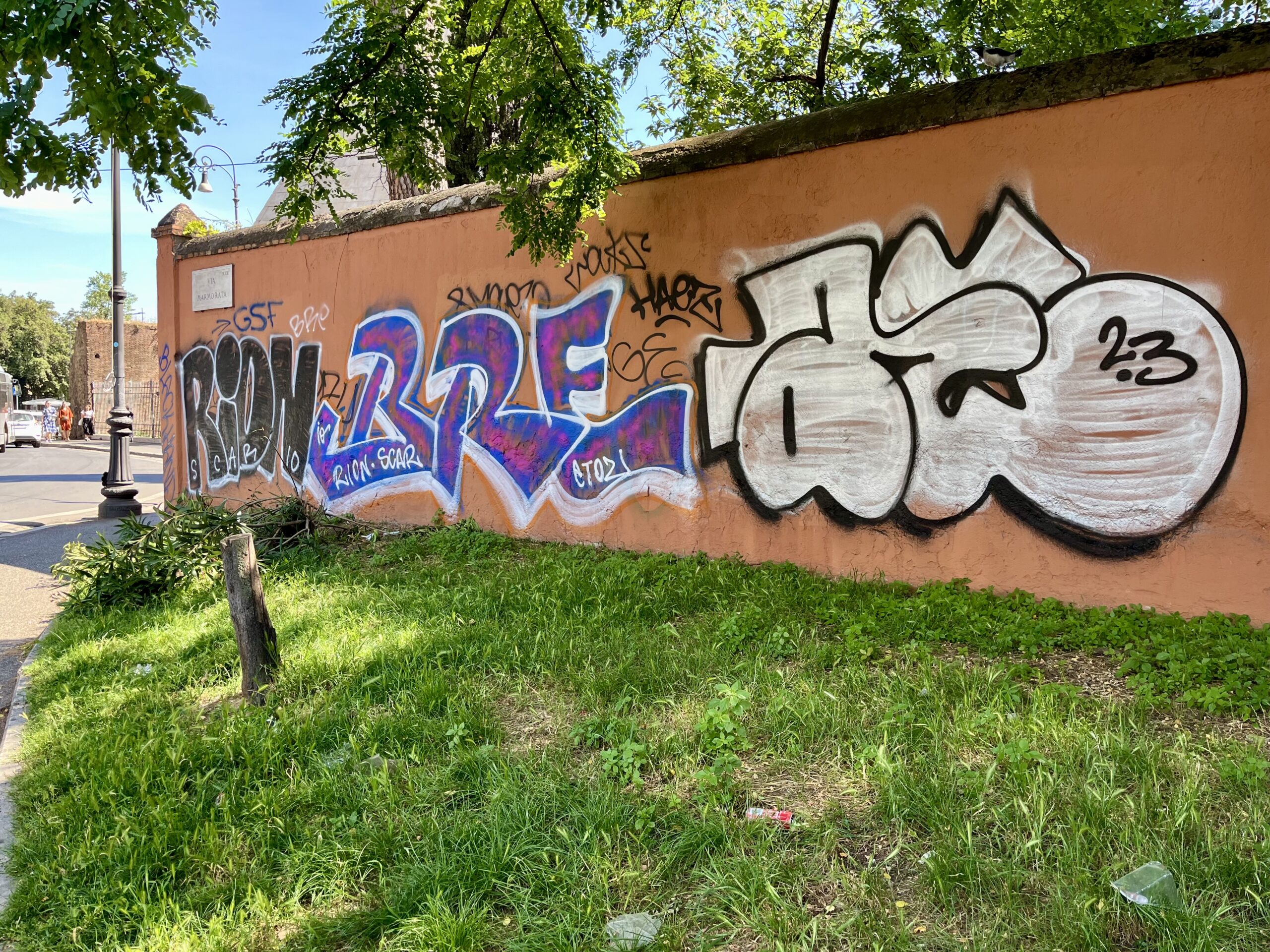
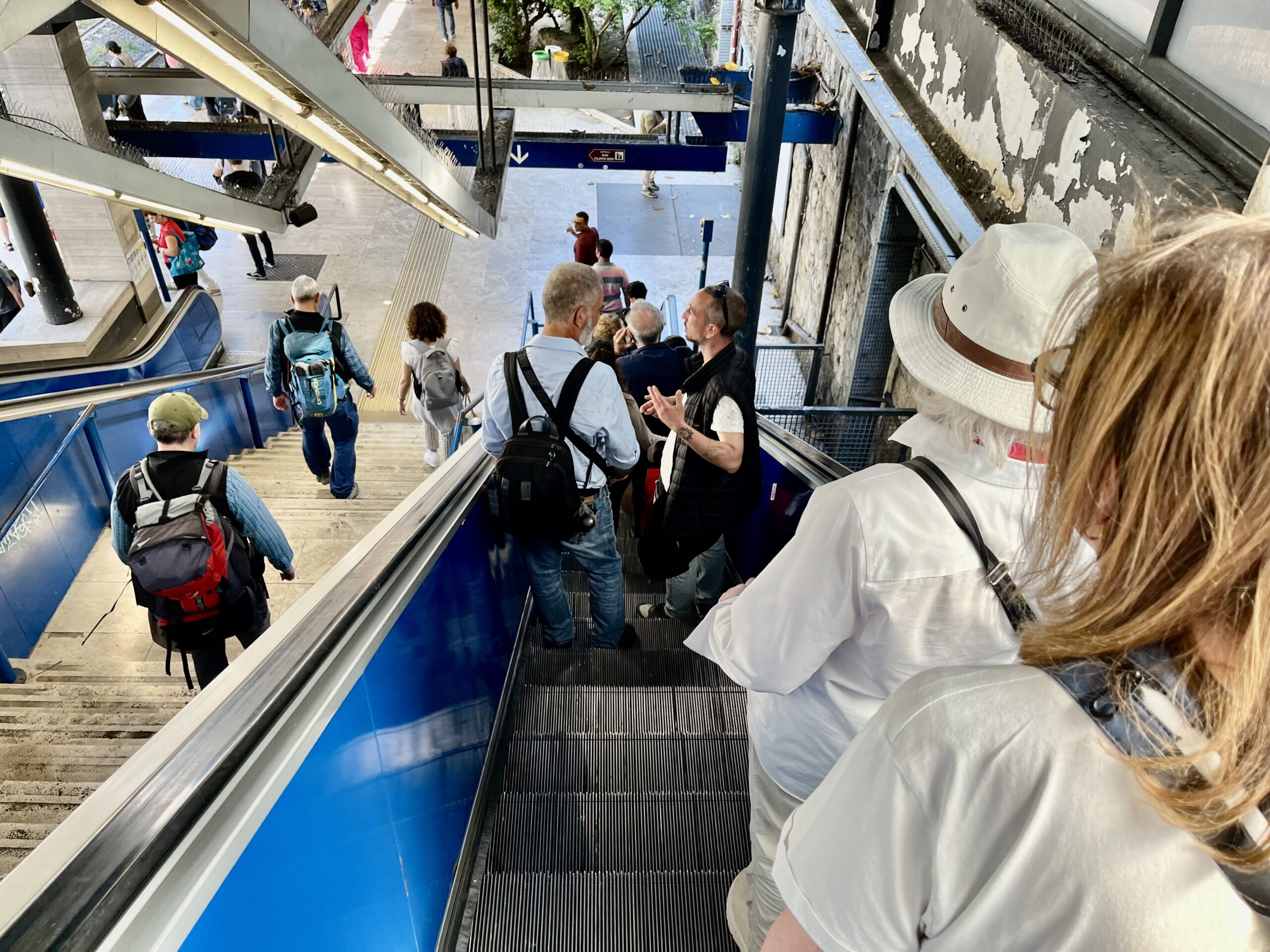
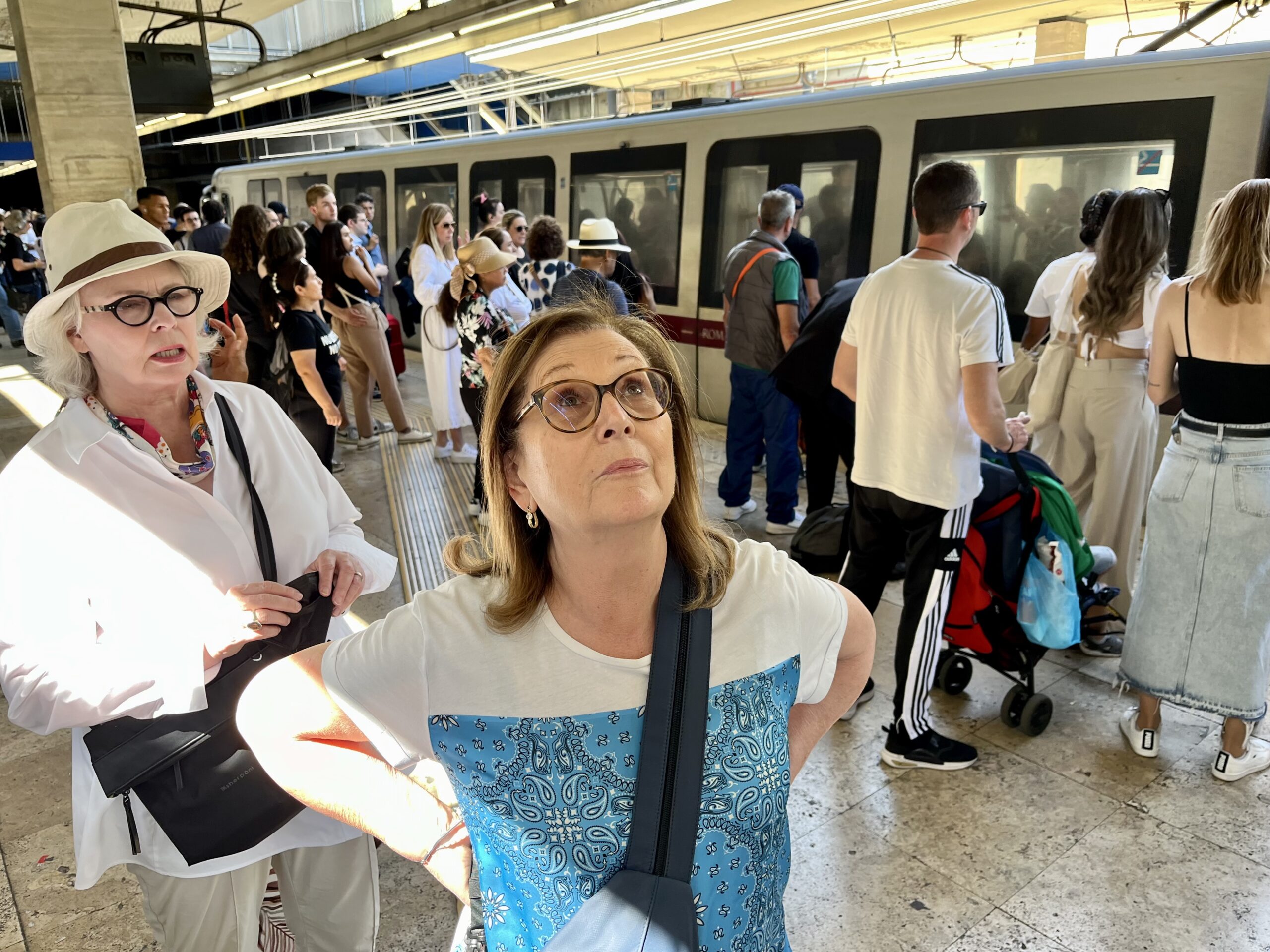
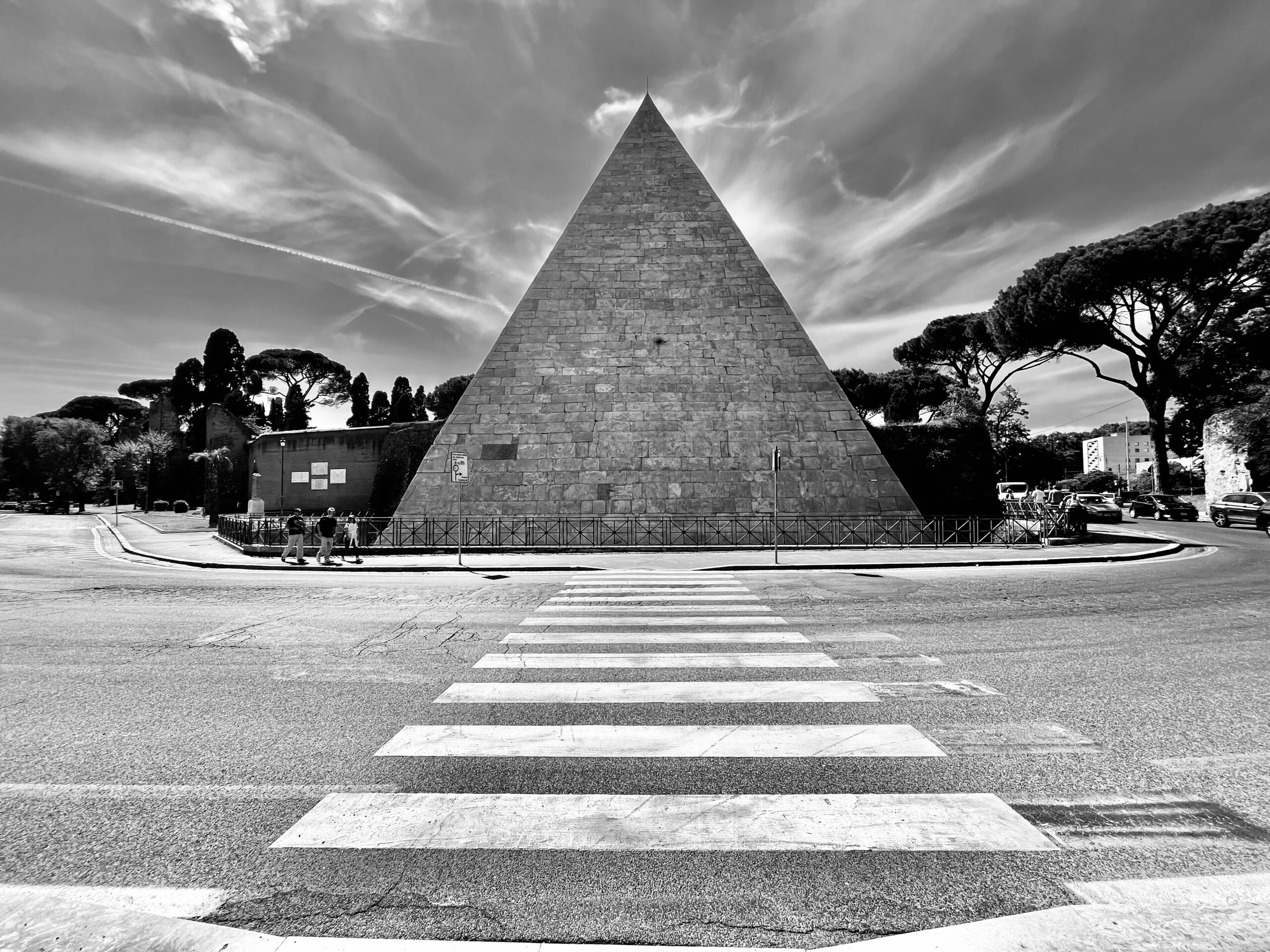
Dinner plus Bonnie and Liam Watching George of the Jungle
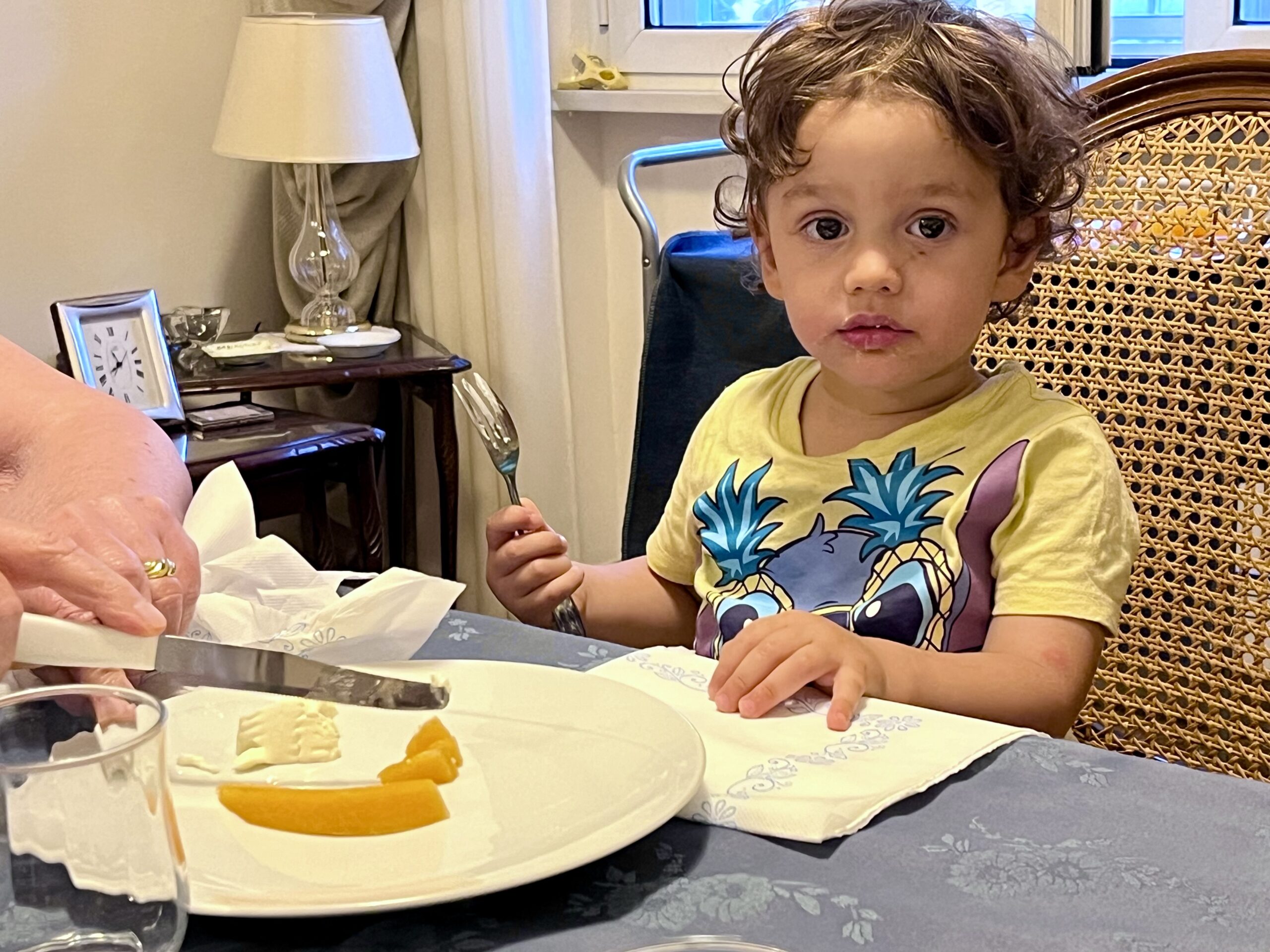
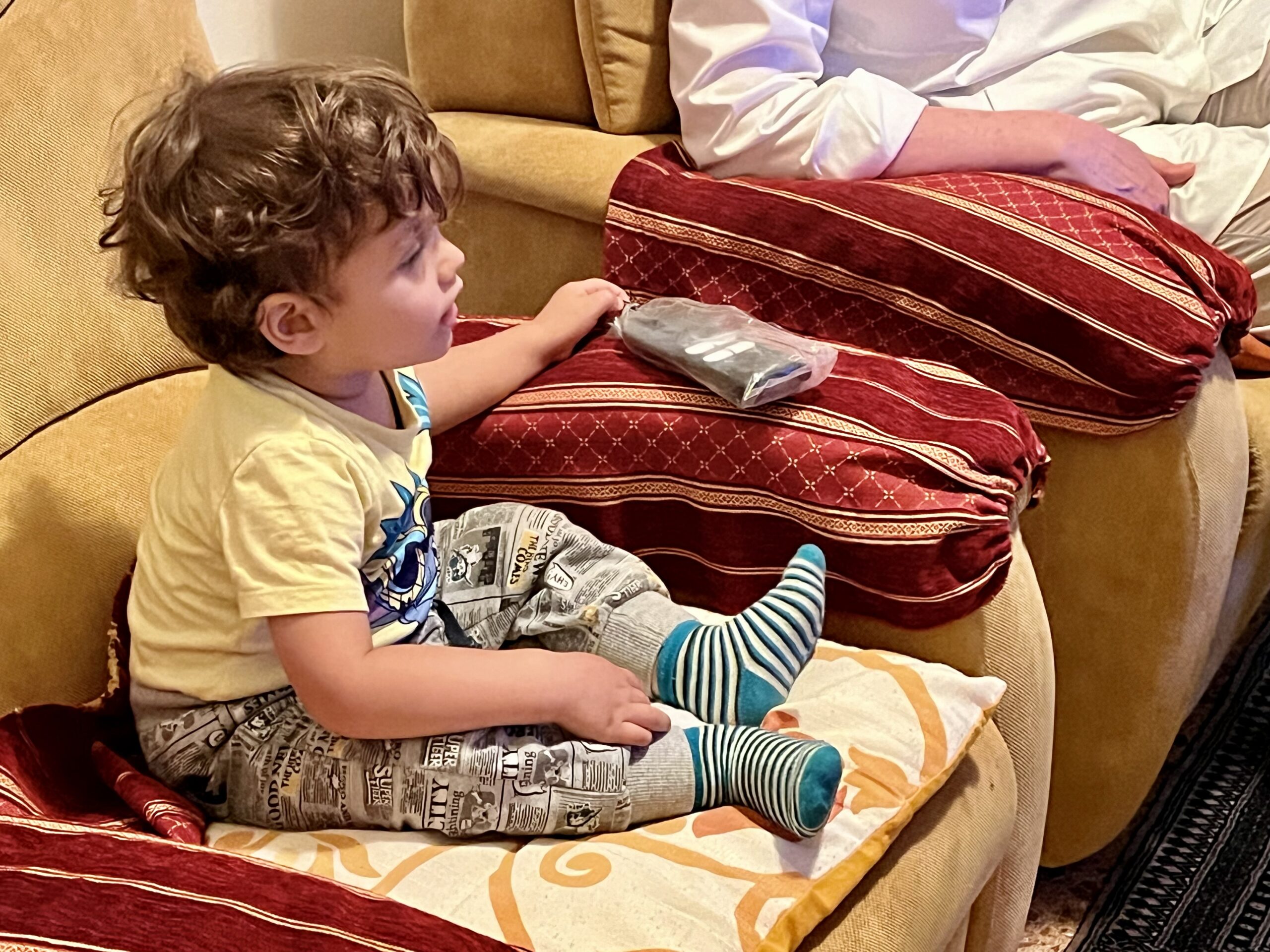
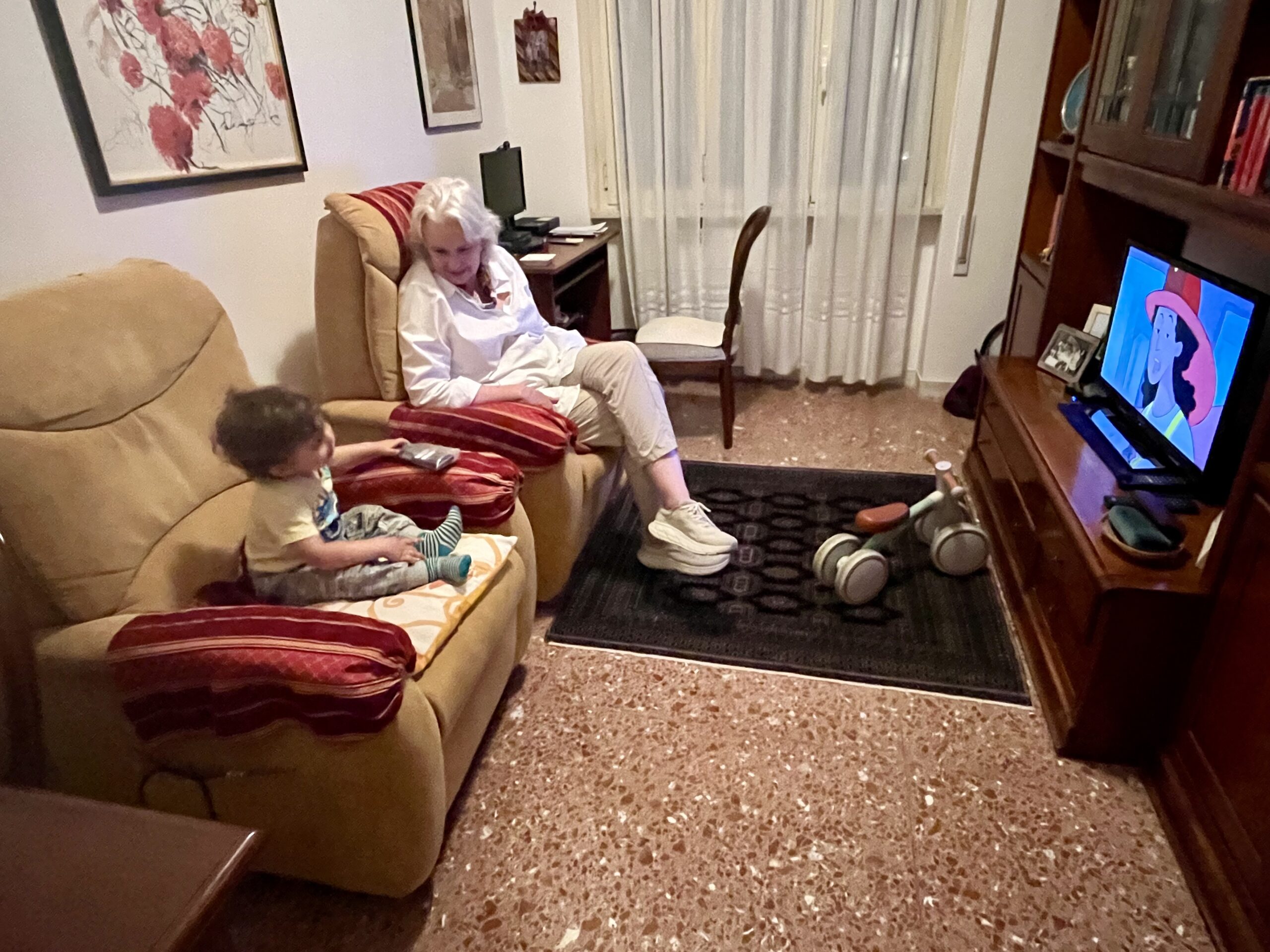
Next Excursion
The next day Bonnie picked the destinations, hoping to avoid crowds and heat, and Luciana came along with us. First stop, MACRO—Museum of Contemporary Art of Rome. We visited one of its two locations at a former brewery in the Salario quartiere. The interior redesign is dramatic and fun. Robert and Luciana were baffled by some of the art installations. Others were good. The buffet lunch was excellent.
After lunch Luciana dropped us off nearby at Gli Spazi Culturali di Villa Torlonia on Via Nomentana. Robert and Bonnie have passed this villa many times in the bus on the way to and from central Rome but never stopped. The wealthy Torlonia family constructed it in the early 1800s. An extensive garden surrounds the villa along with several sizable buildings and many faux Roman ruins. We were amused that the signs explaining the history of the place never mention the most notable fact about the villa: Mussolini rented this as his residence for one lira a year beginning in the 1920s. The gardens show wear and tear, most likely from lack of adequate irrigation.
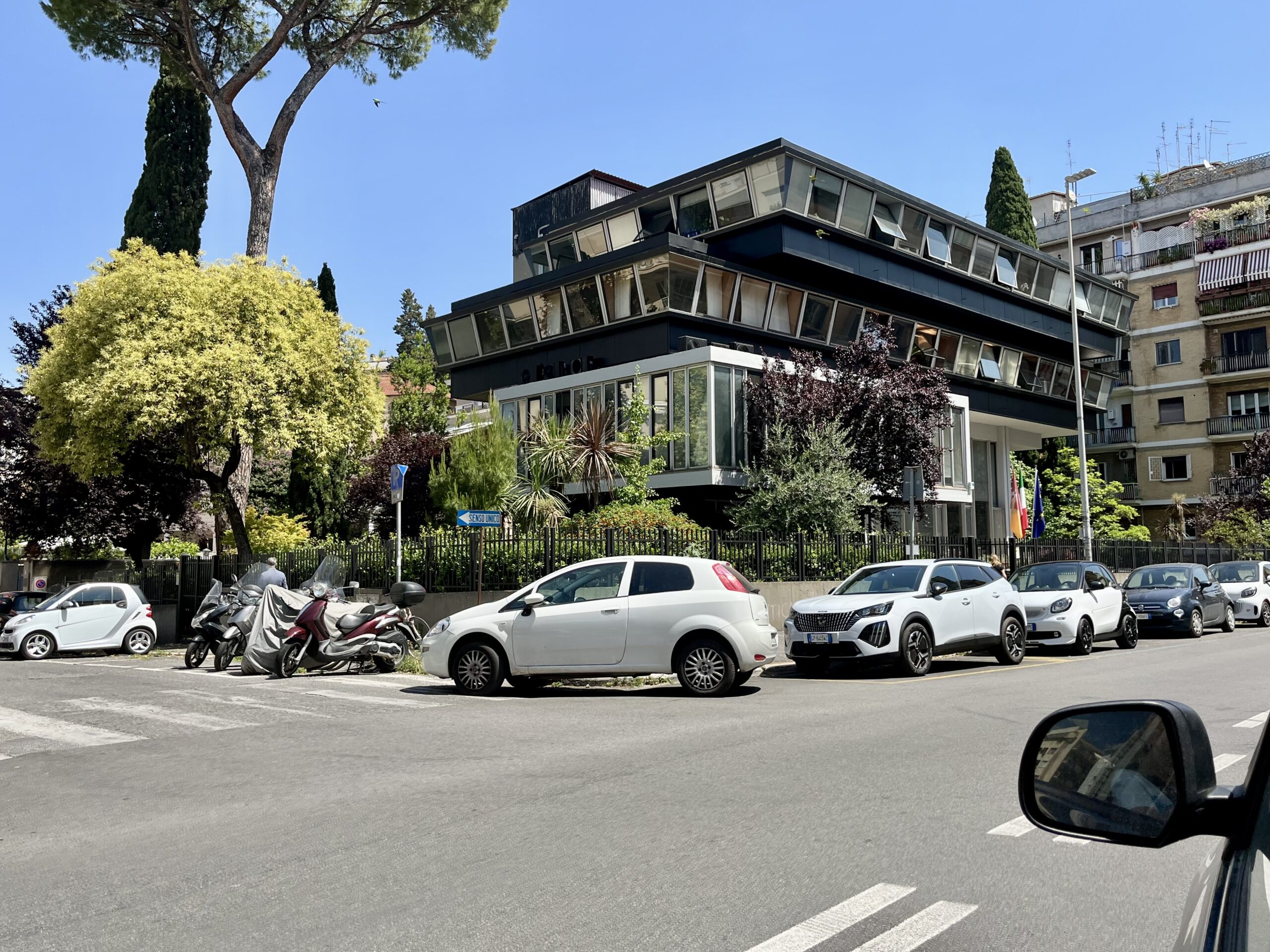
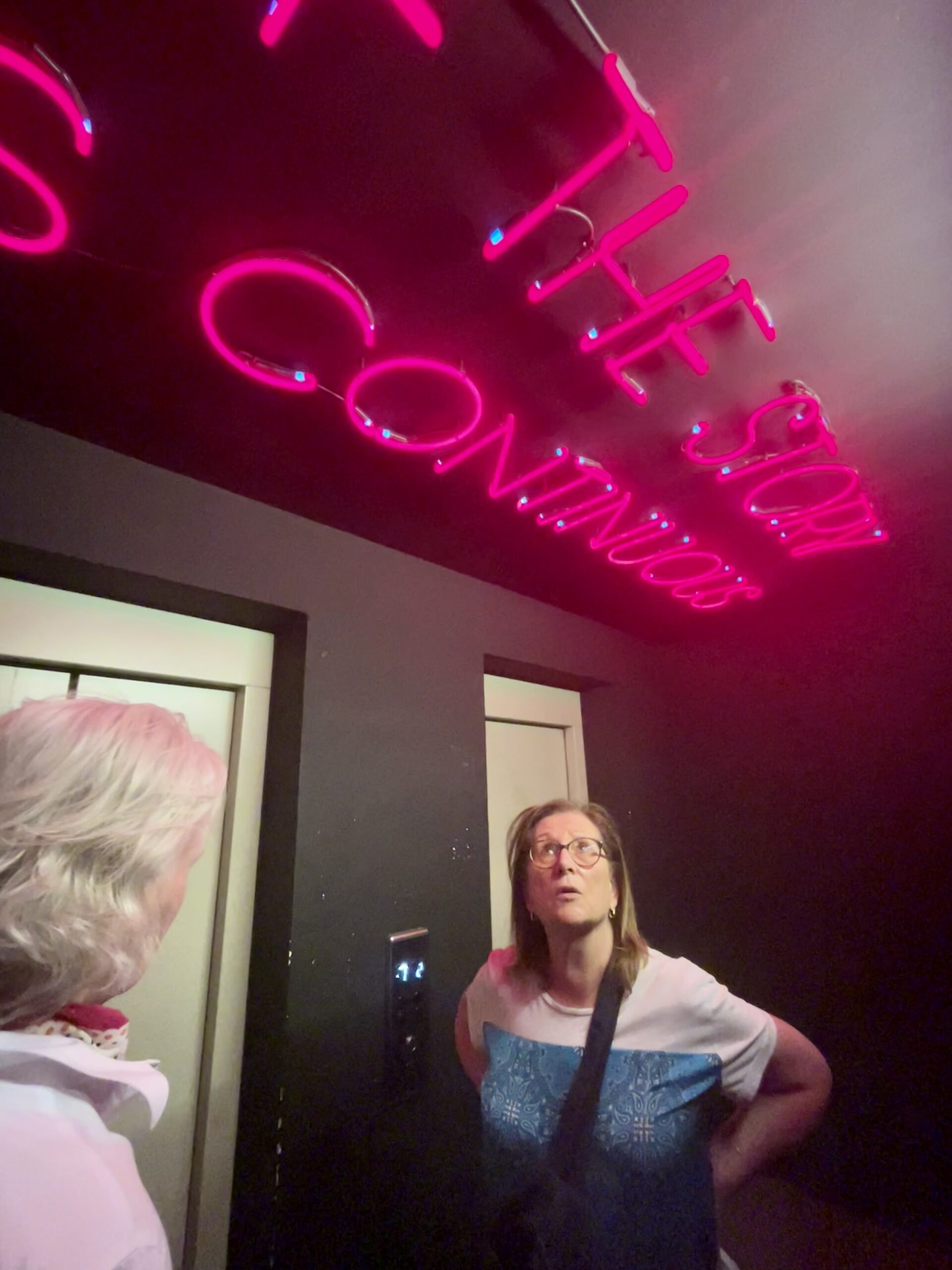
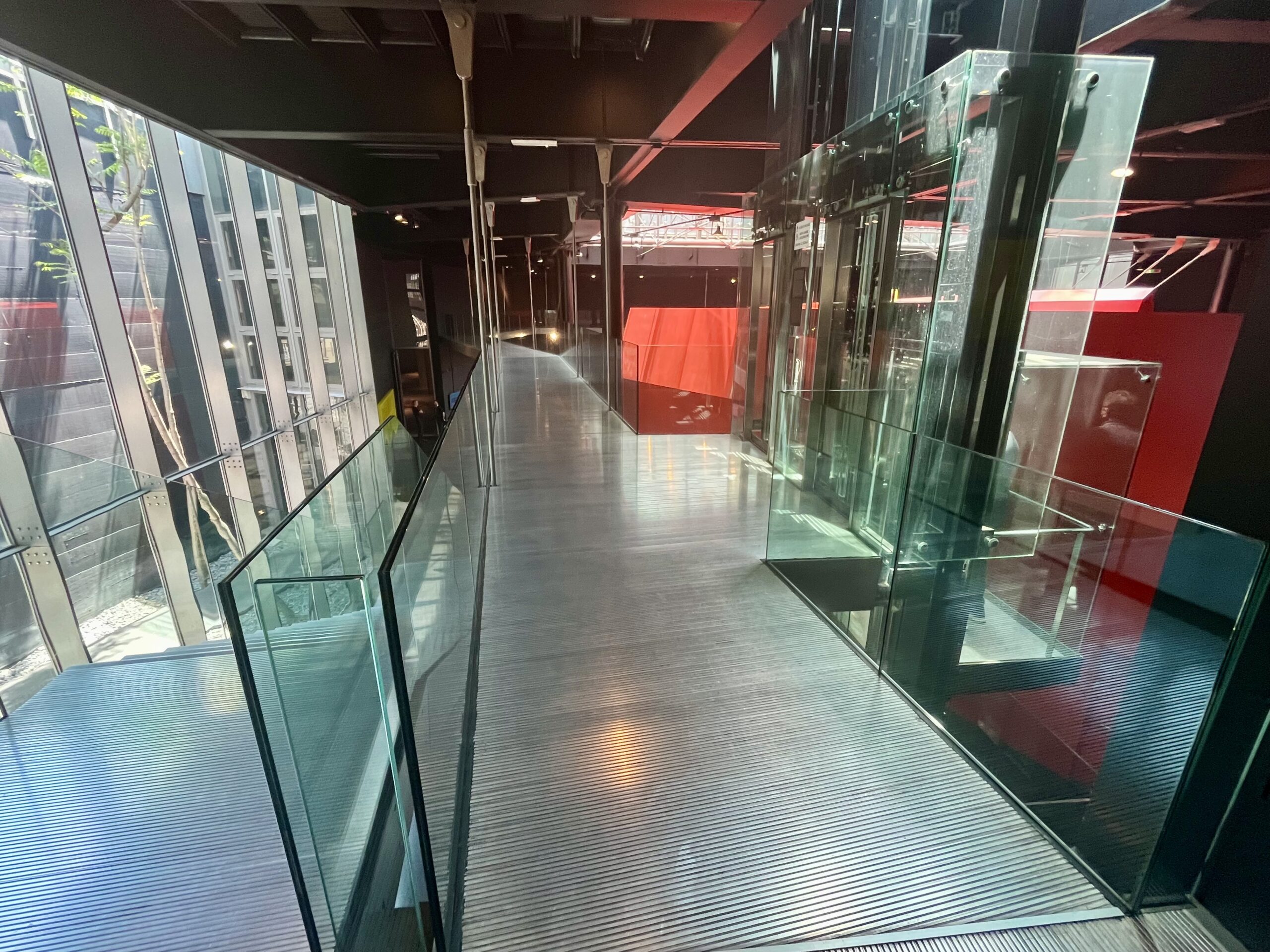

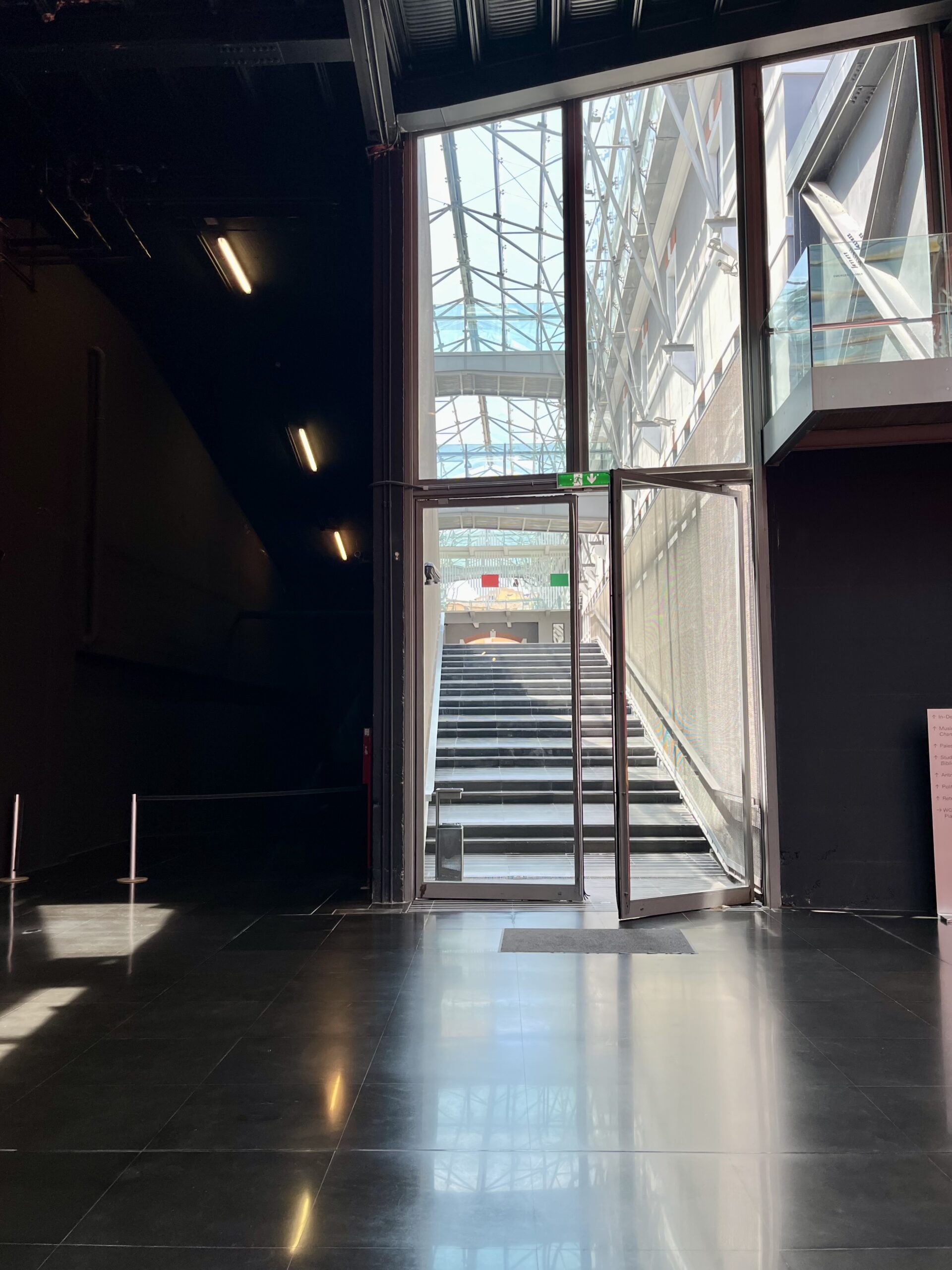
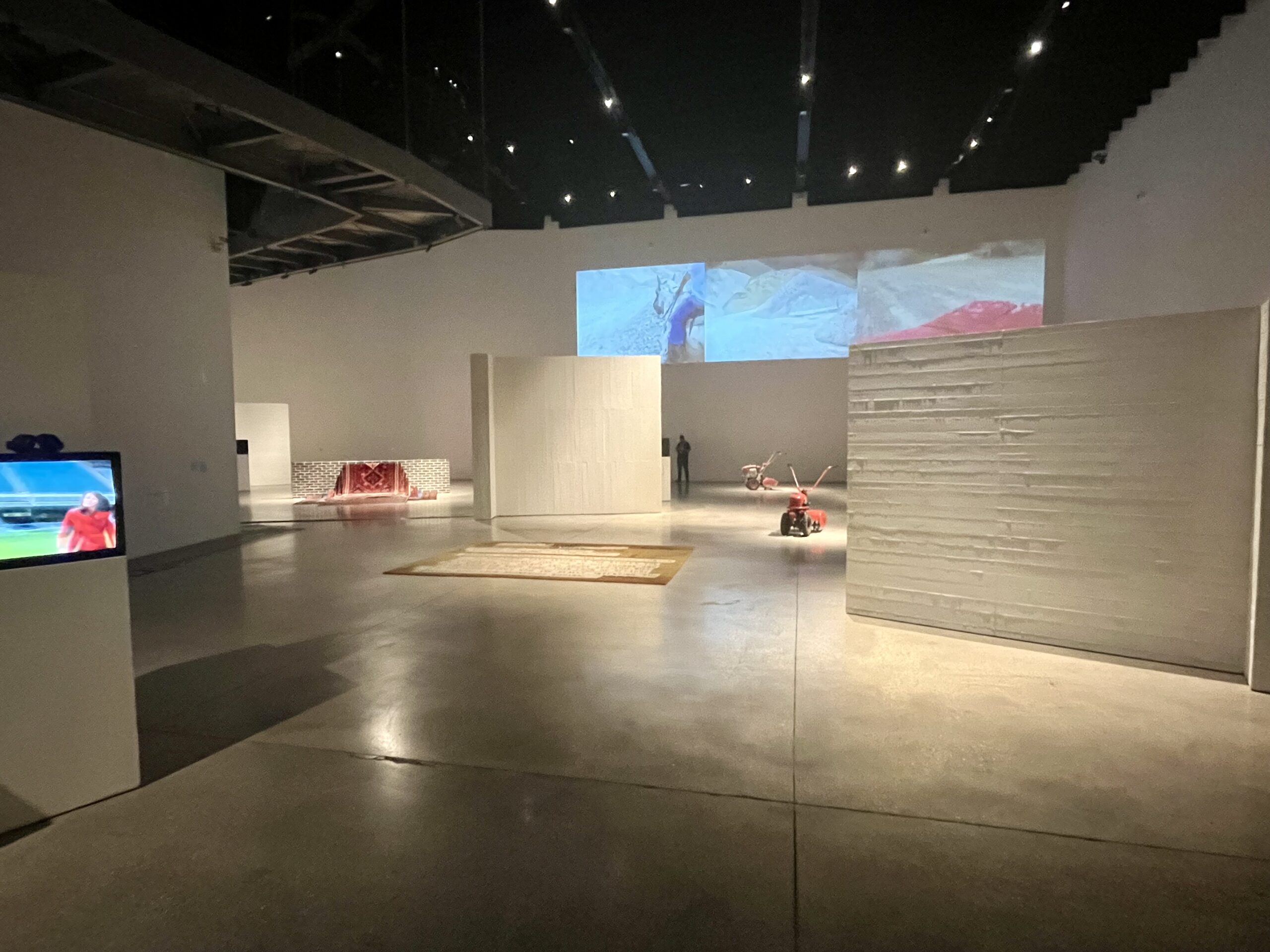
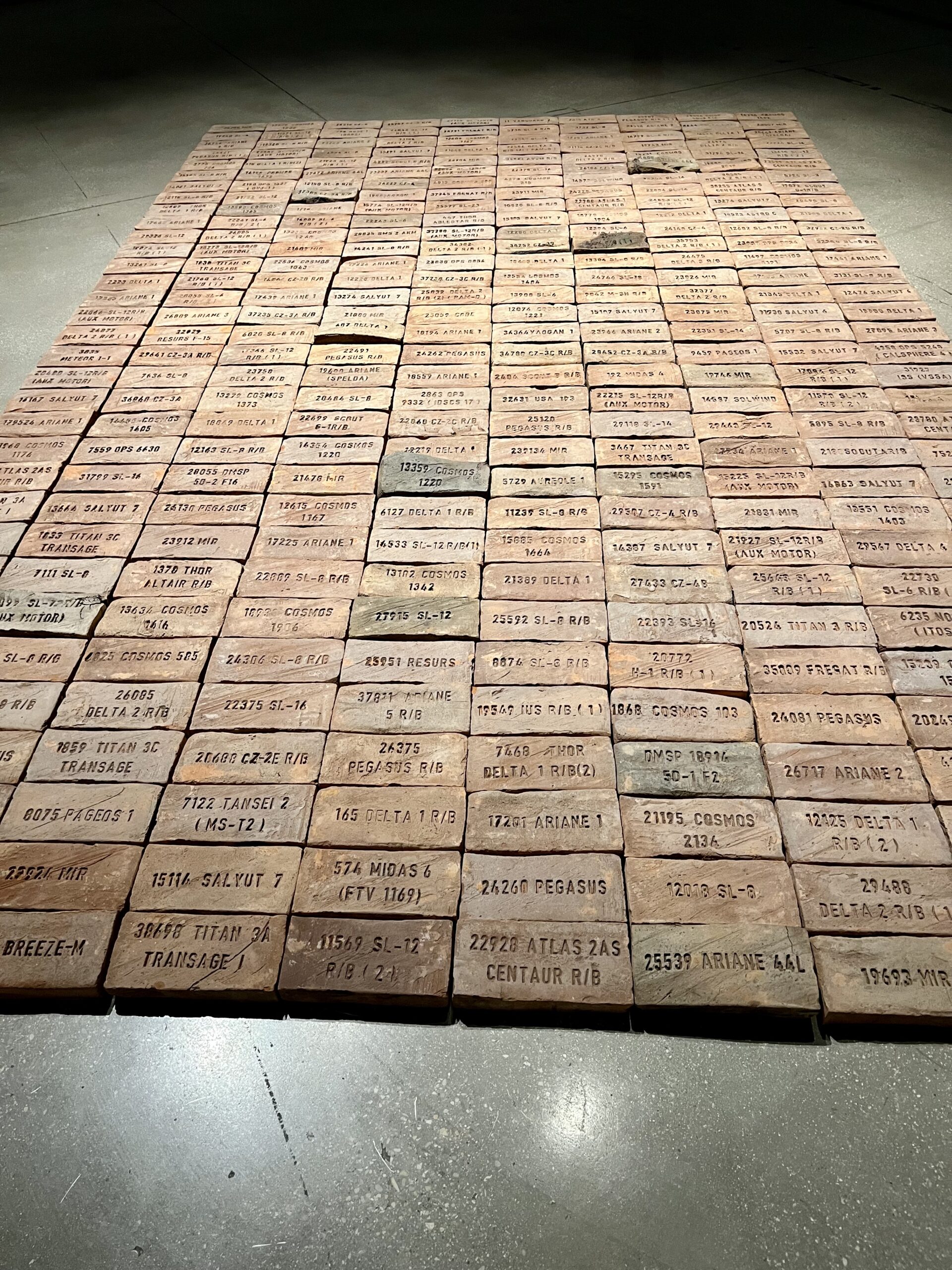
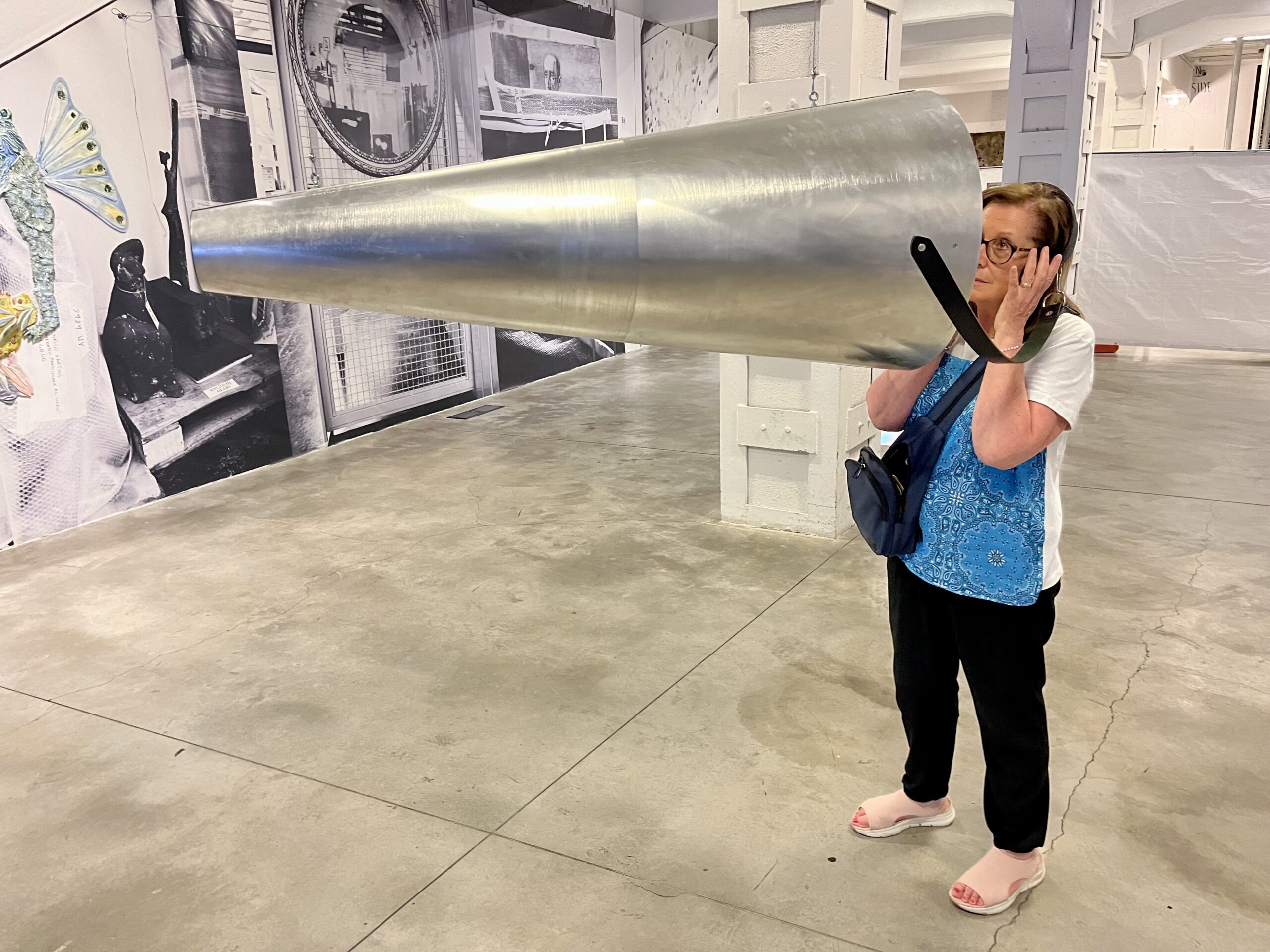
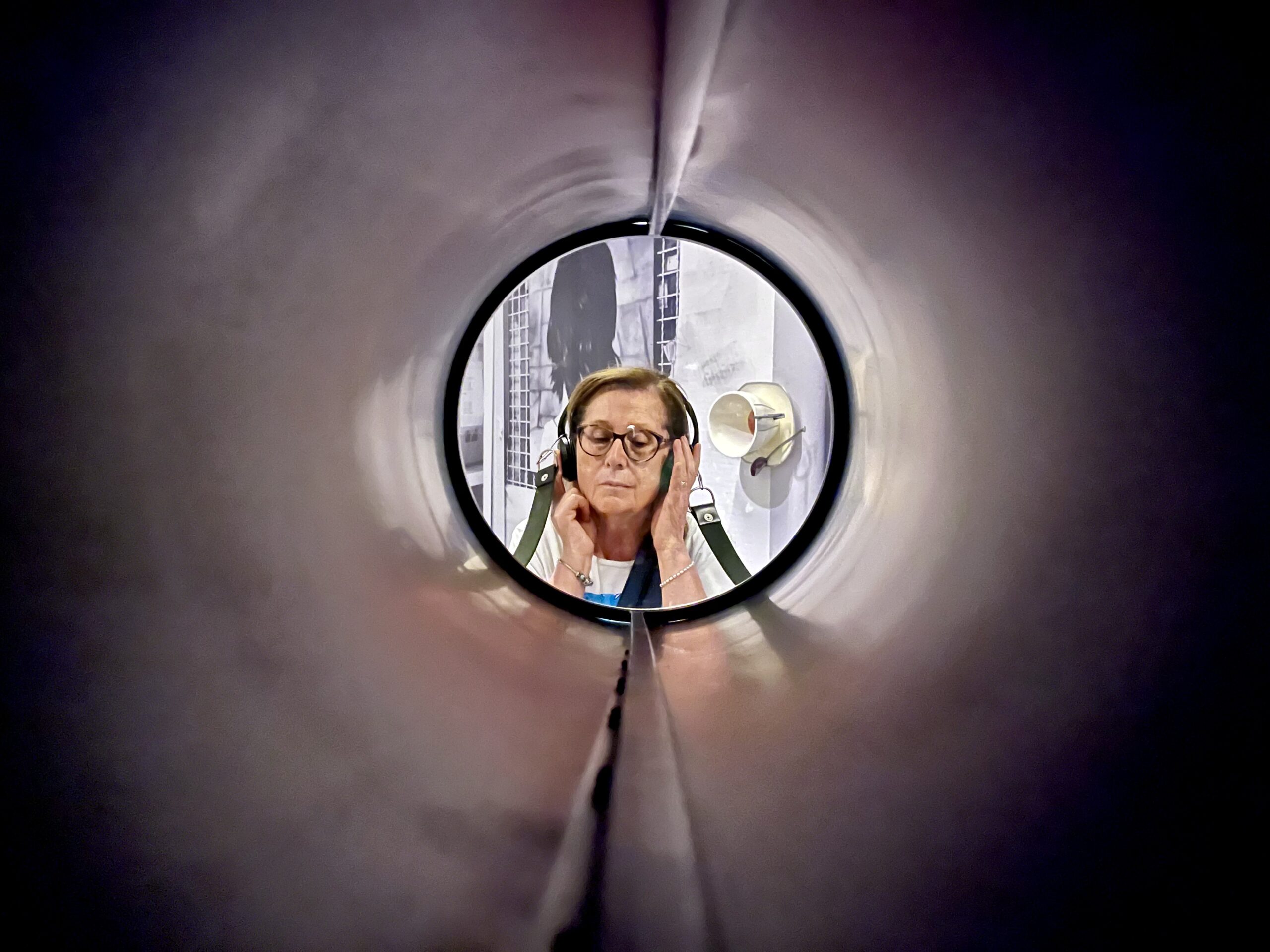
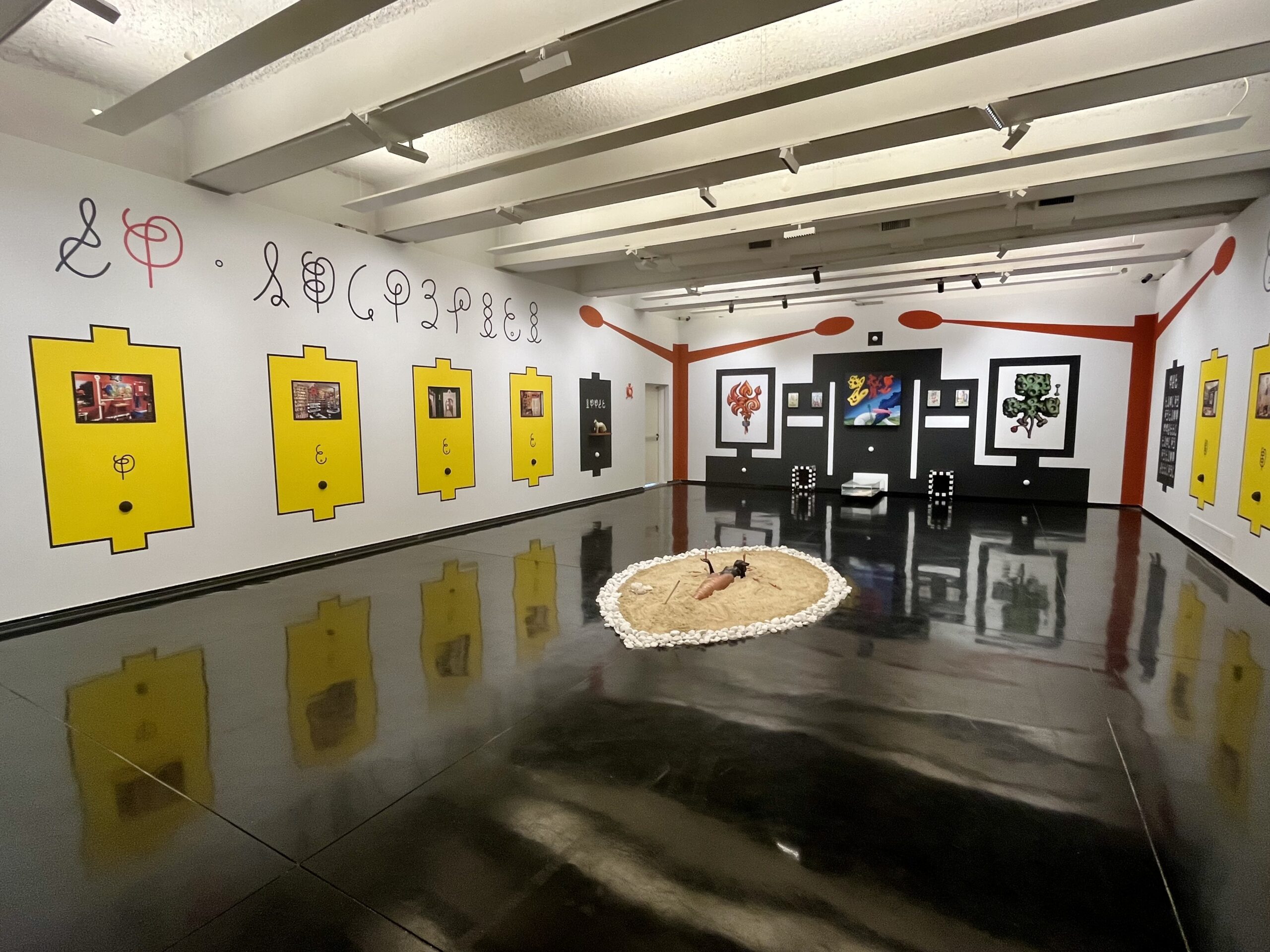
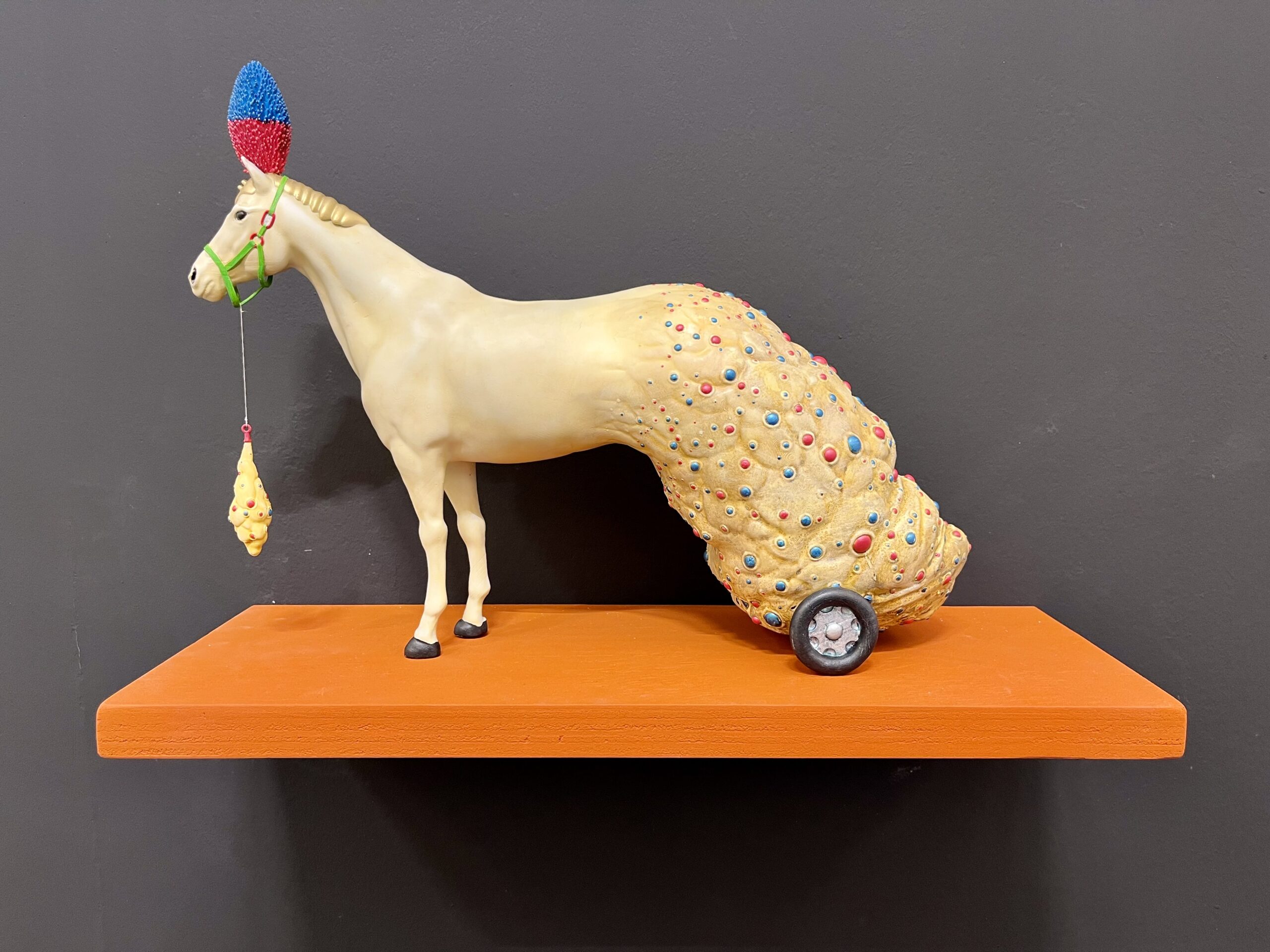

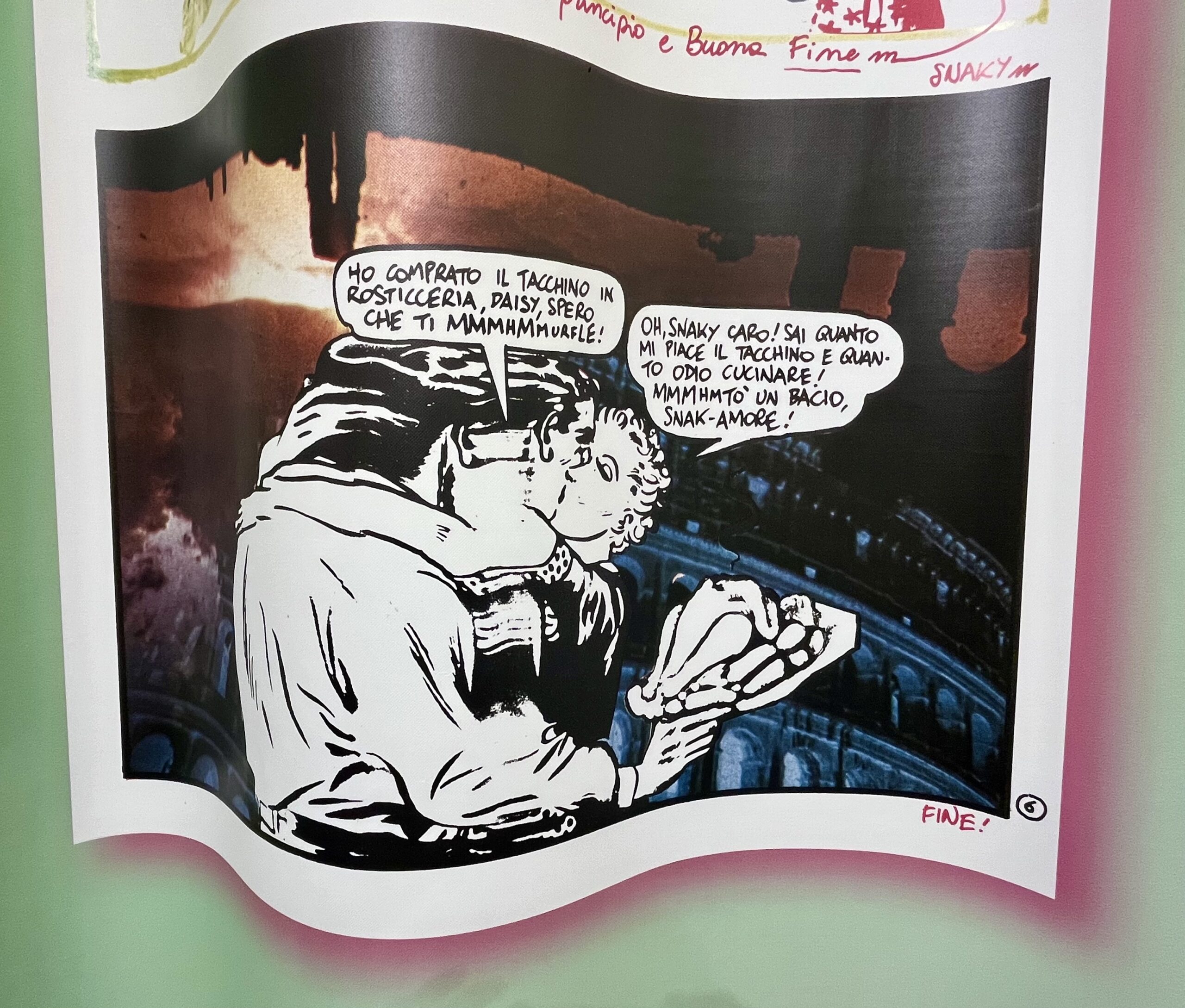
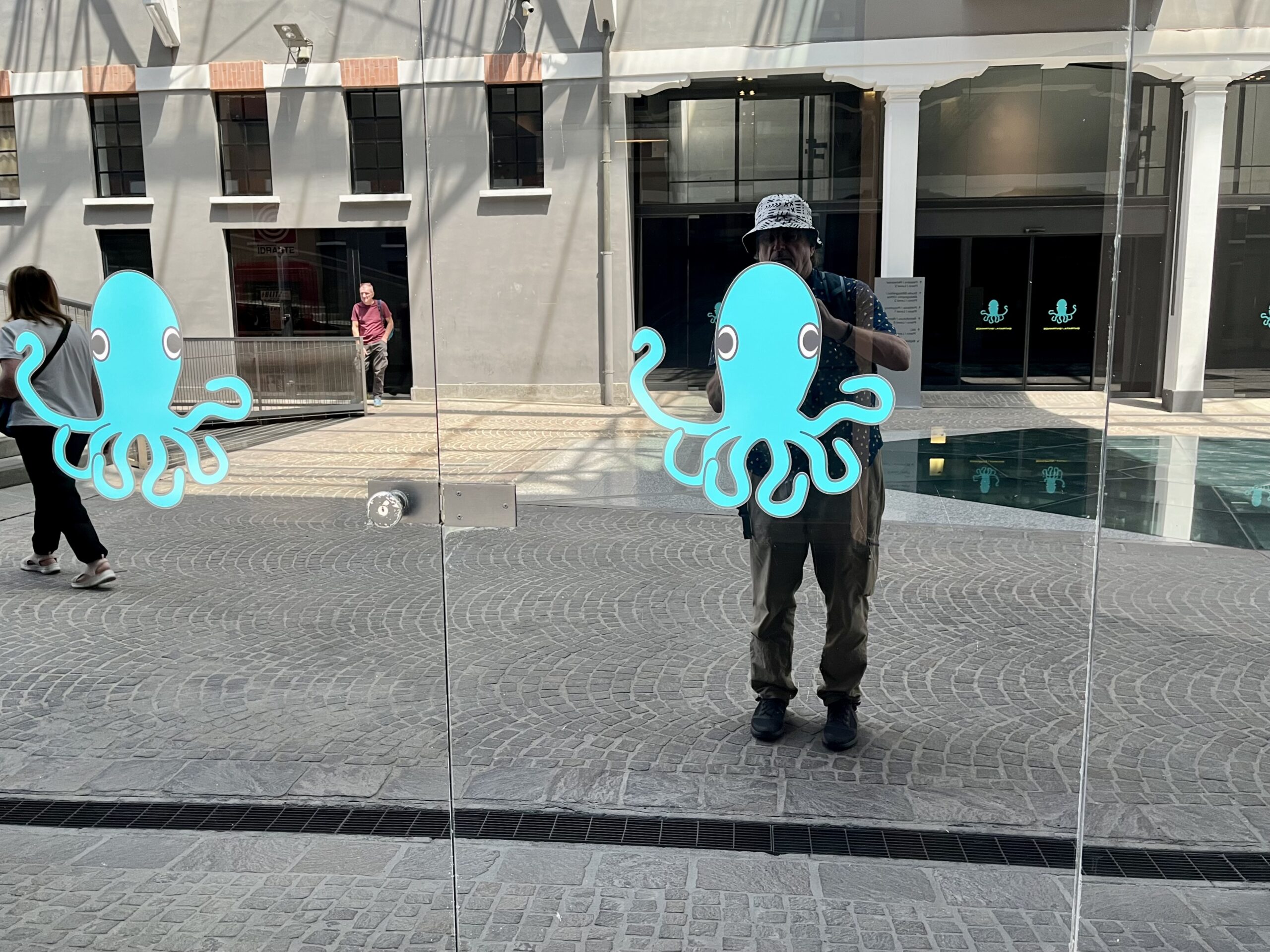

Gil Spazi Culturali di Villa Torlonia
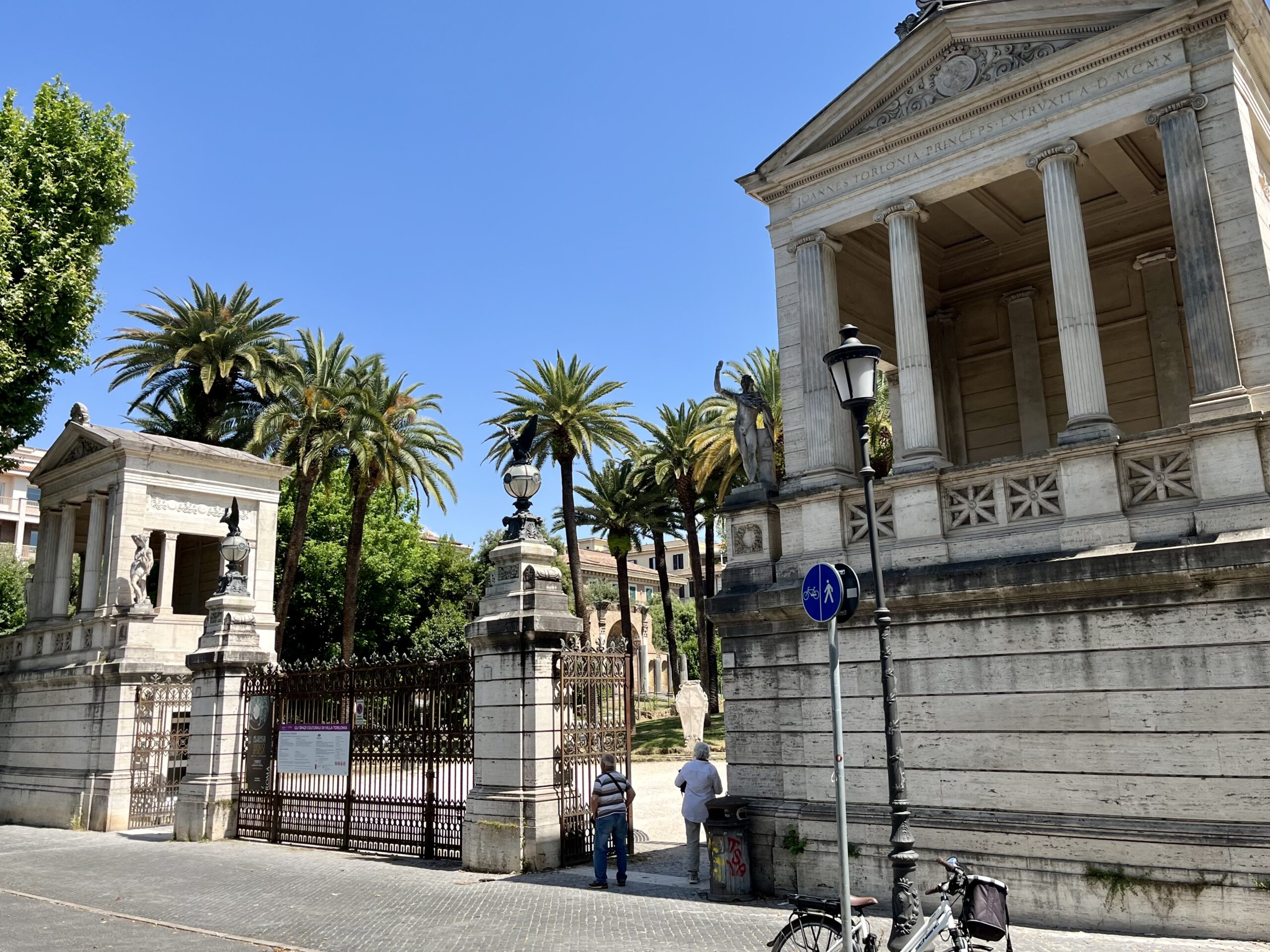

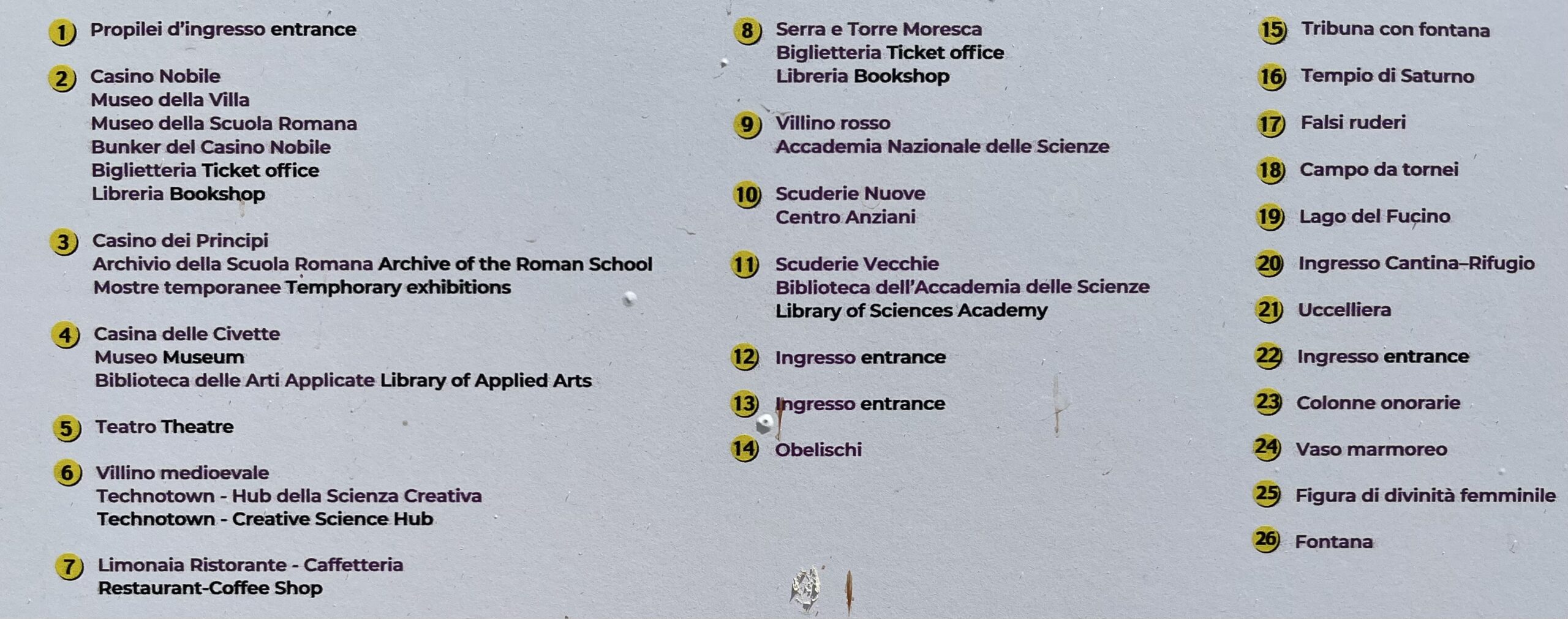
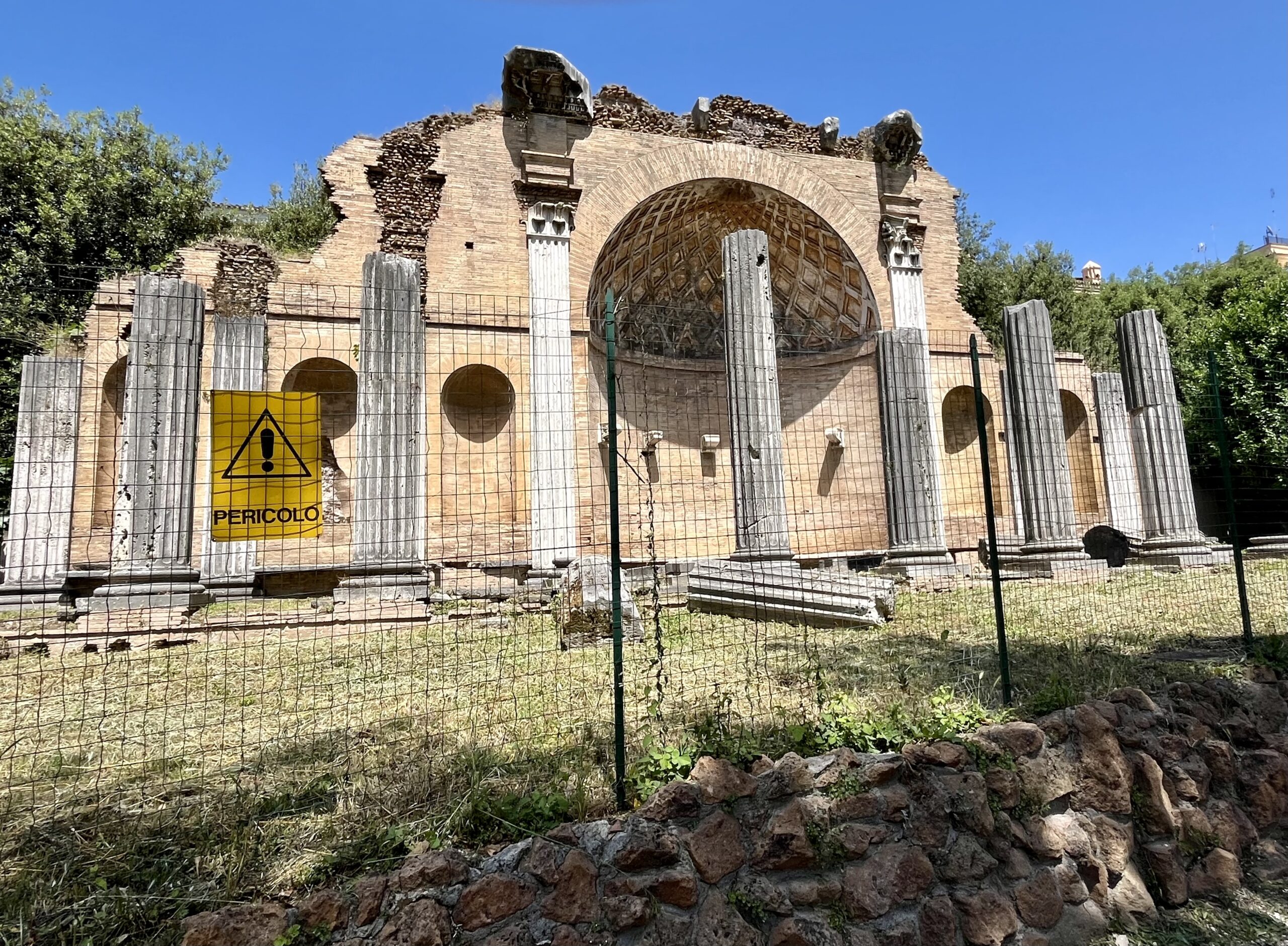
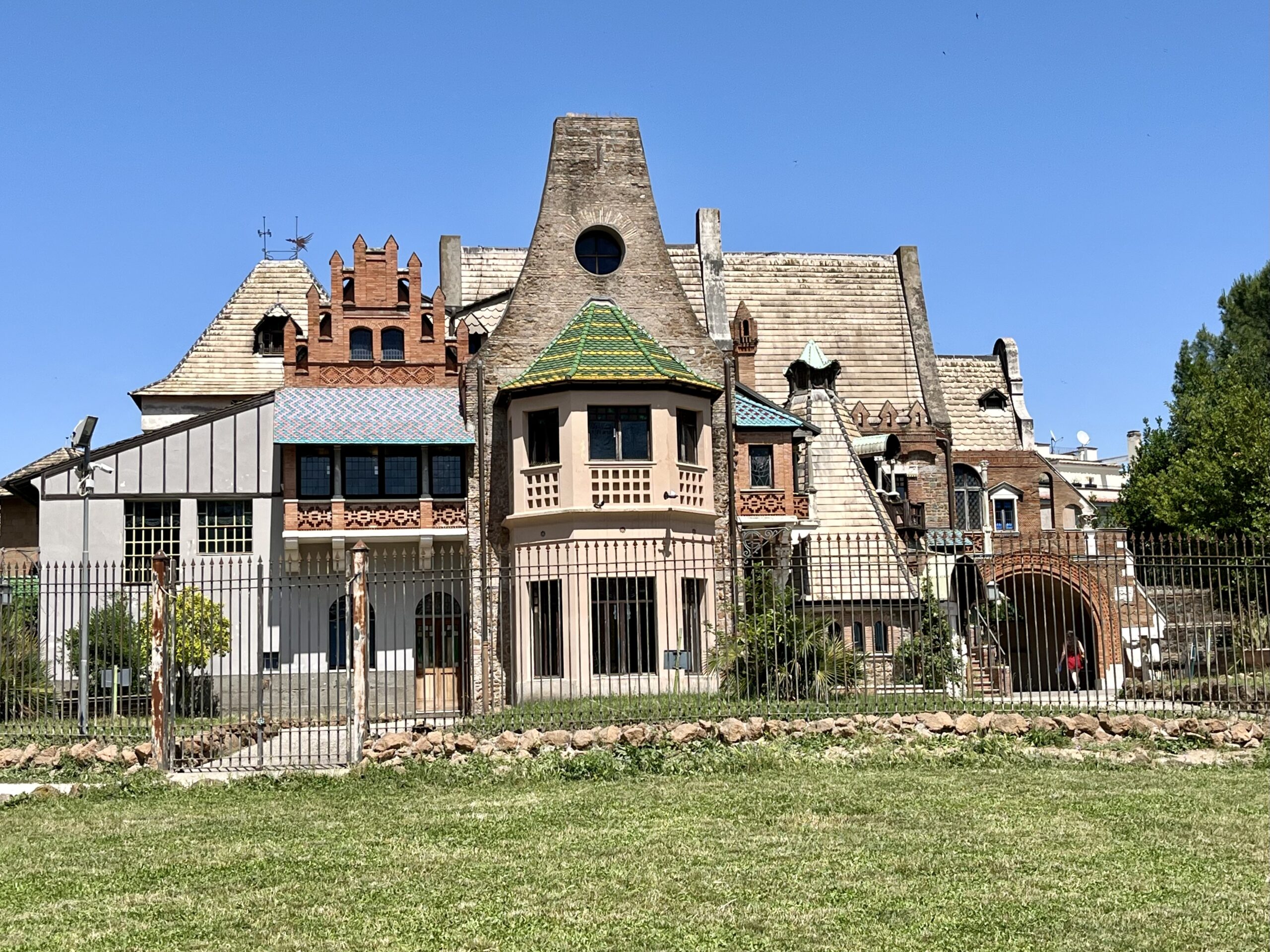
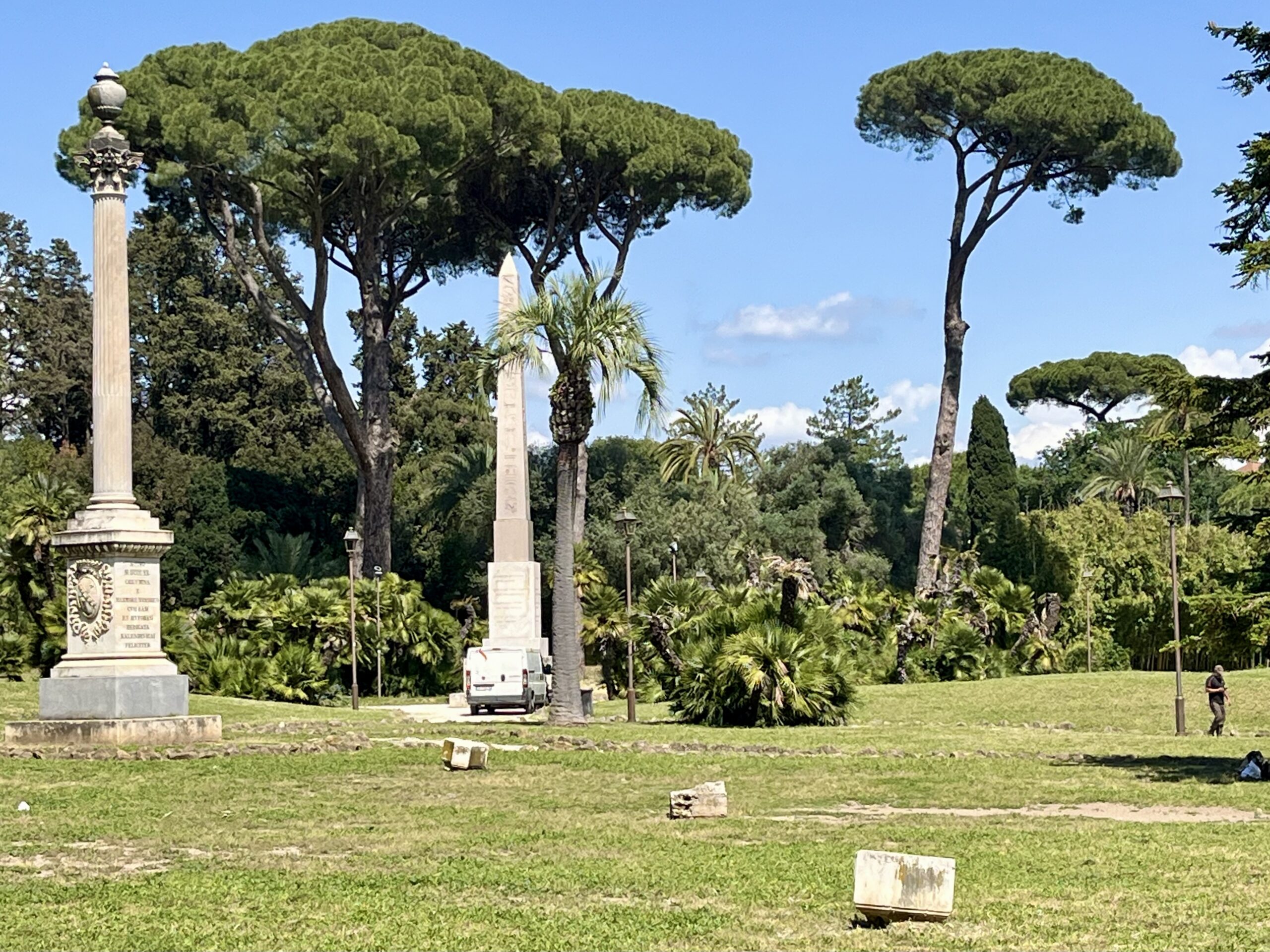
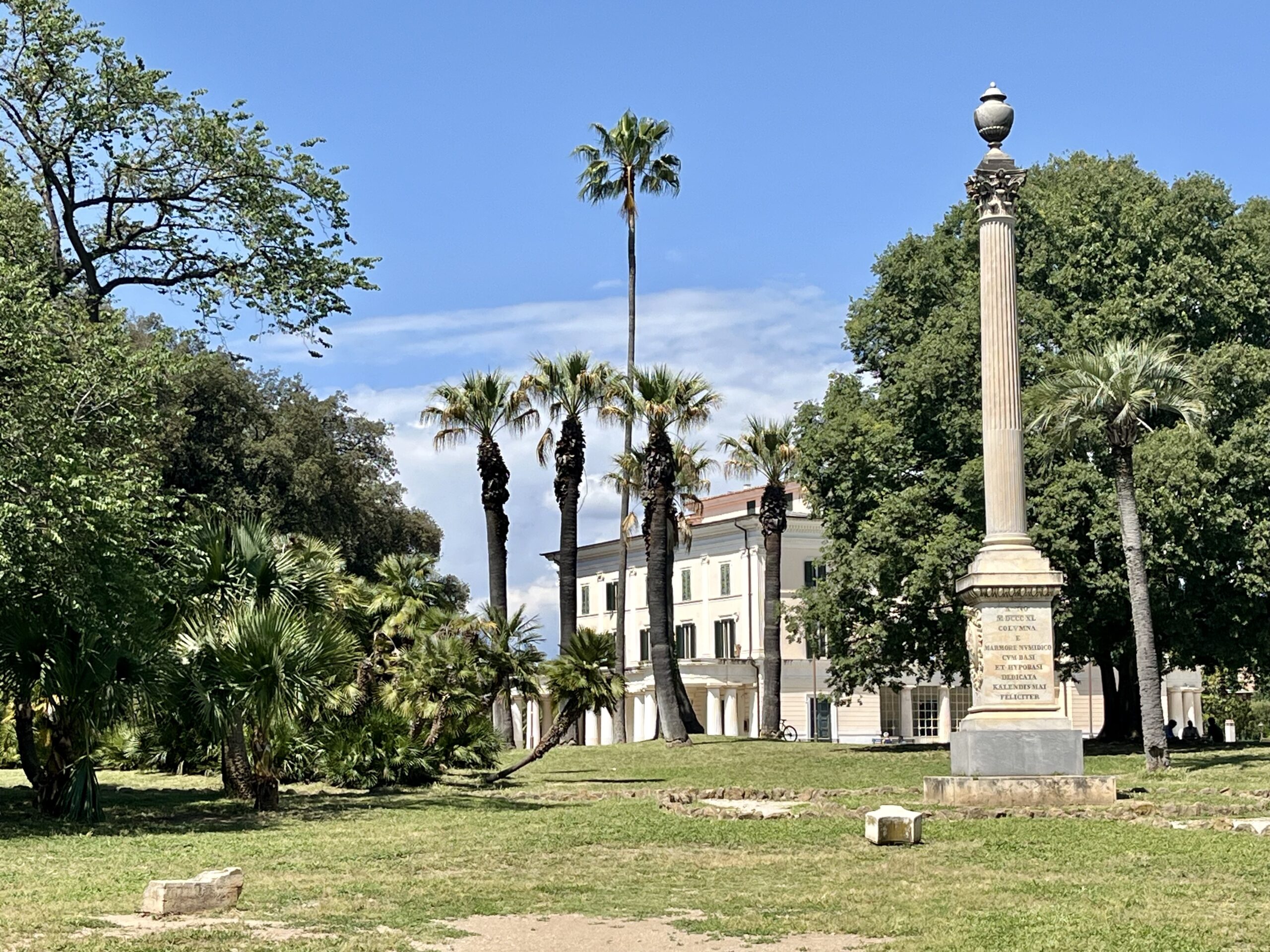
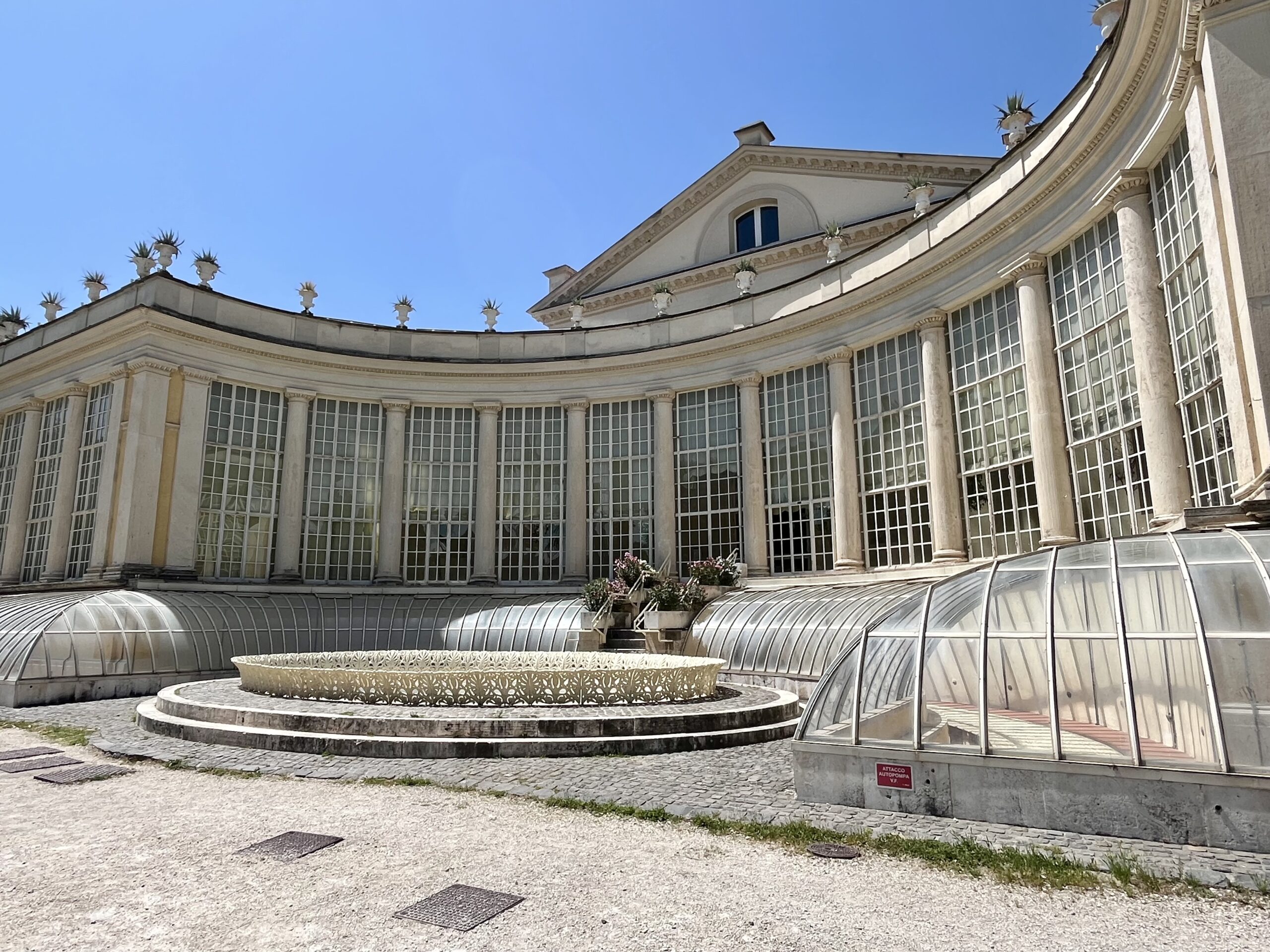
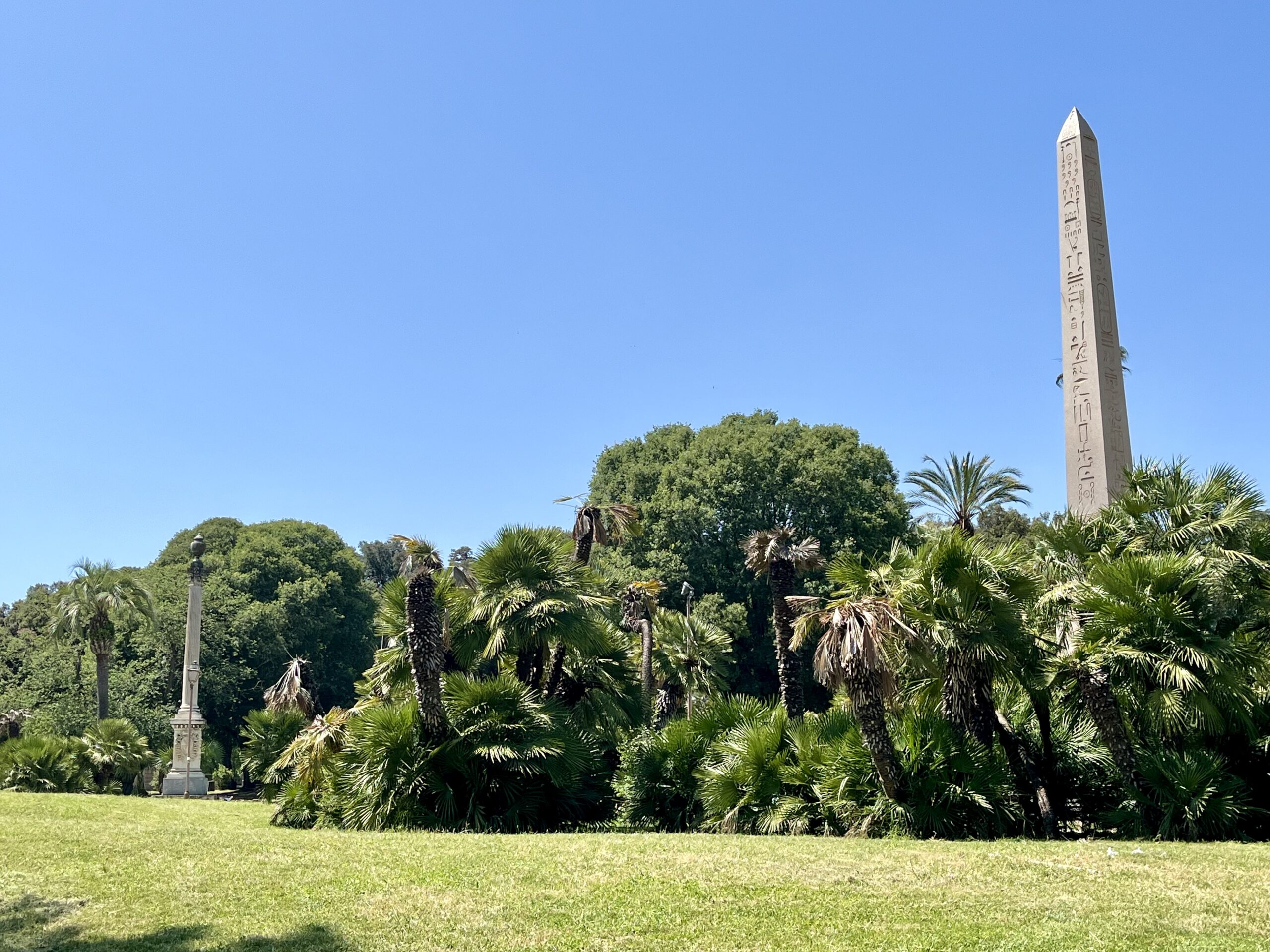
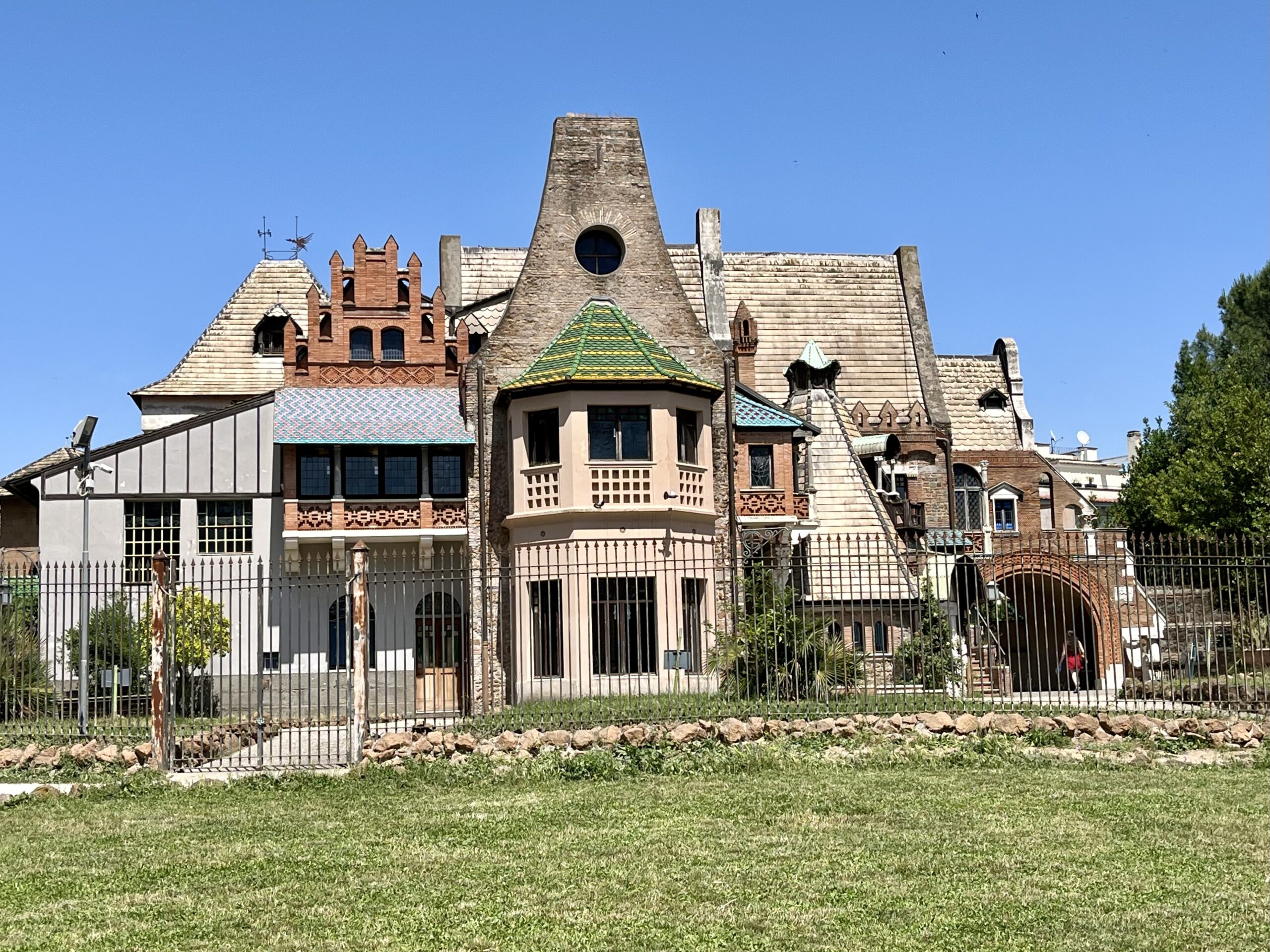
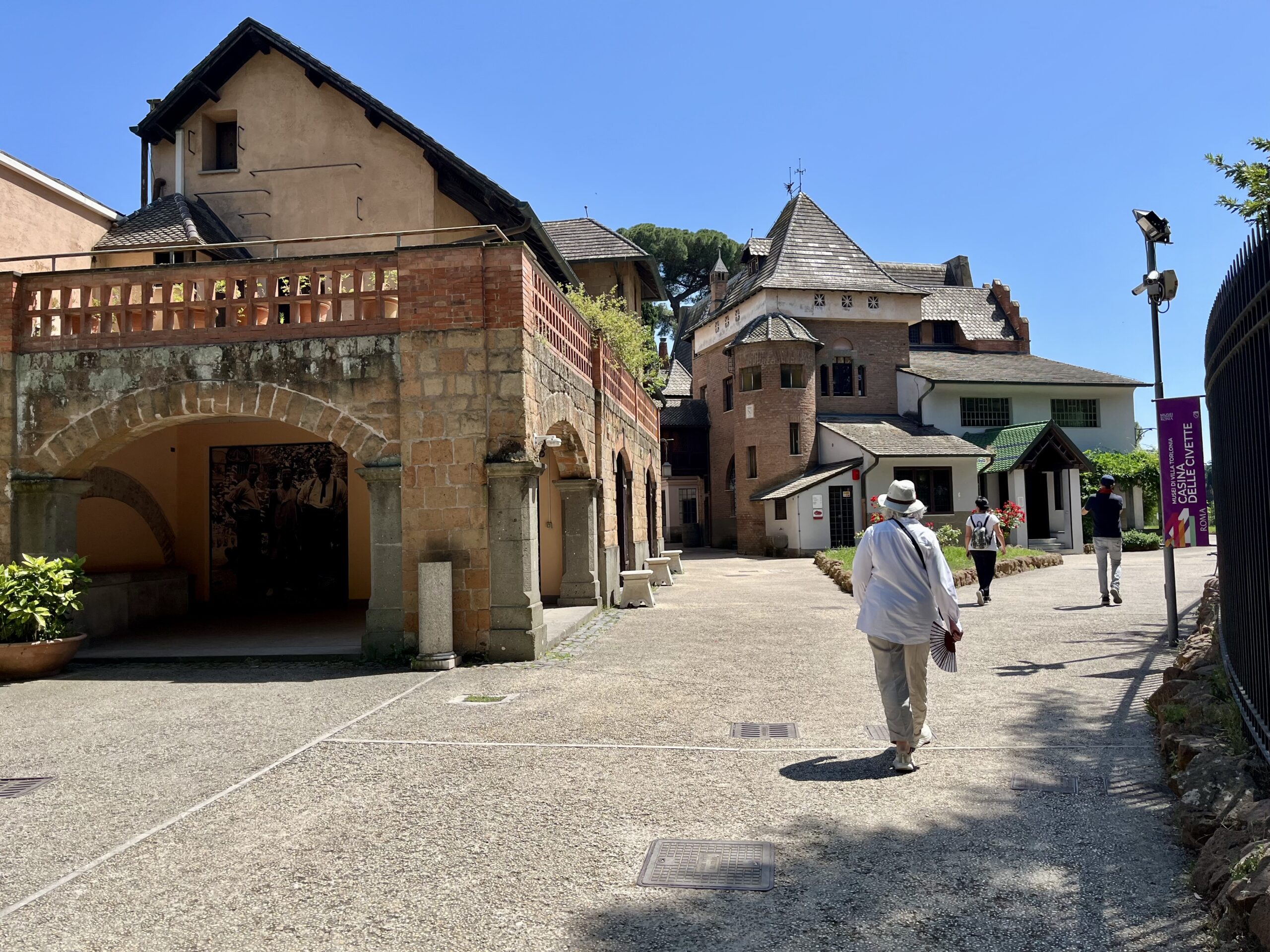
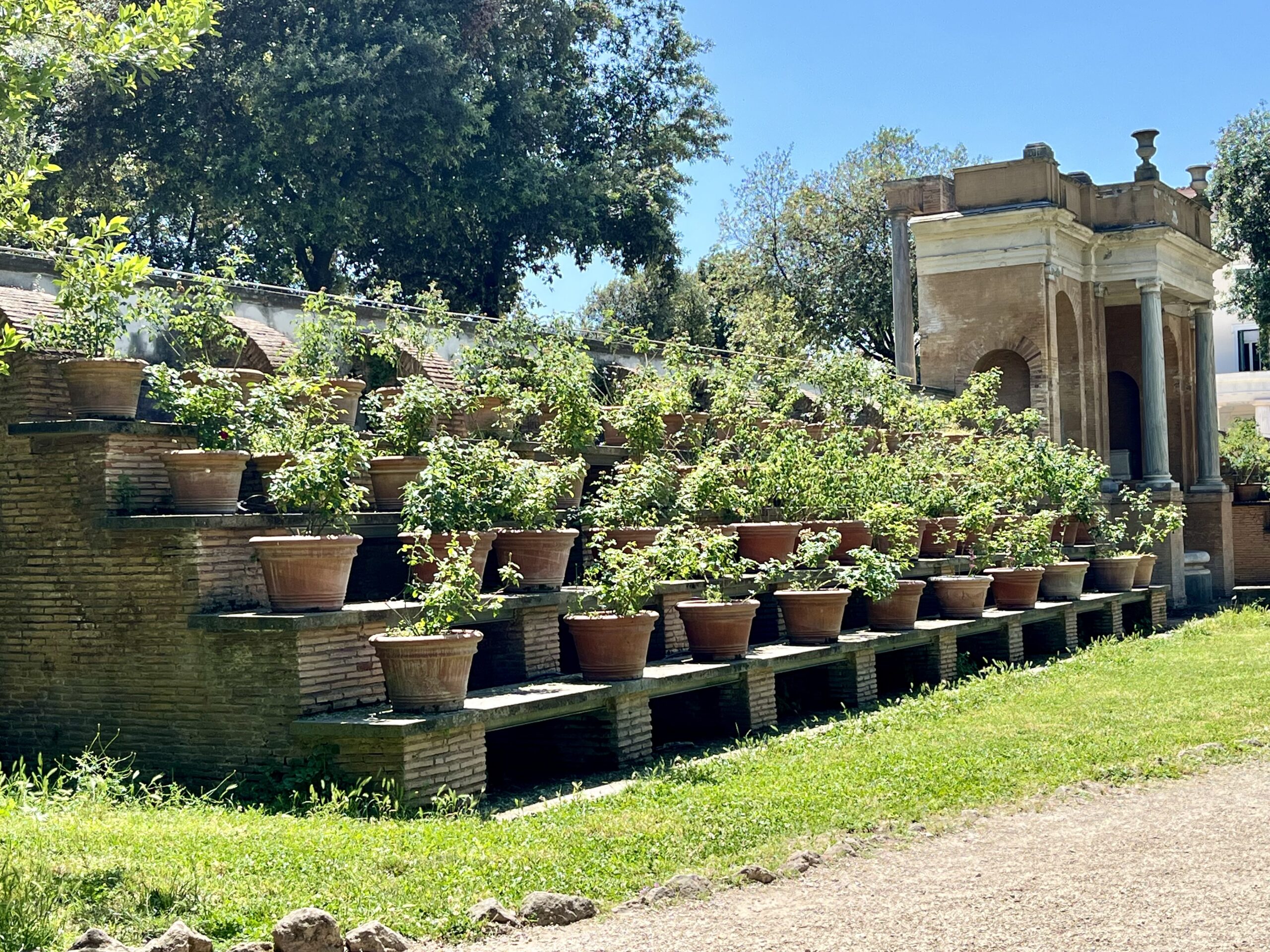
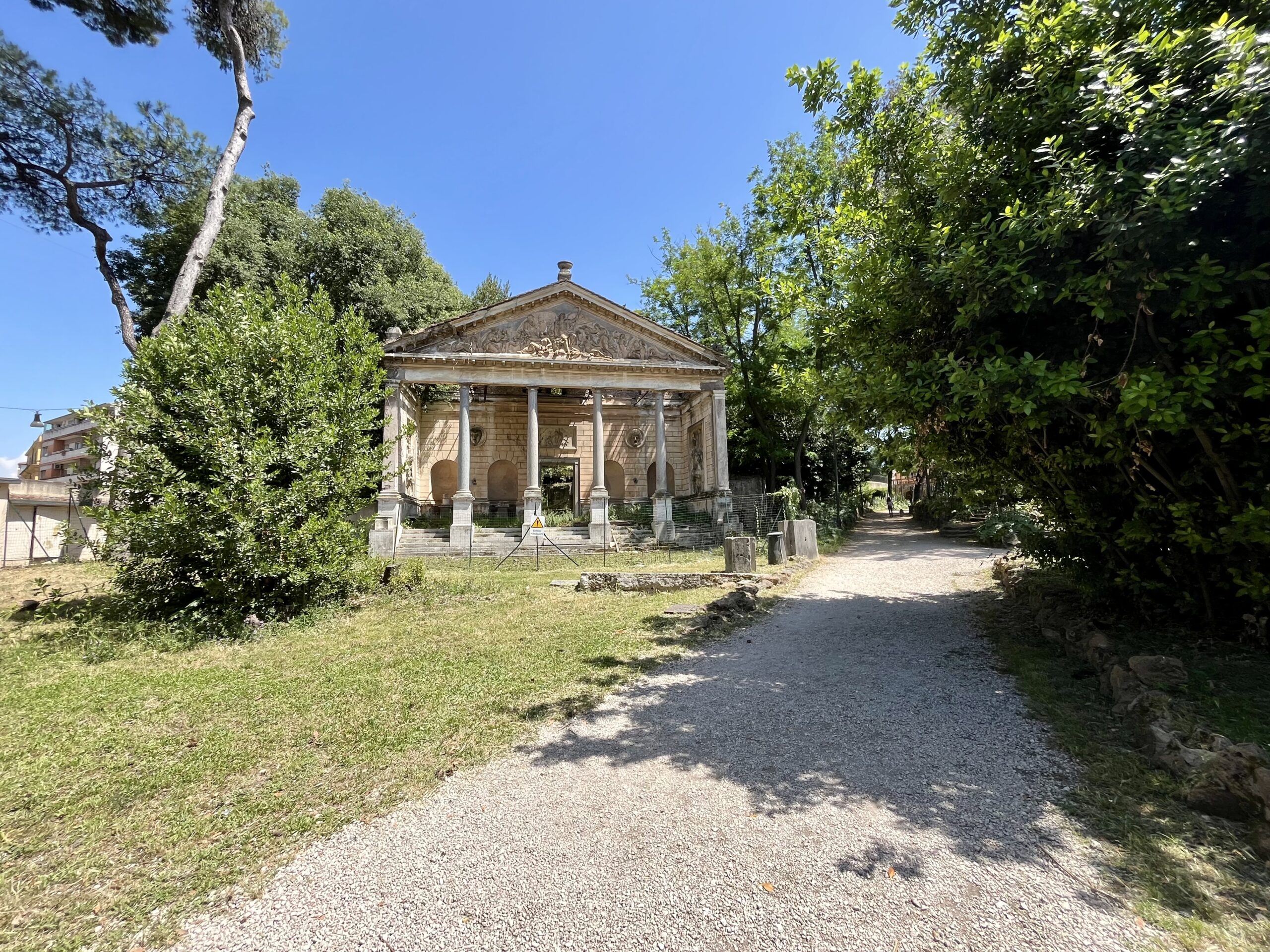
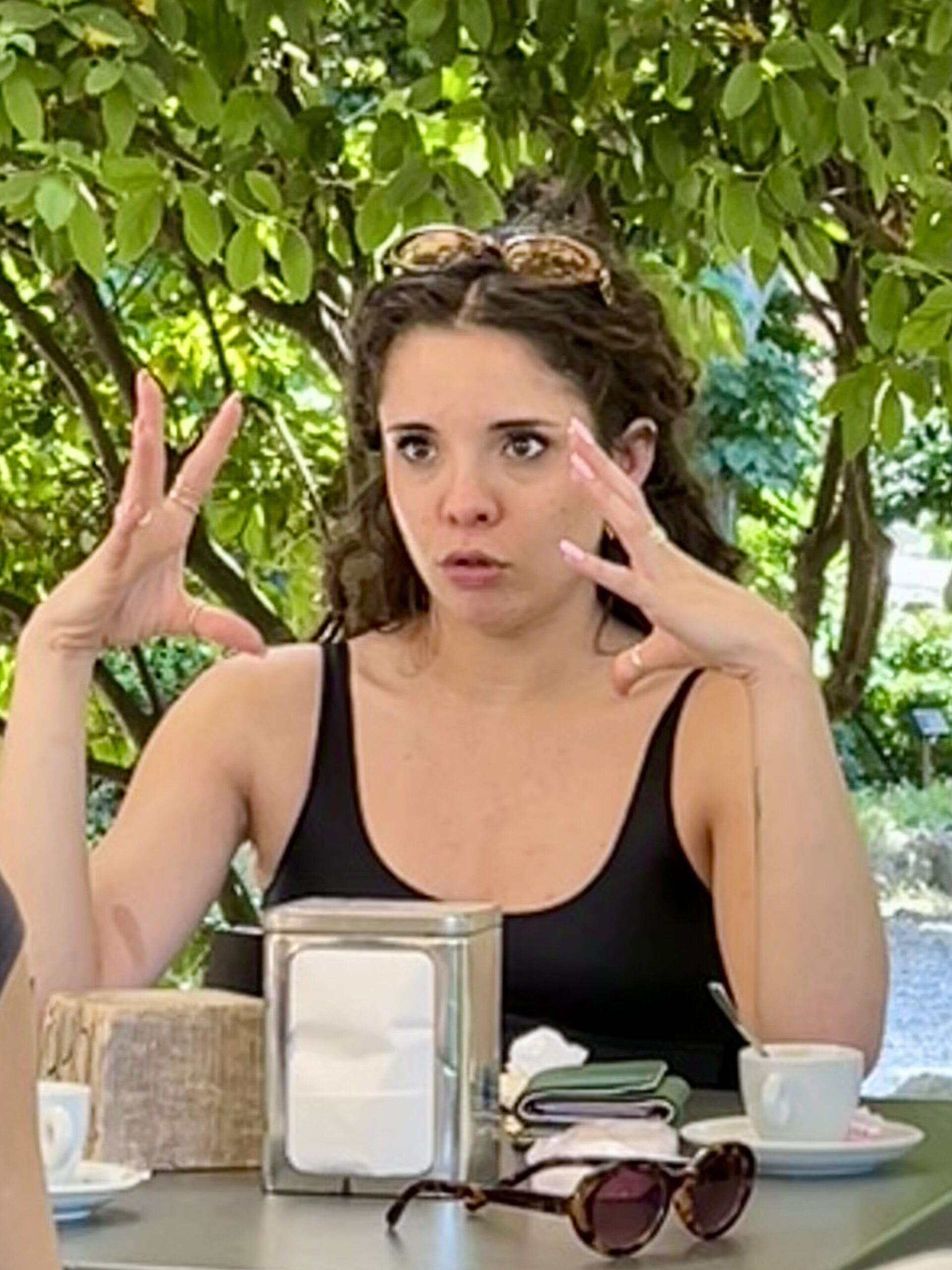
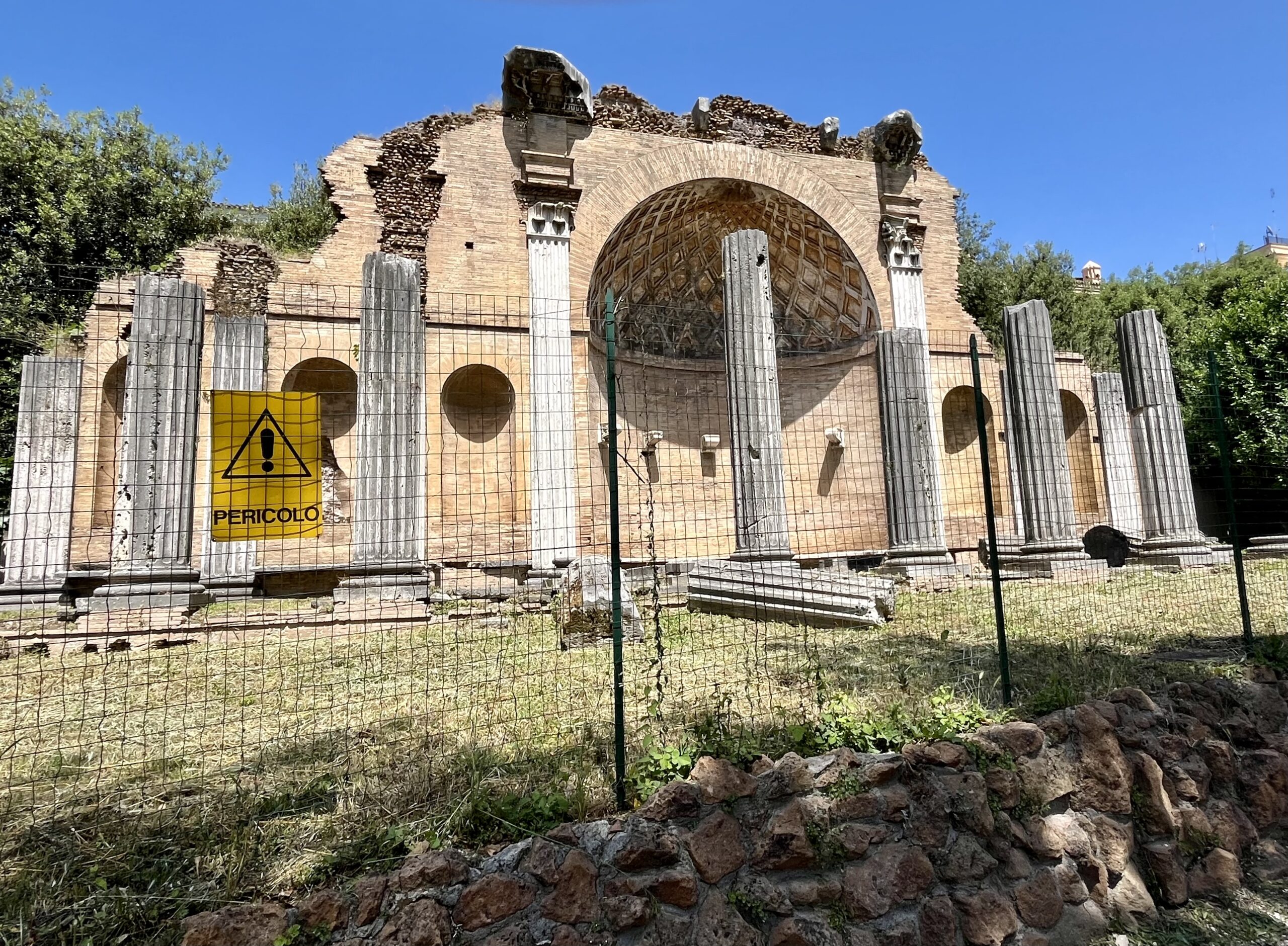
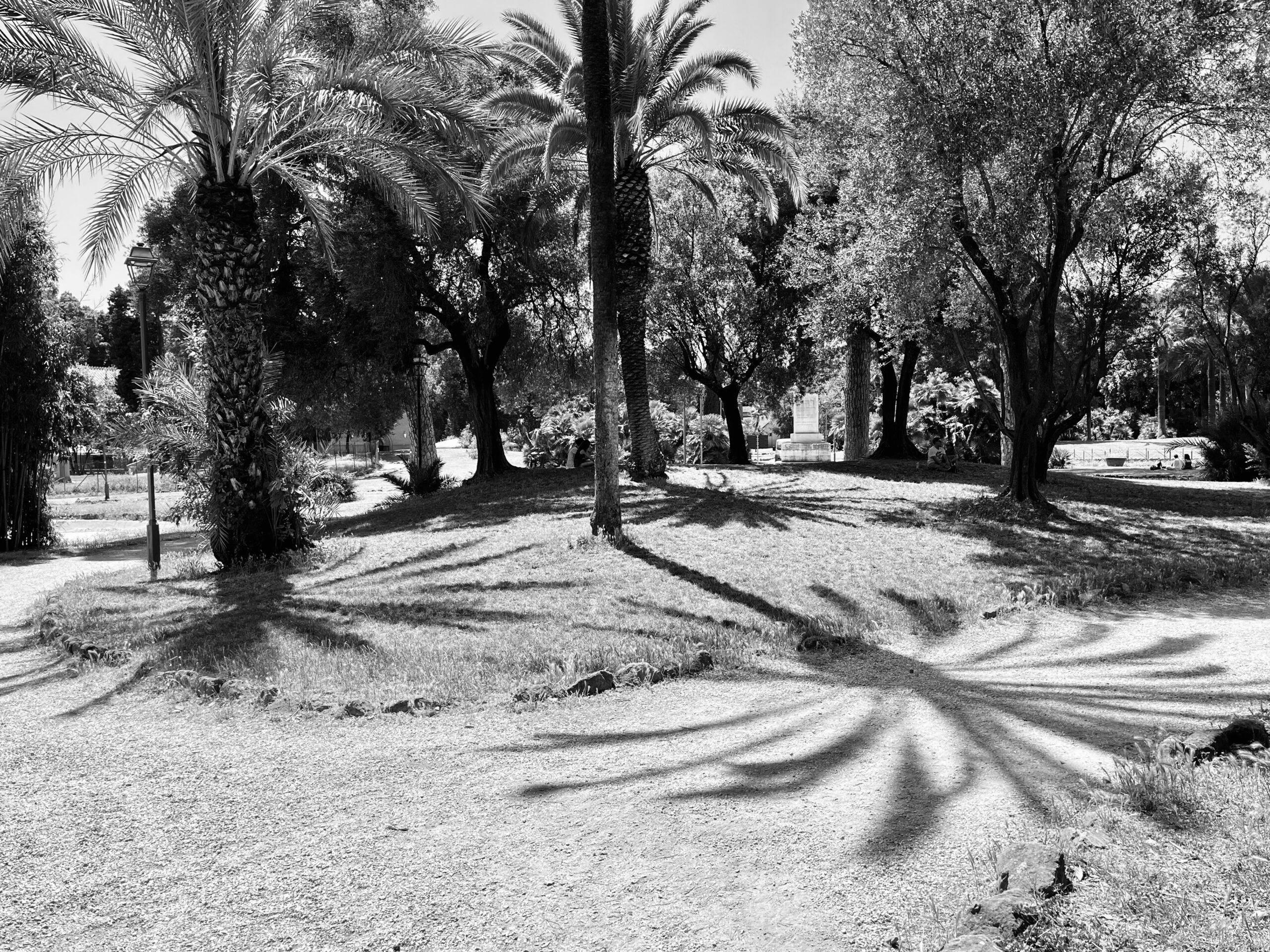
Drinks and Pinsa!
We ended the day with drinks and pinsa outdoors at Vineria 19–a stone’s throw from Palazzo Sabbatini and always one of our favorite things to do. Marta, Liam, and Francesco joined us. The place is always packed with young and old. Although it is heresy, we think the Montesacro restaurants in San Francisco make better pinsa dough! Still, we love the lively social scene here. Dogs, babies, tattoos, great people watching.
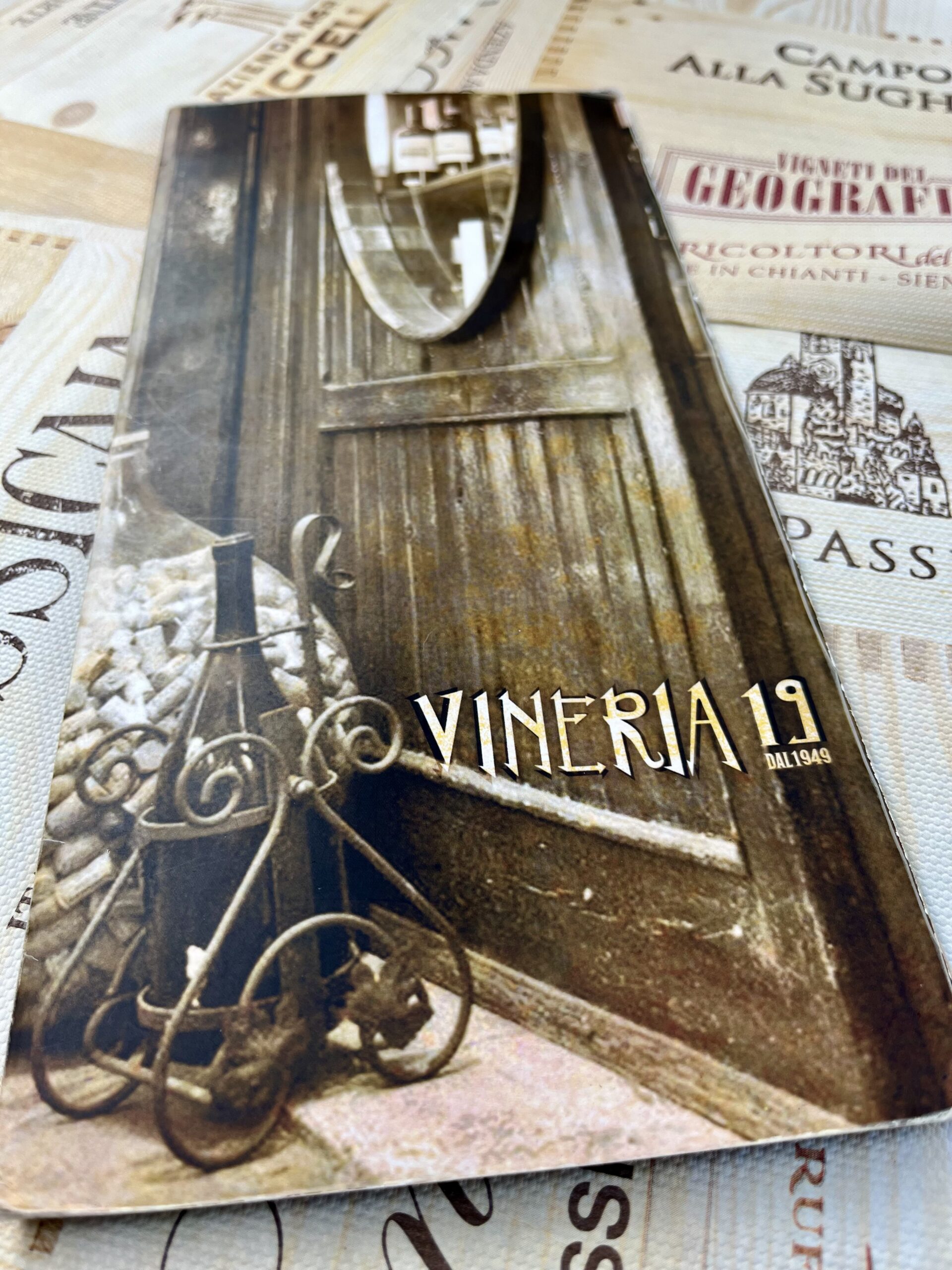
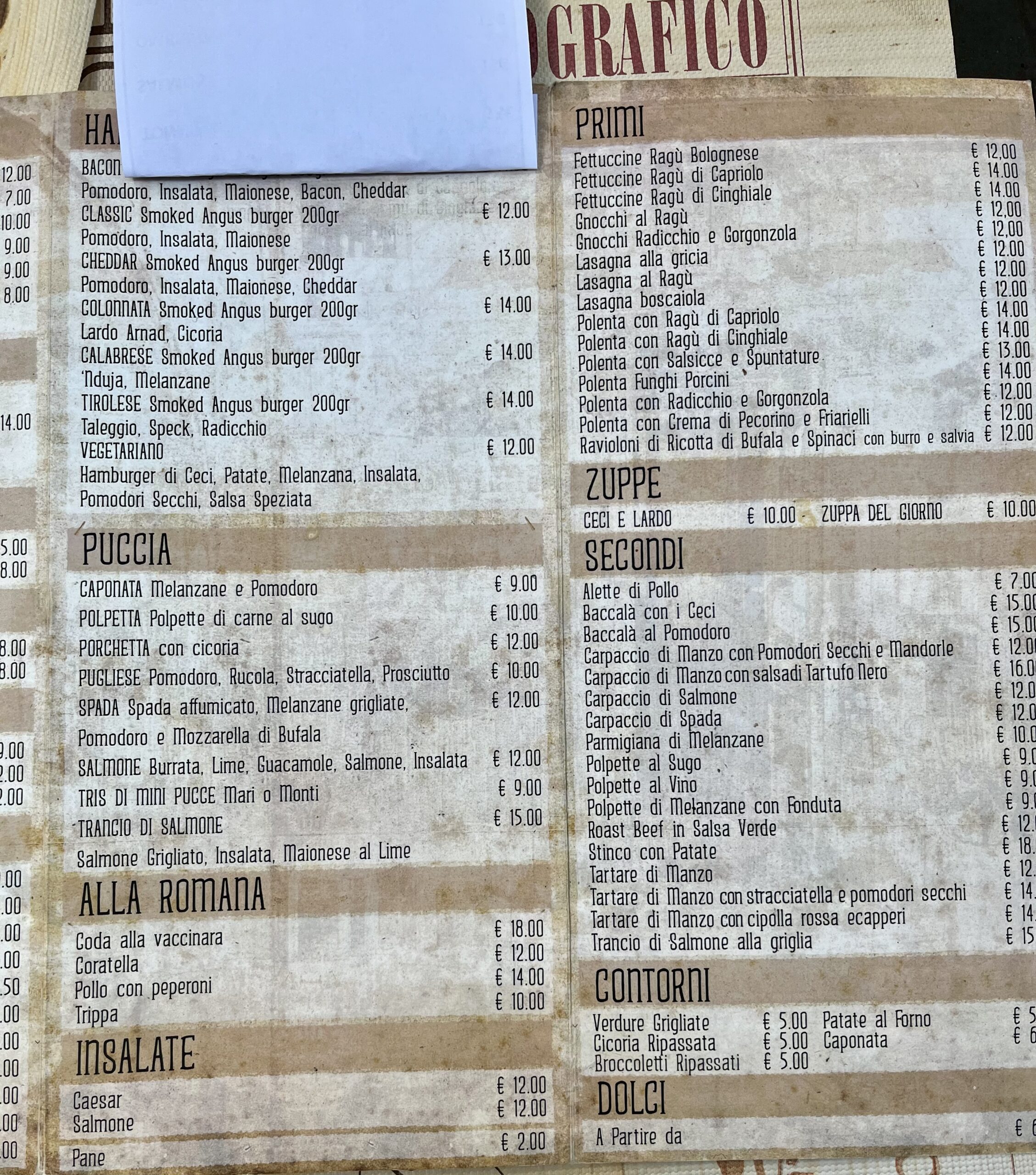
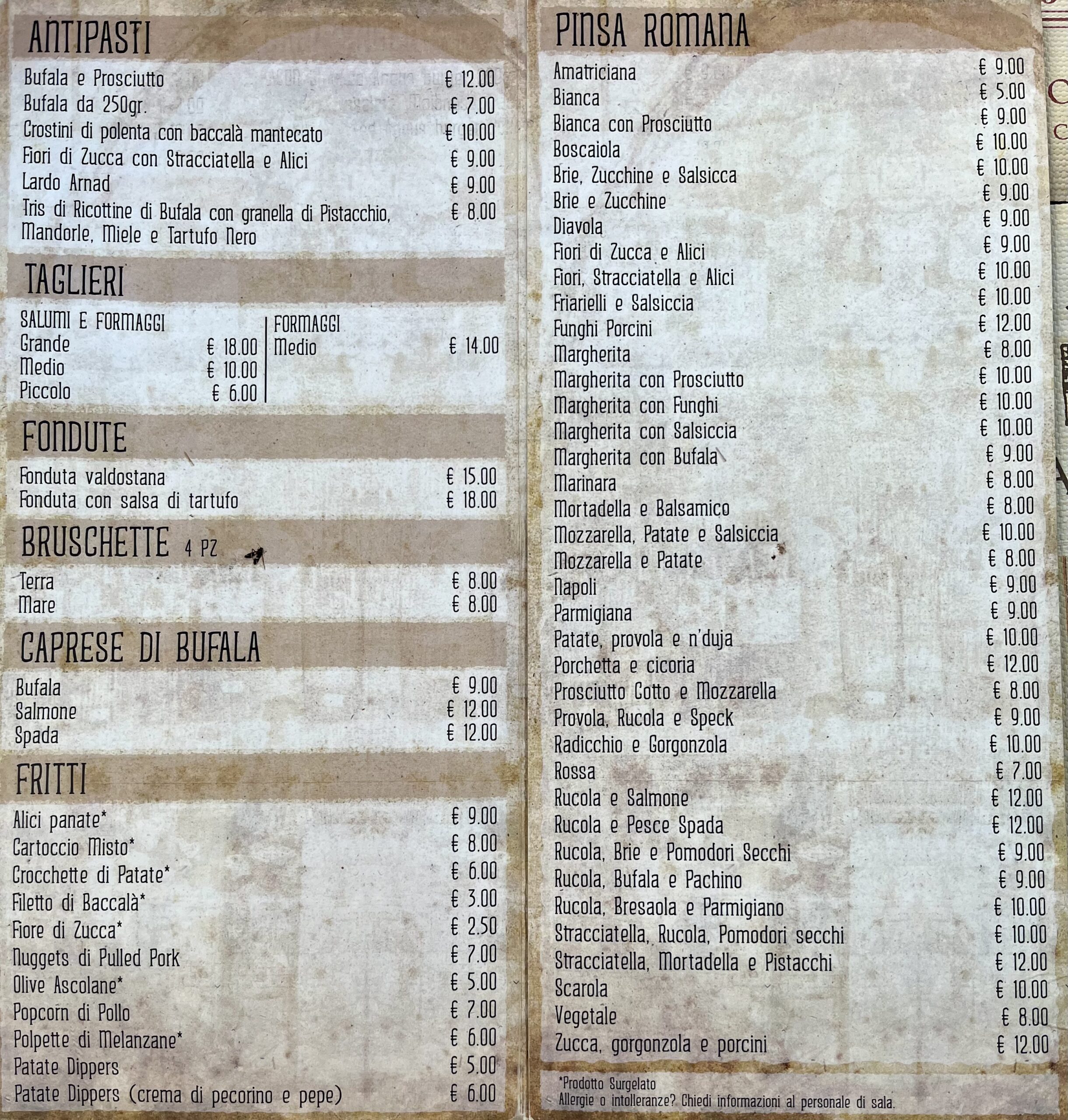
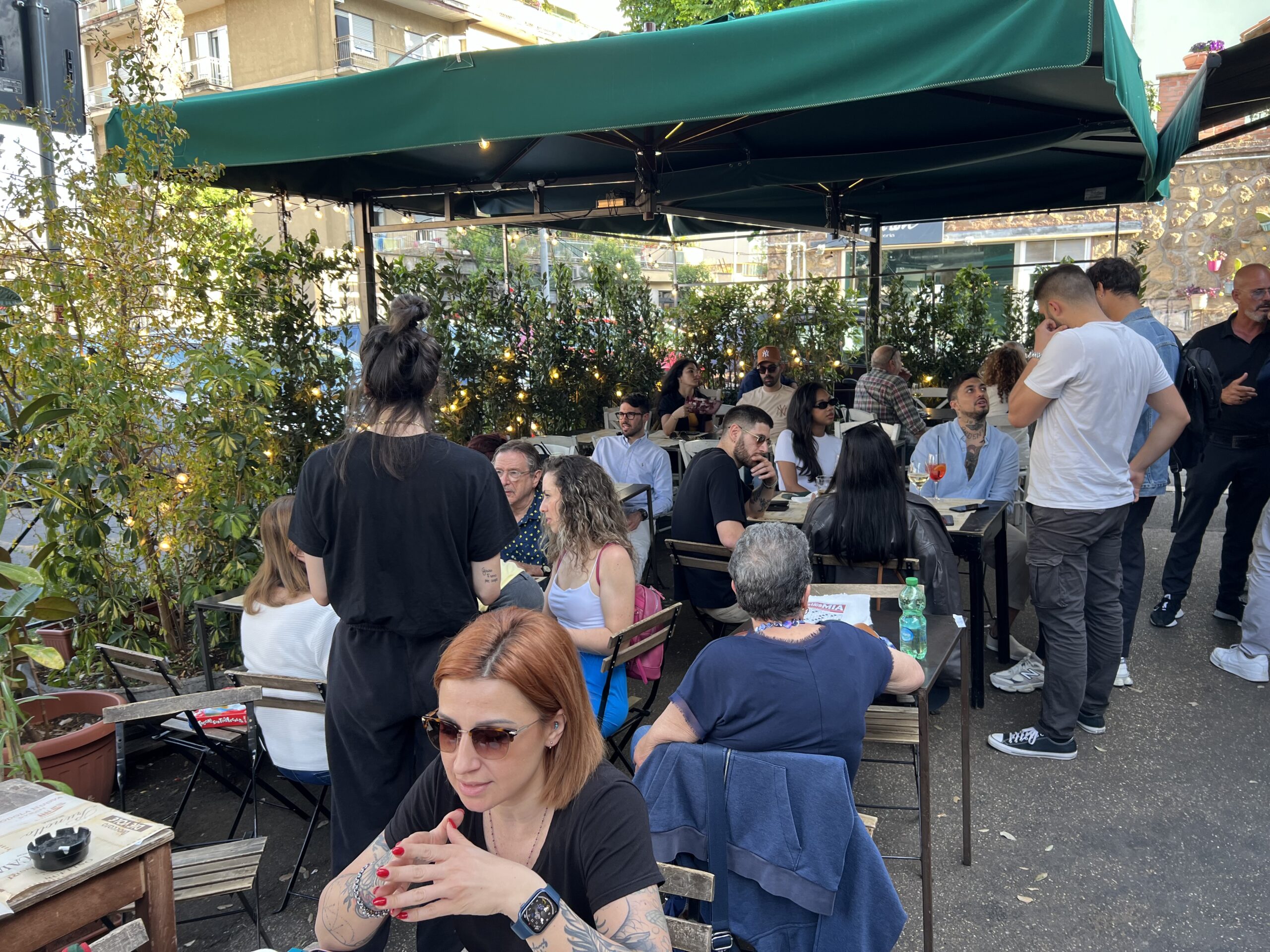
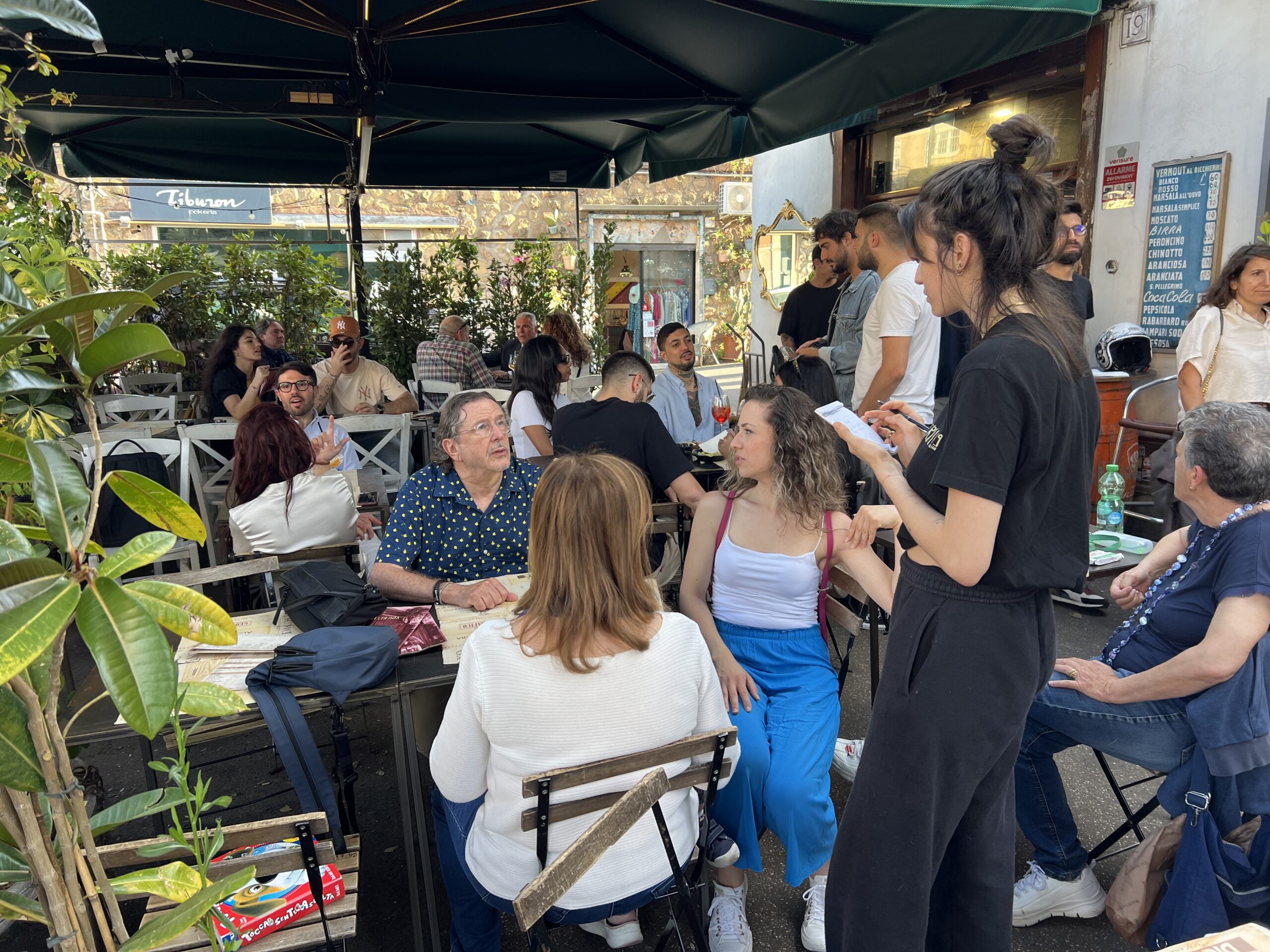
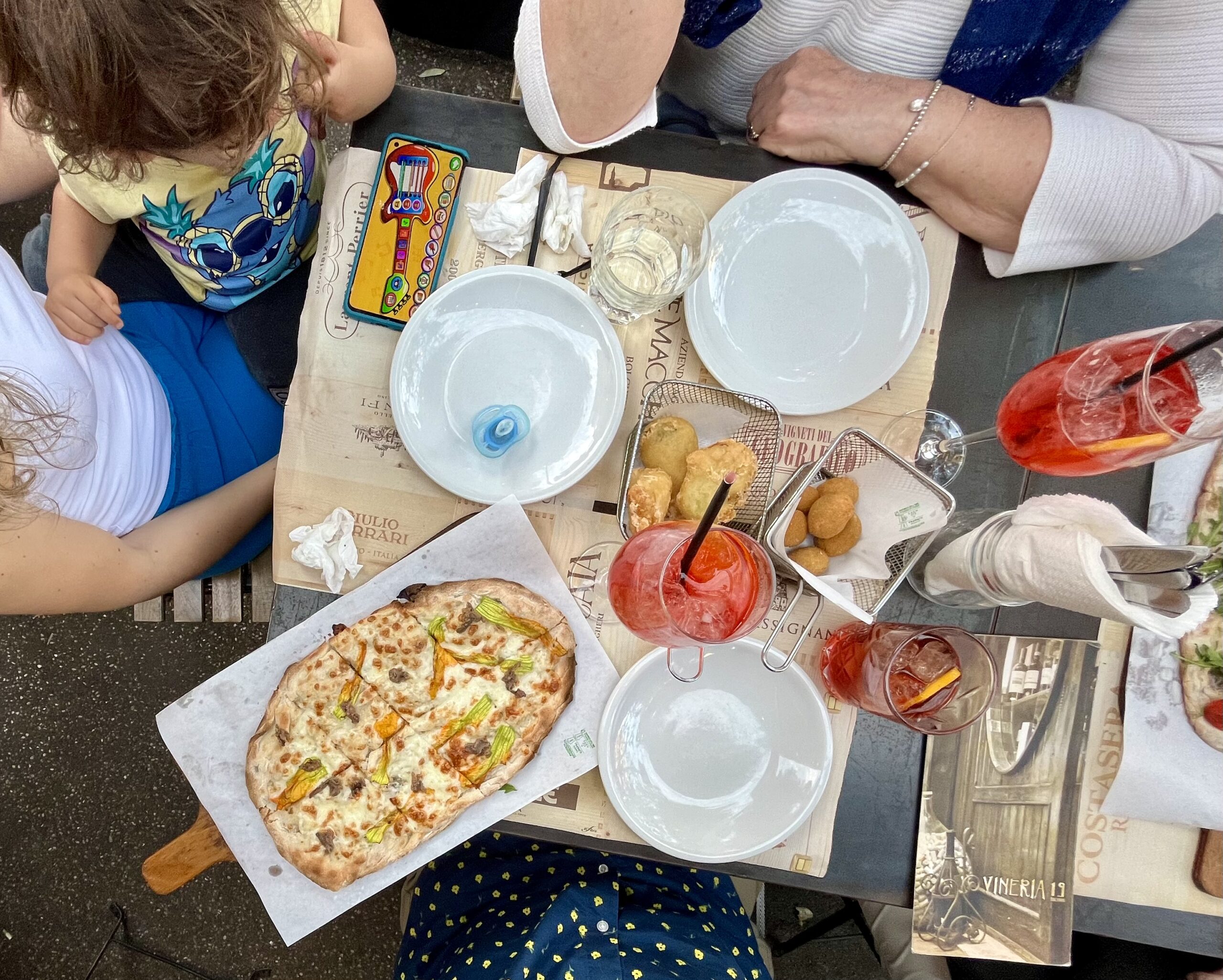
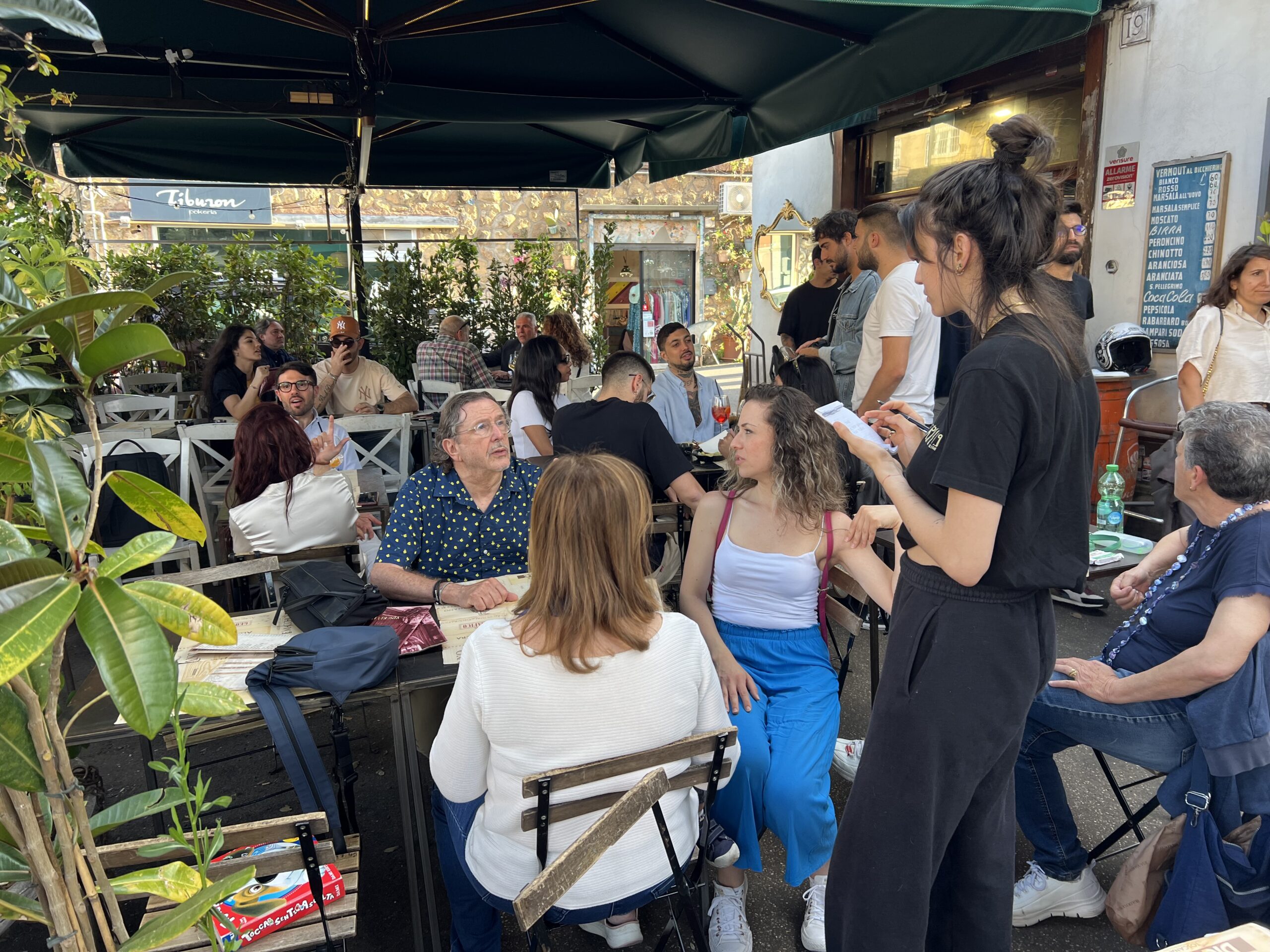
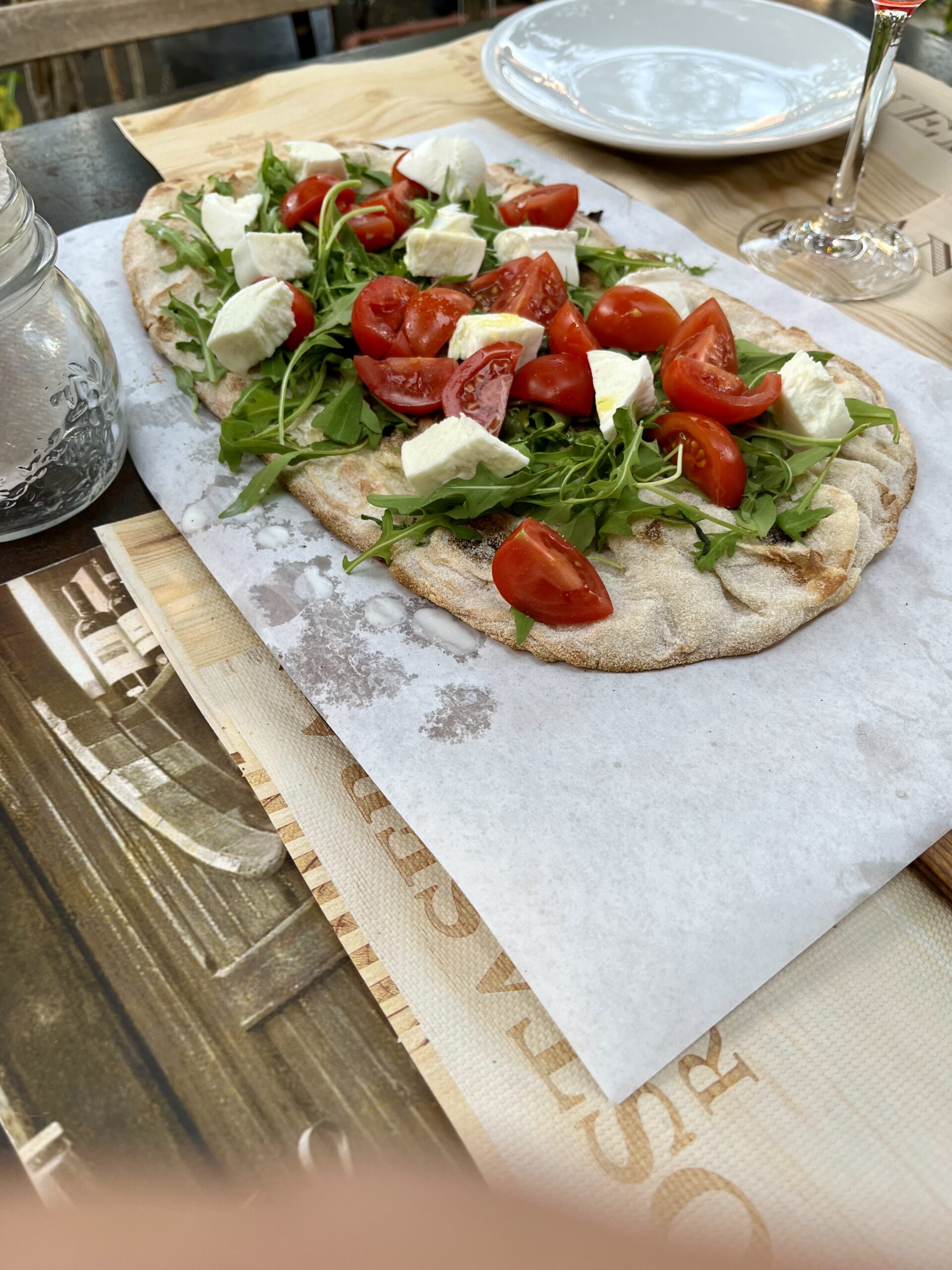
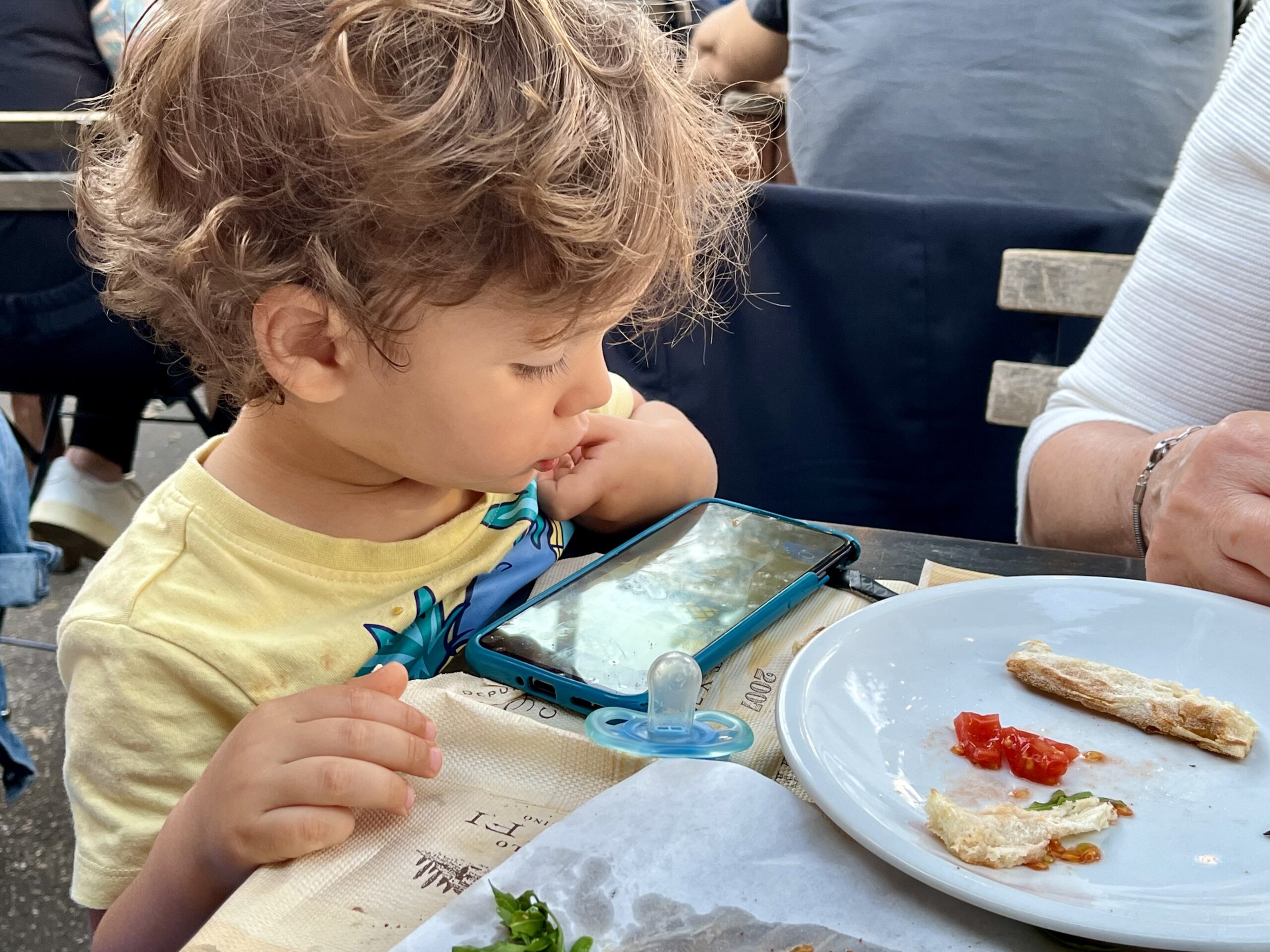
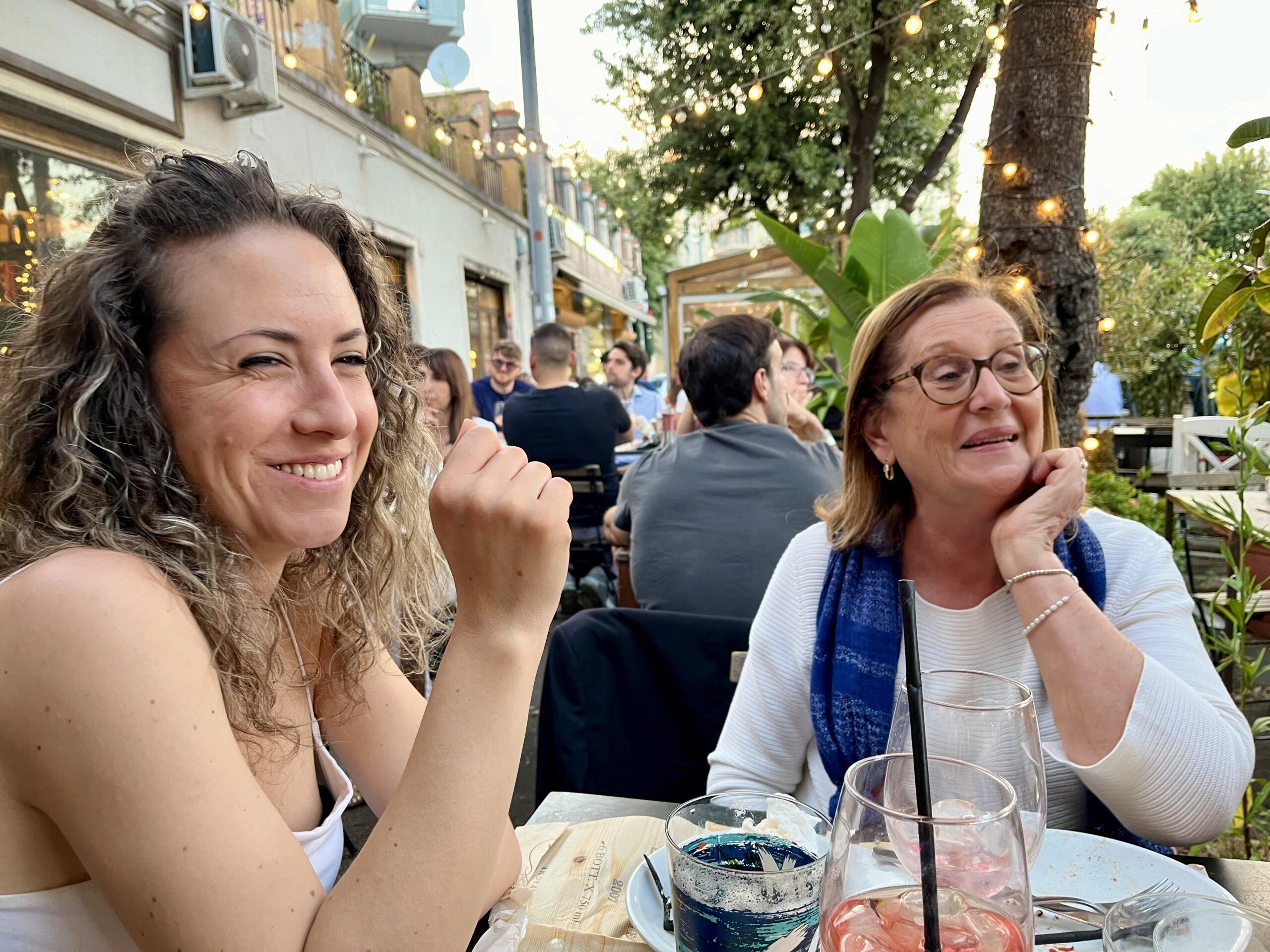
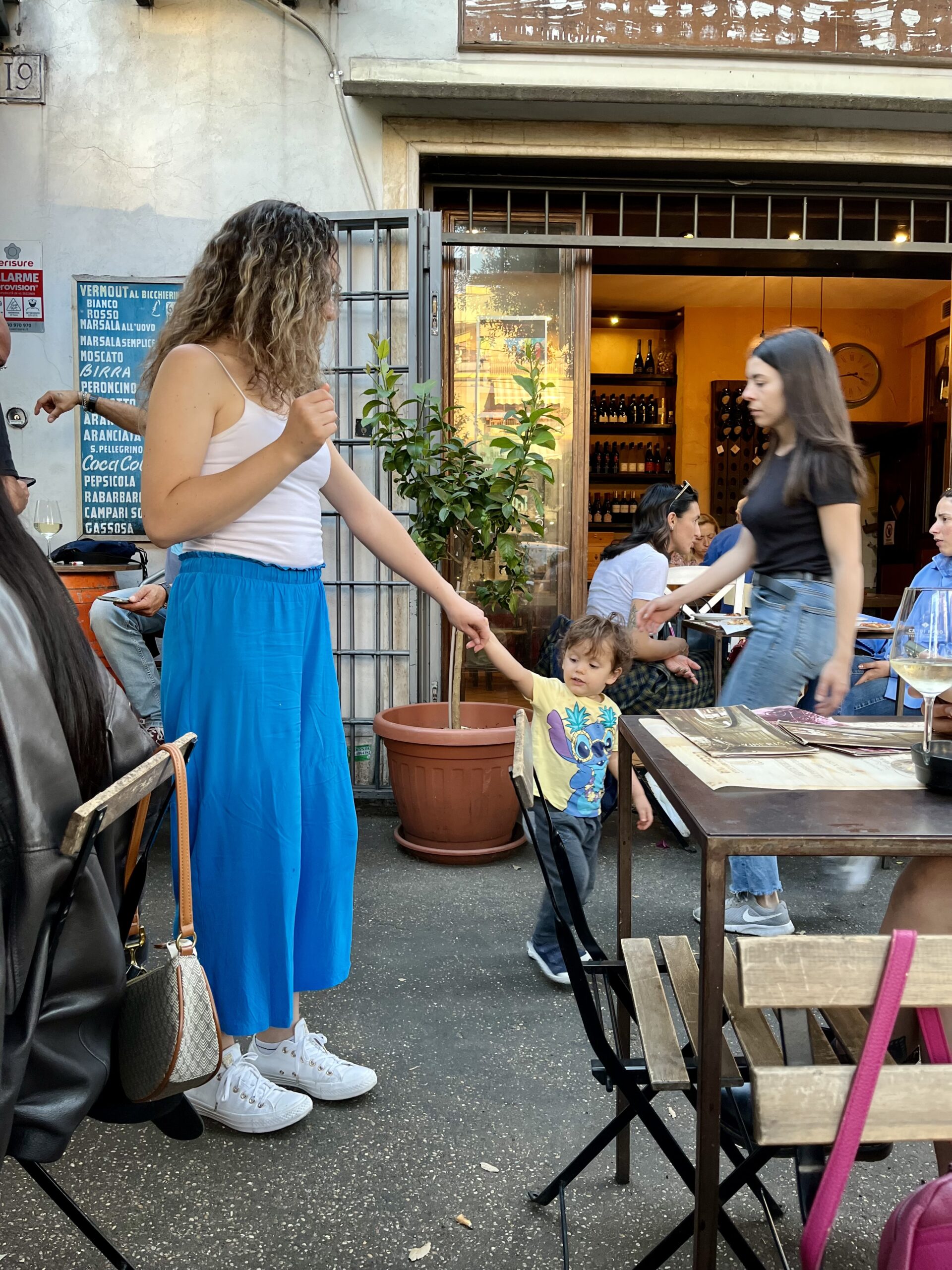
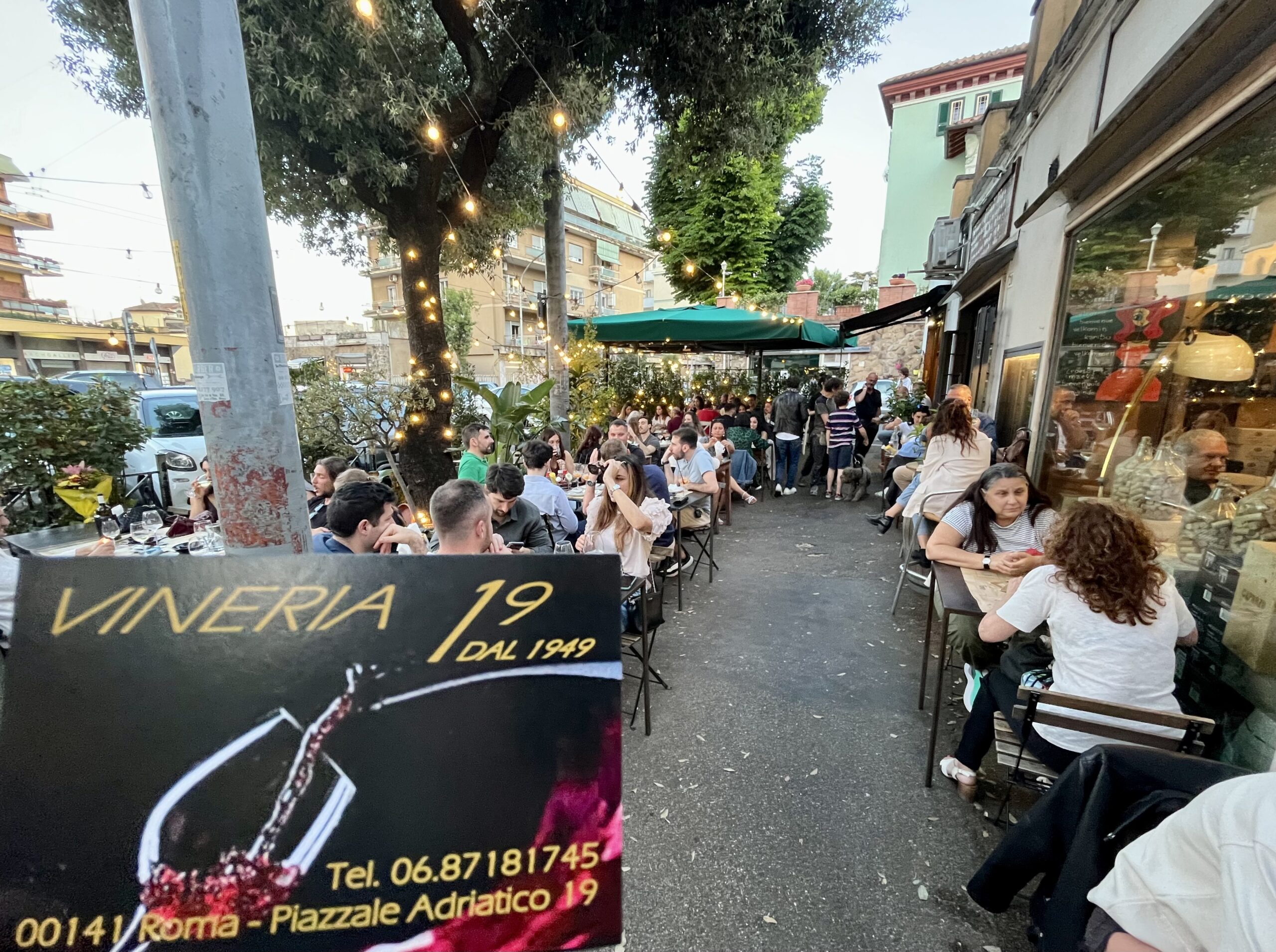
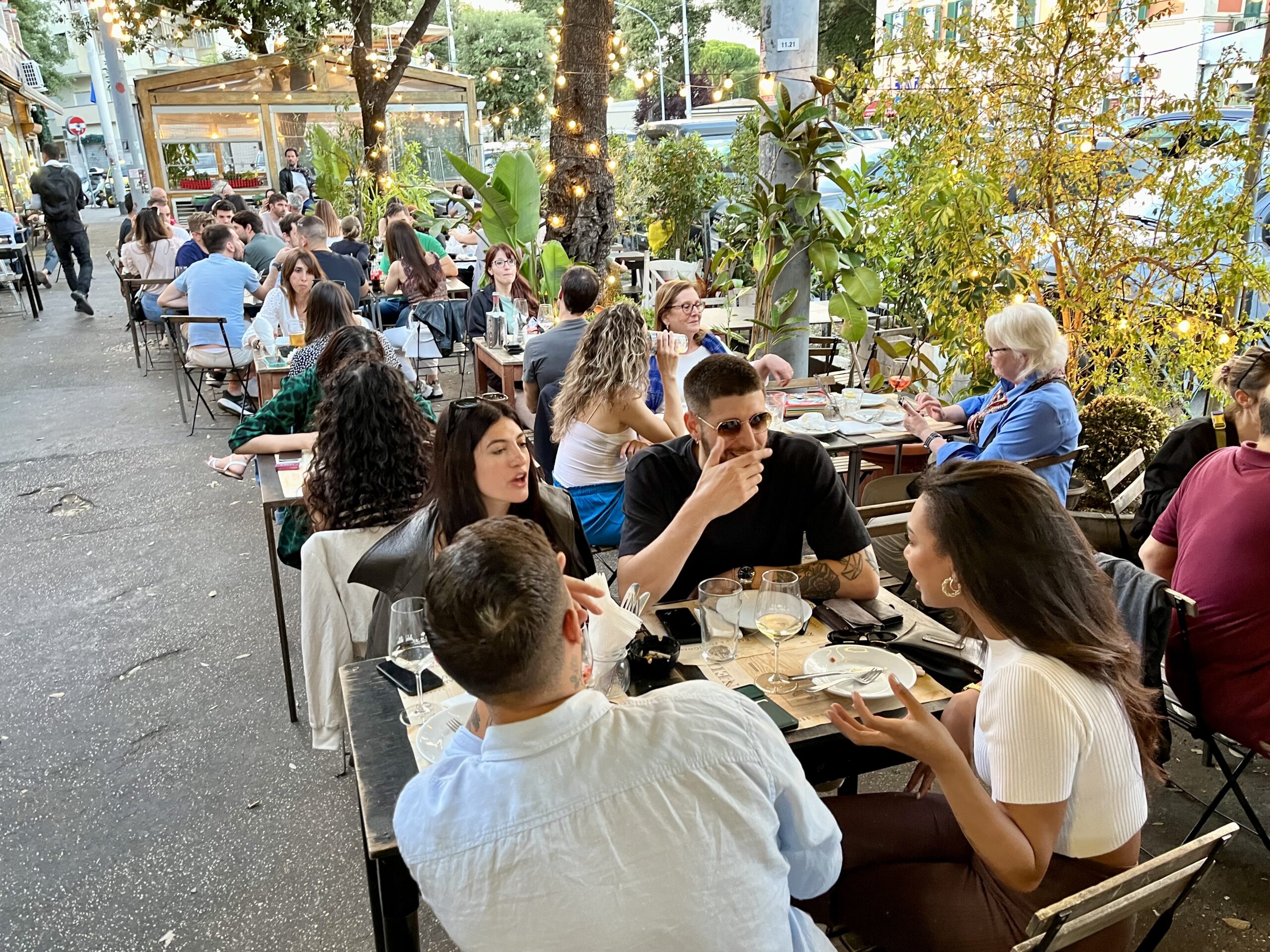
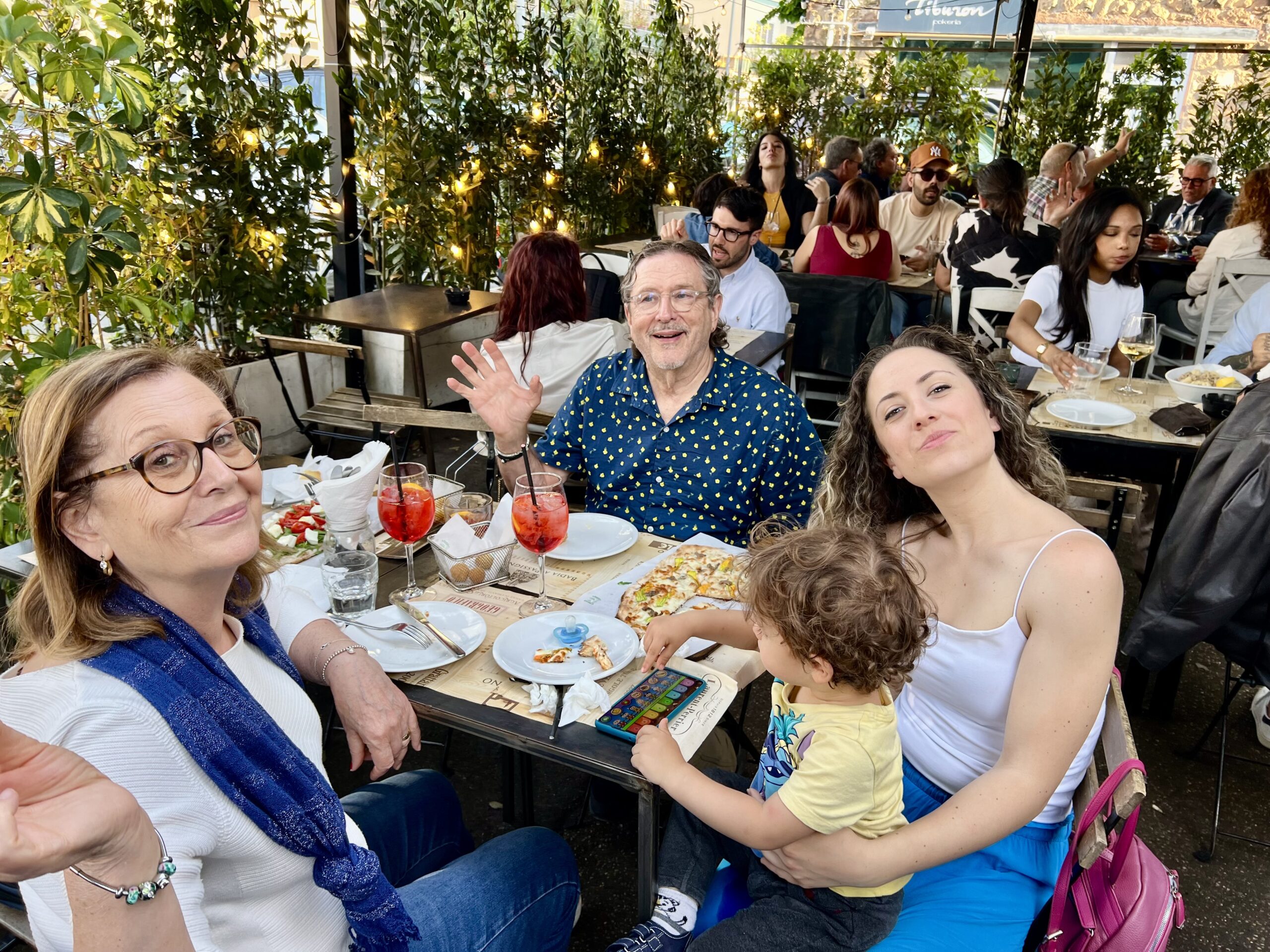
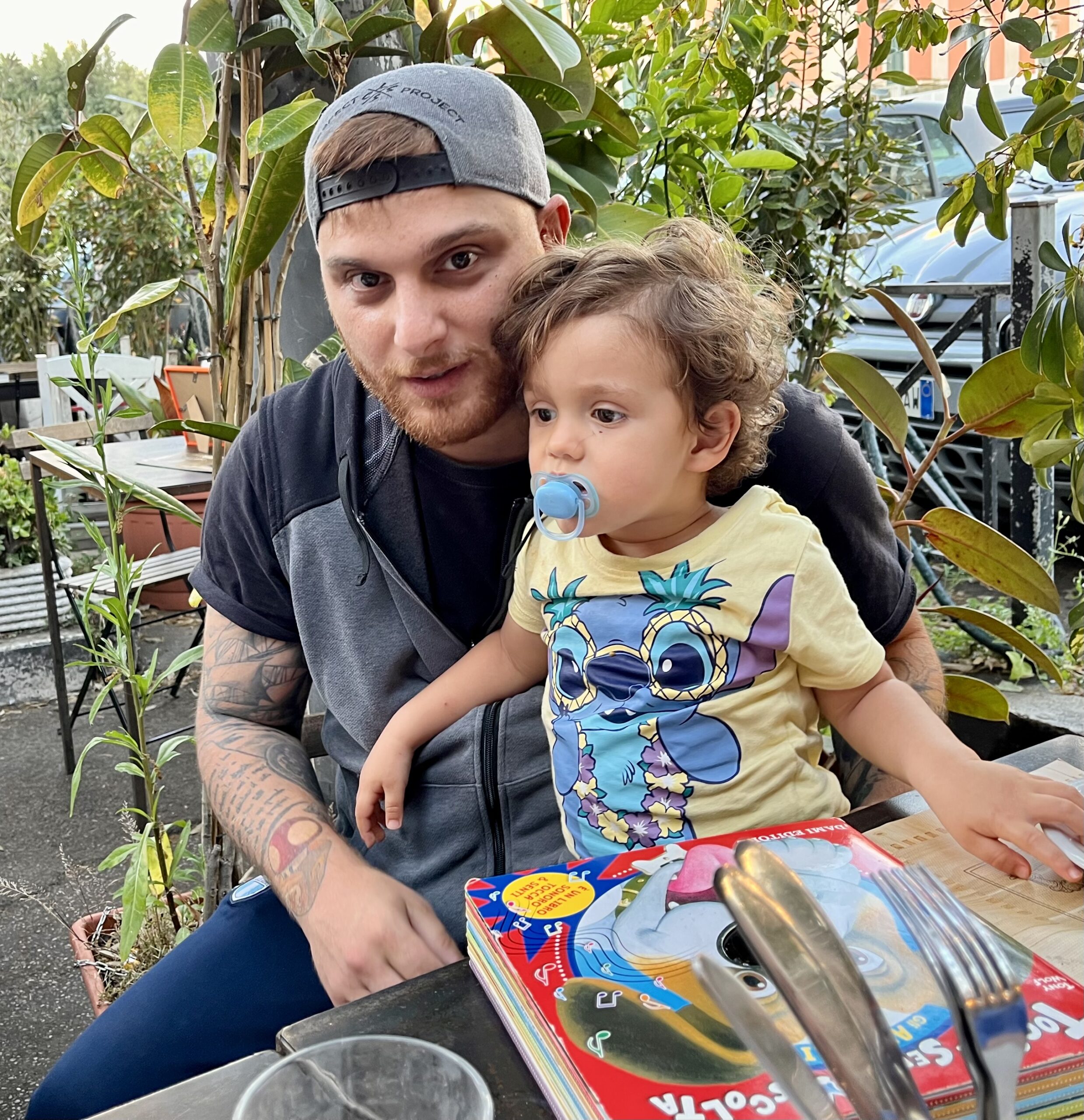
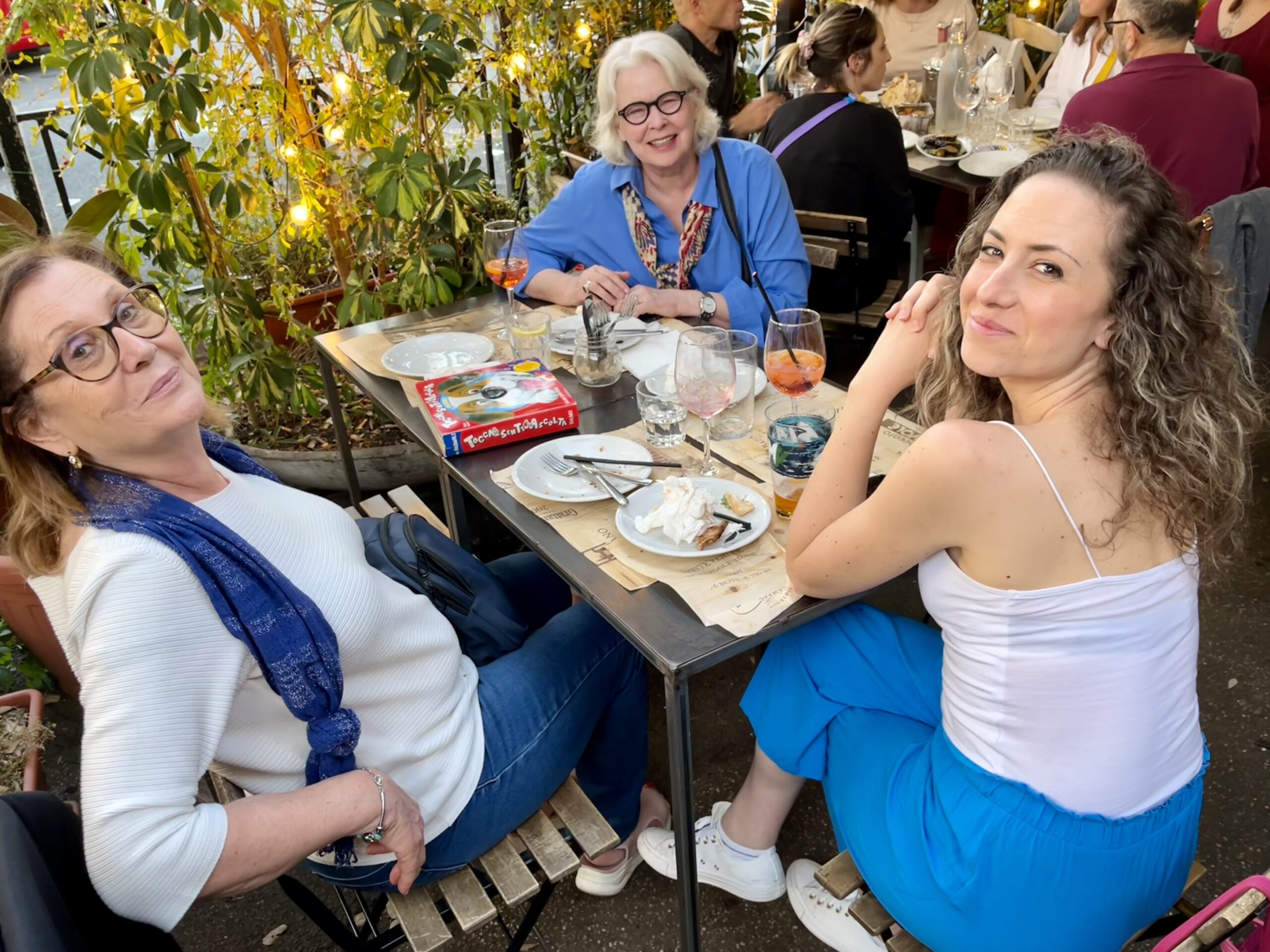
Brian and Kate!!!
We were thrilled to meet our nephew Brian Loyd and his wife Kate Lane to introduce them to Rome. Like us, they were headed to Richard’s birthday in Palermo, and they had just spent a few days in Paris and Florence. We are amazed at how much they pack into their visits to each city and what unusual experiences they choose. In Rome, Bonnie went into full urban geographer mode, starting with lunch in the Giudecca. We insisted, to their delight, on Jewish fried twice artichokes.
We followed a short walk through the nearby Roman ruins and a stroll across the Tiber (very full) through the Trastevere with an excellent beer near the Palazzo Farnese where Bonnie could point out features of Renaissance architecture. In the Piazza Navona Robert recalled a lecture from his class in Roman Baroque Architecture at UC Berkeley in 1972 highlighting the rivalry between the architects Borromini and Bernini. The “kids,” who are much more oriented to the forests of Wisconsin, were remarkably open to our urban design enthusiasm.
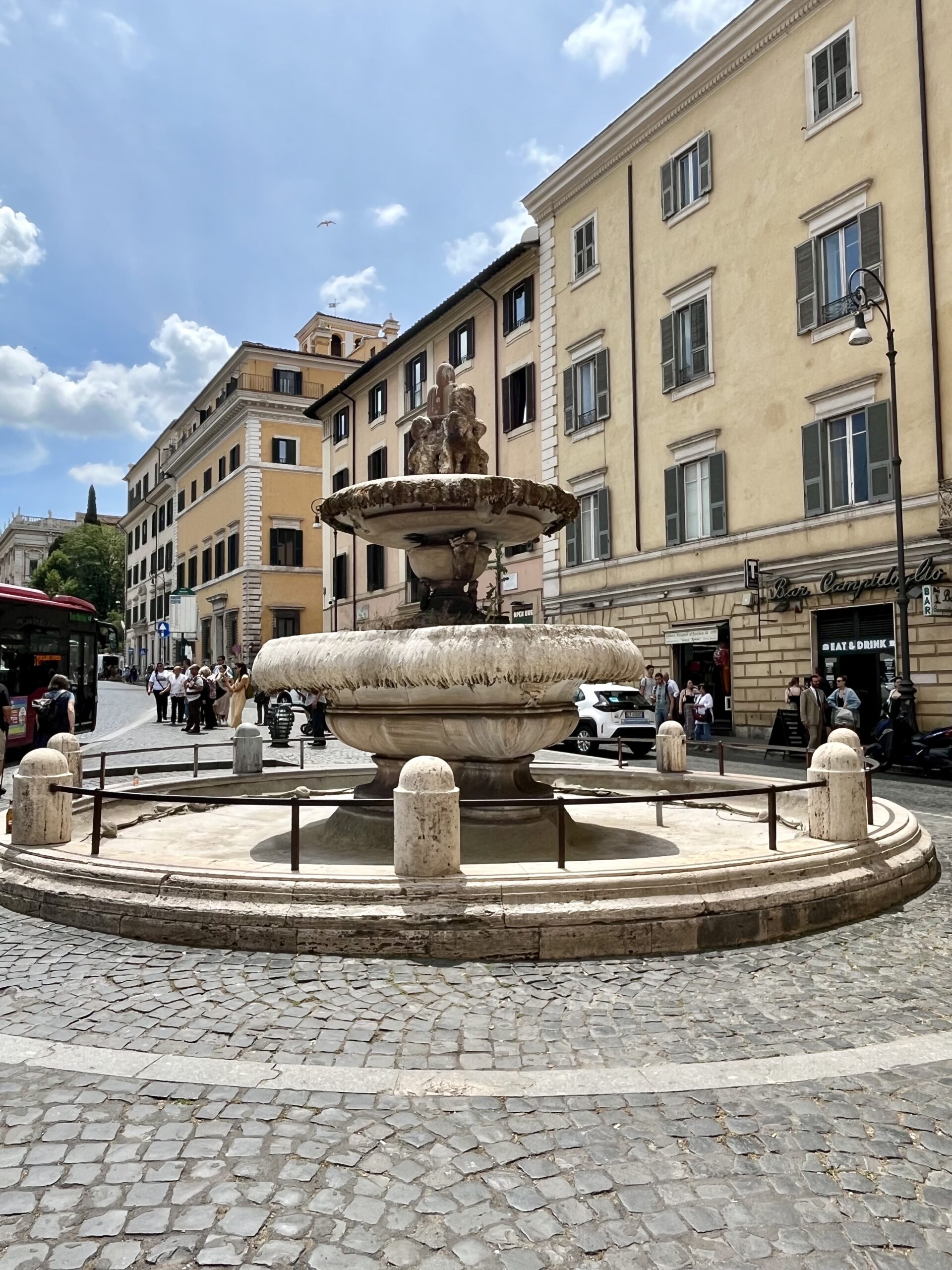
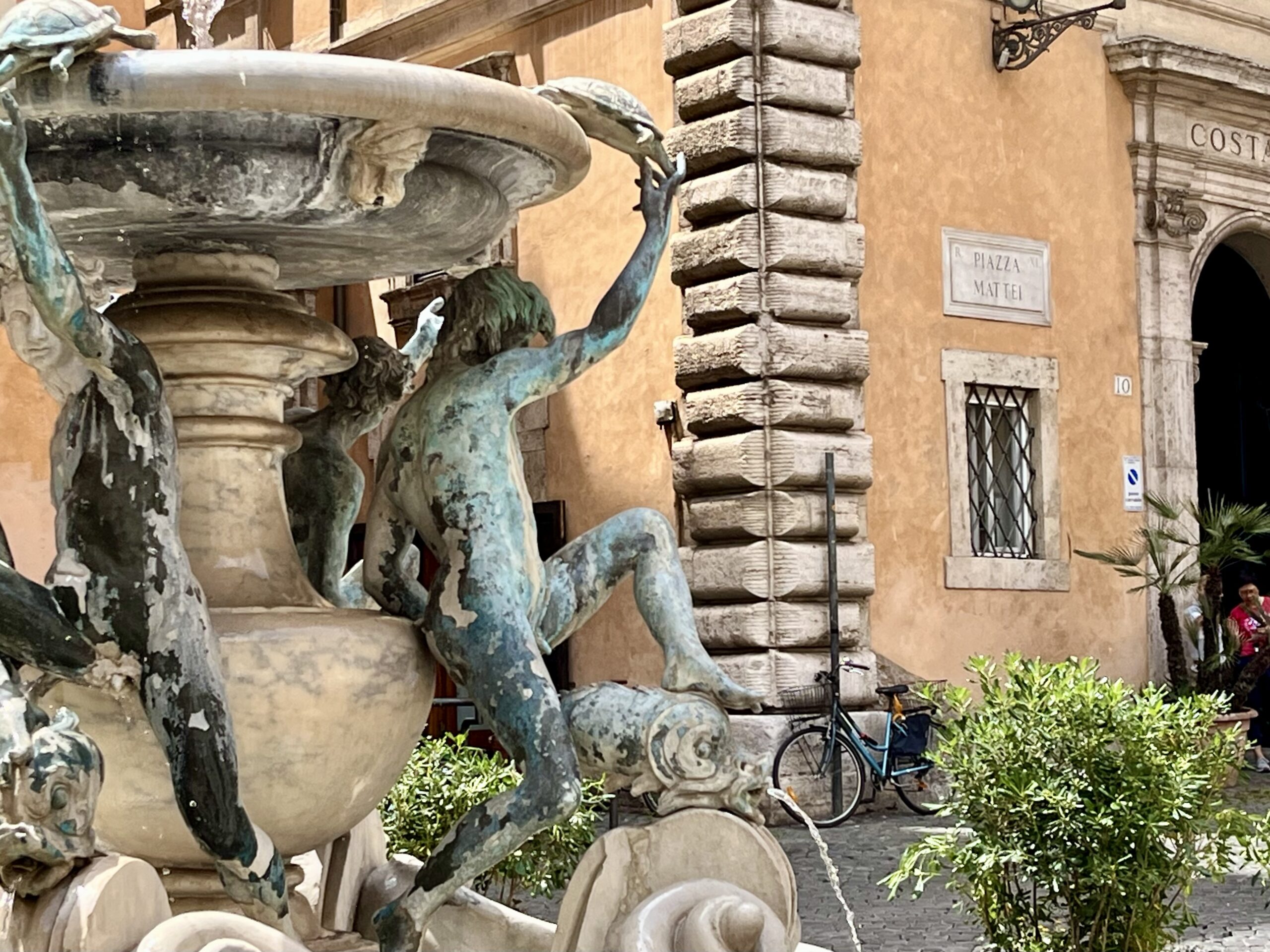
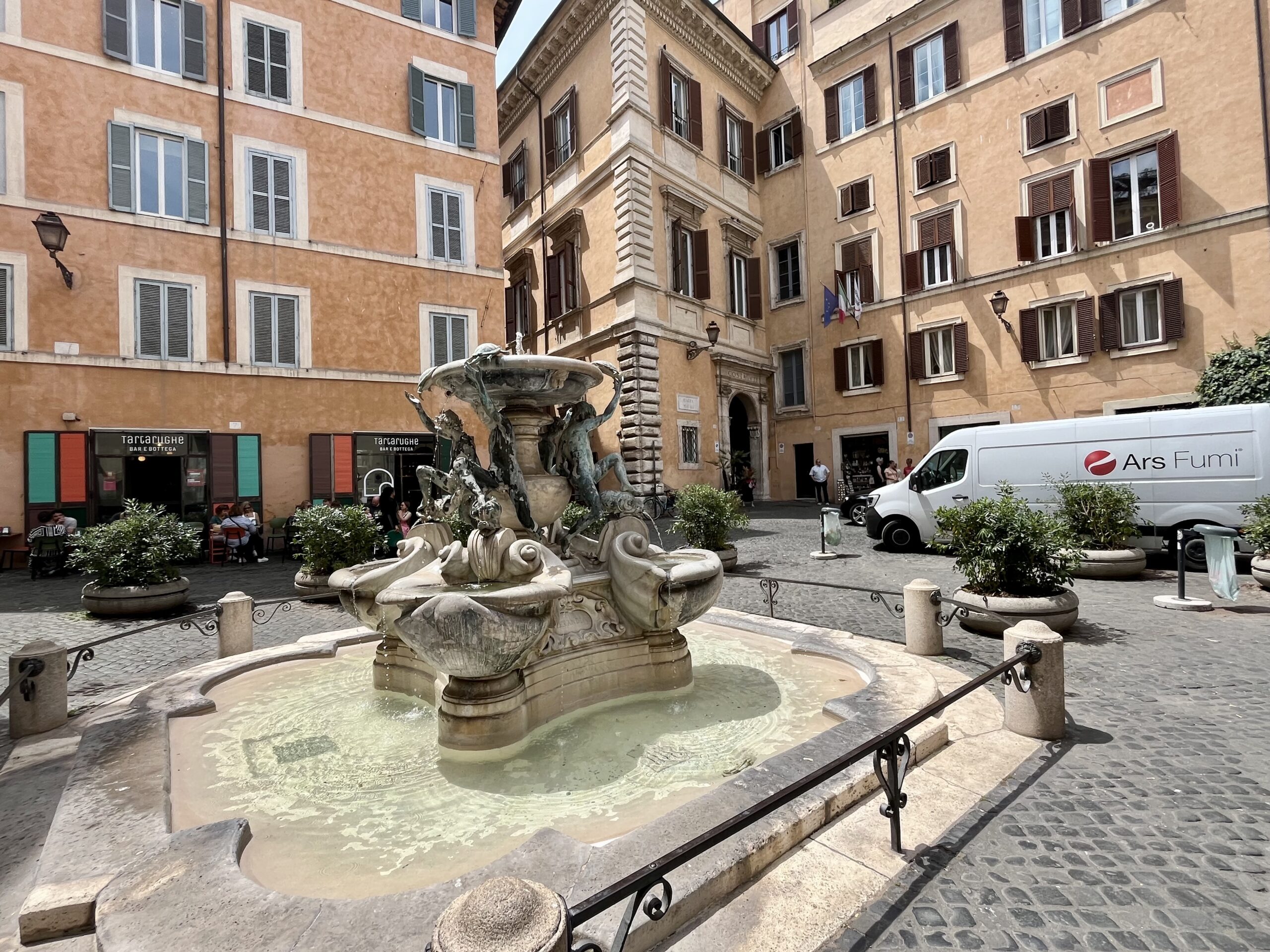
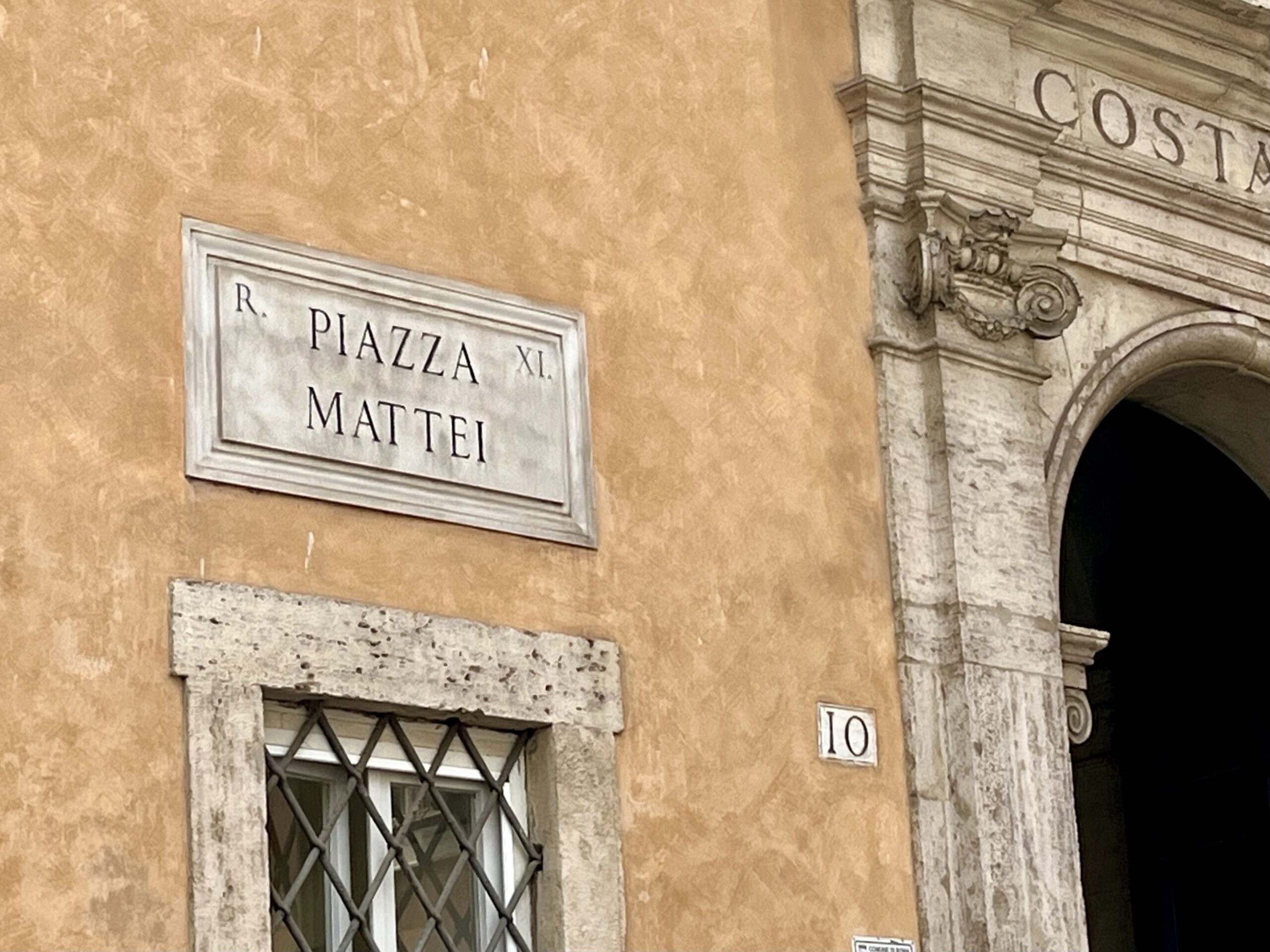

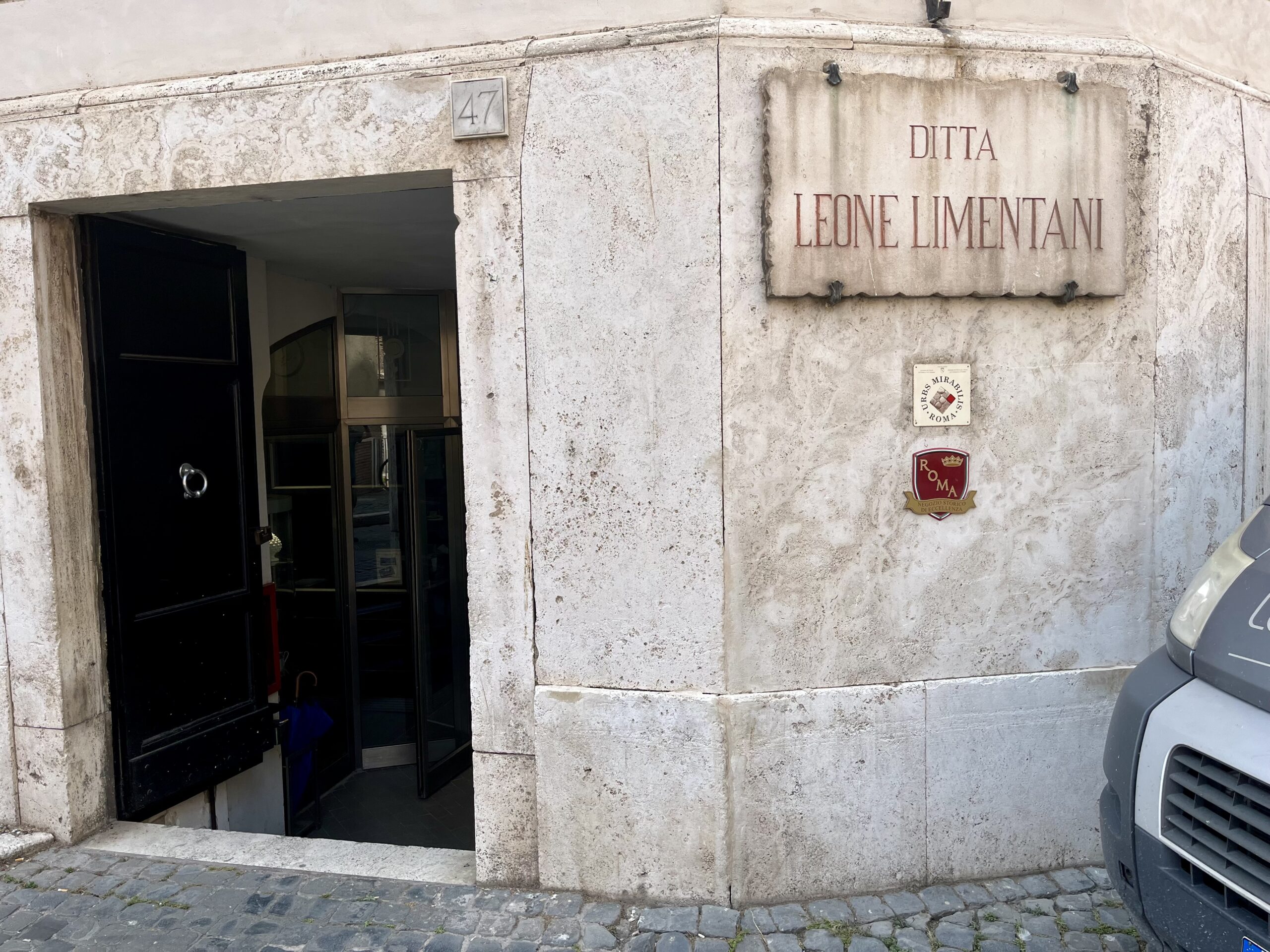
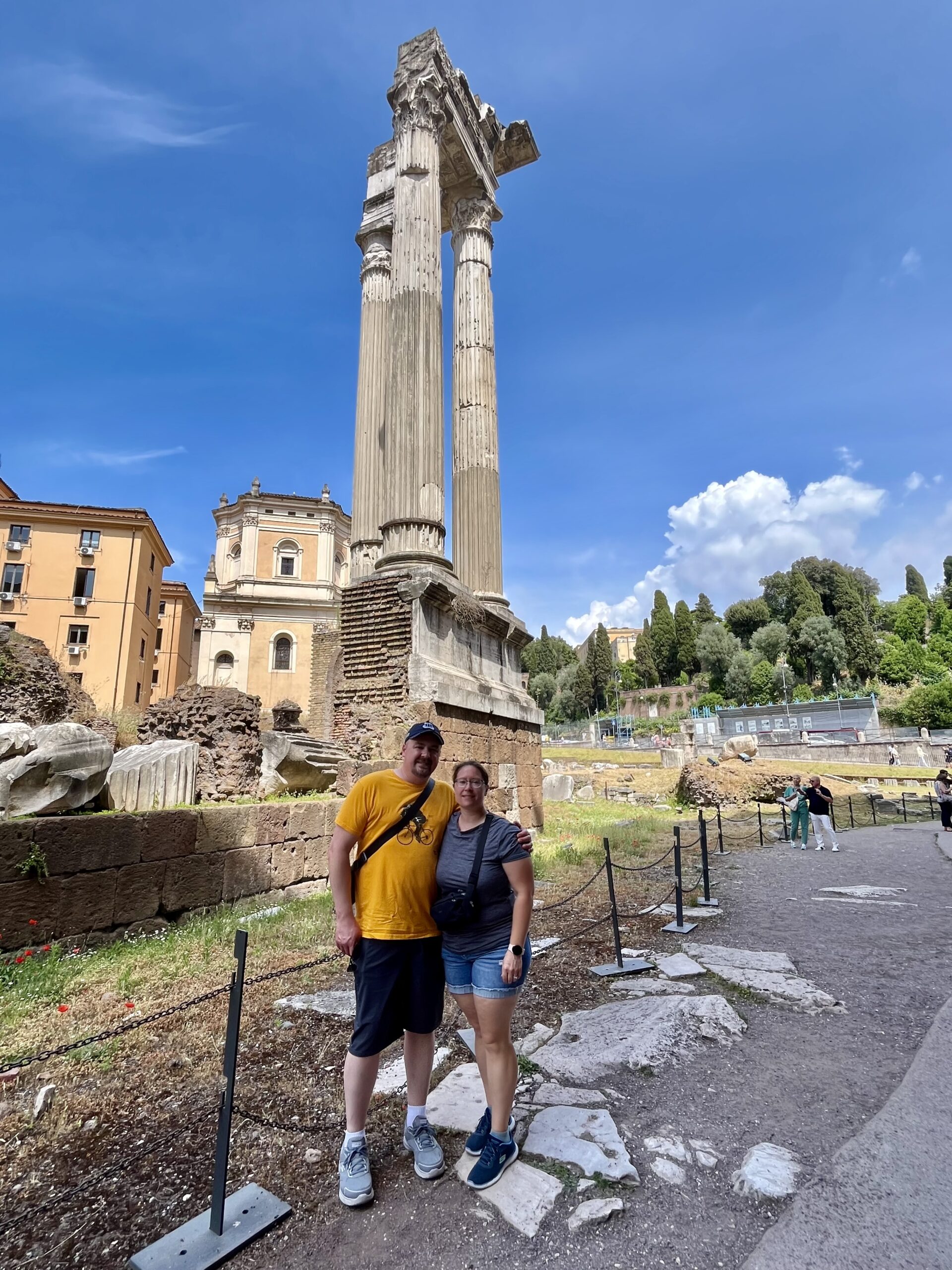
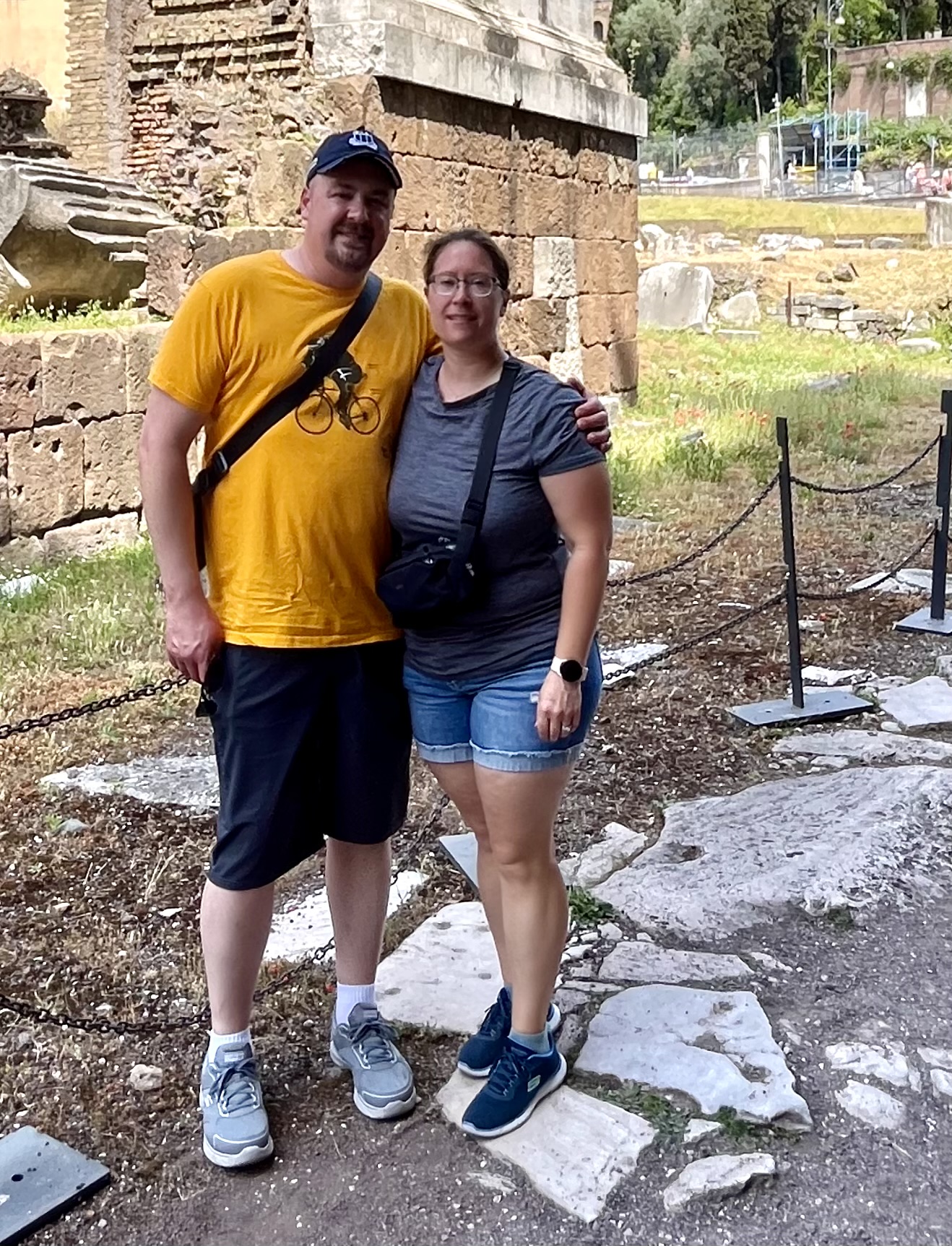
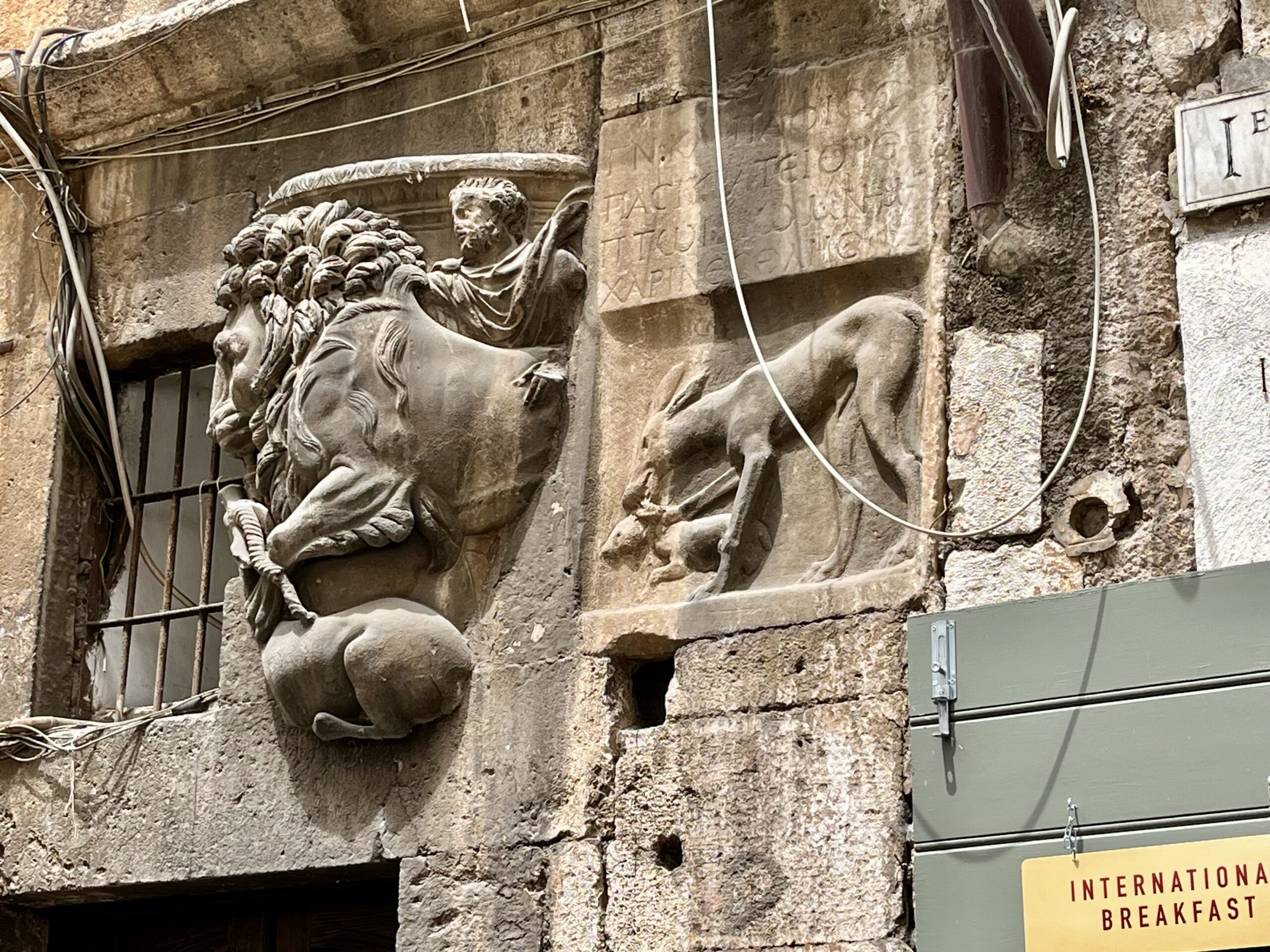

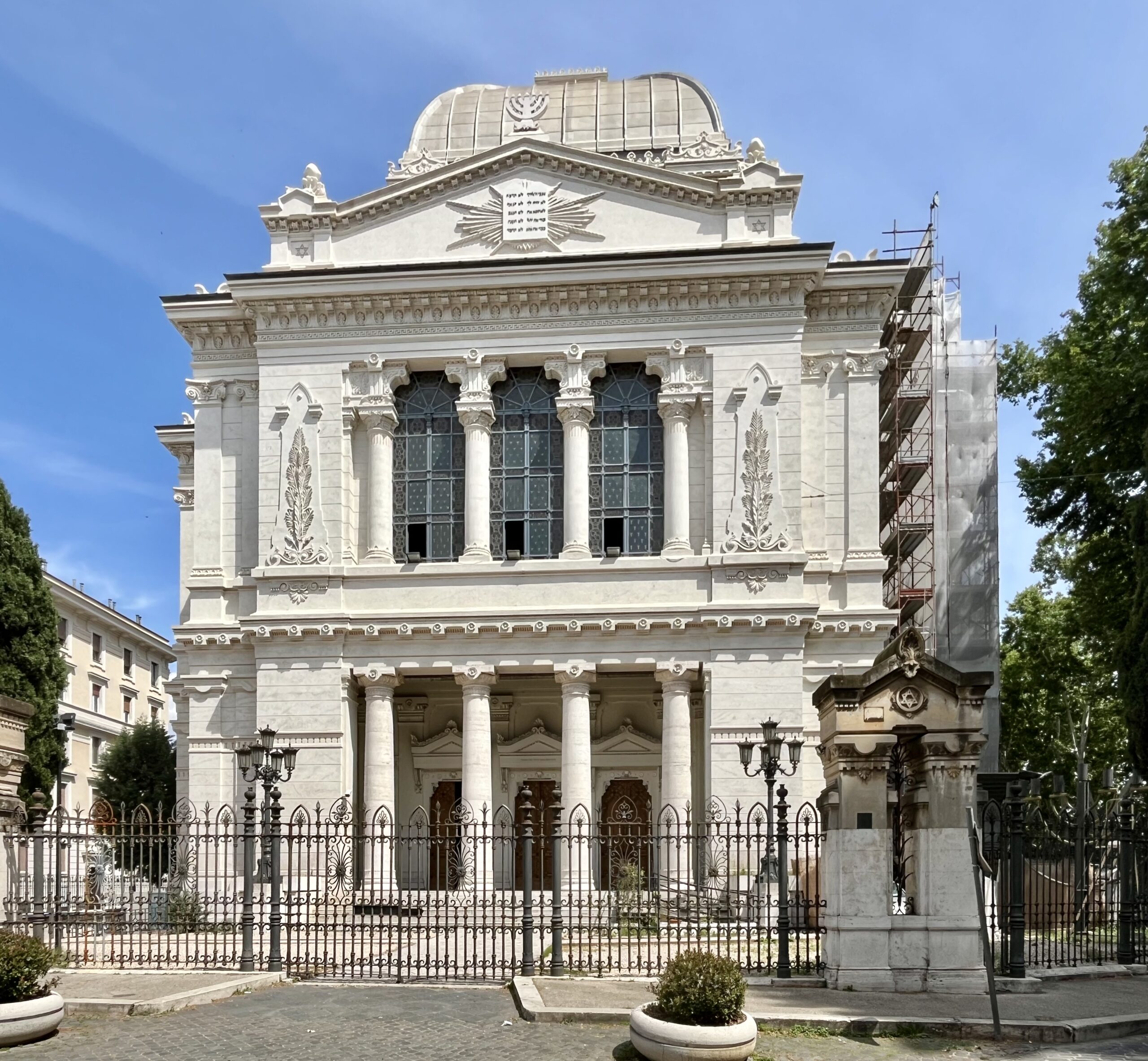
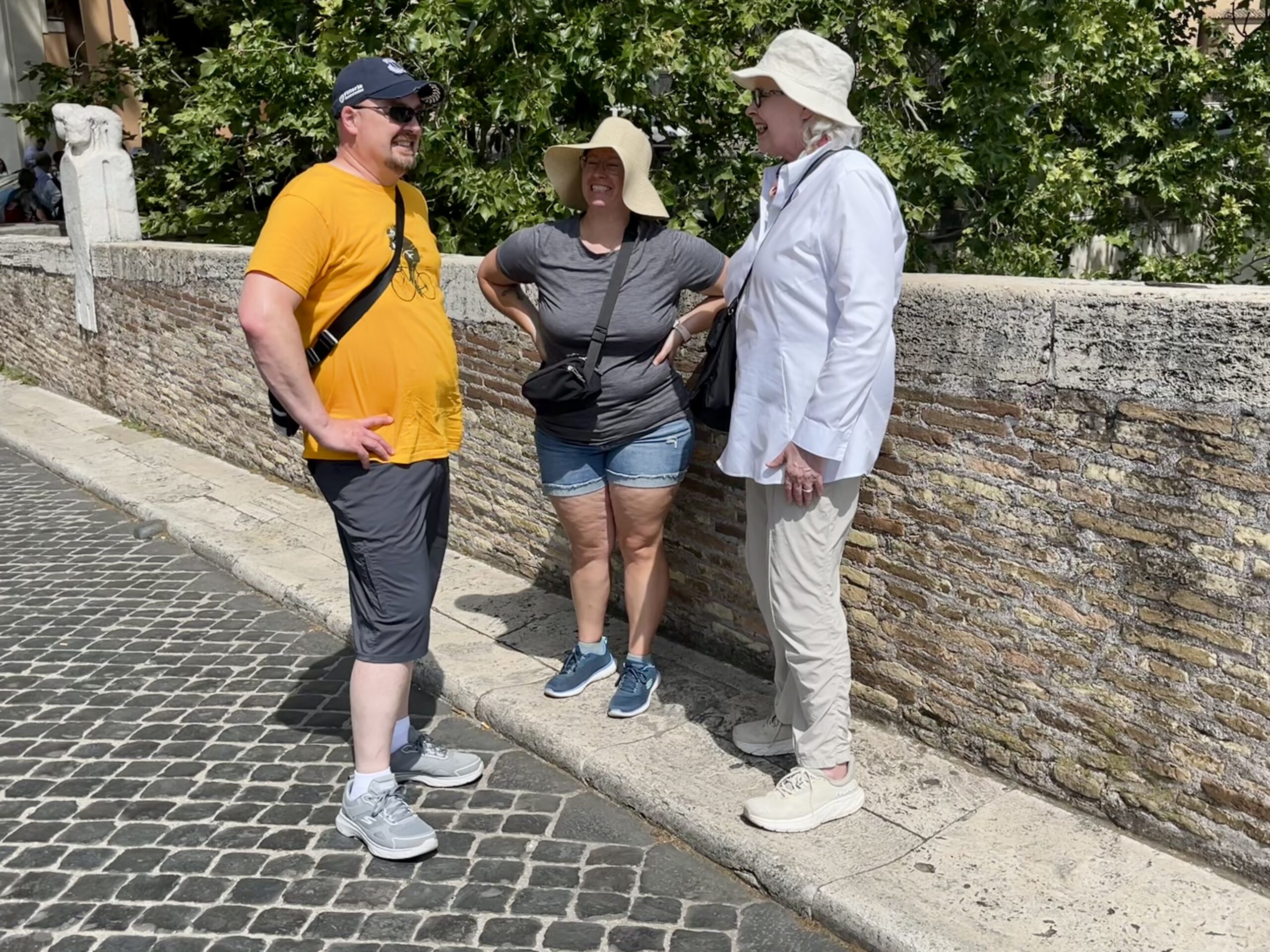
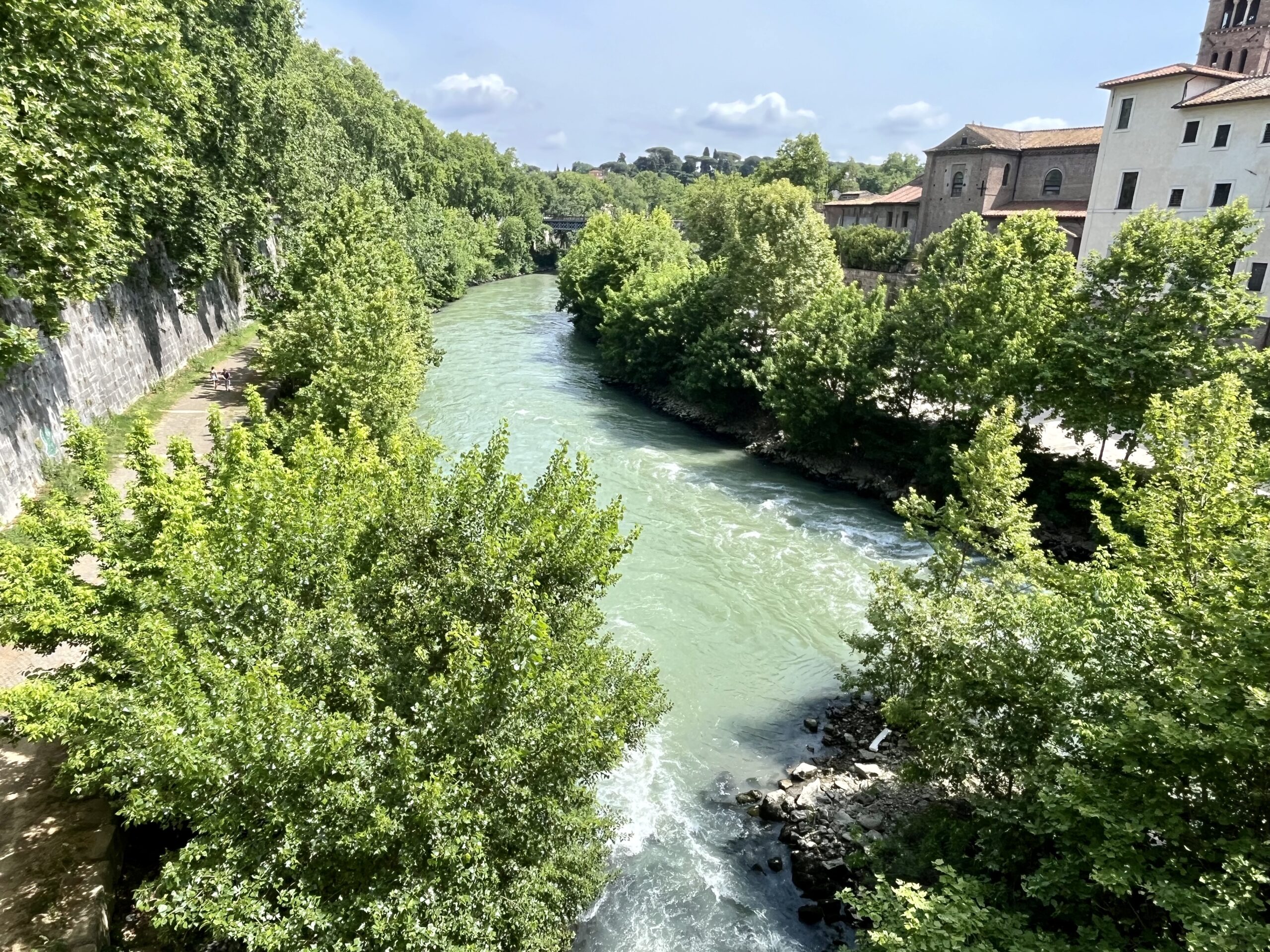
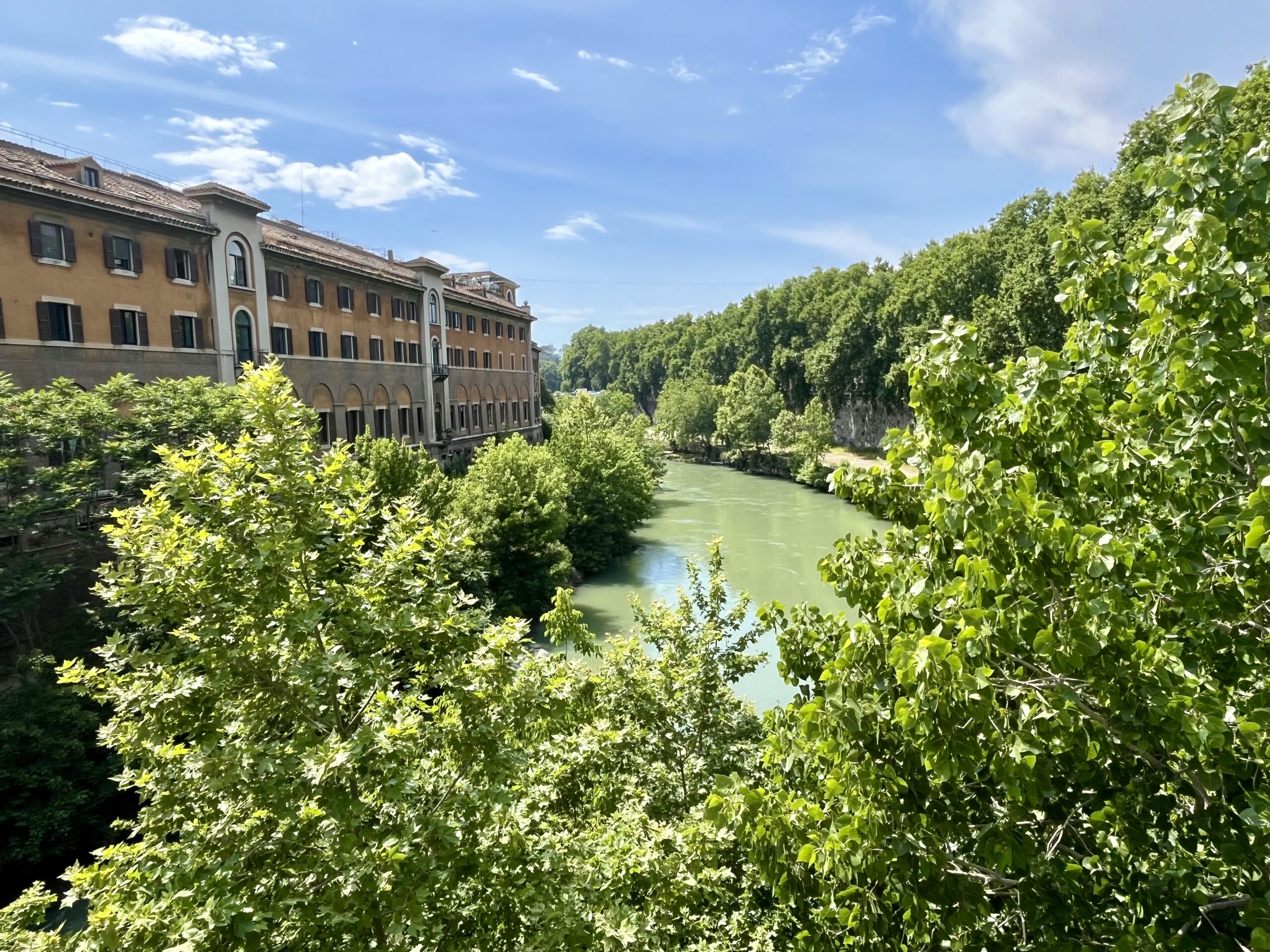
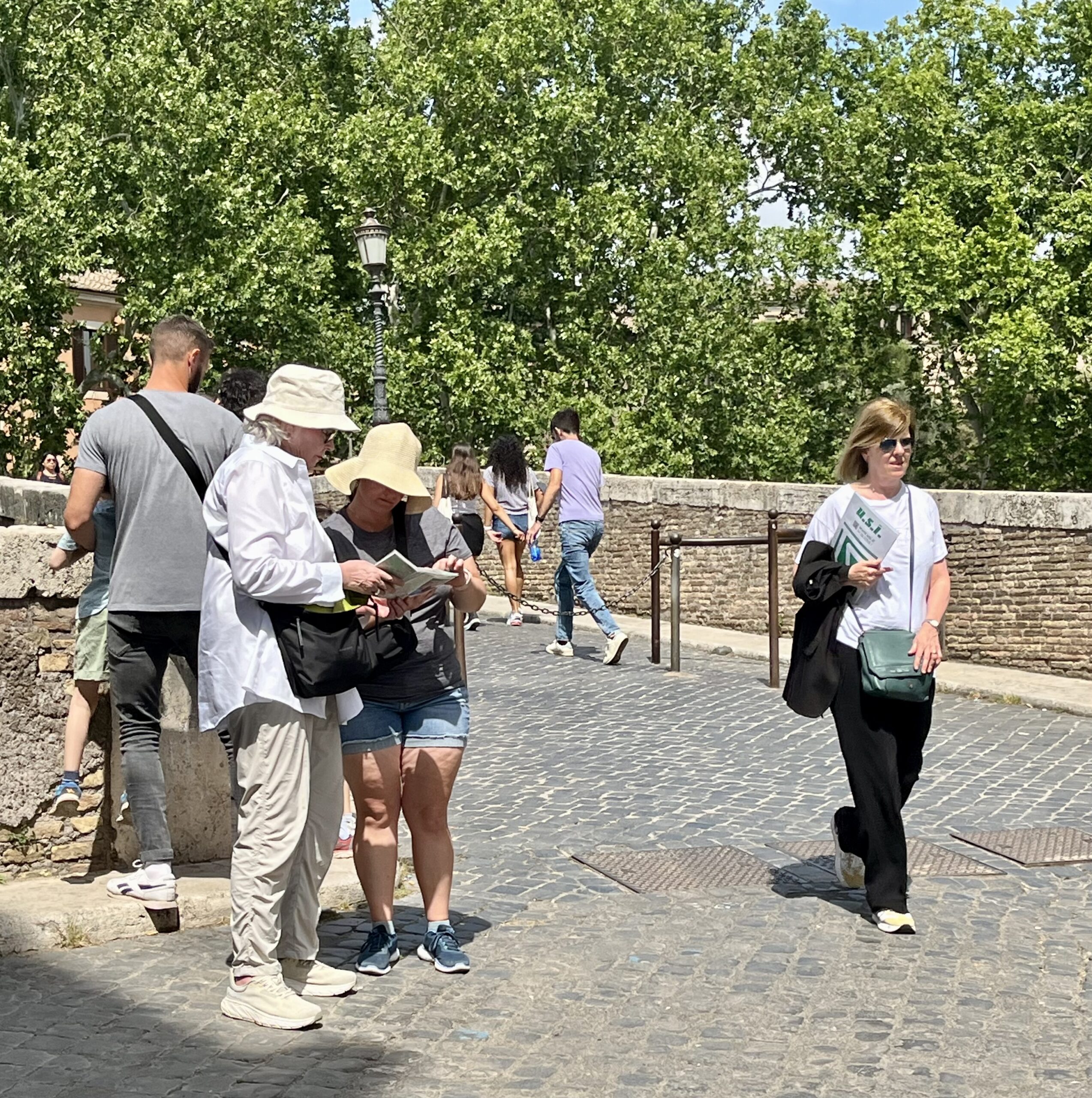

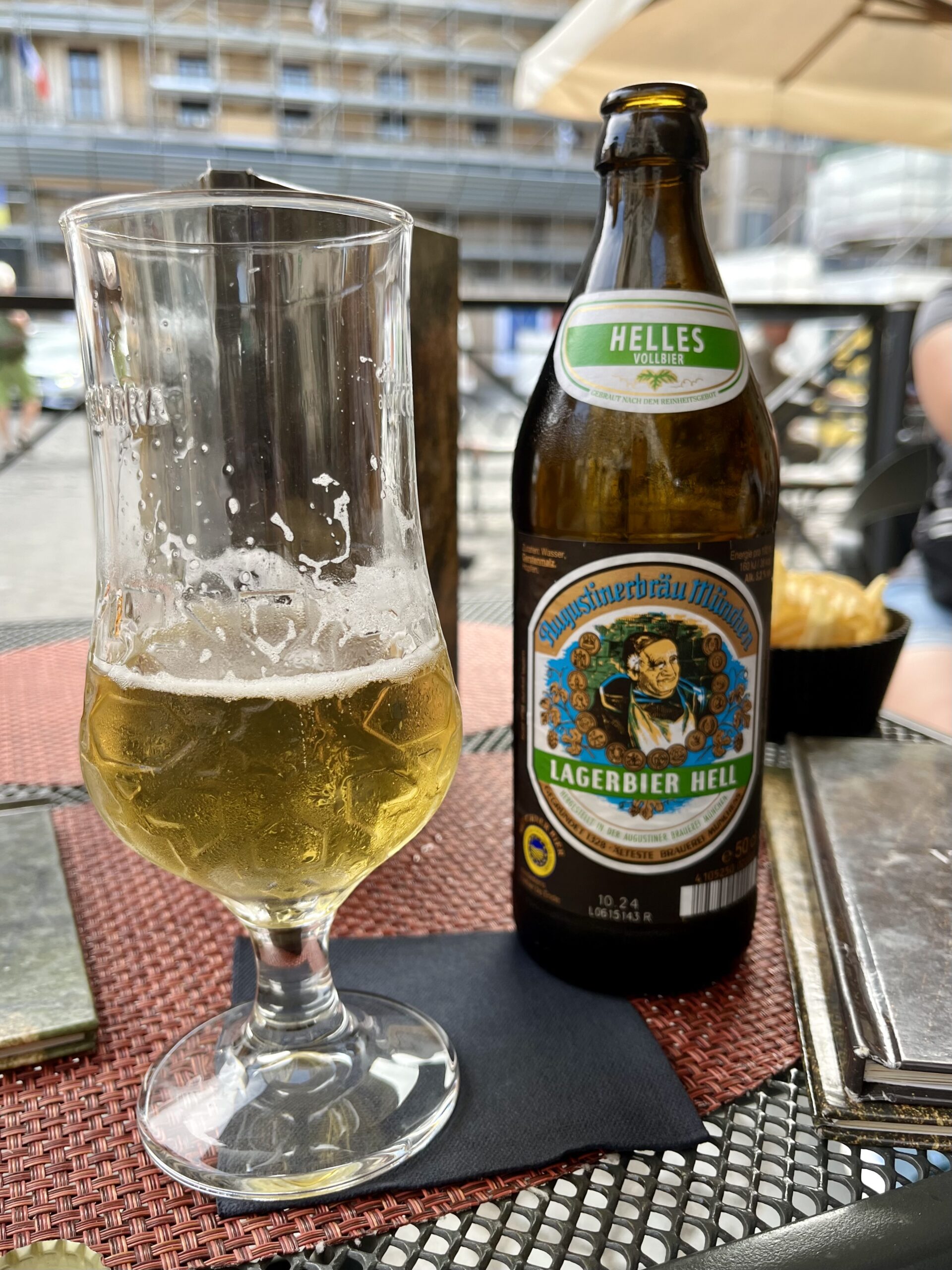
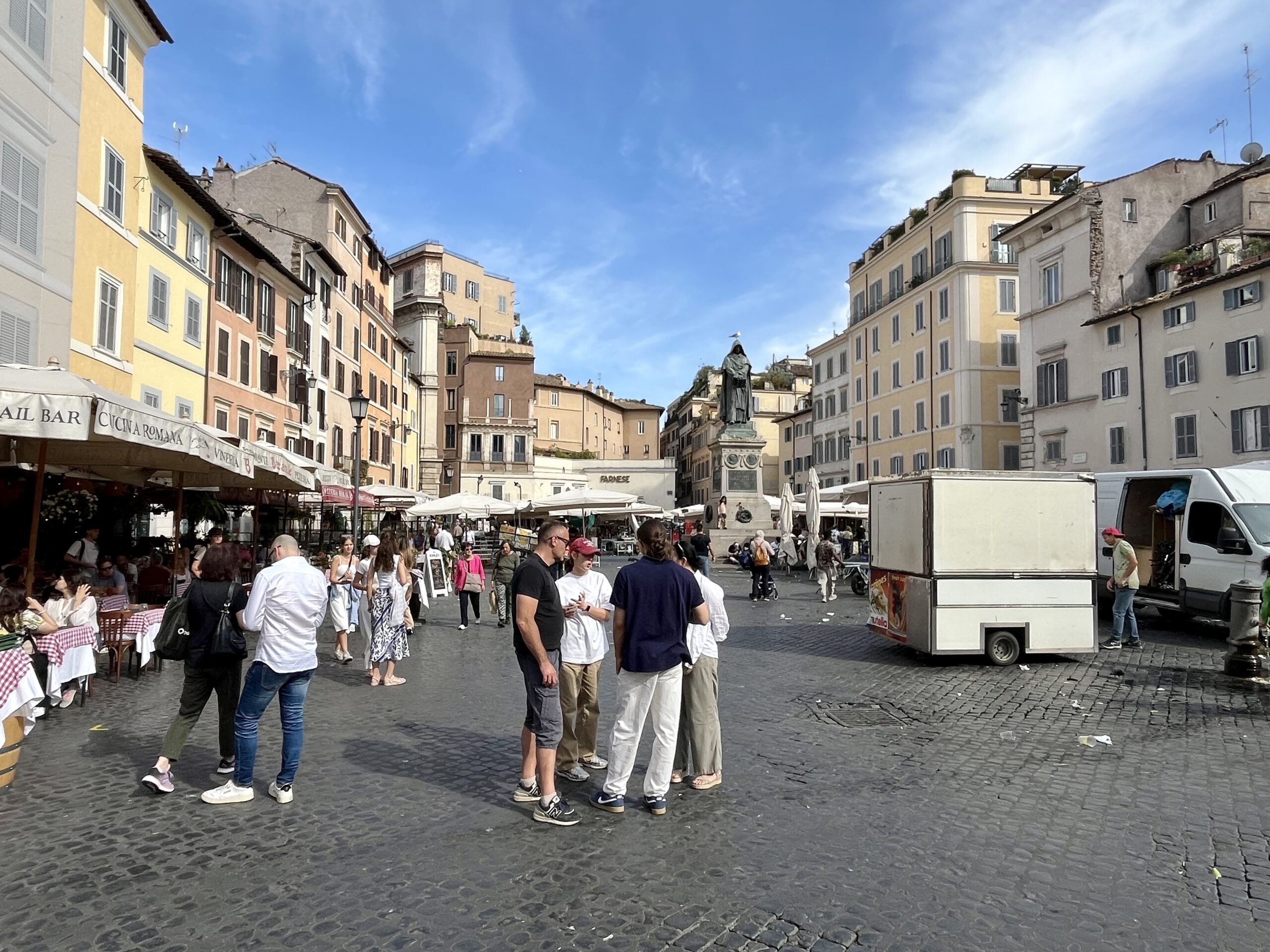
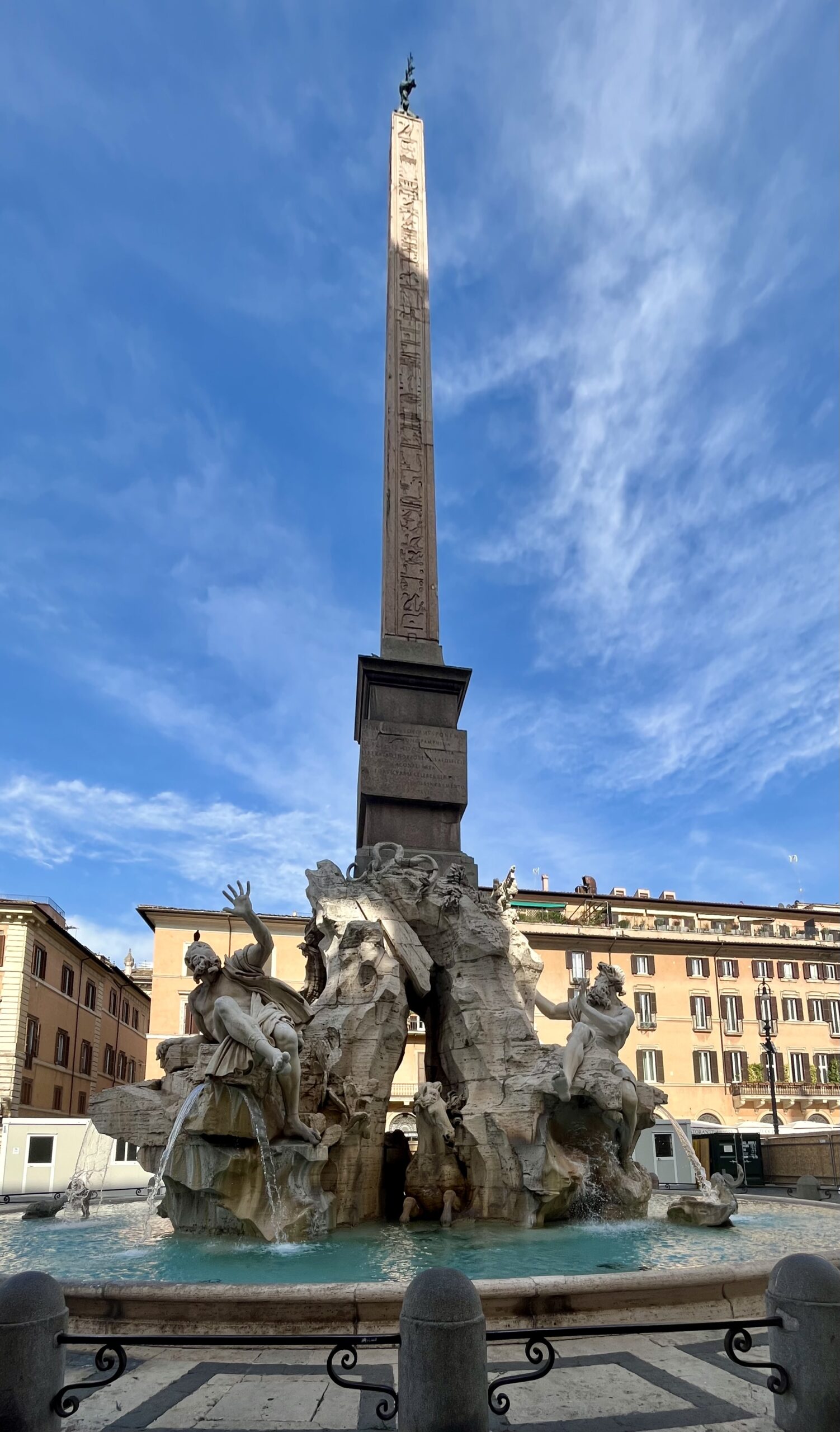
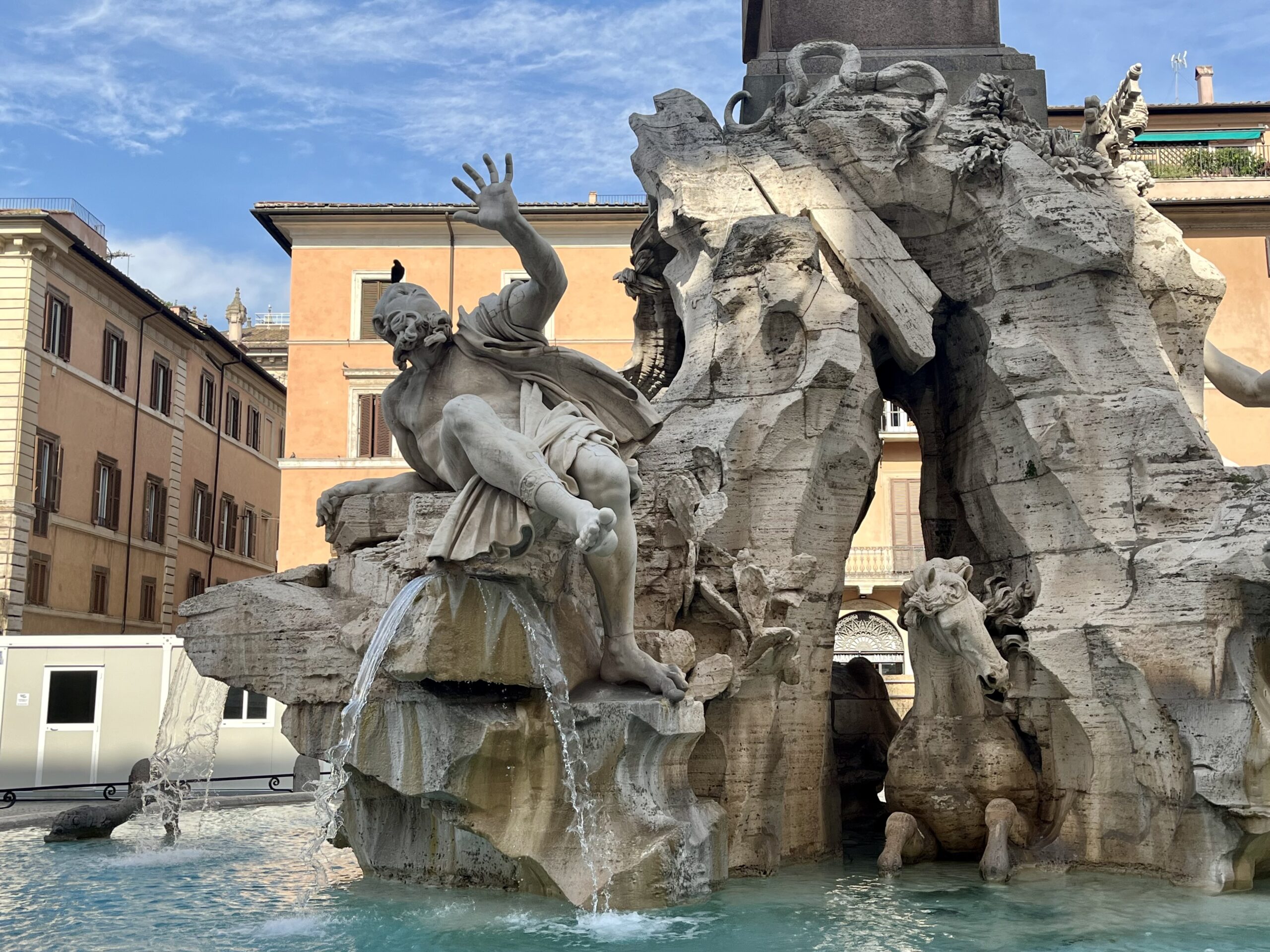
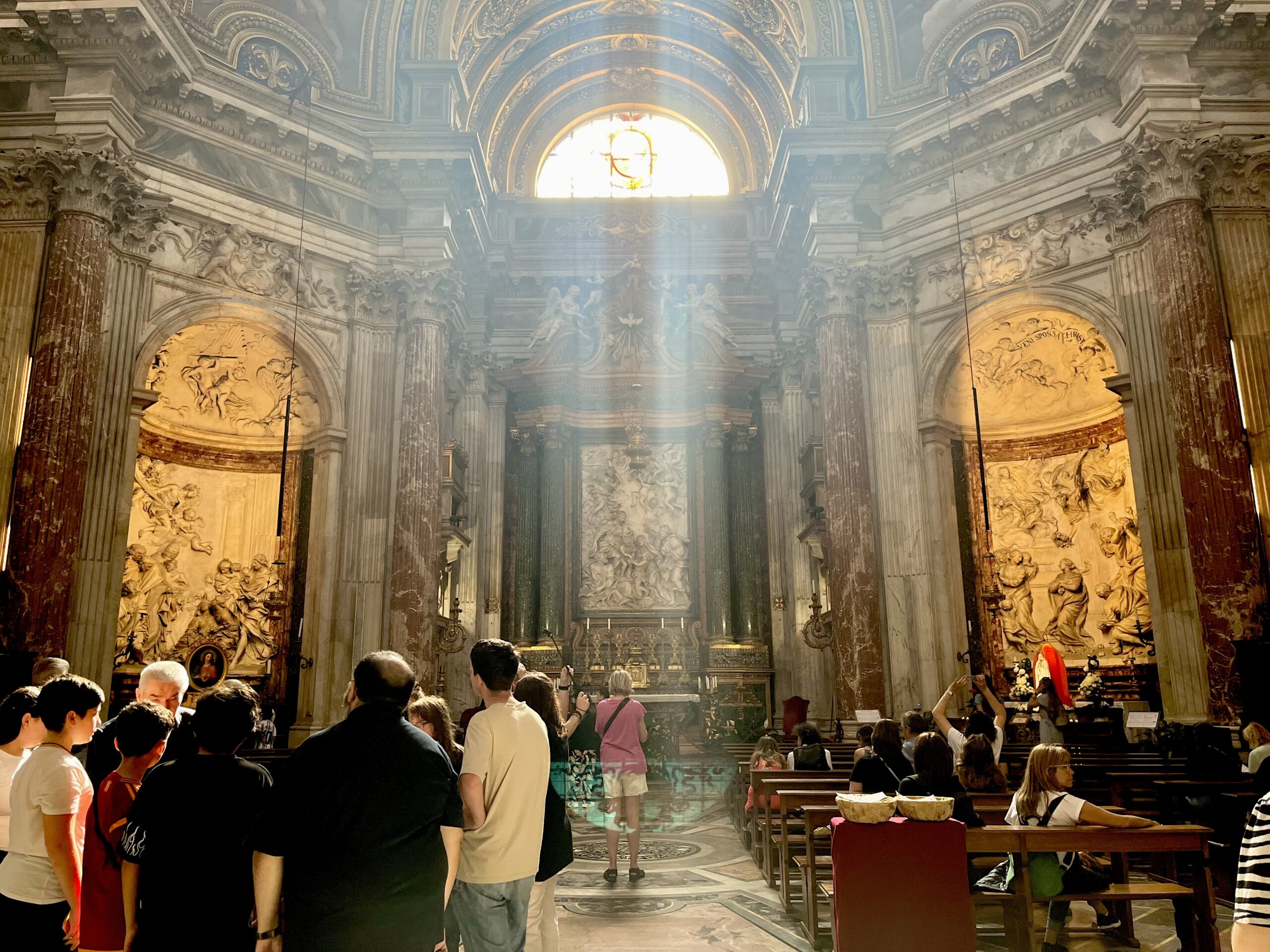
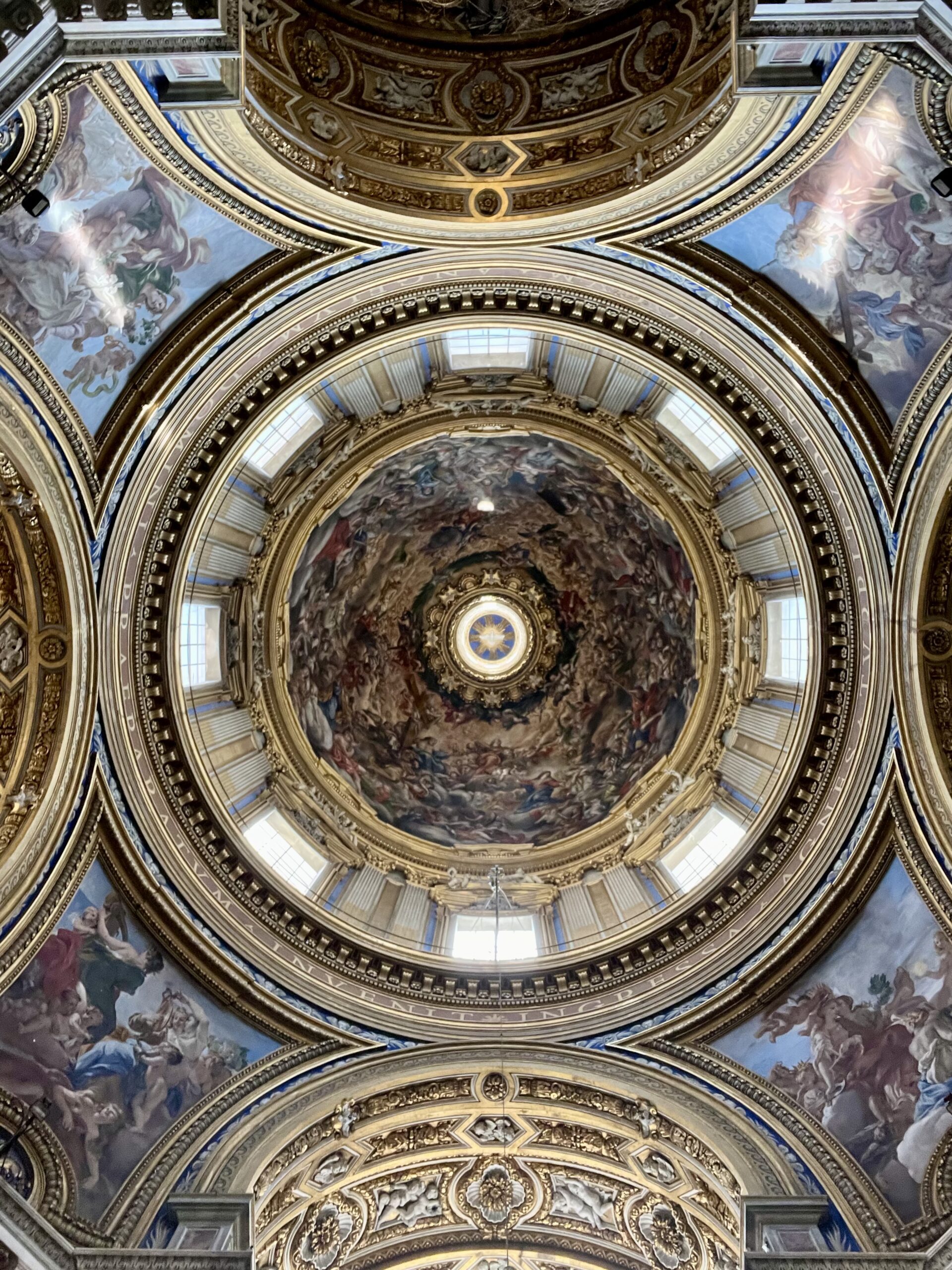
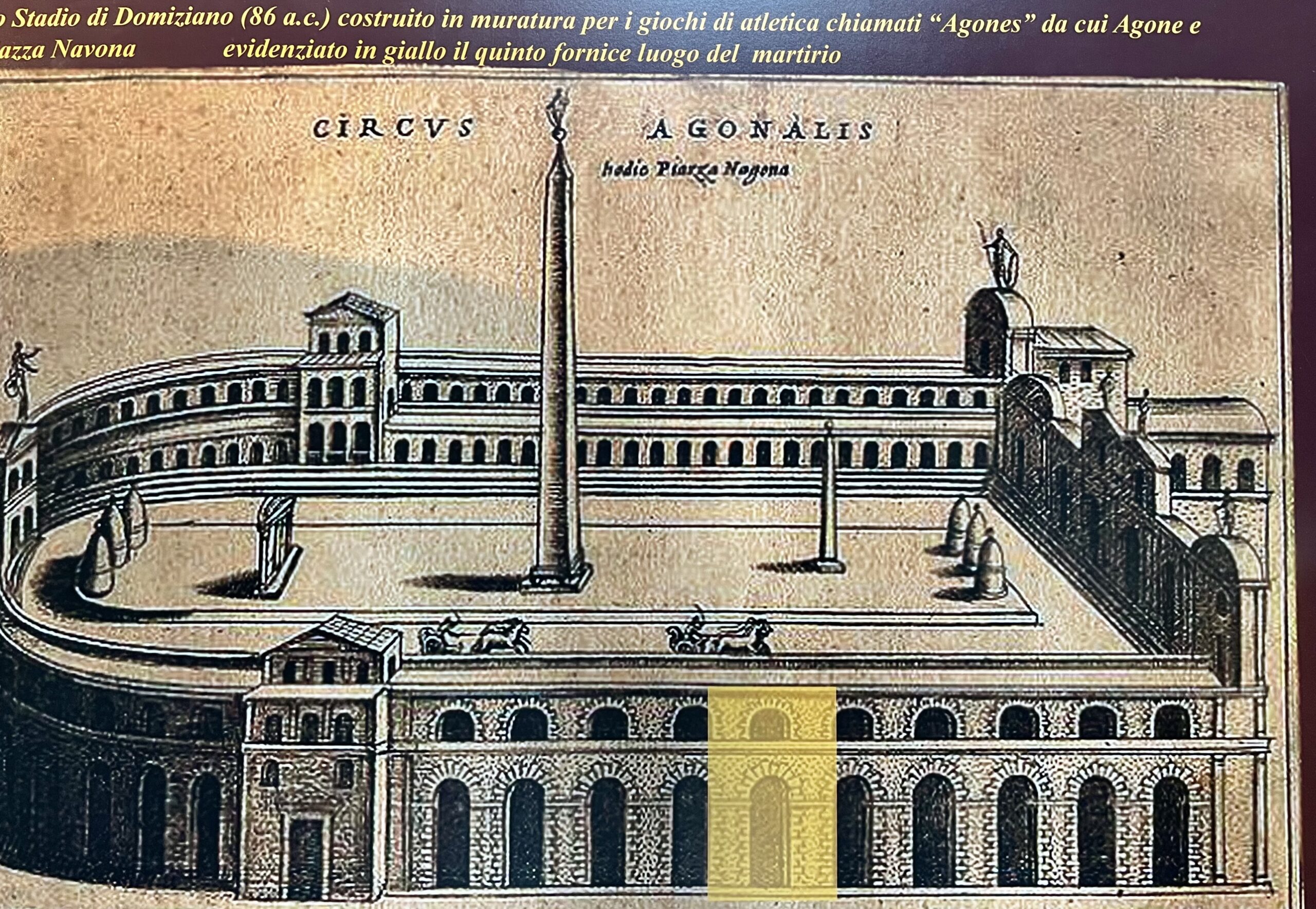
Alas, Our Last Dinner with the Cousins . . . This Time
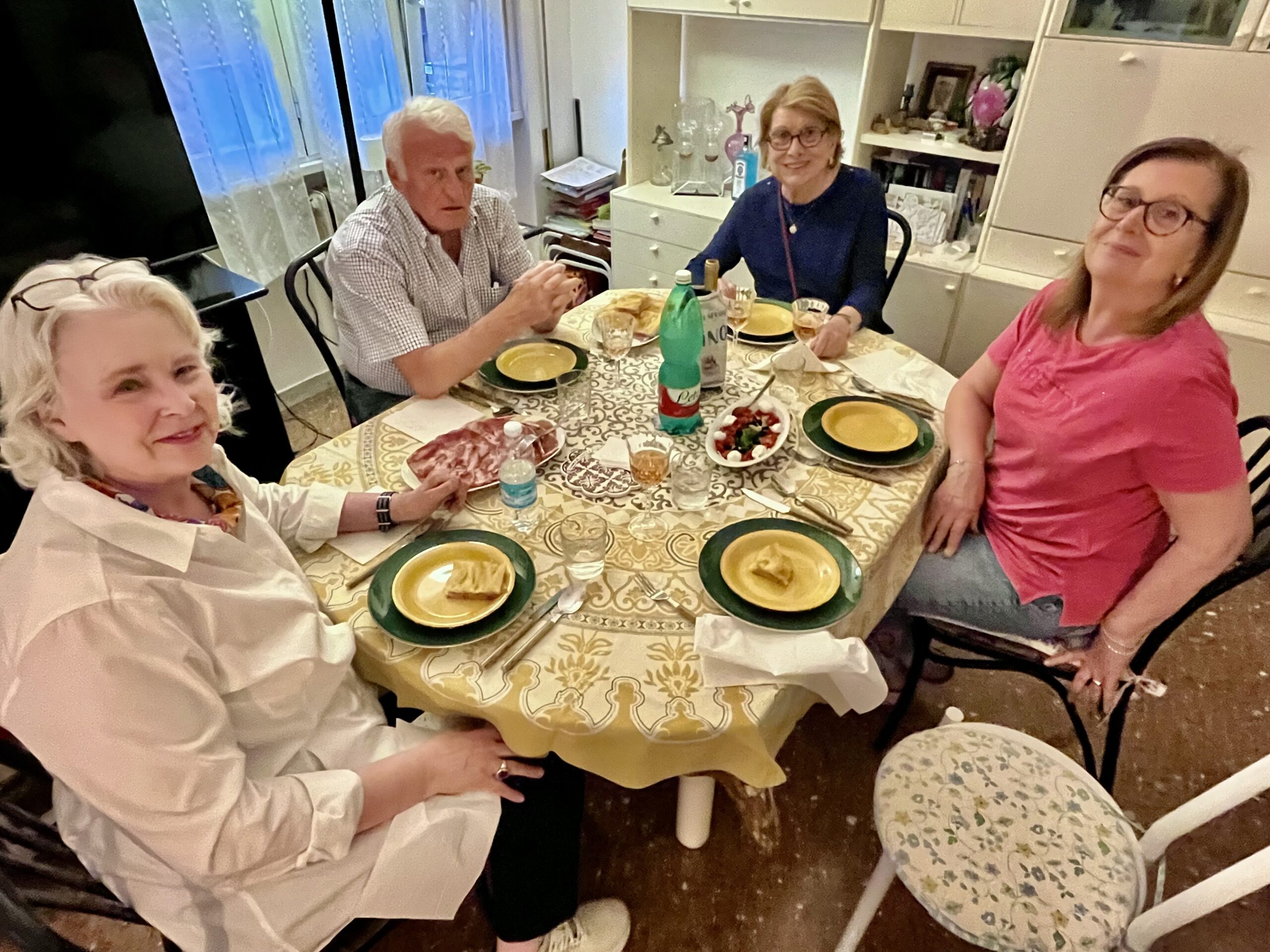
Next Post – Roma 1962–Come Era Una Volta
